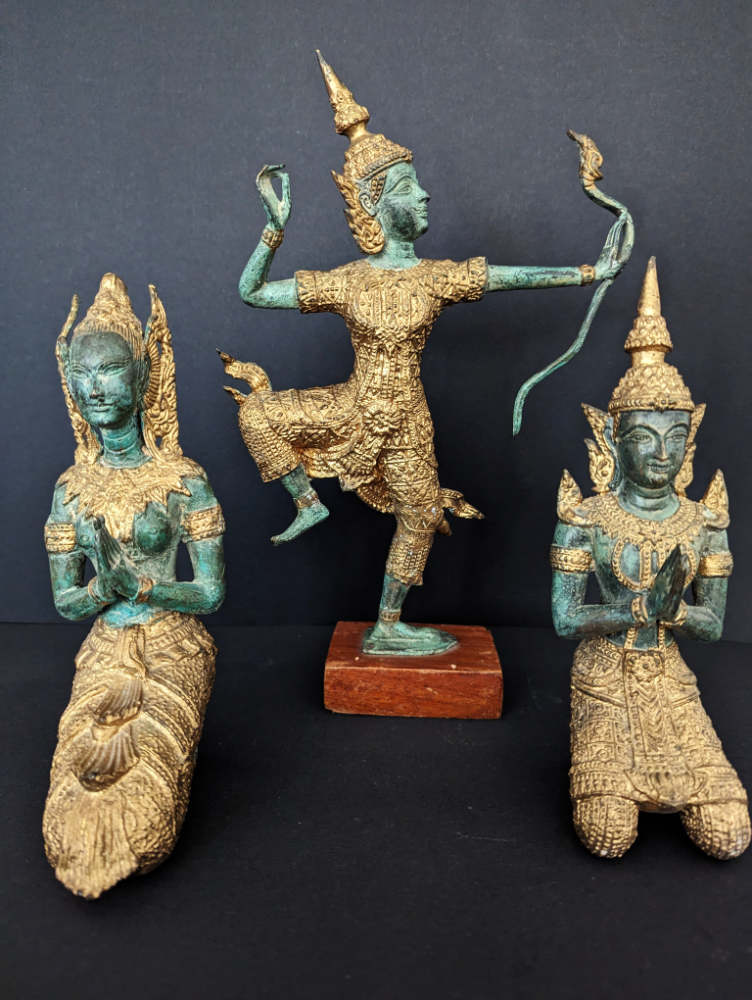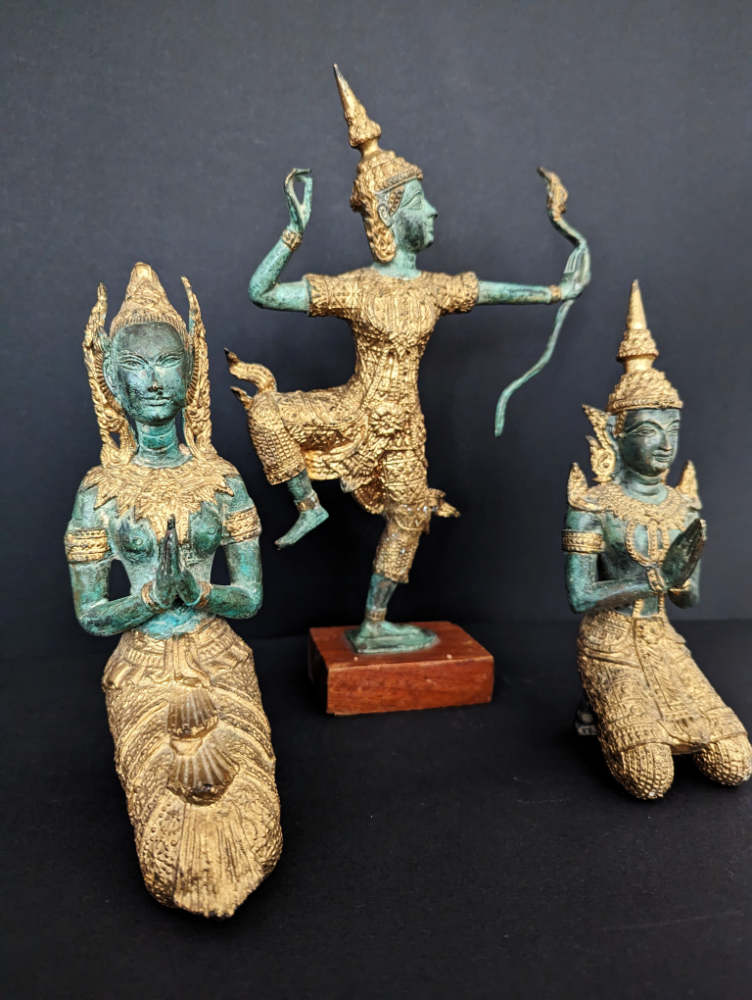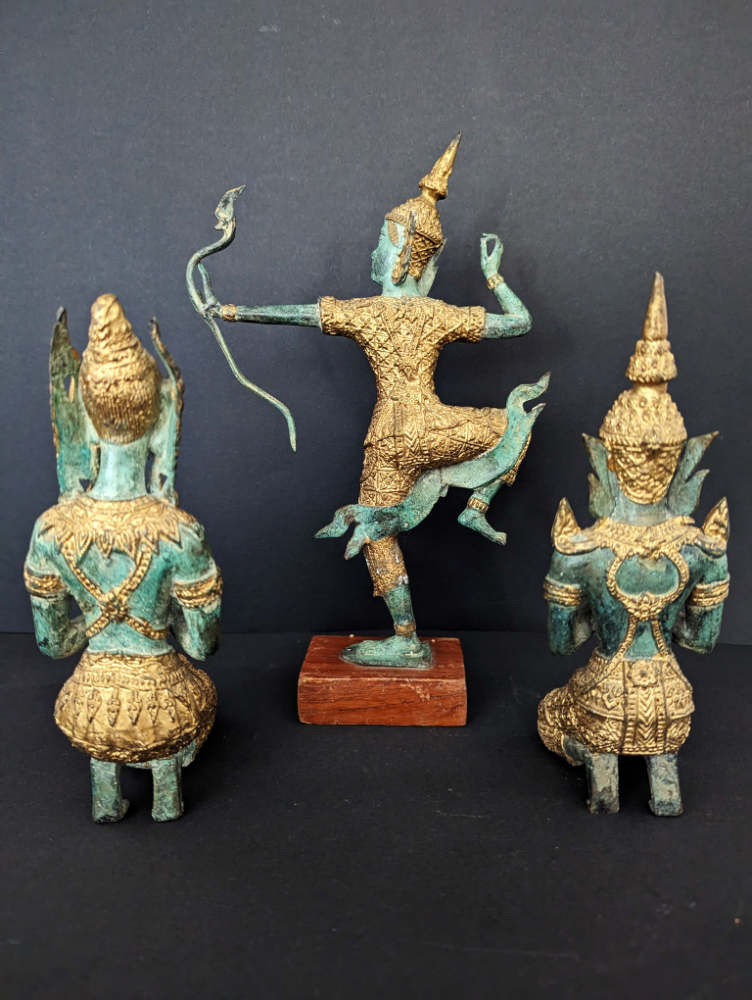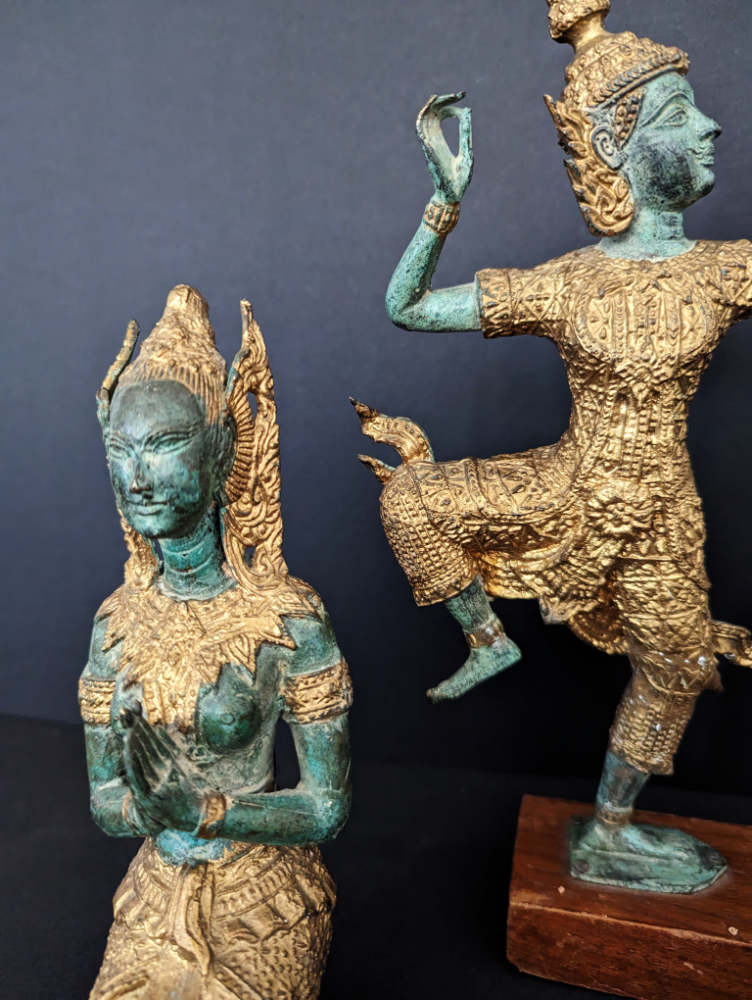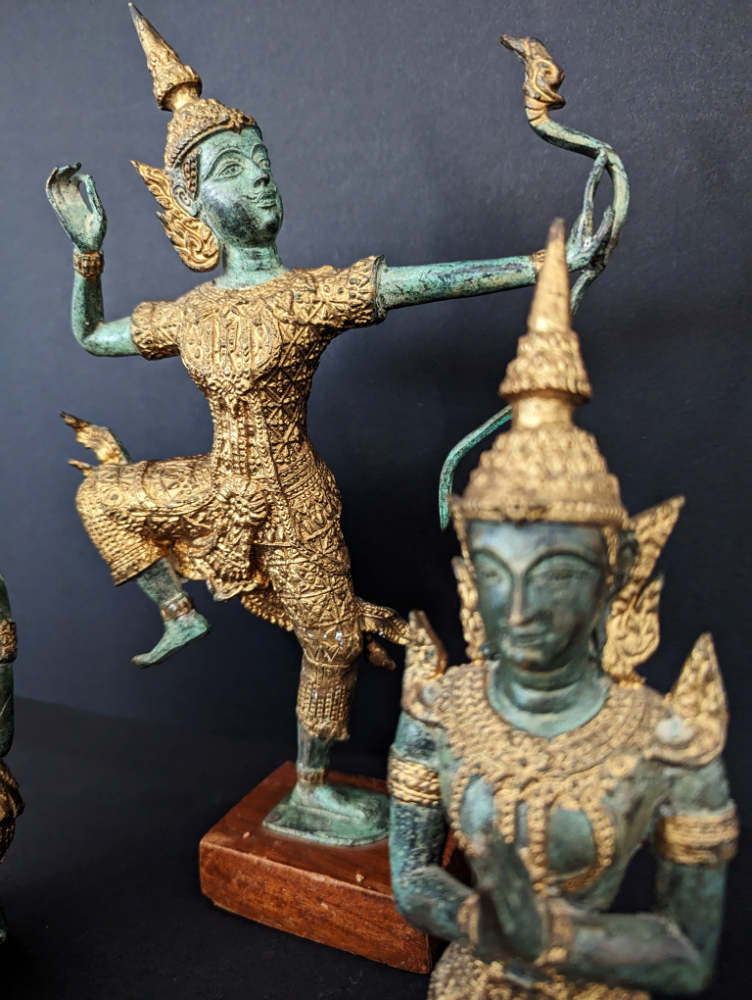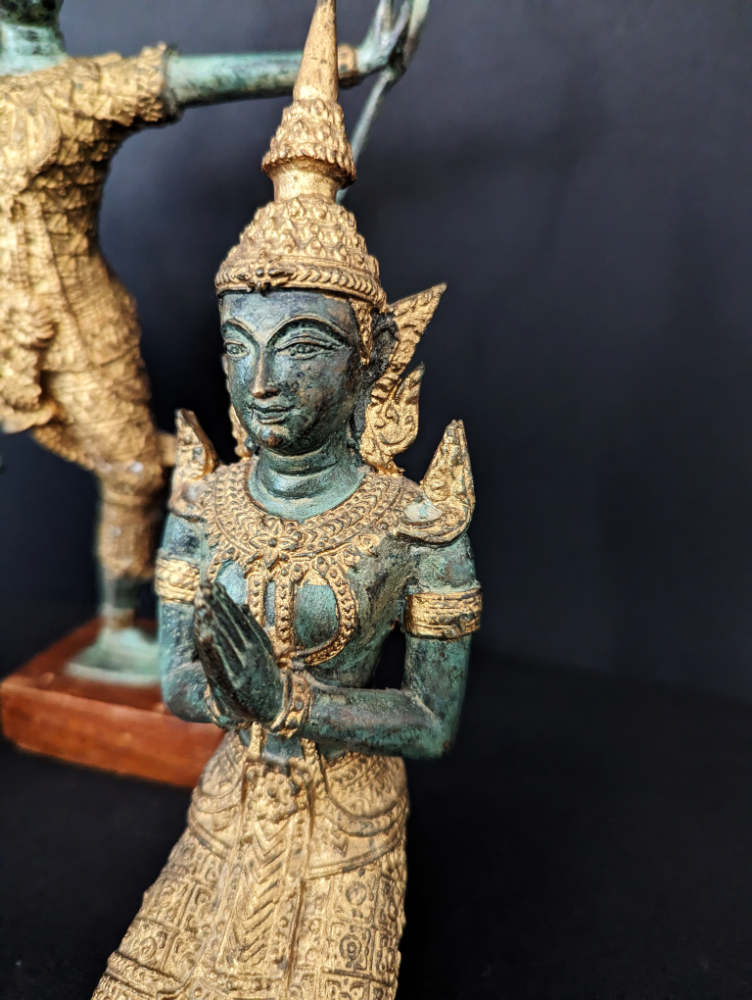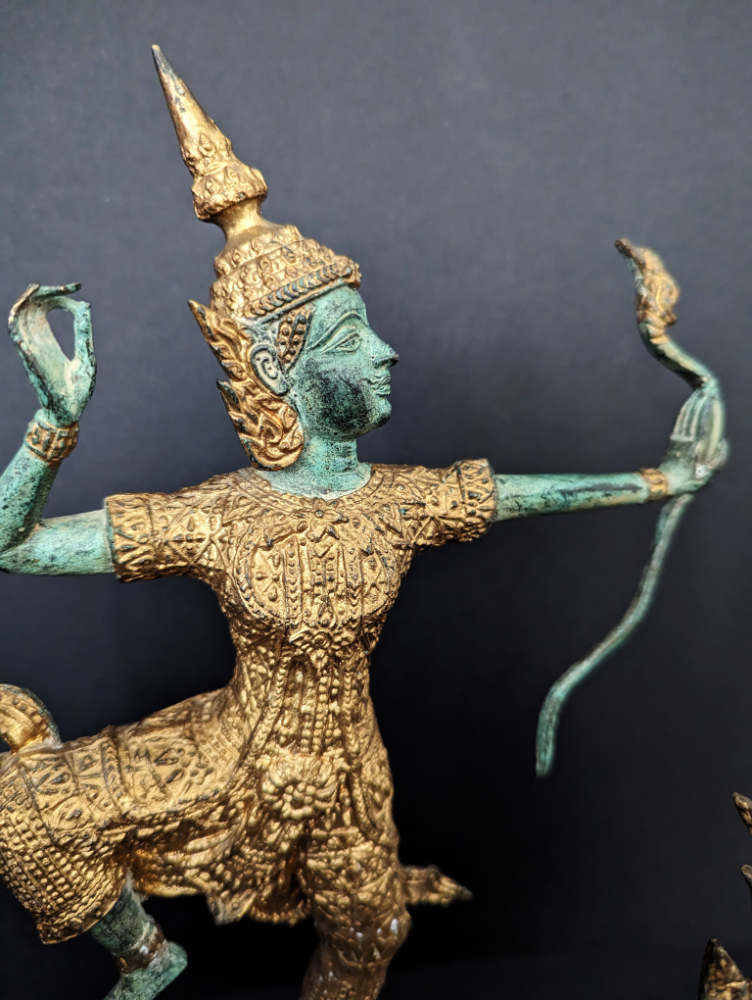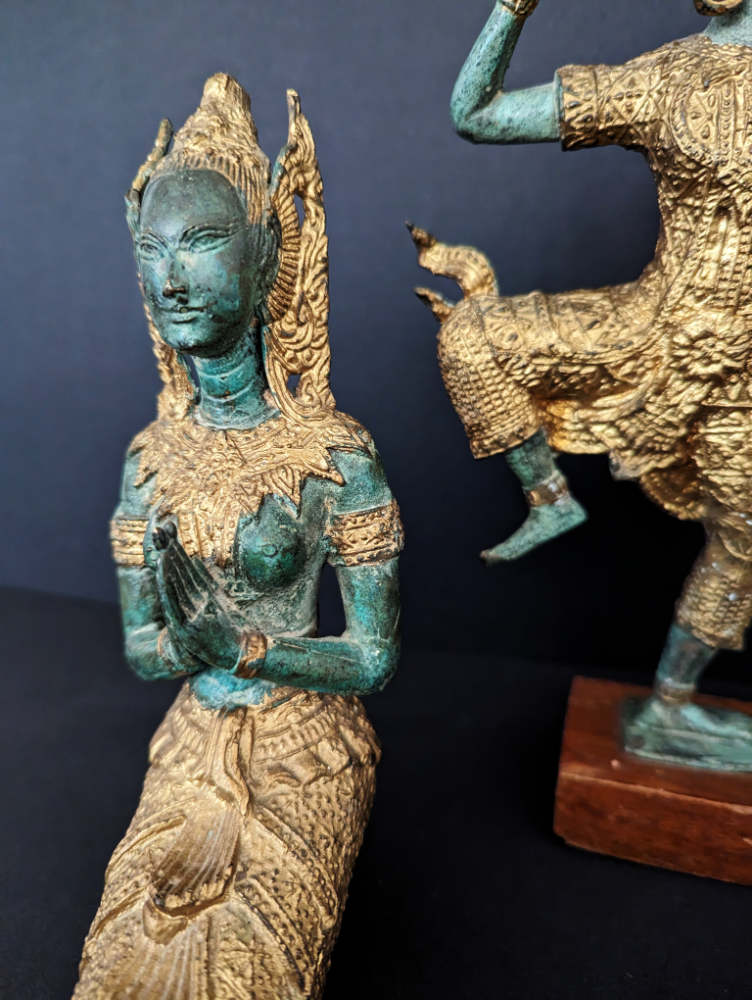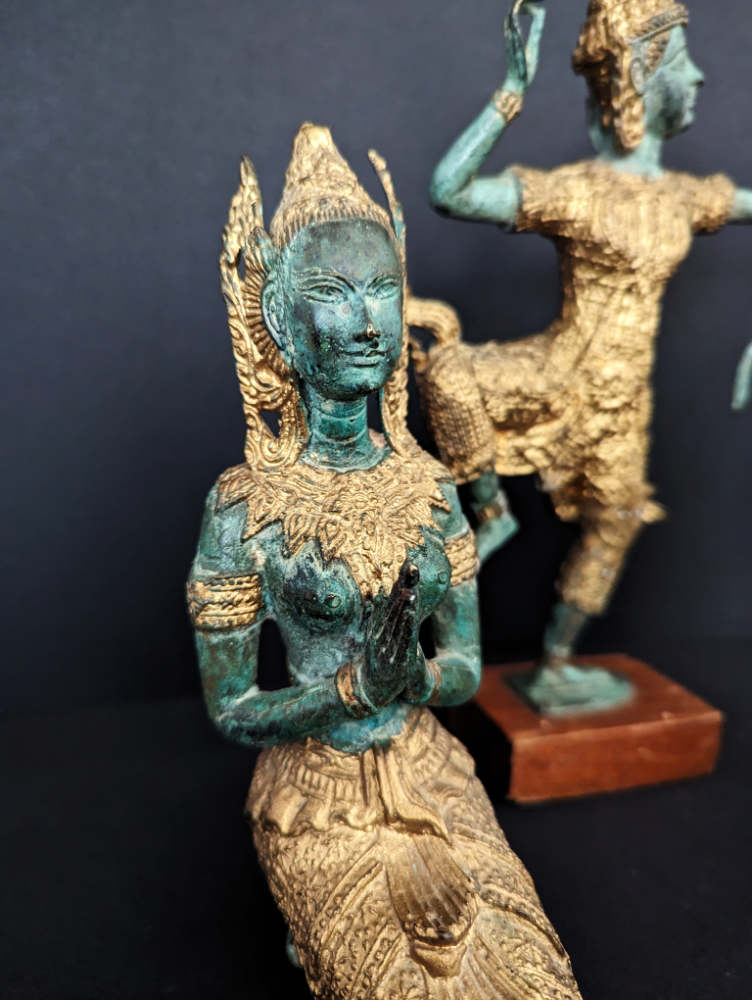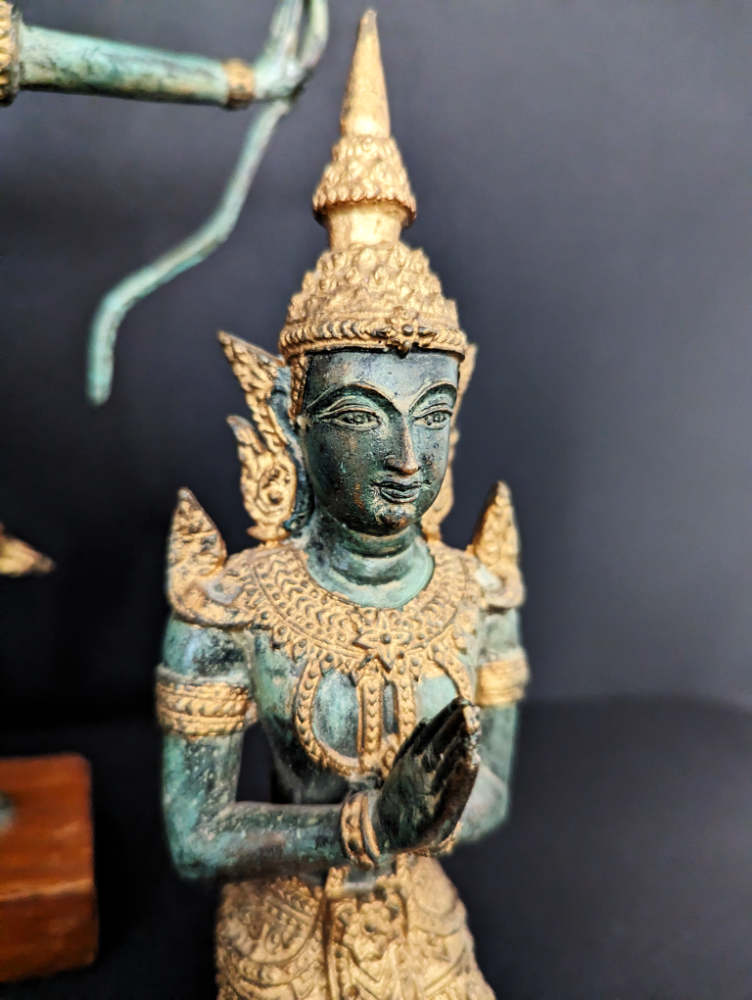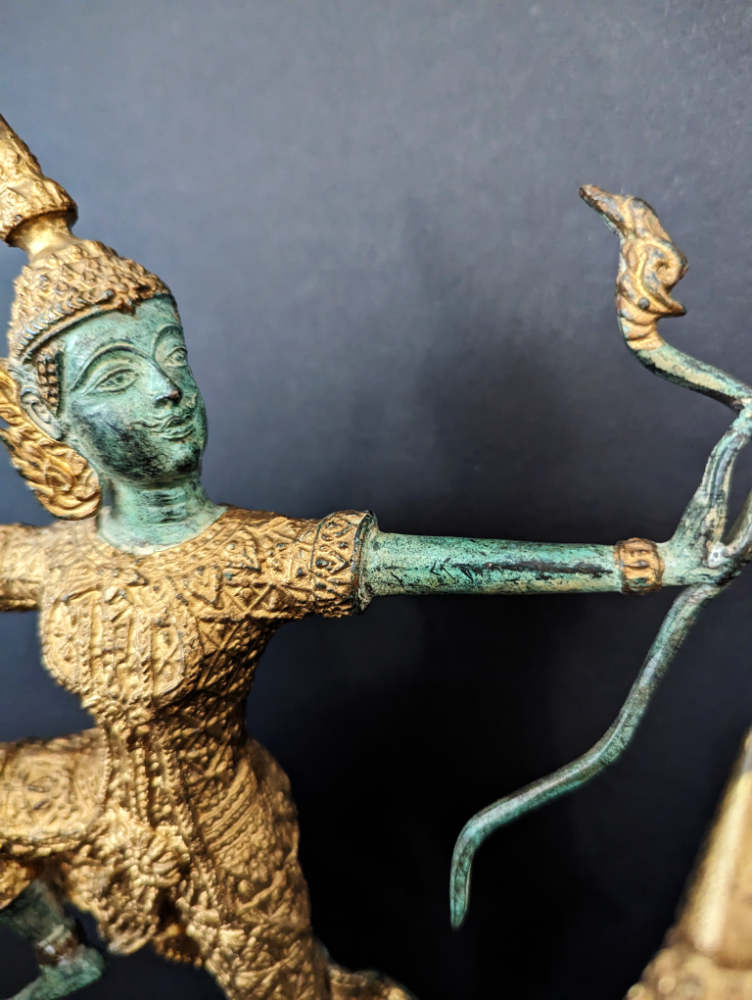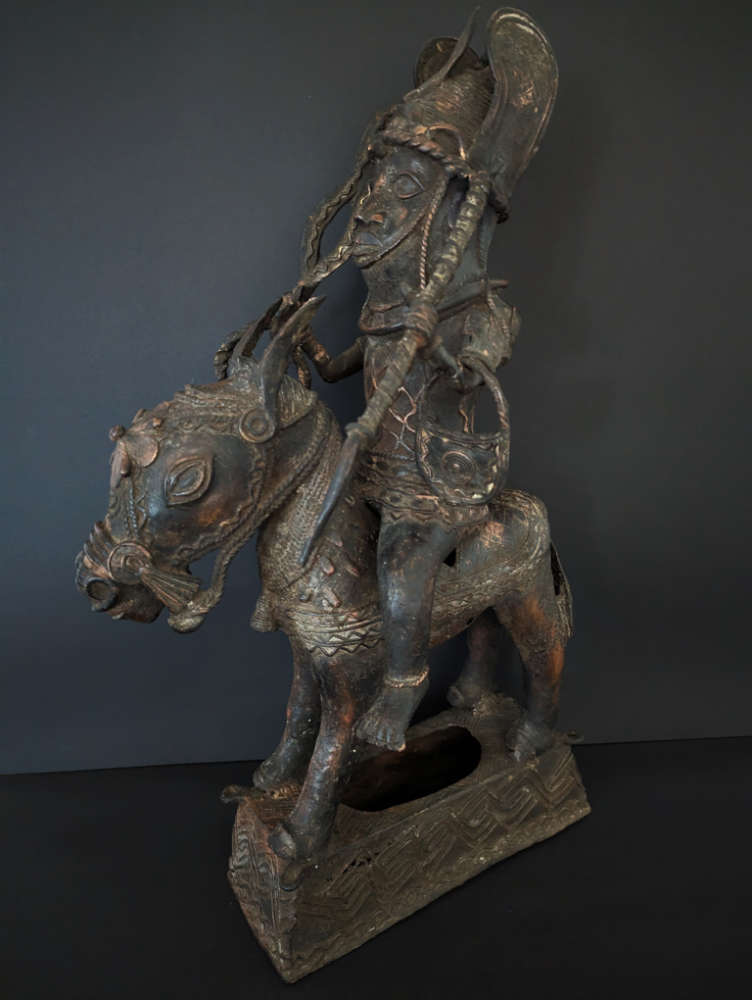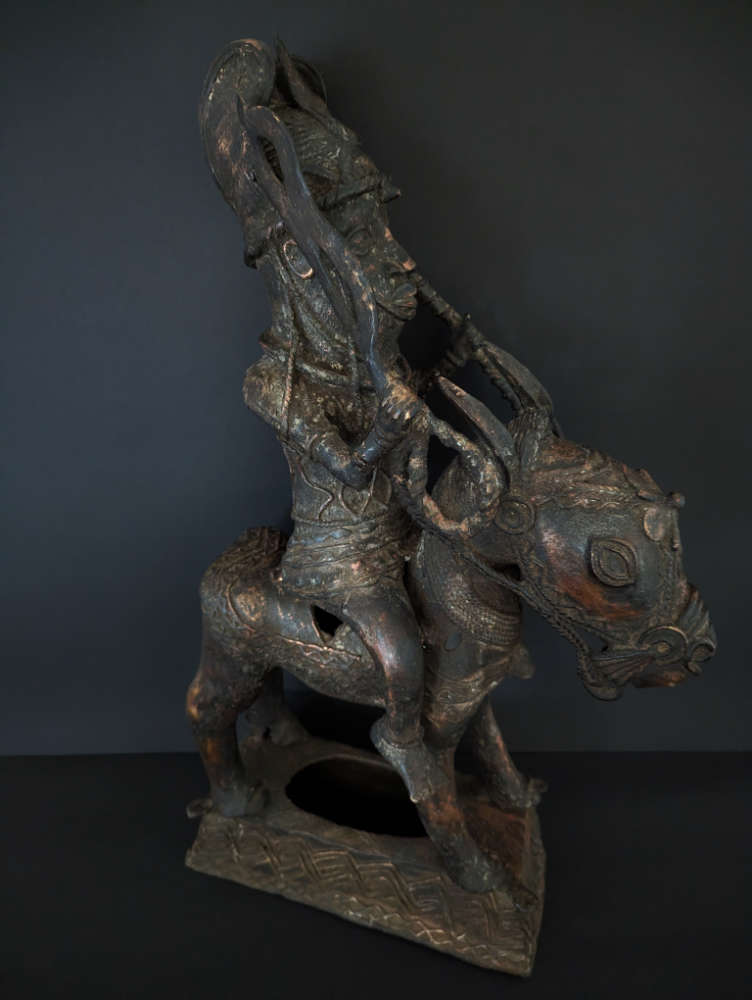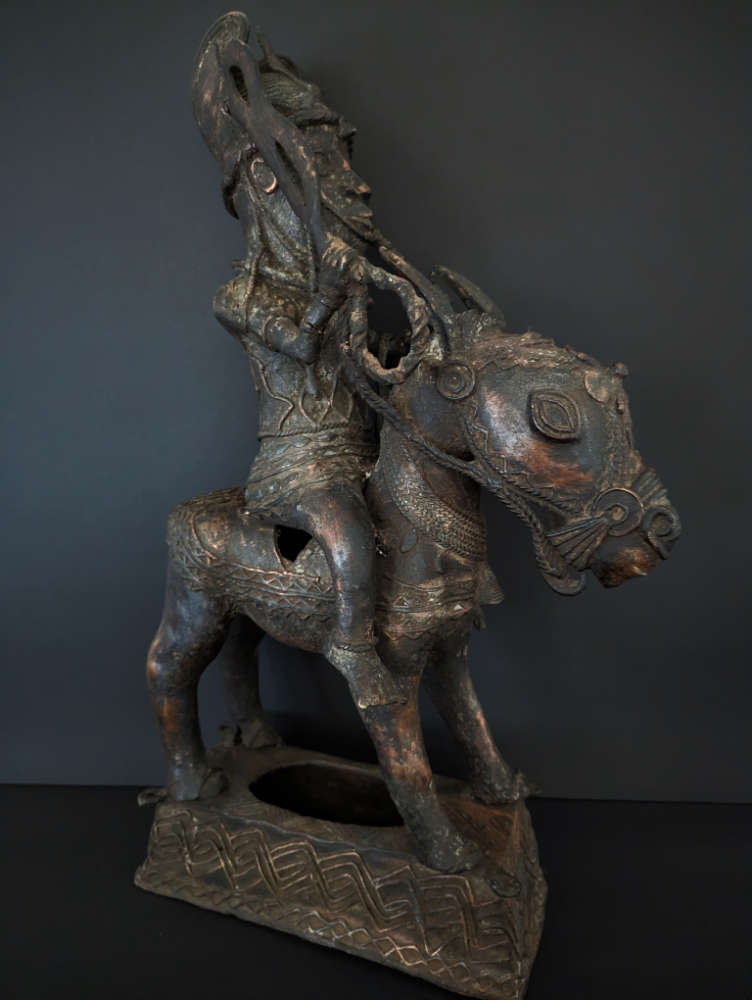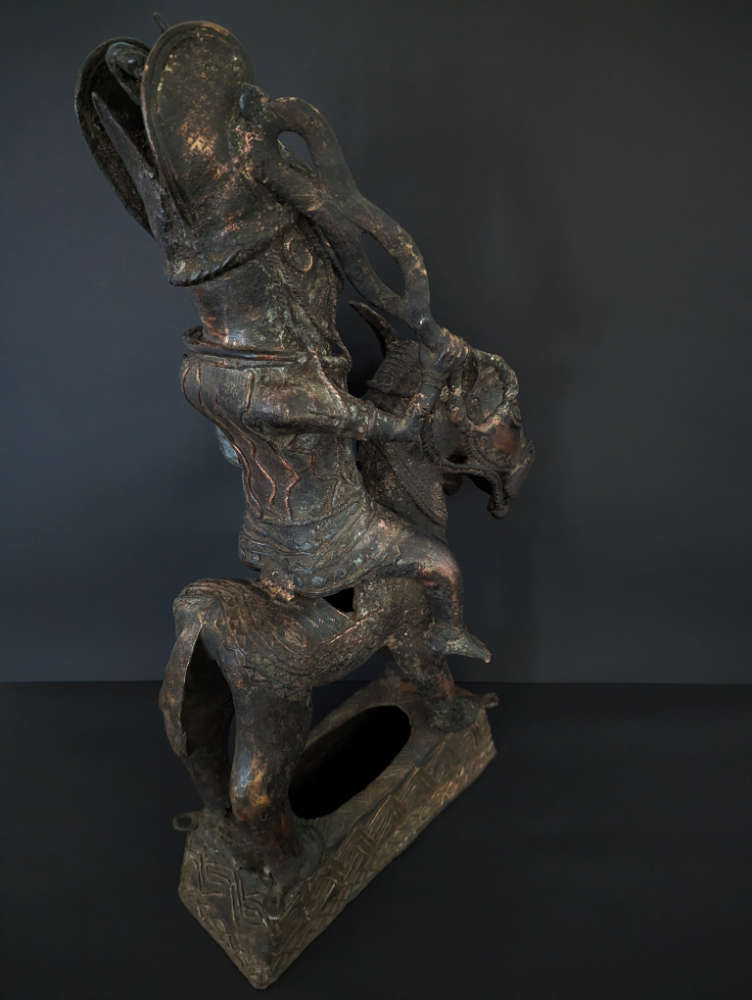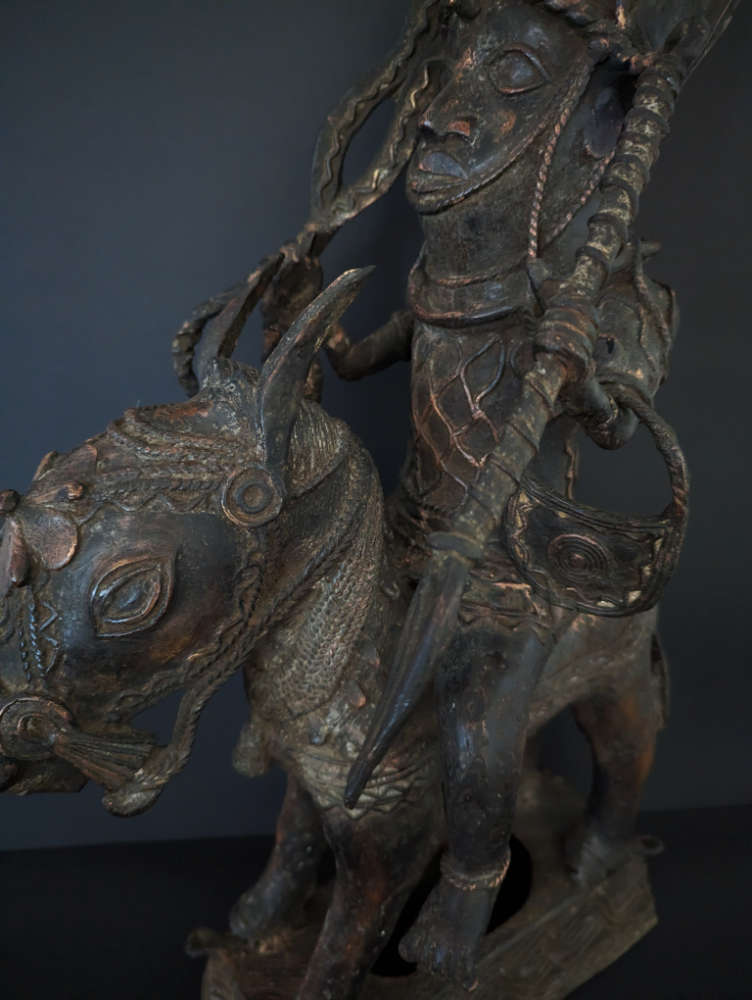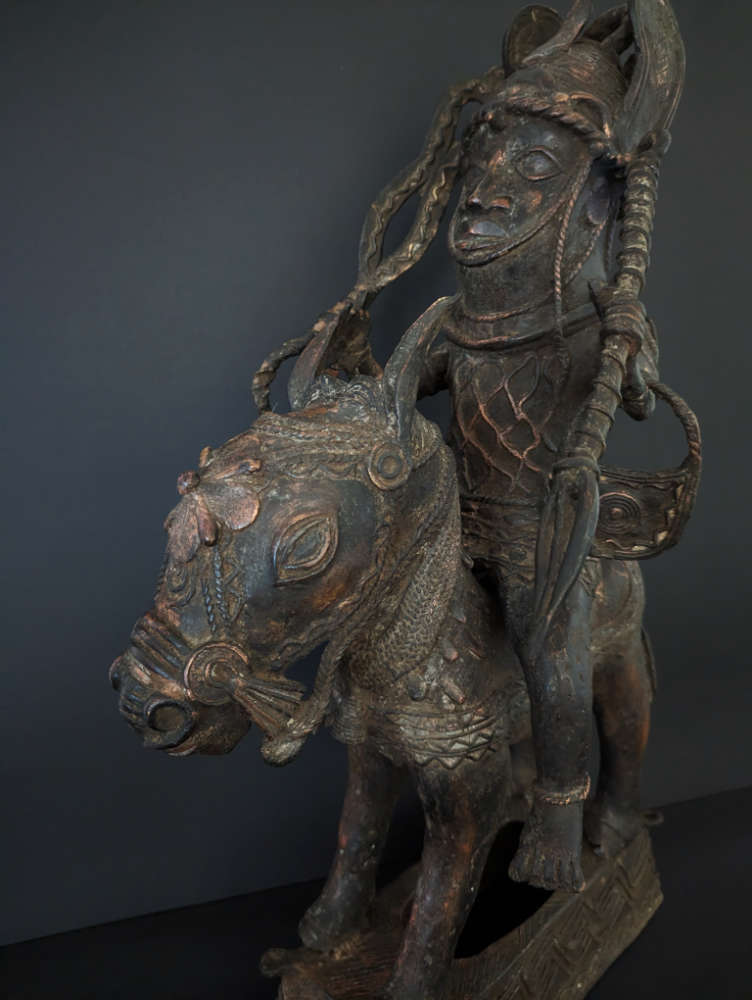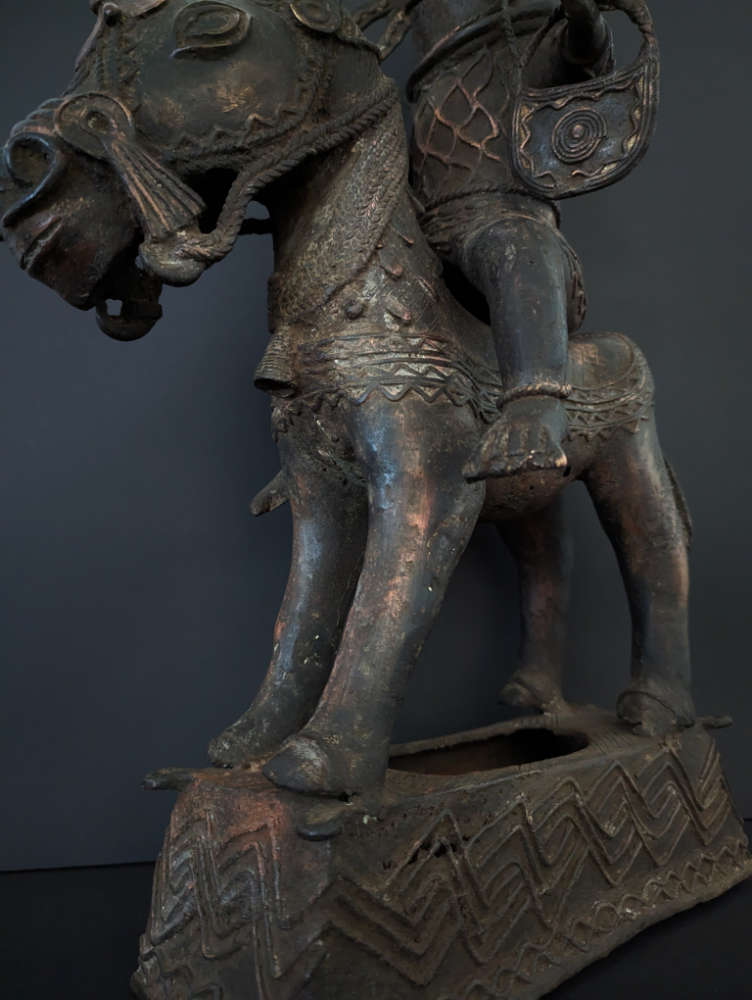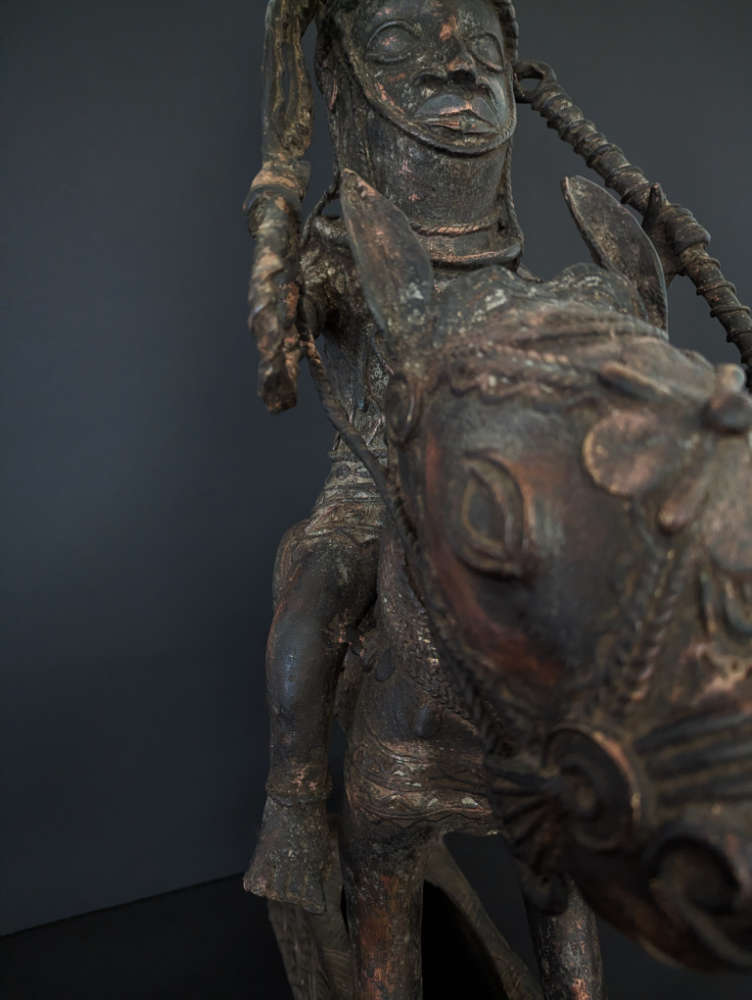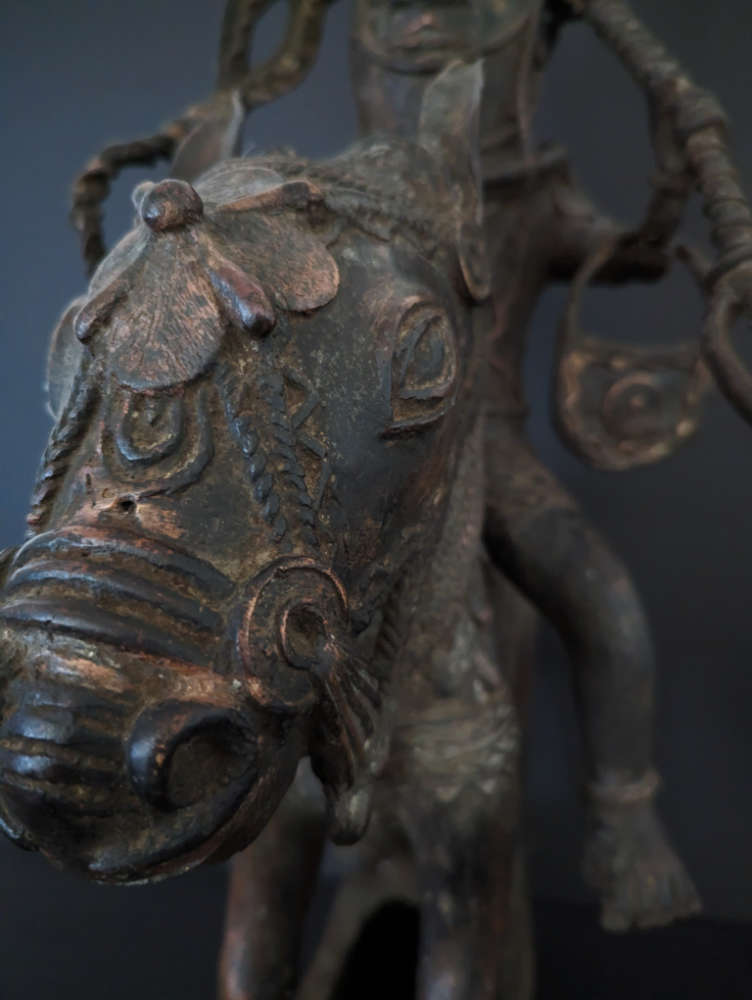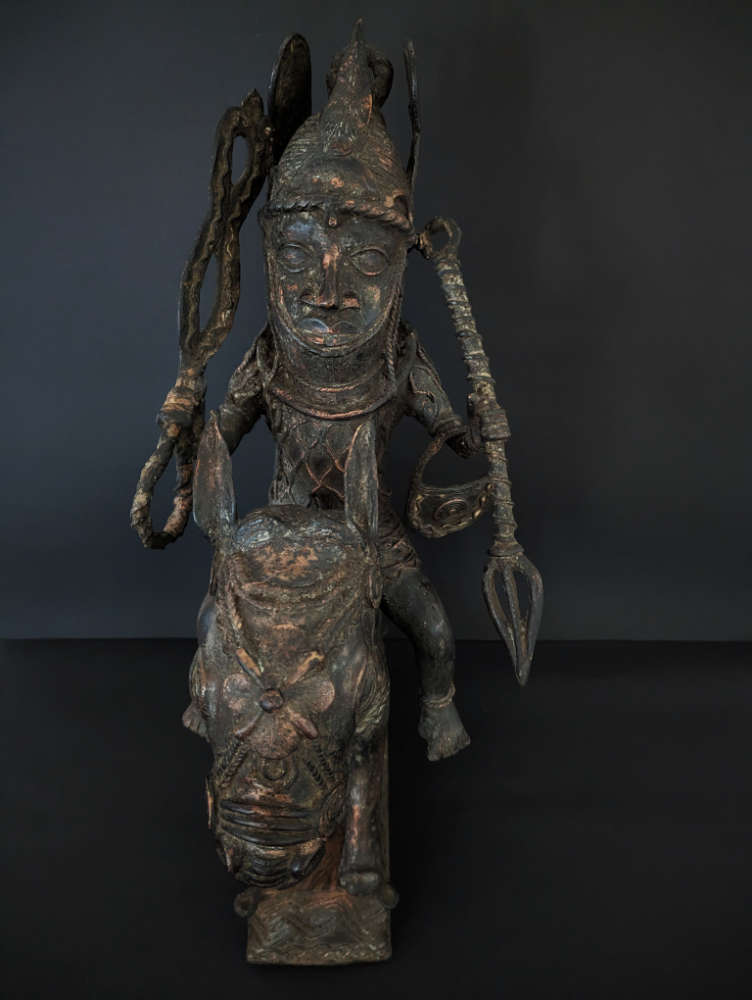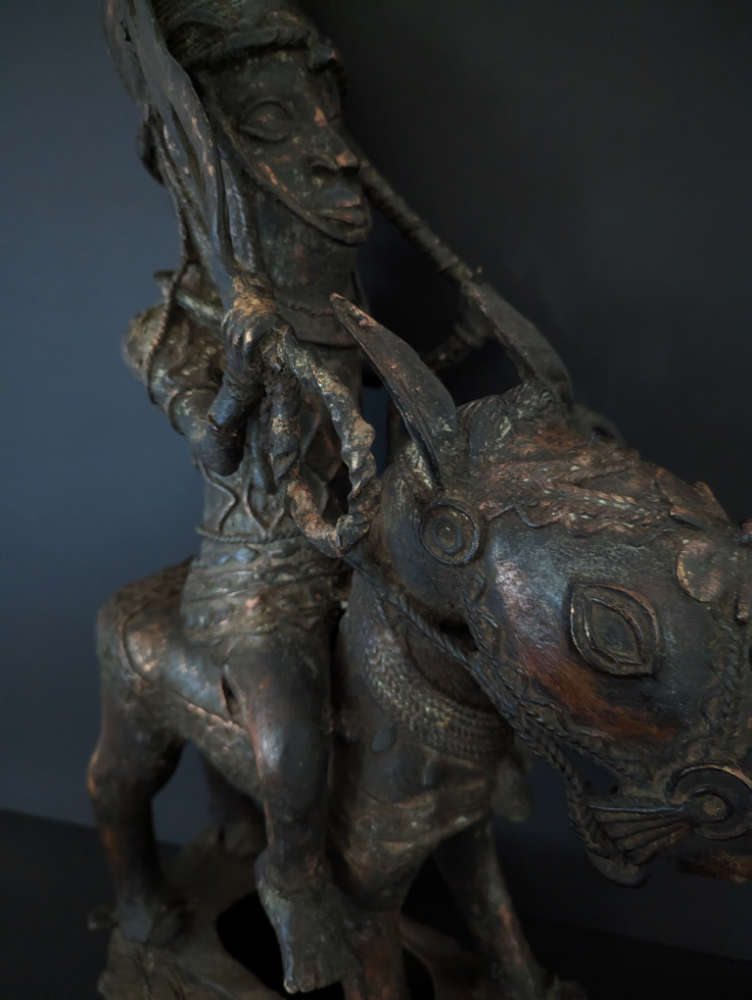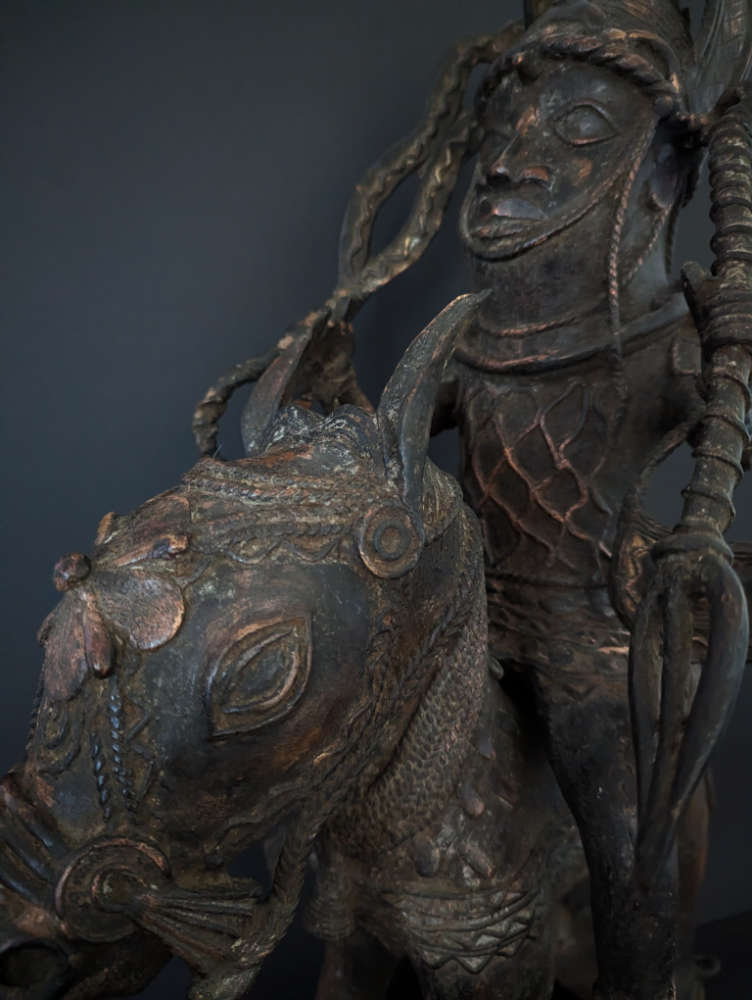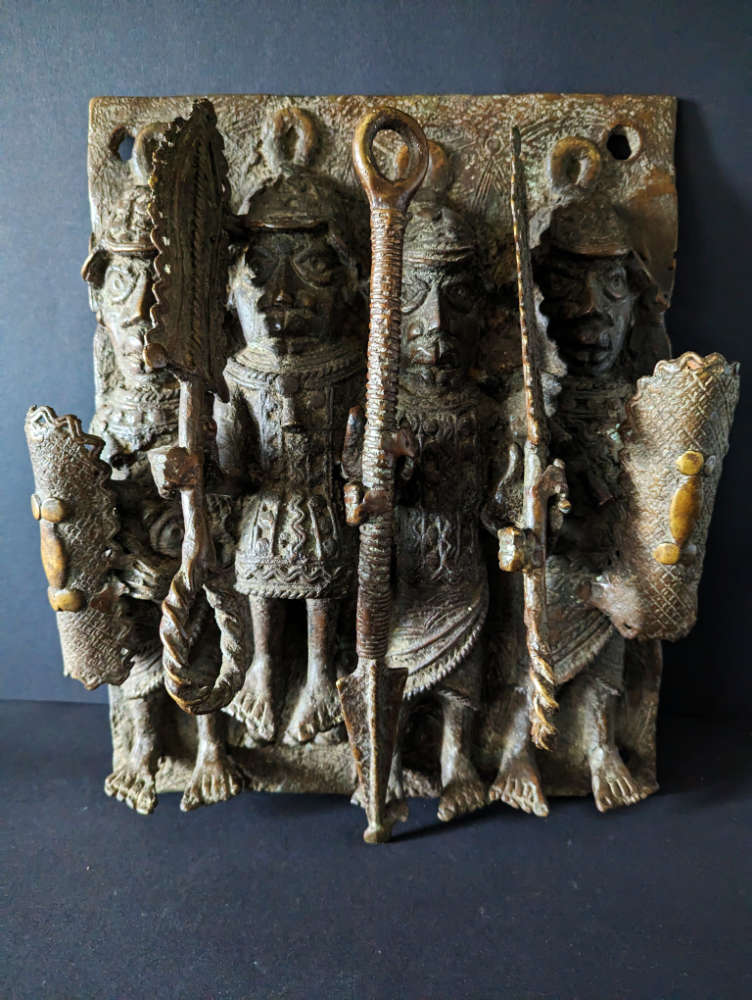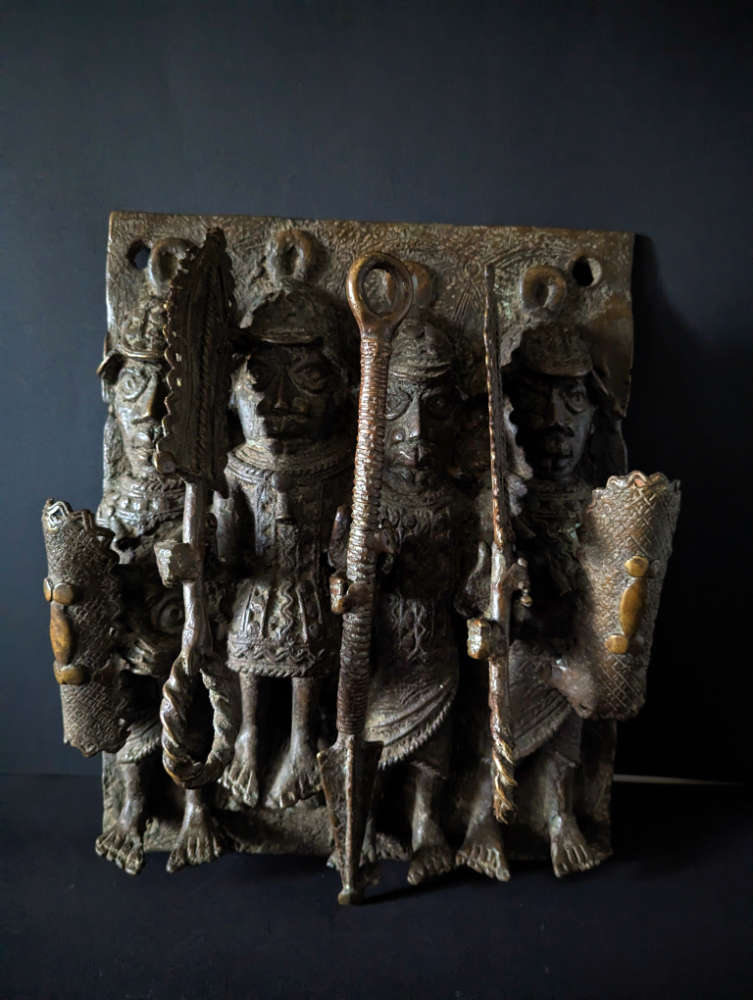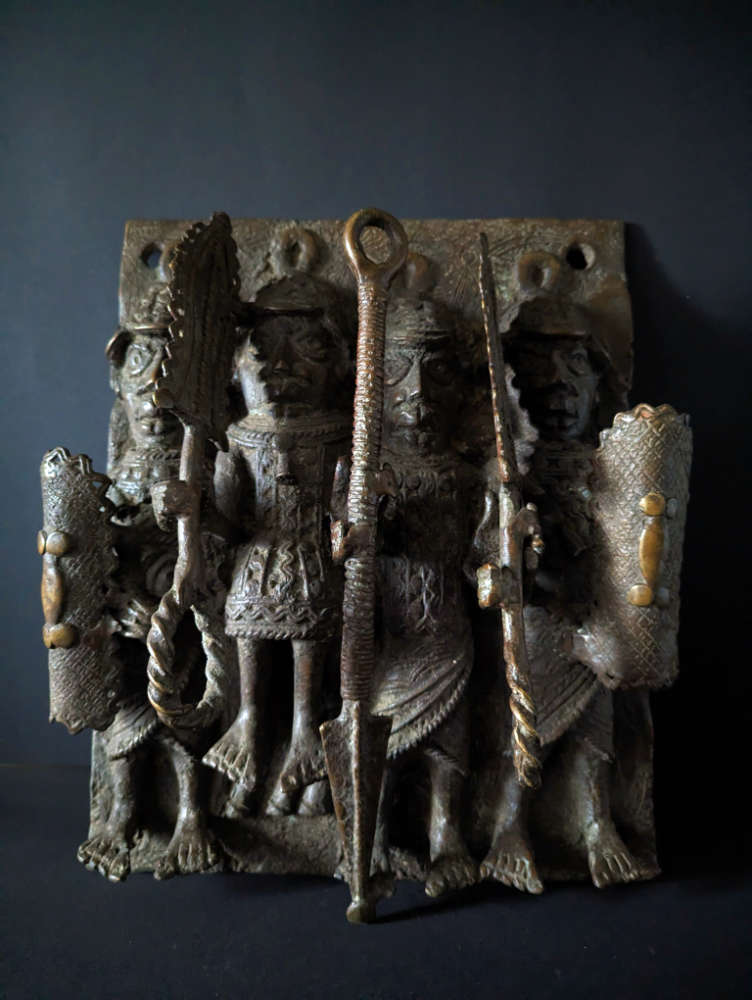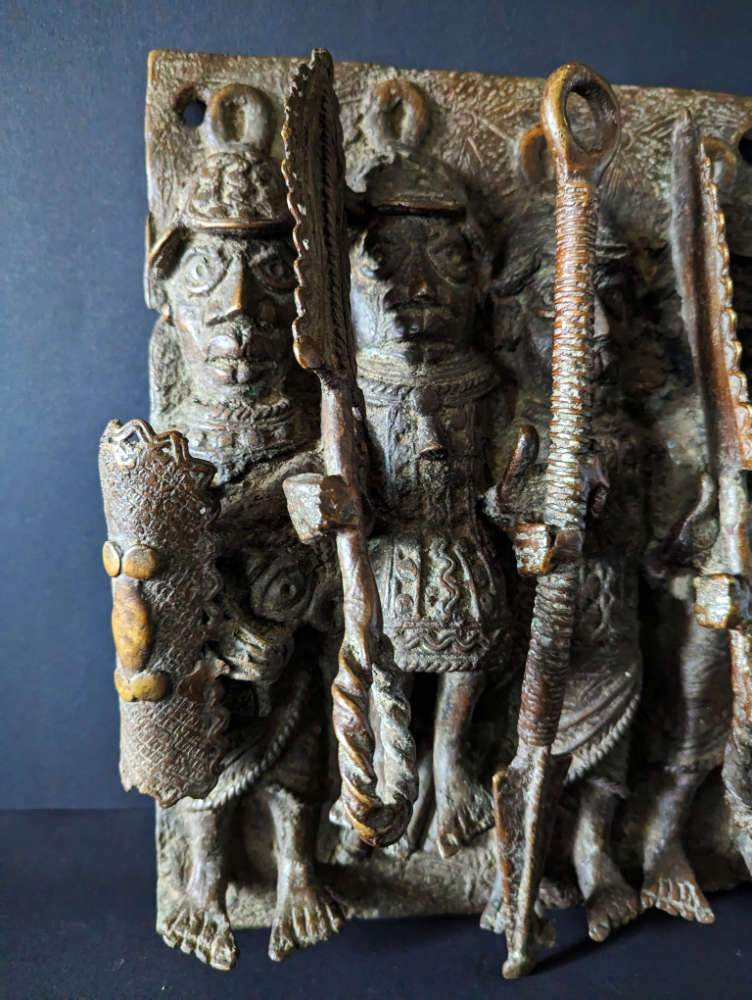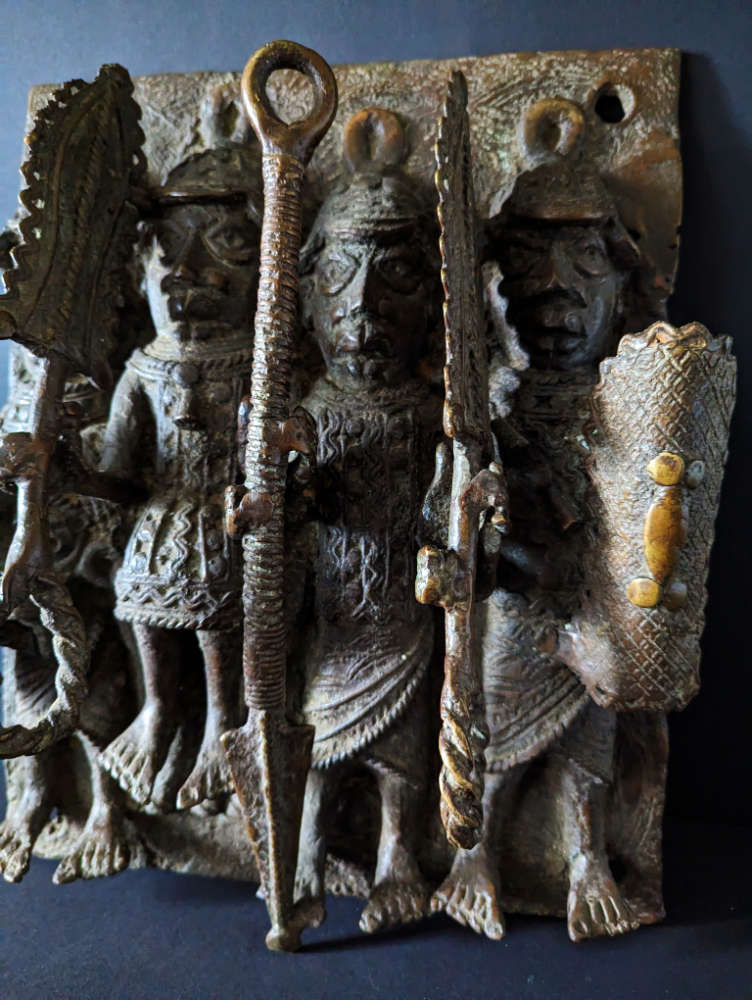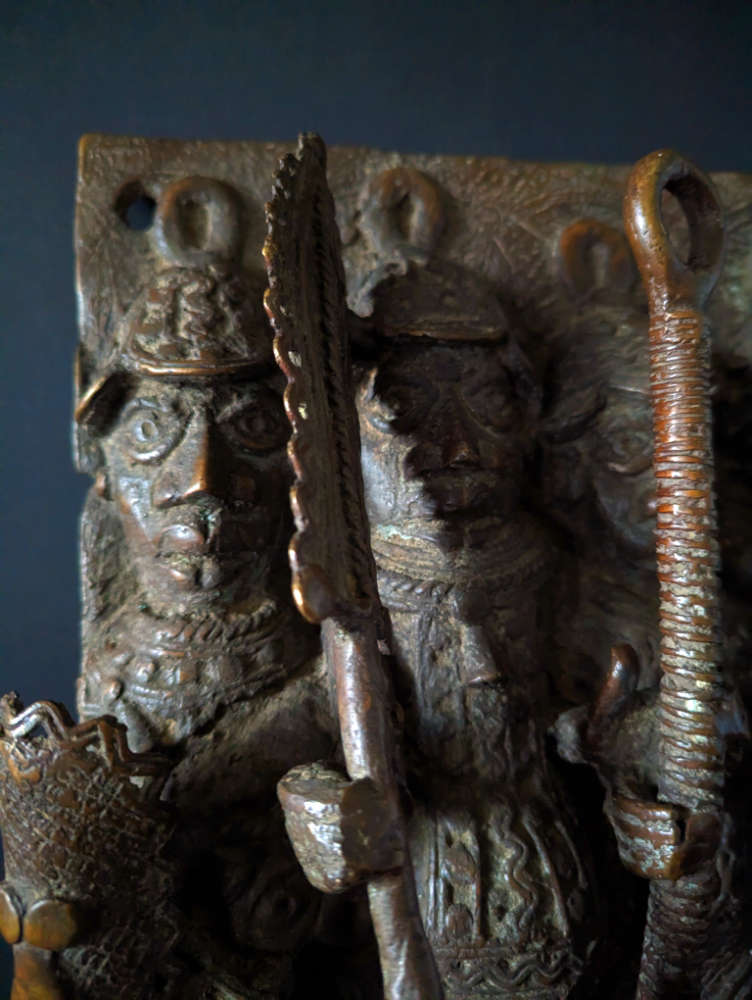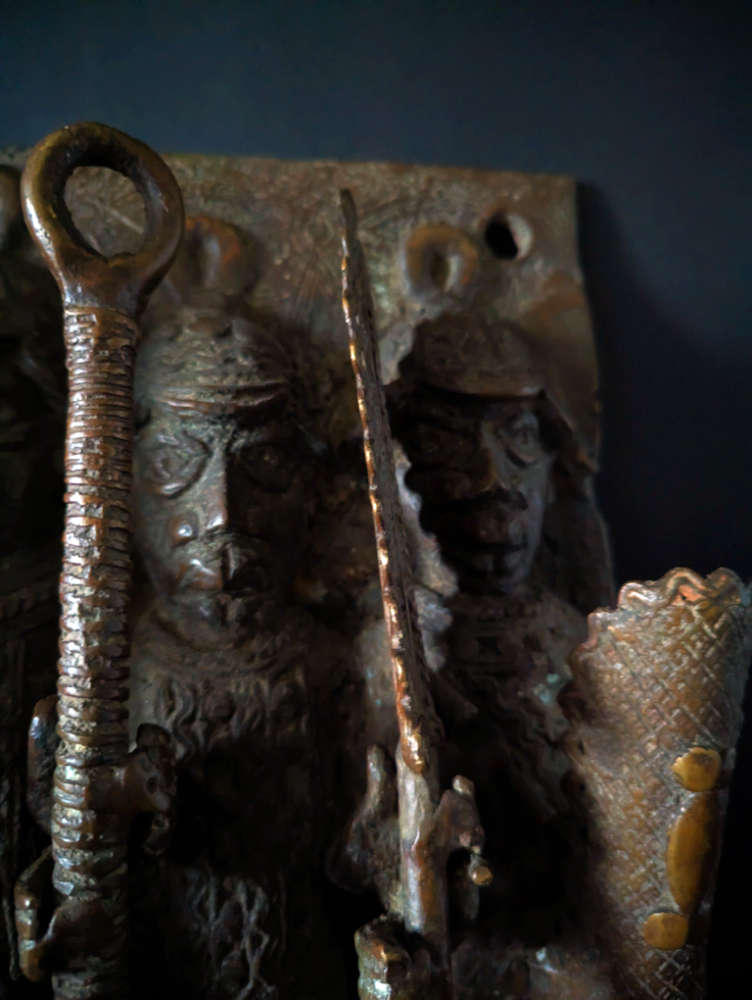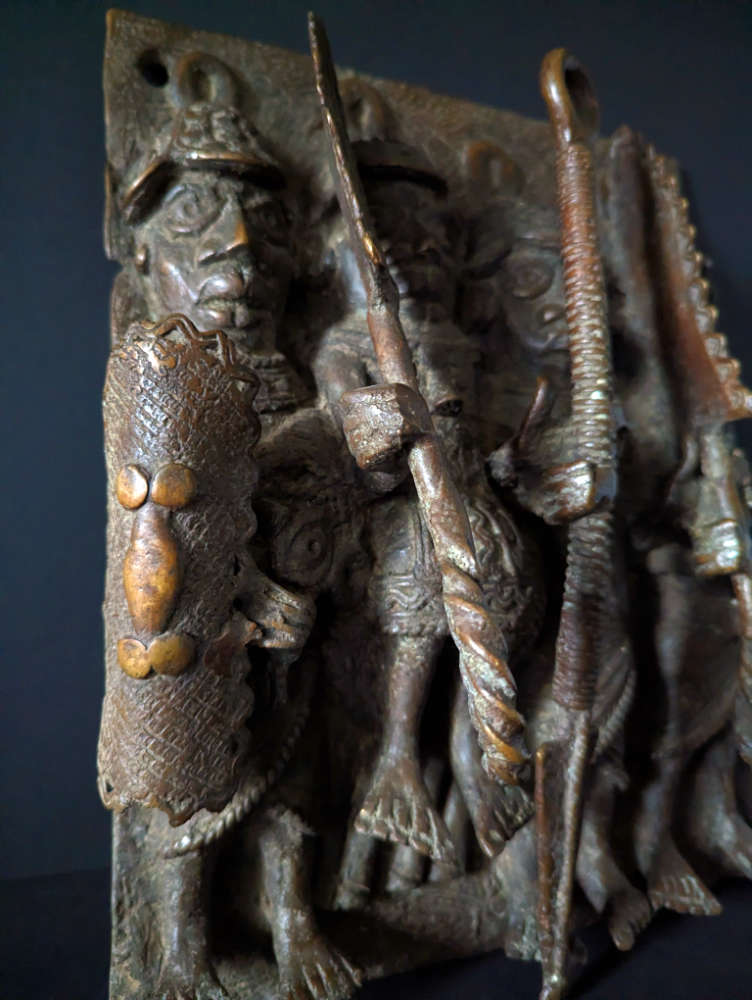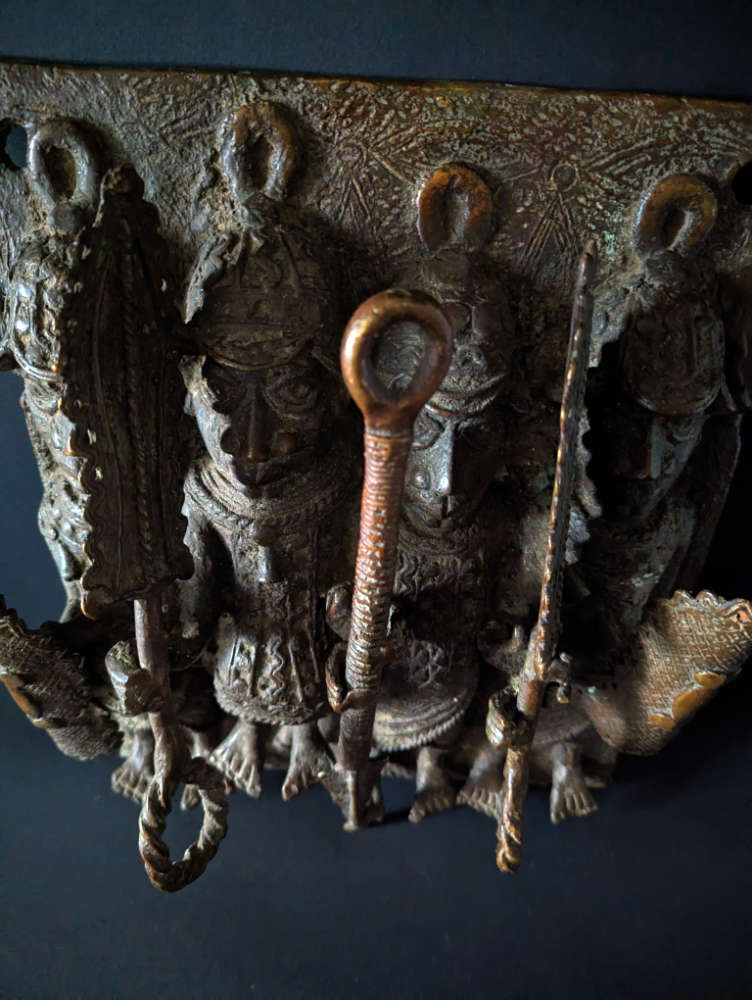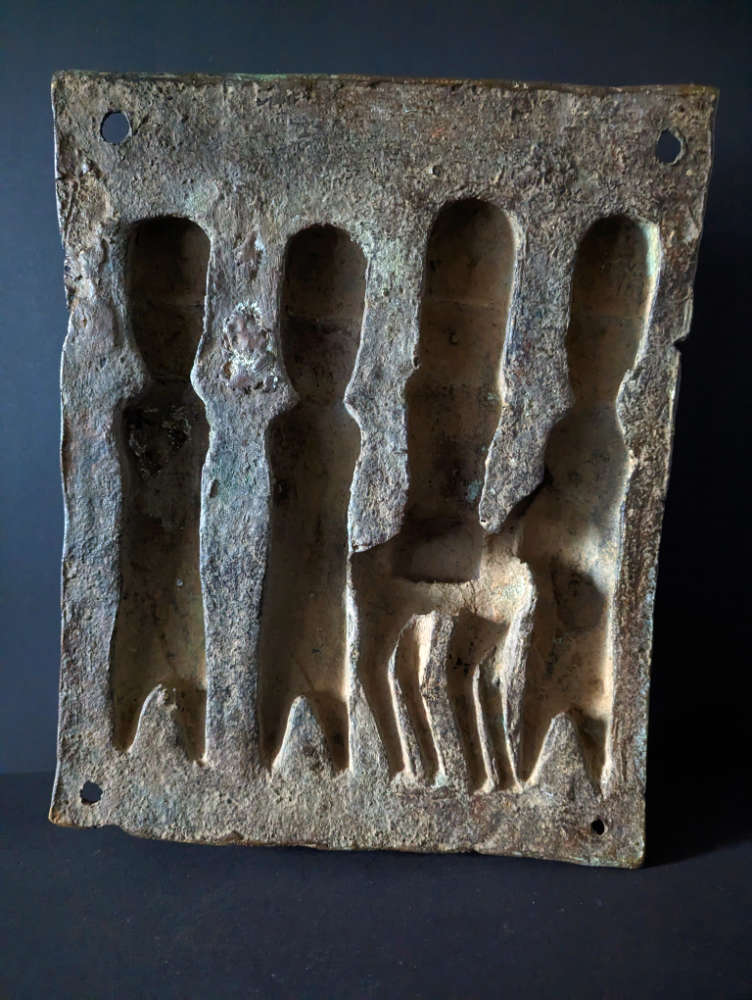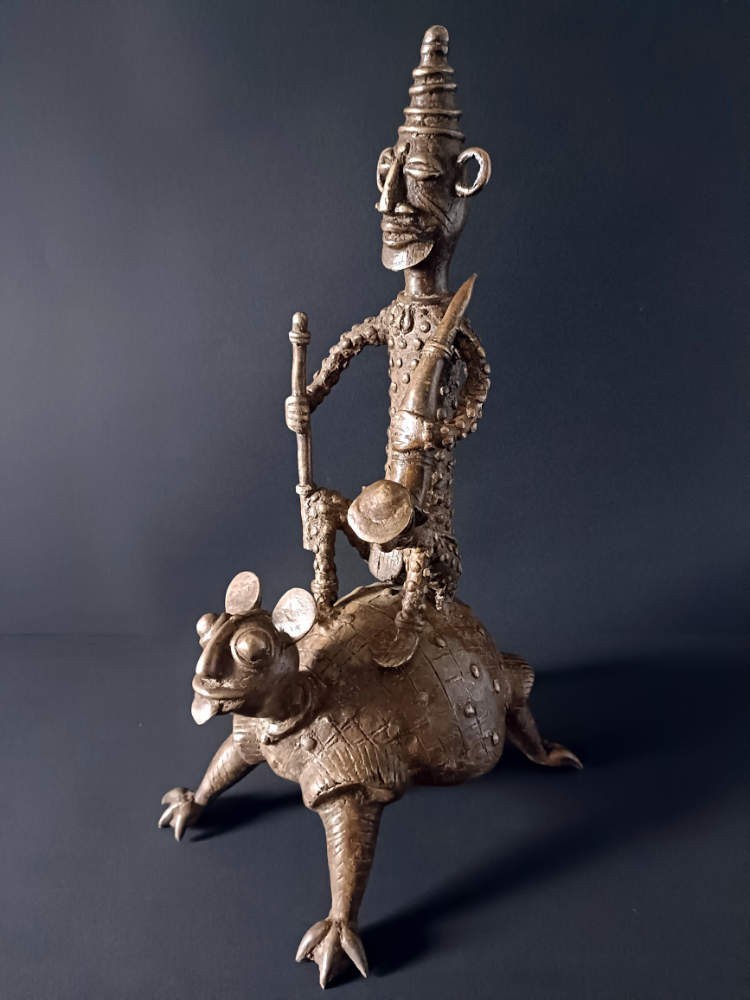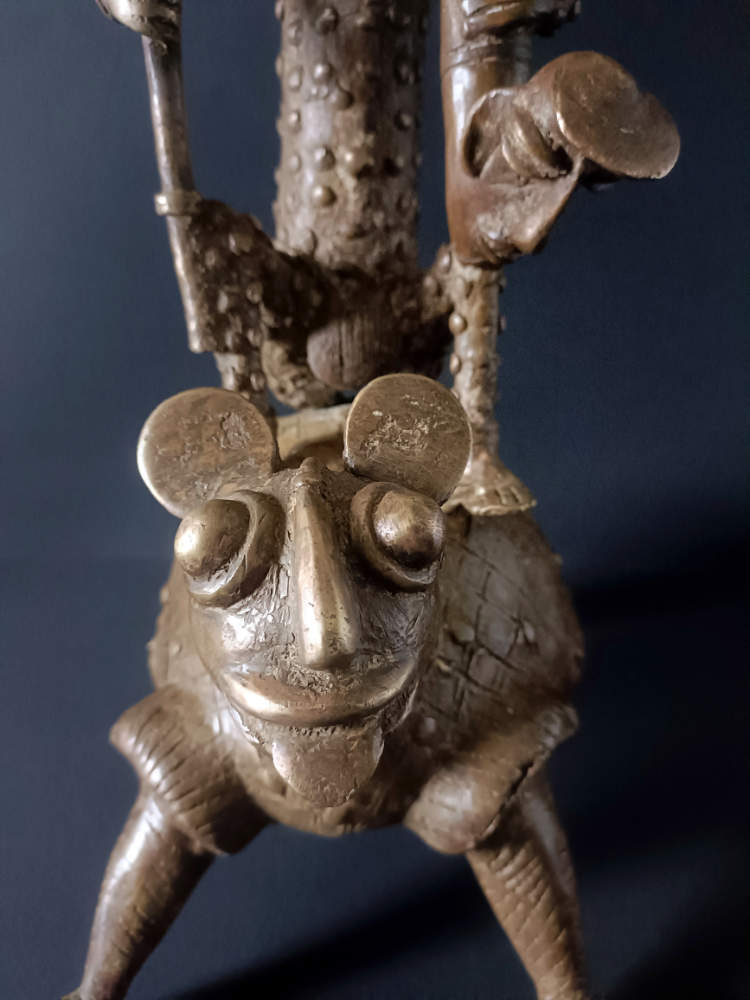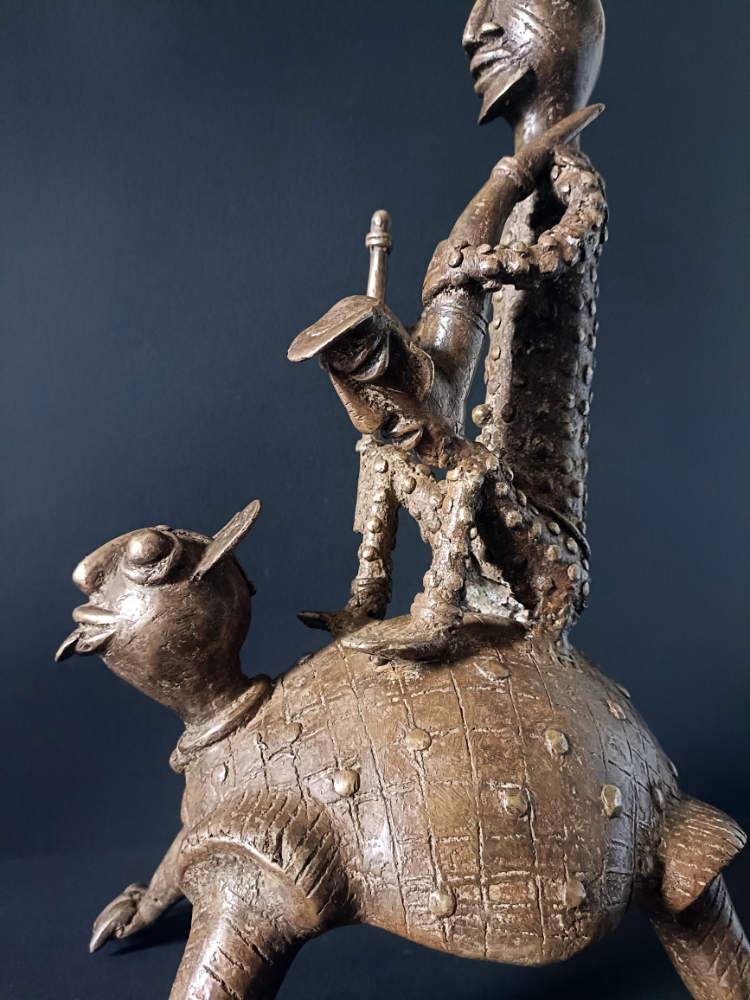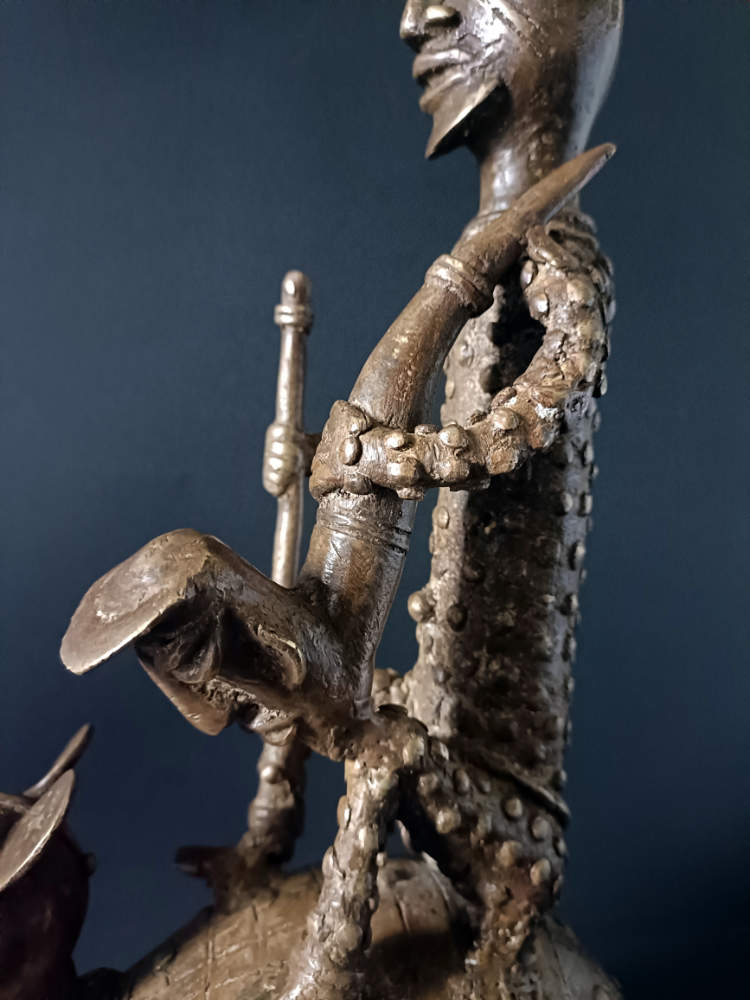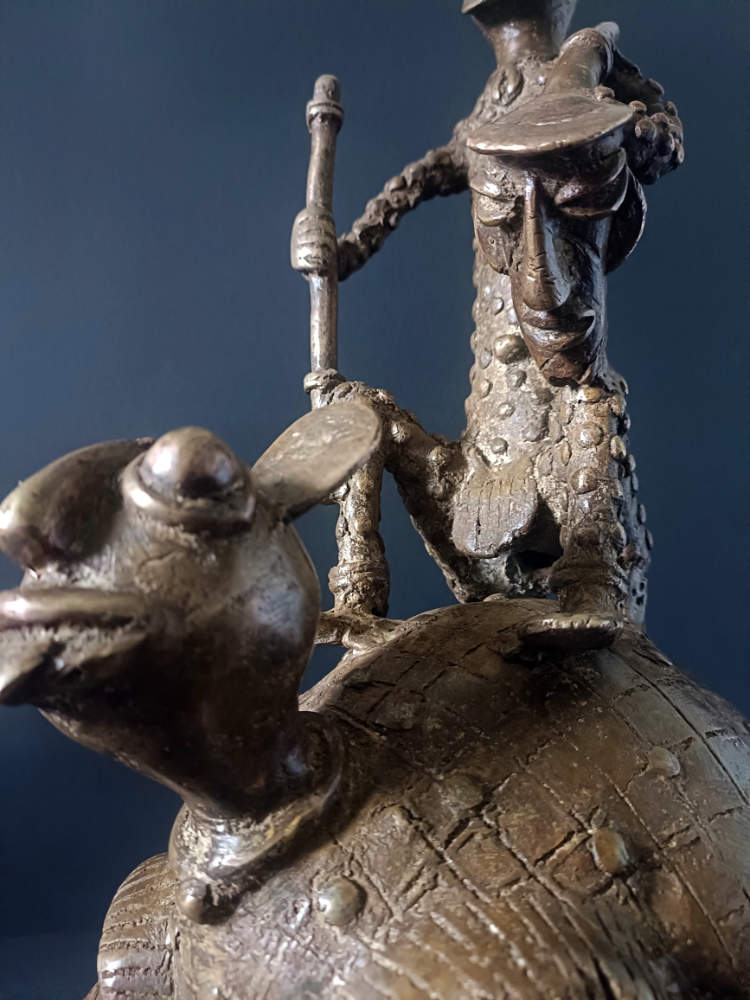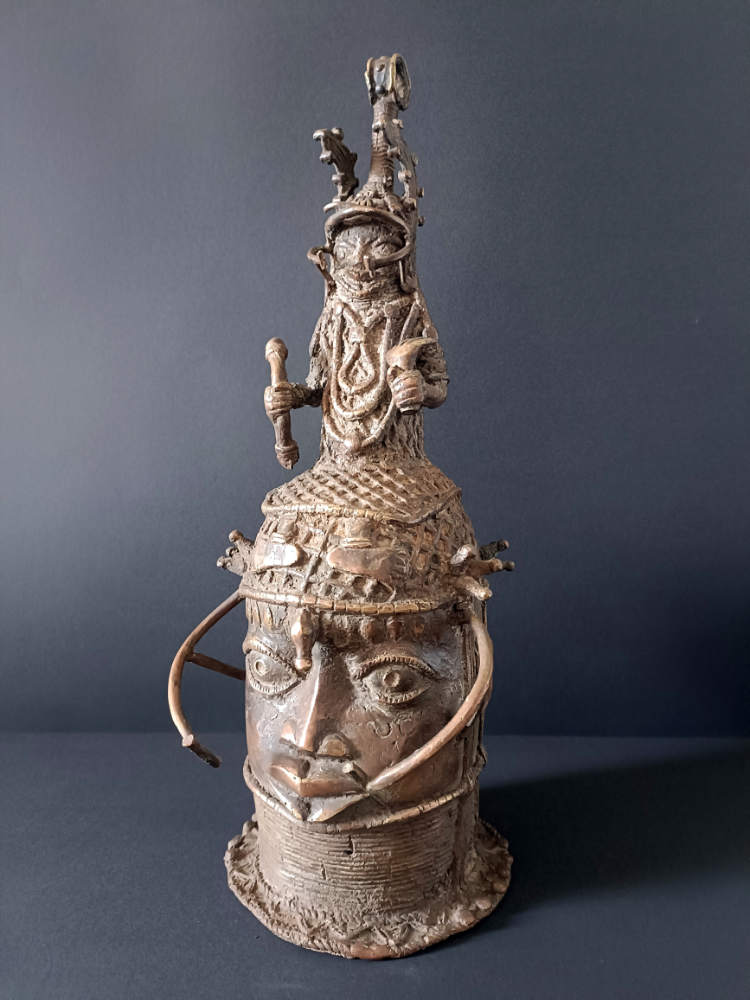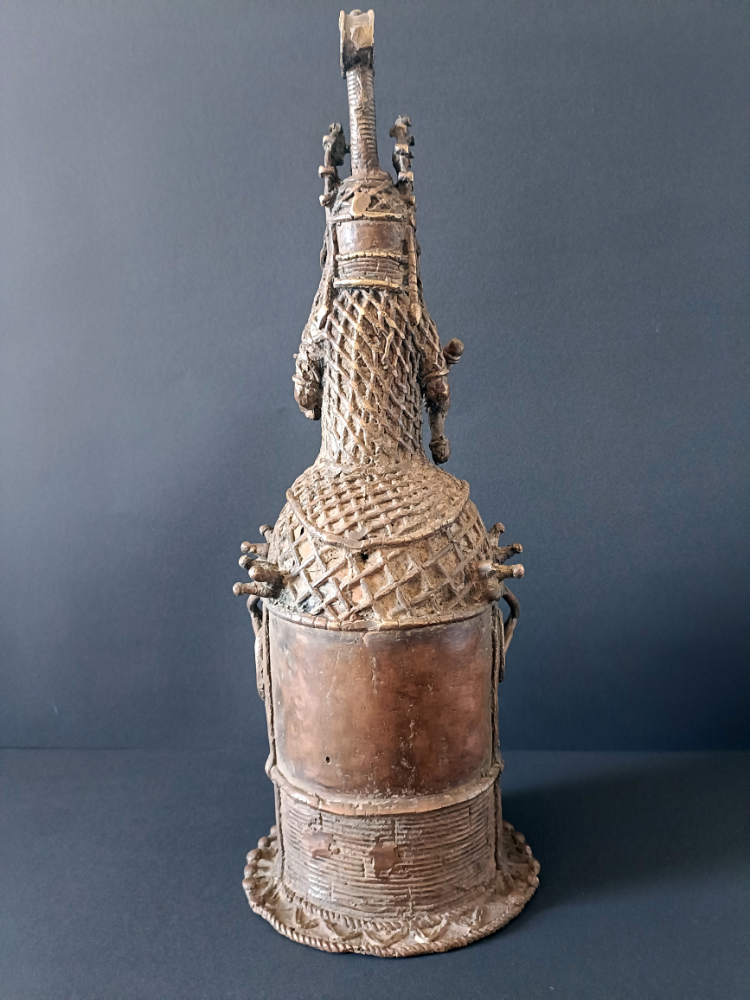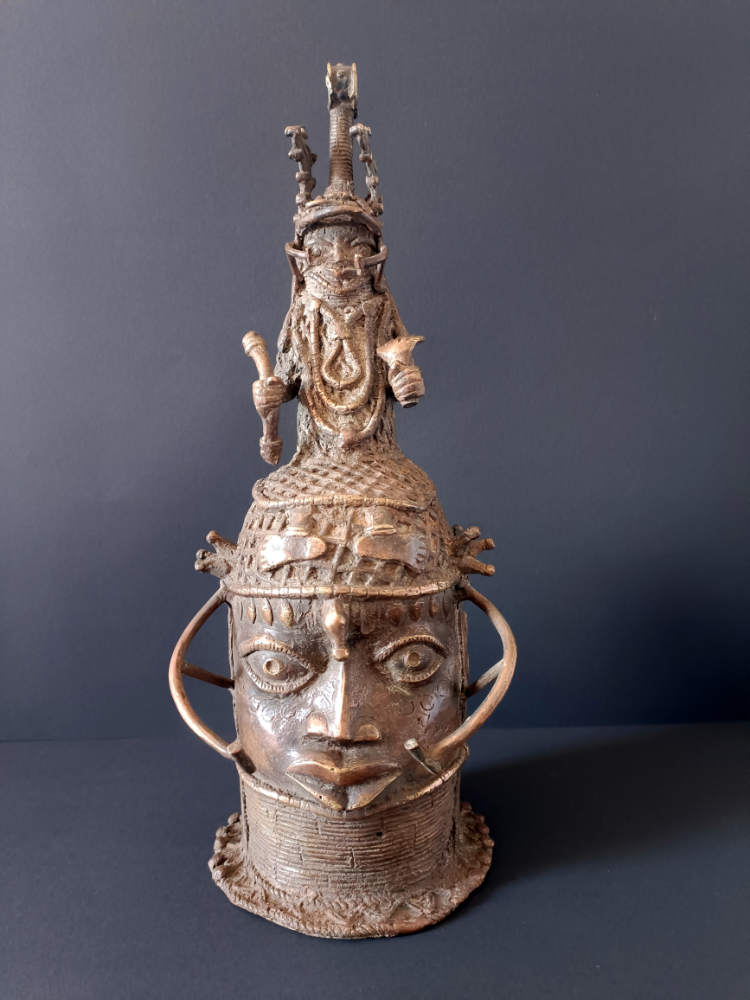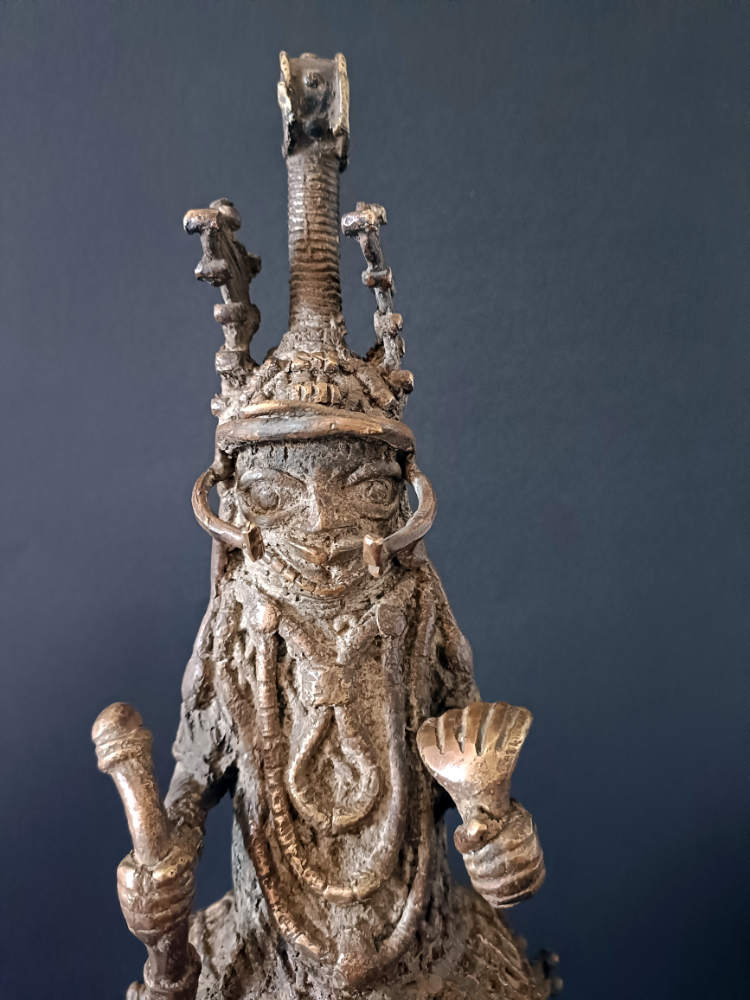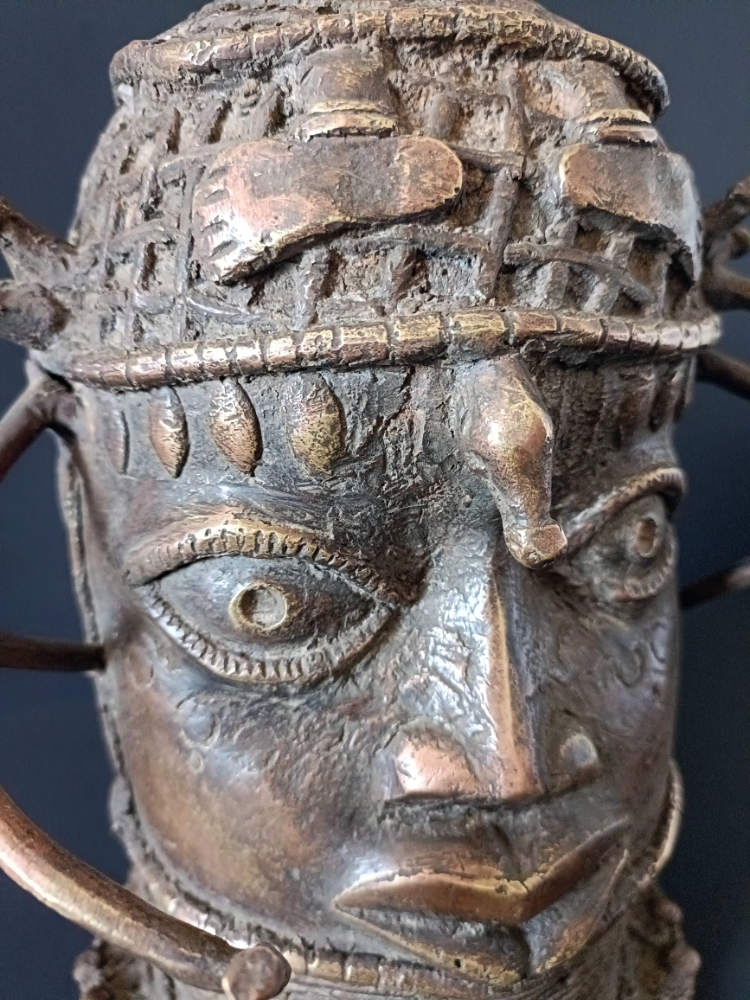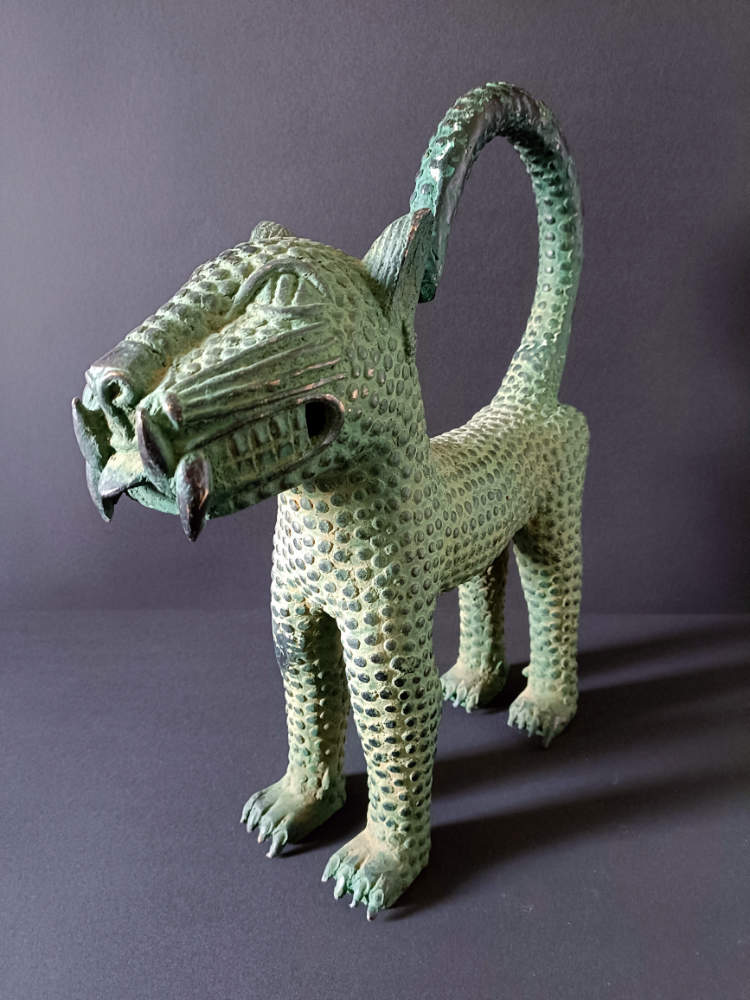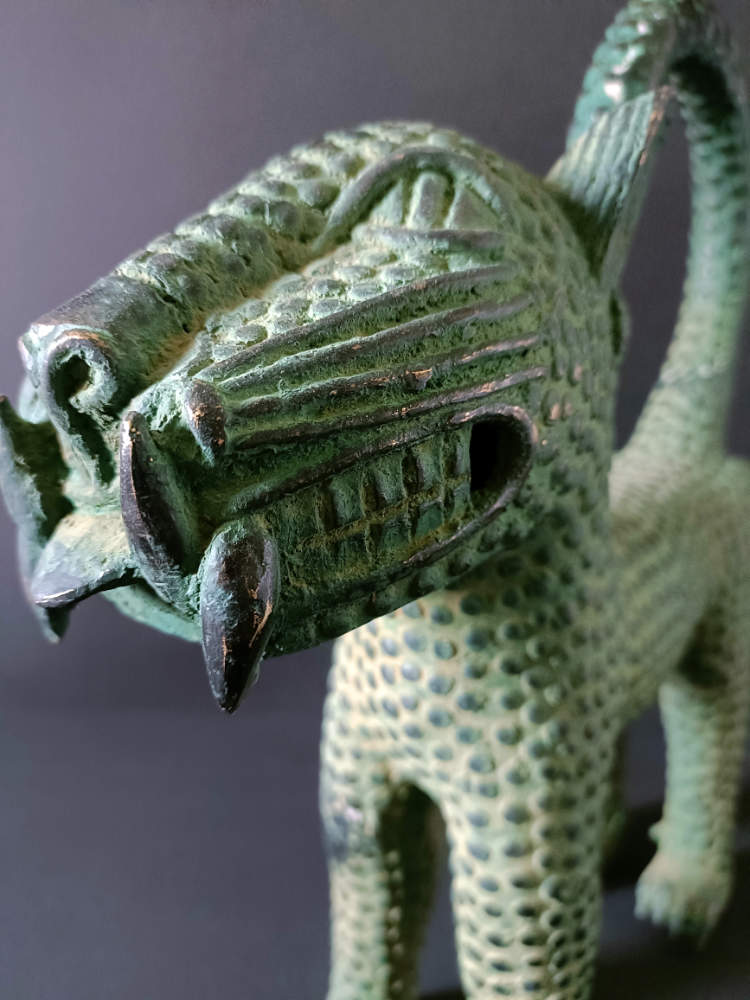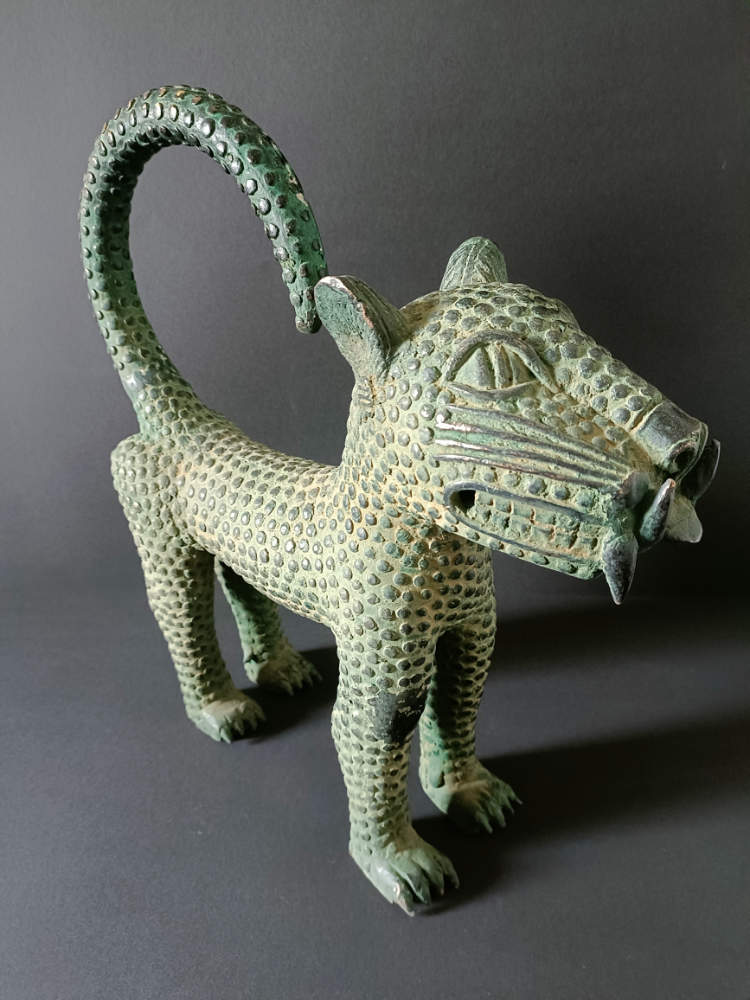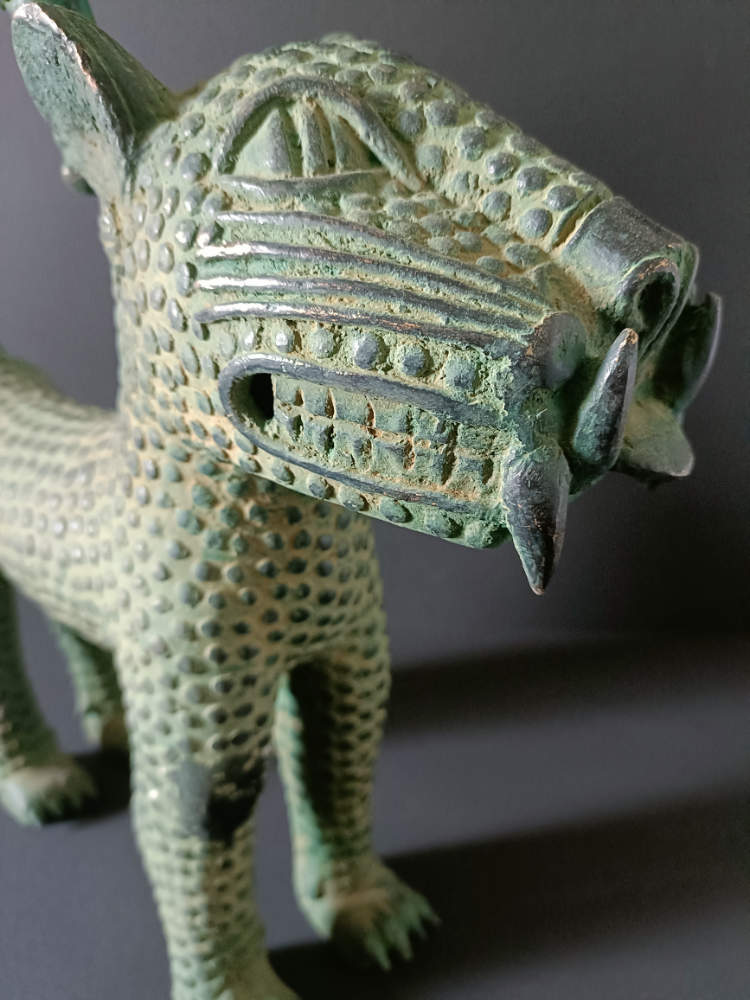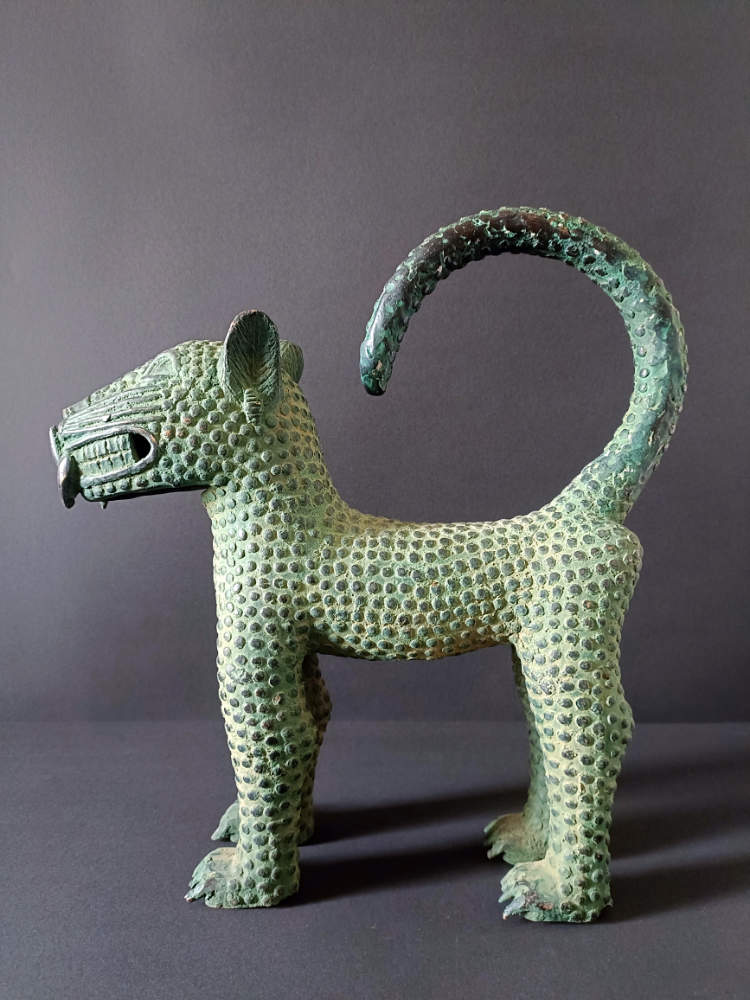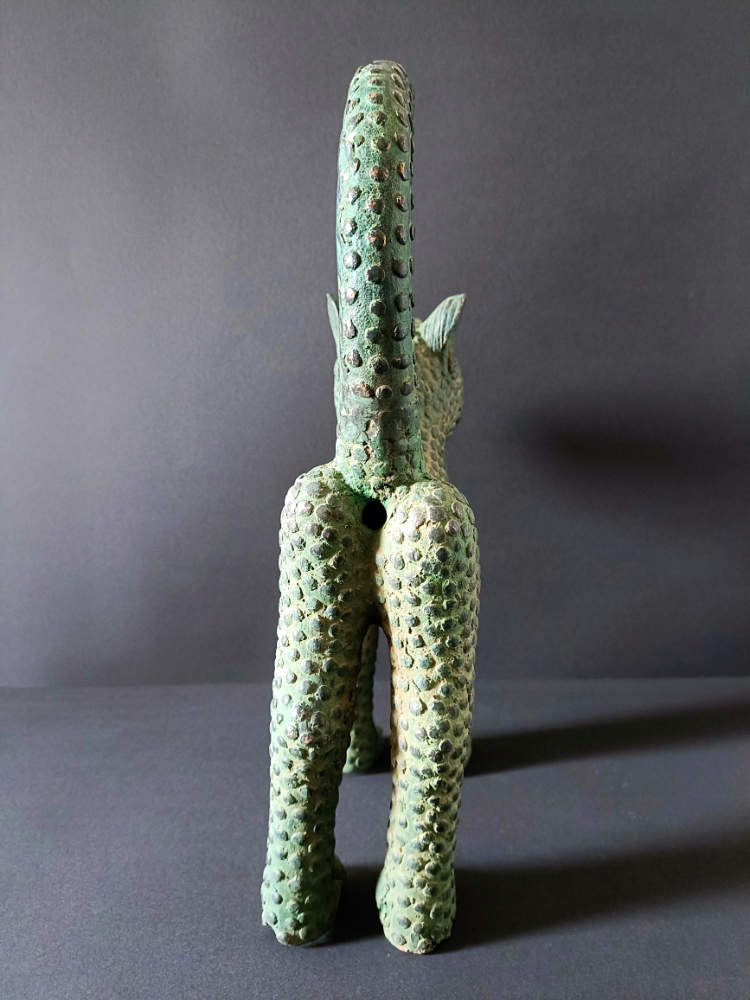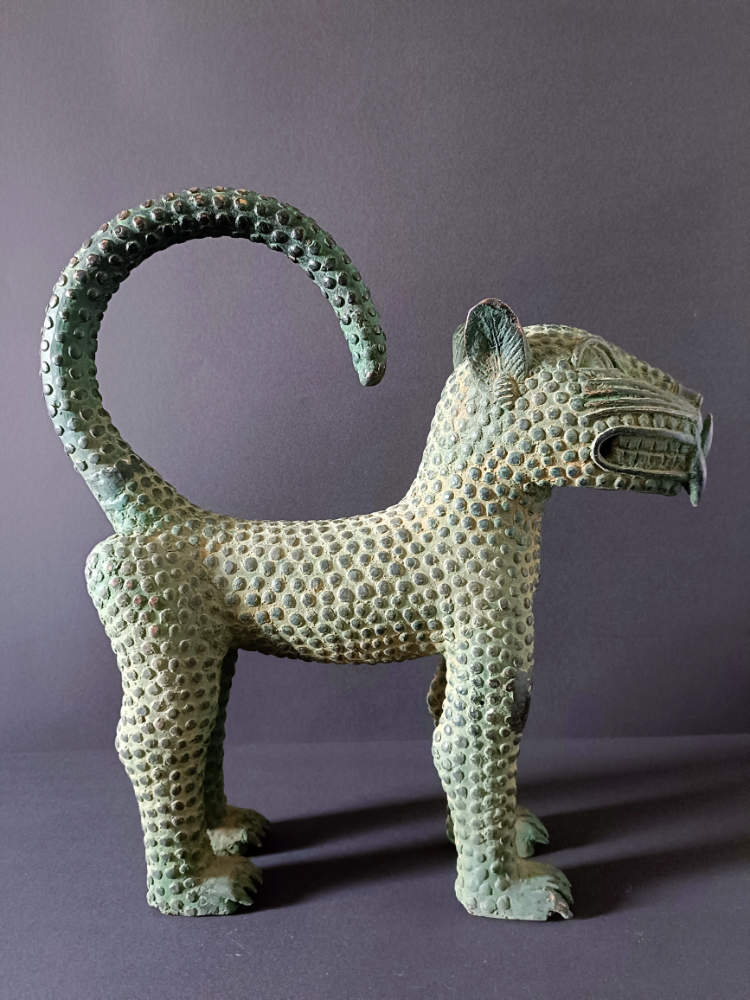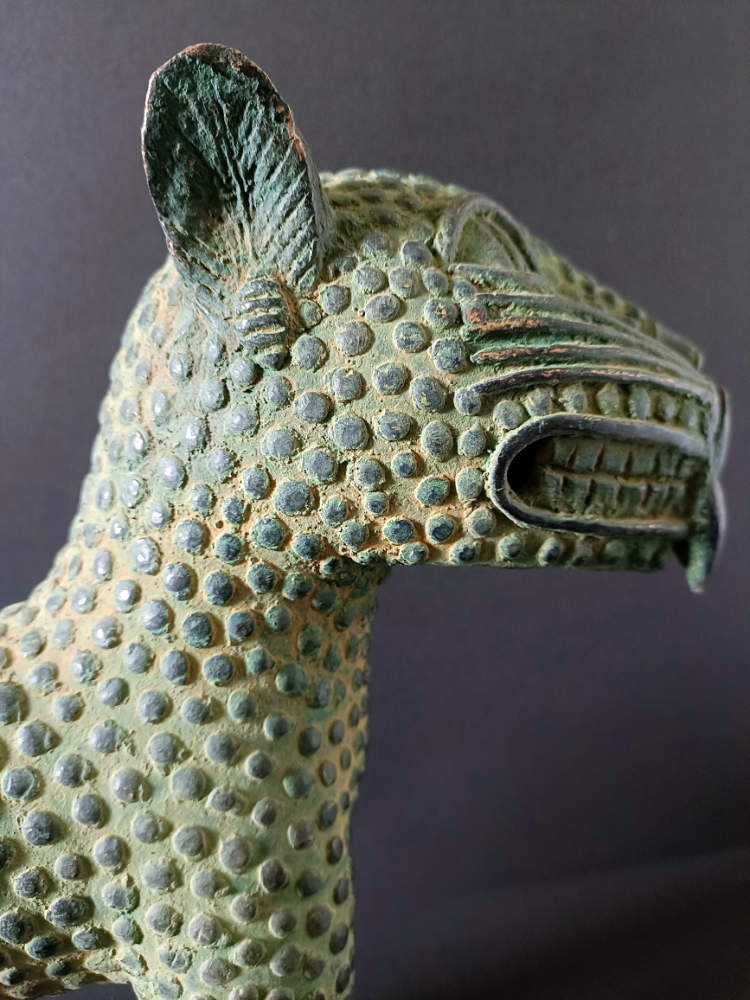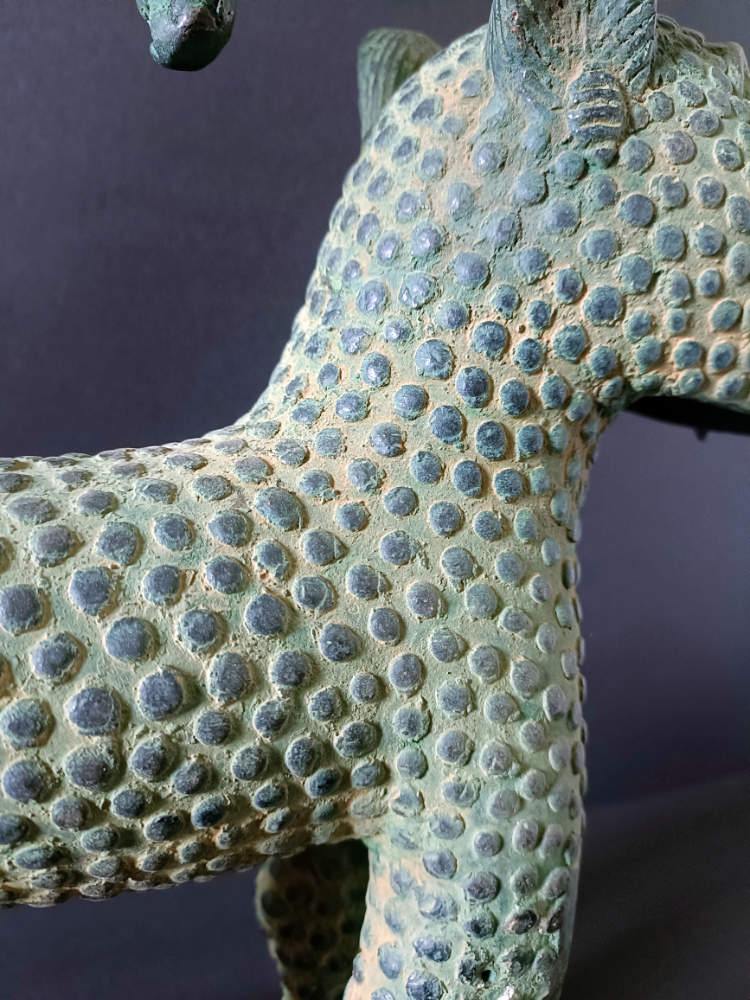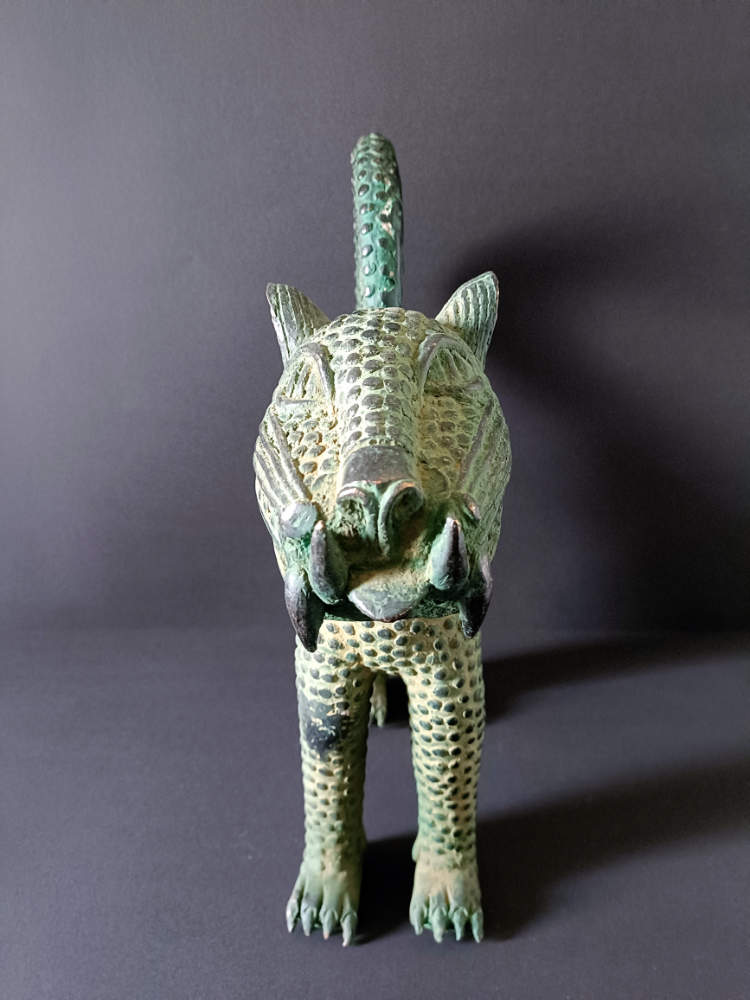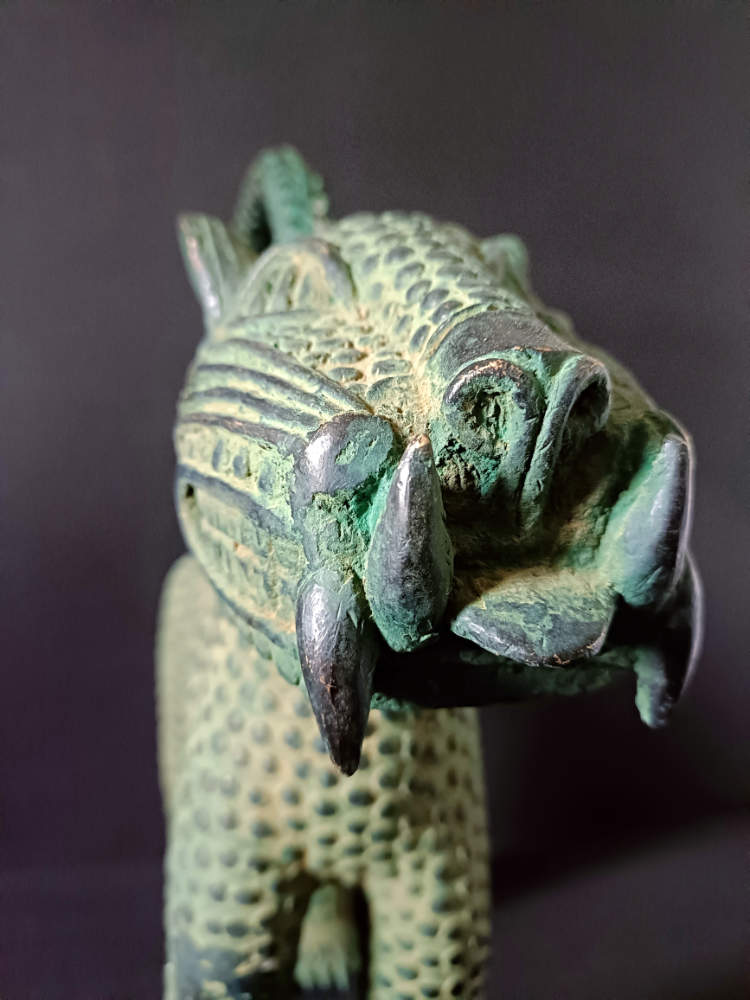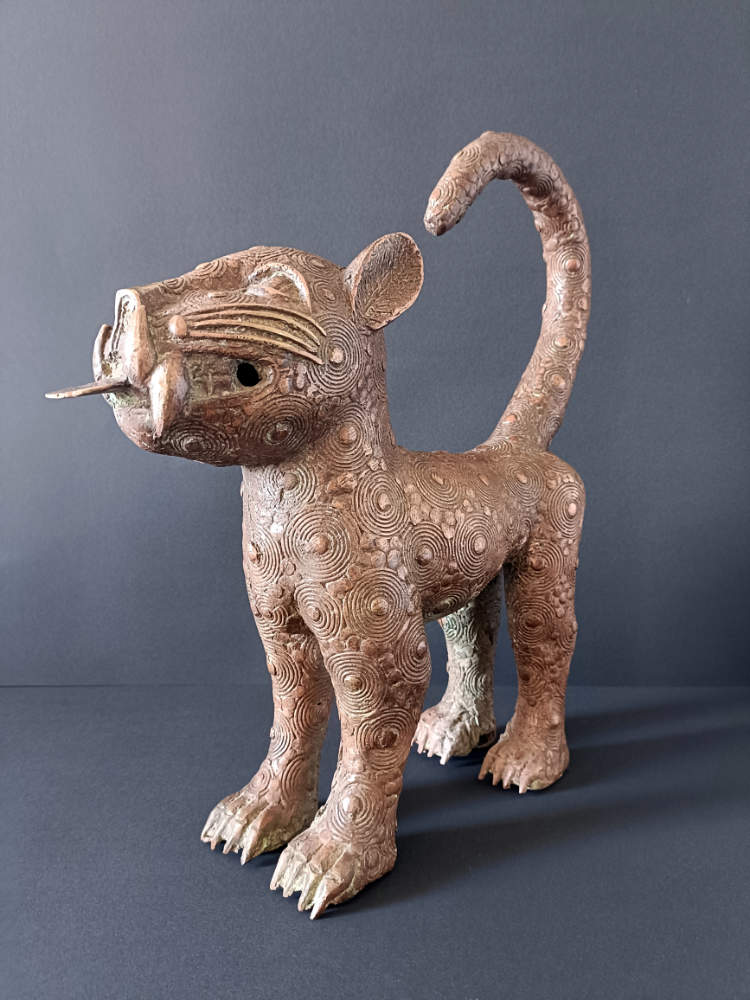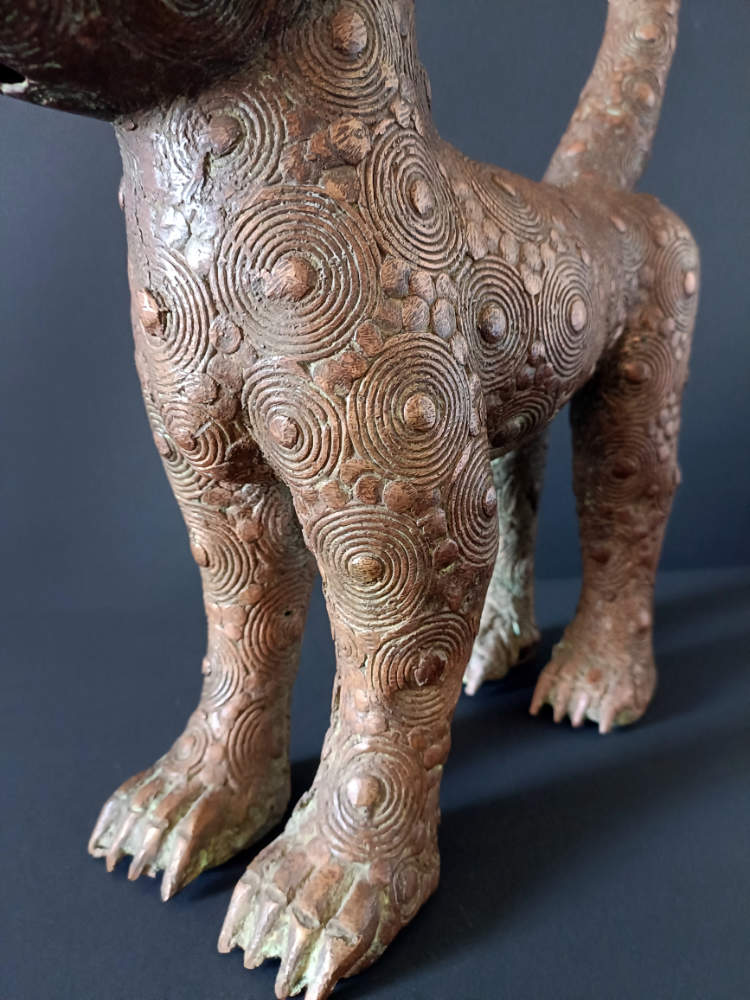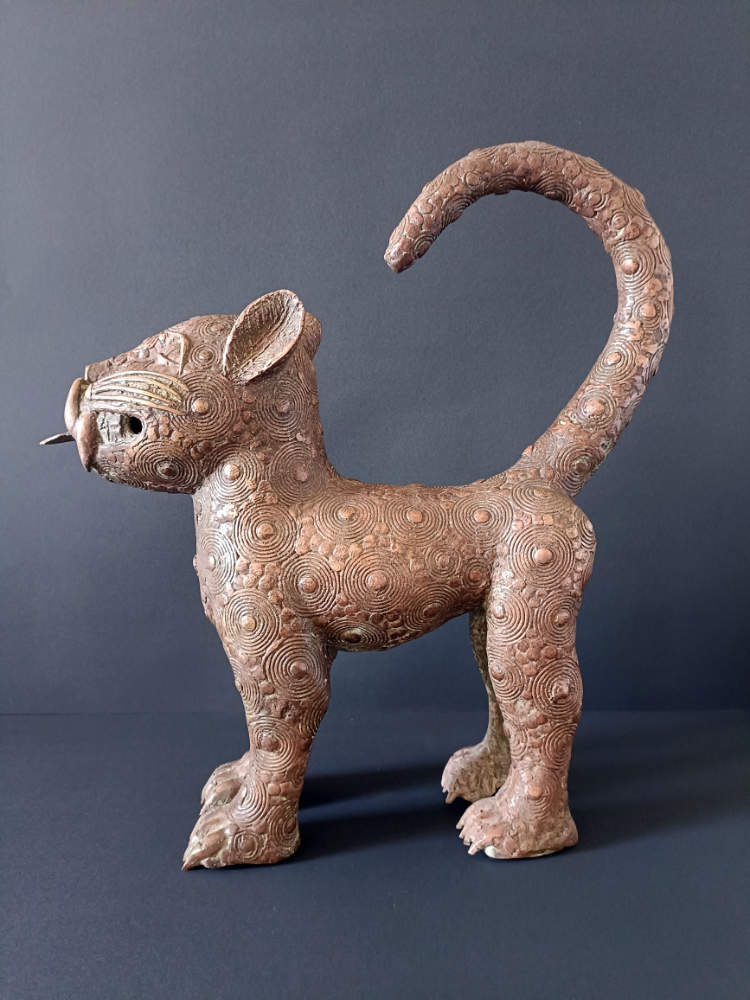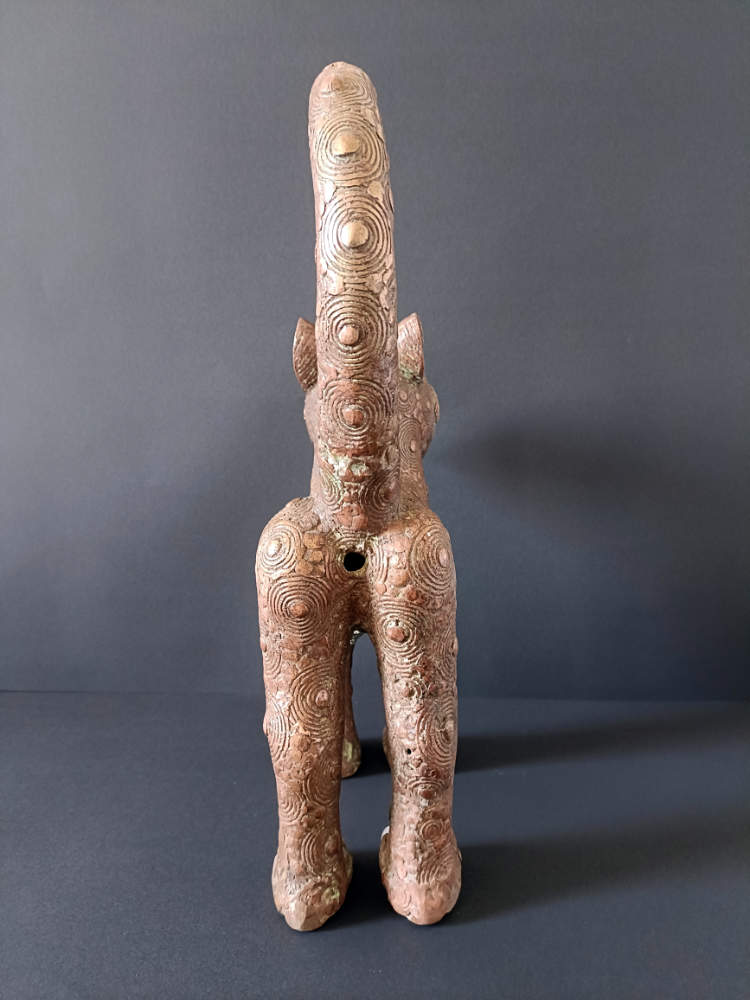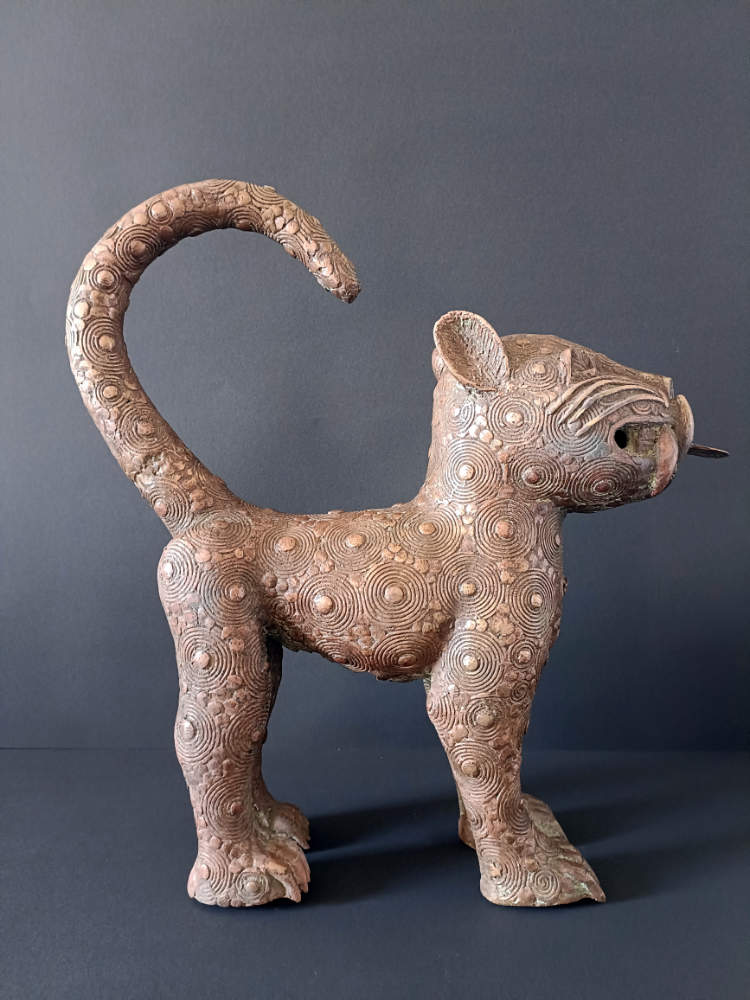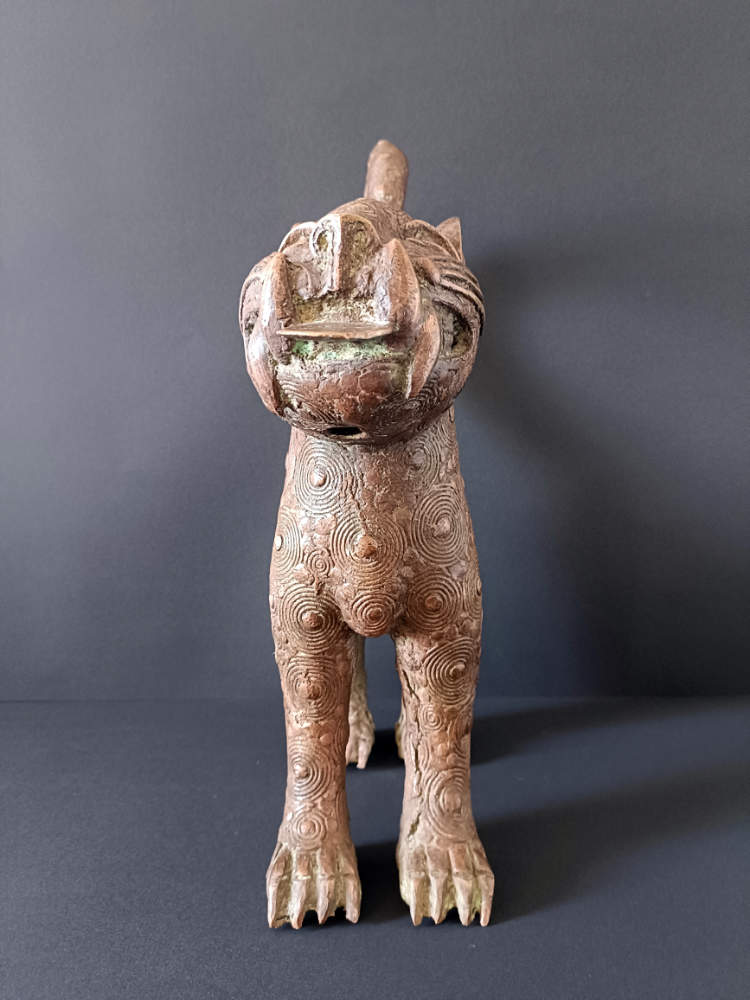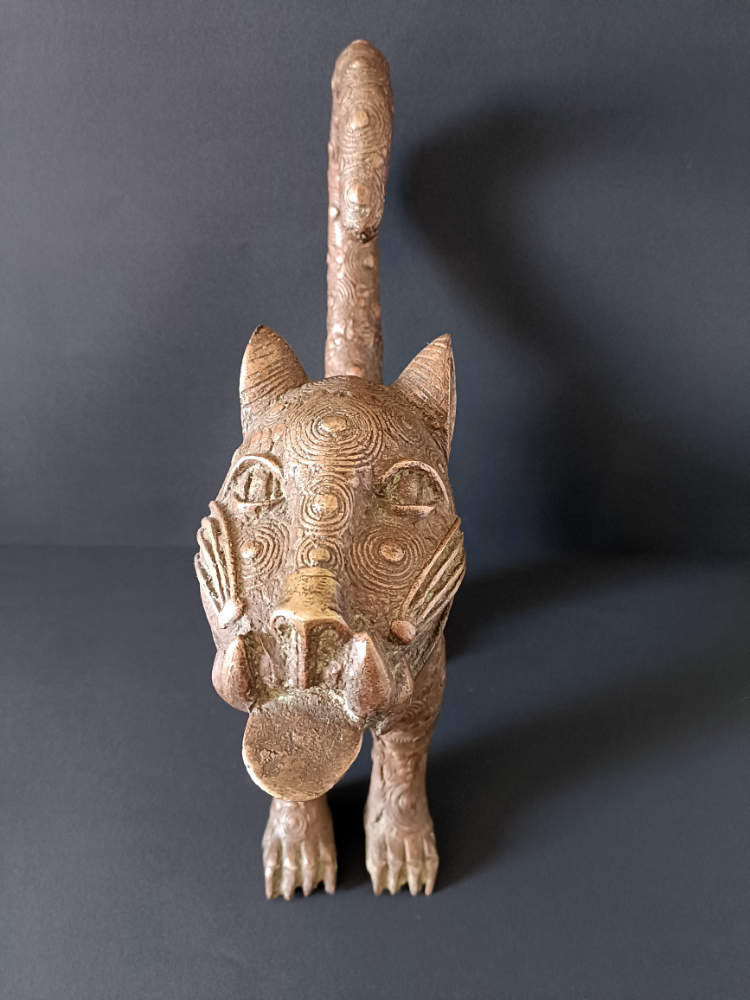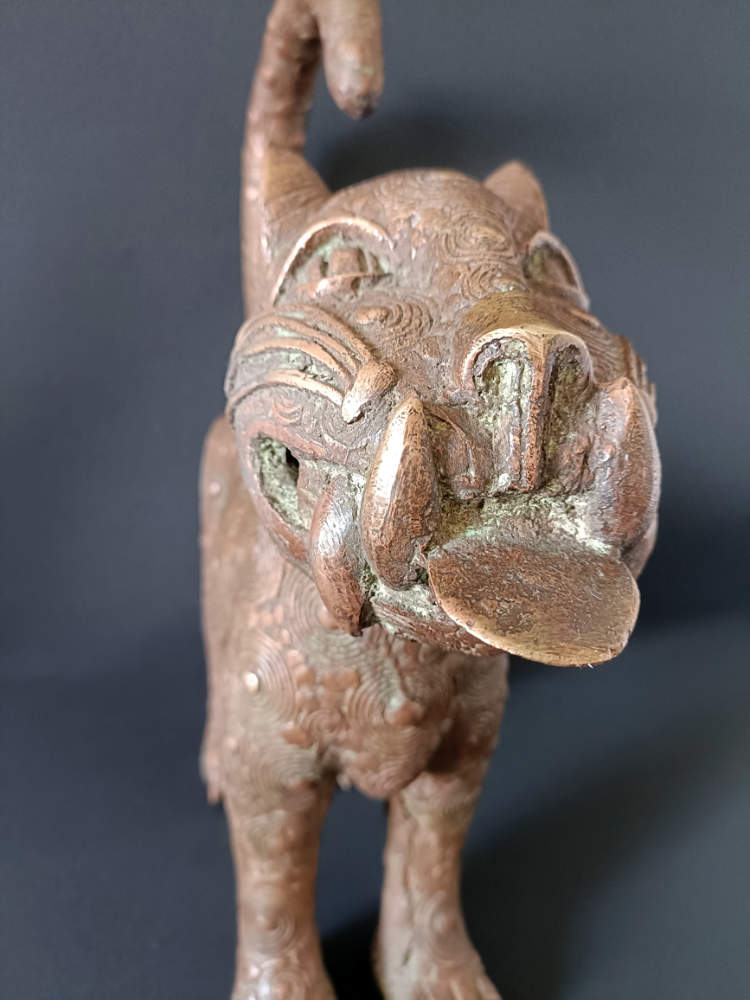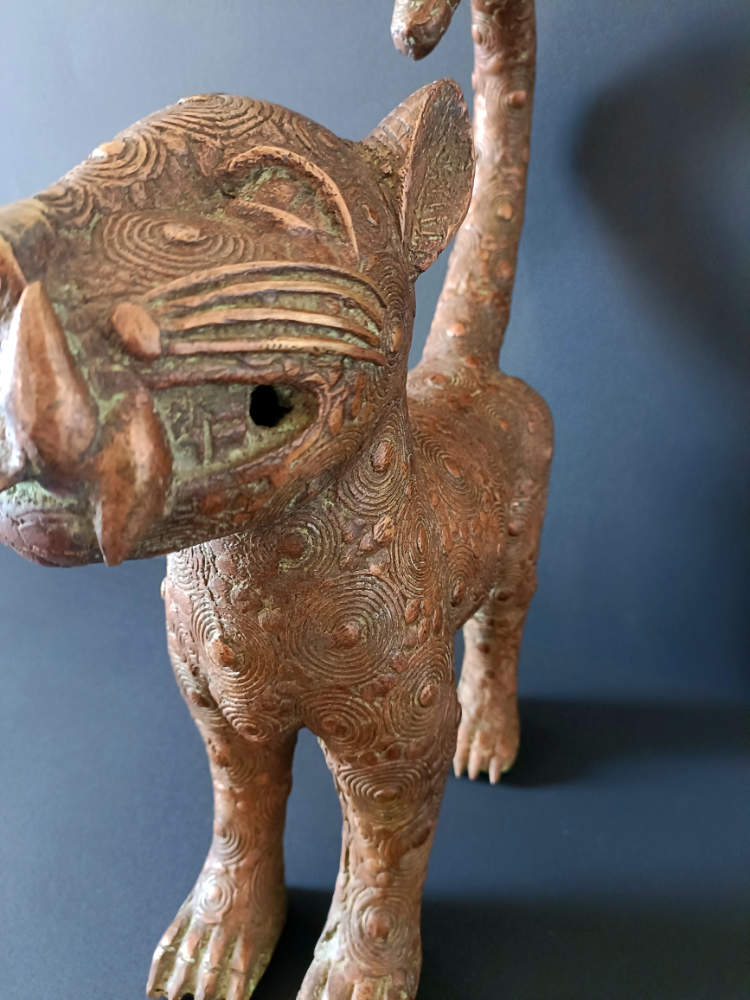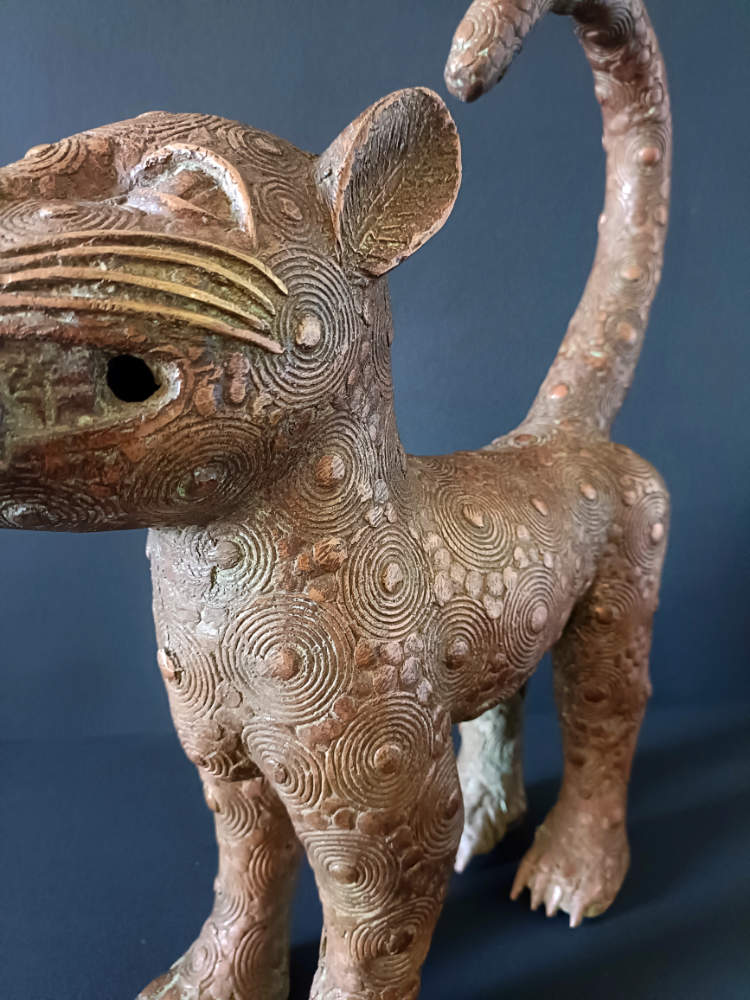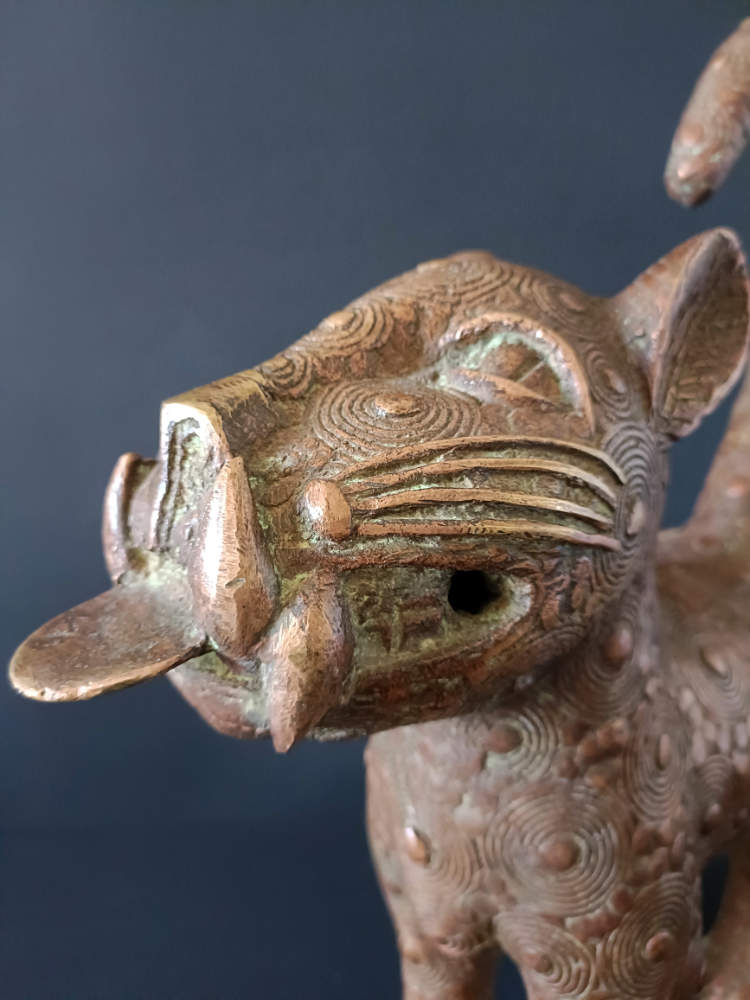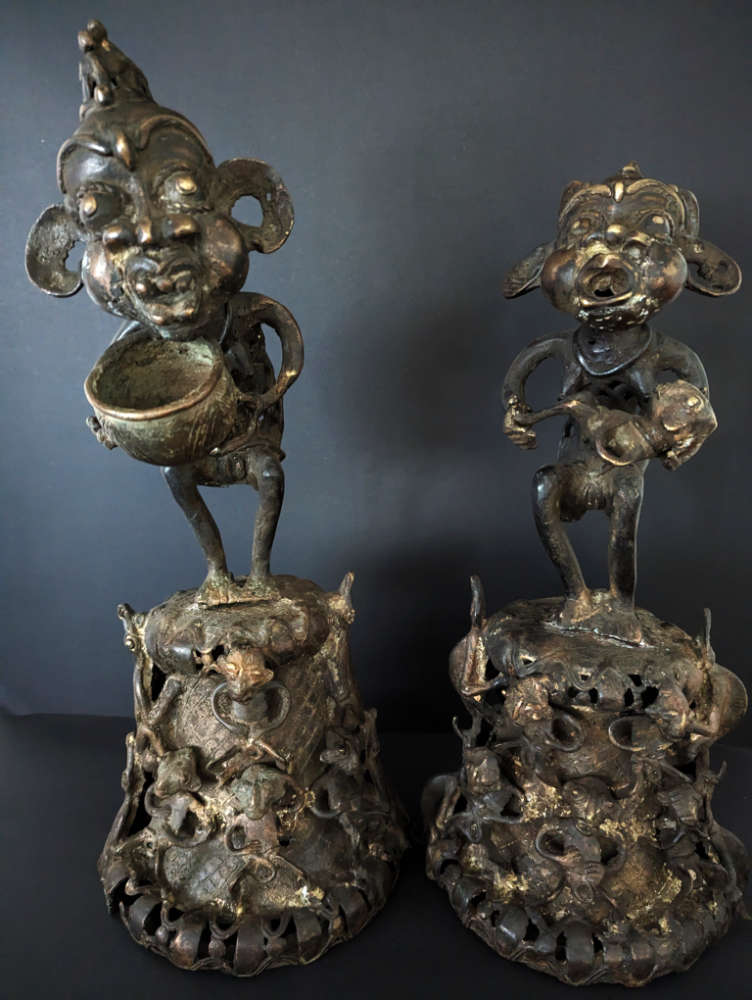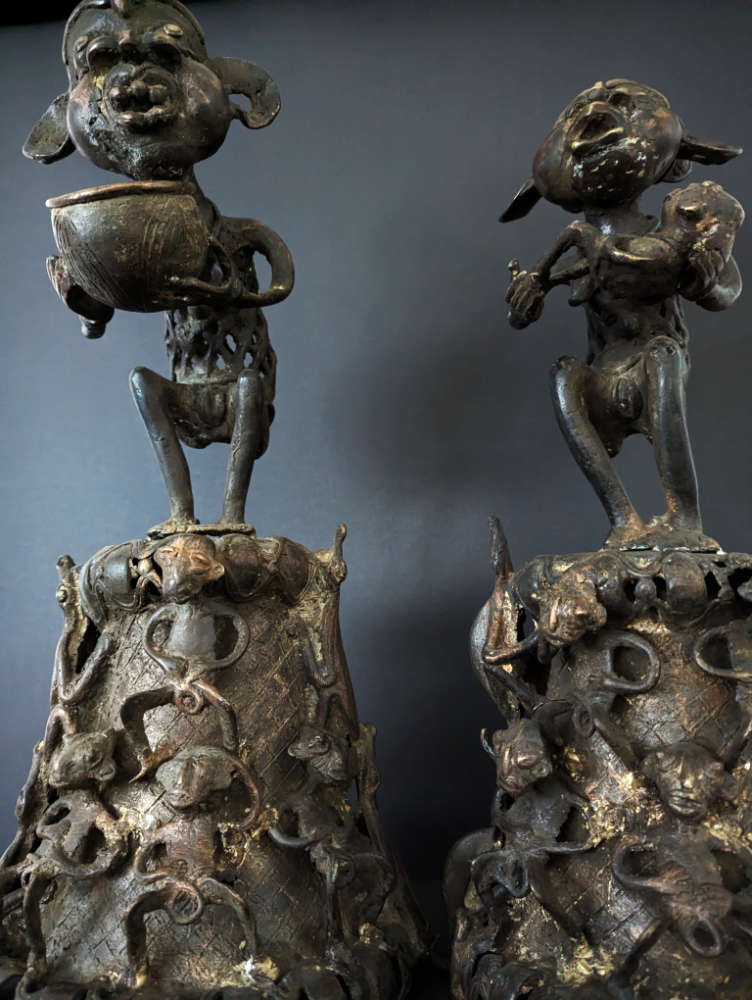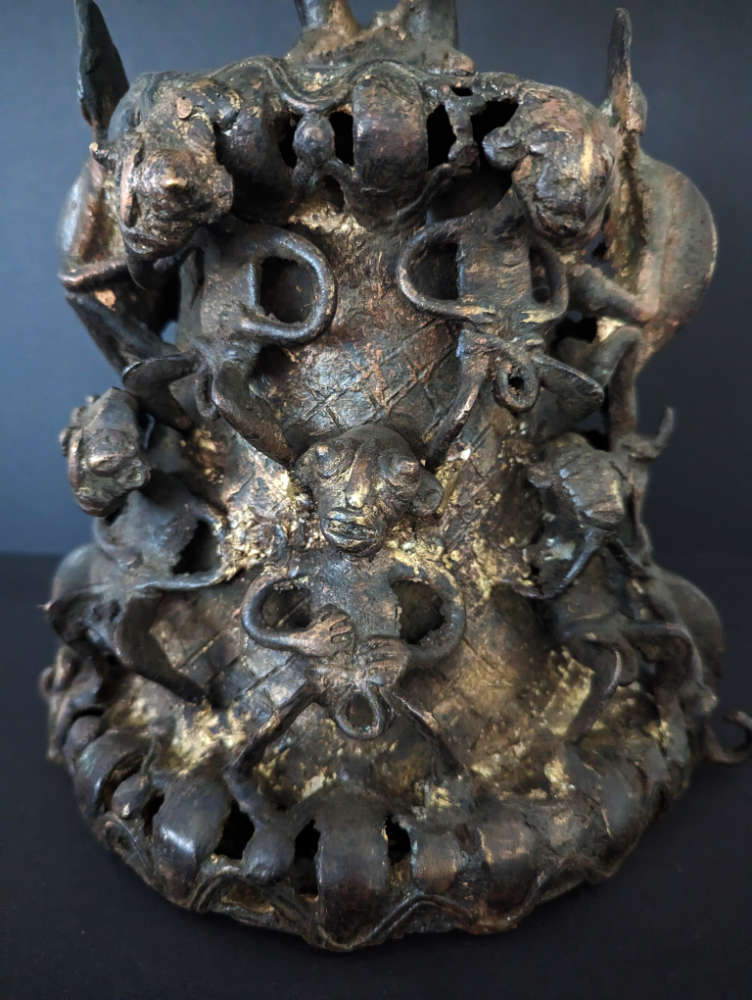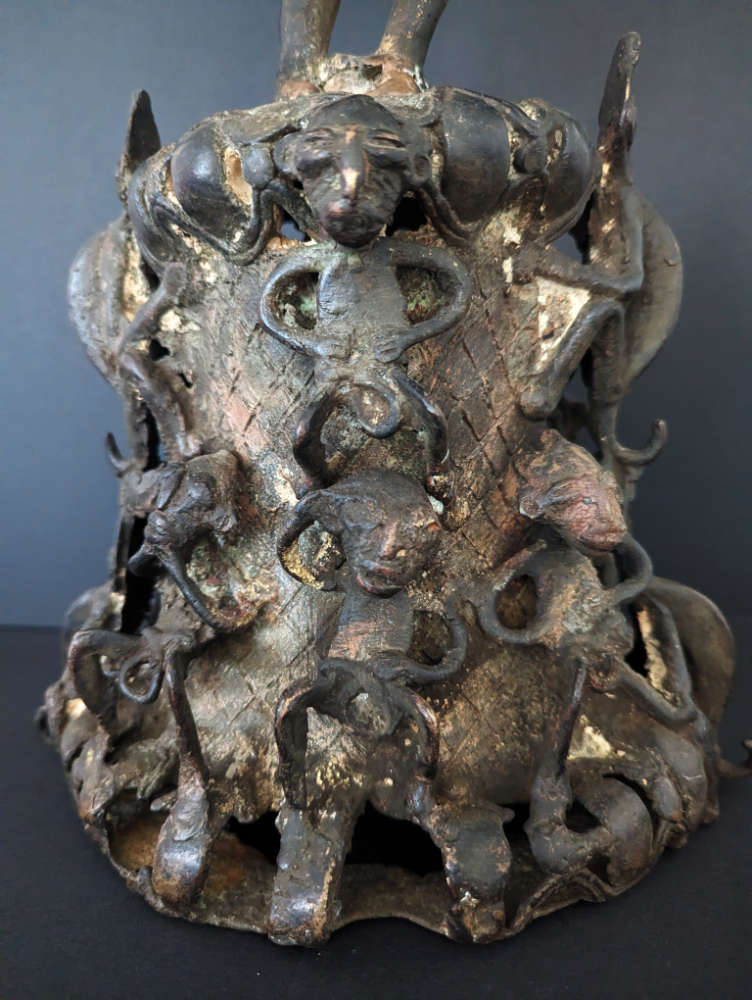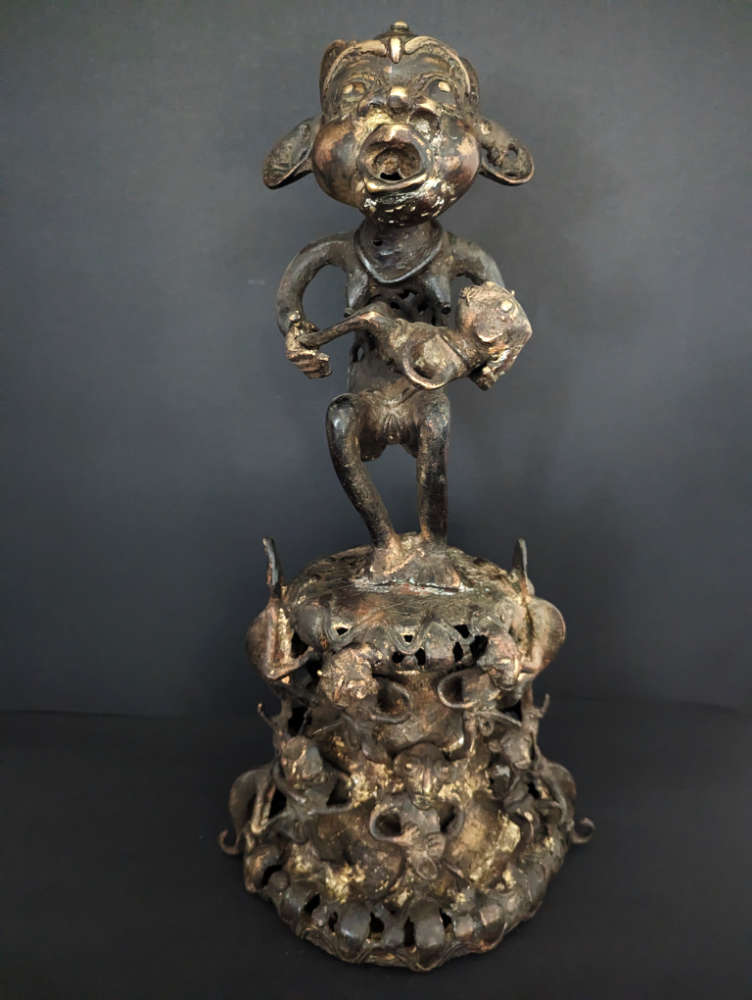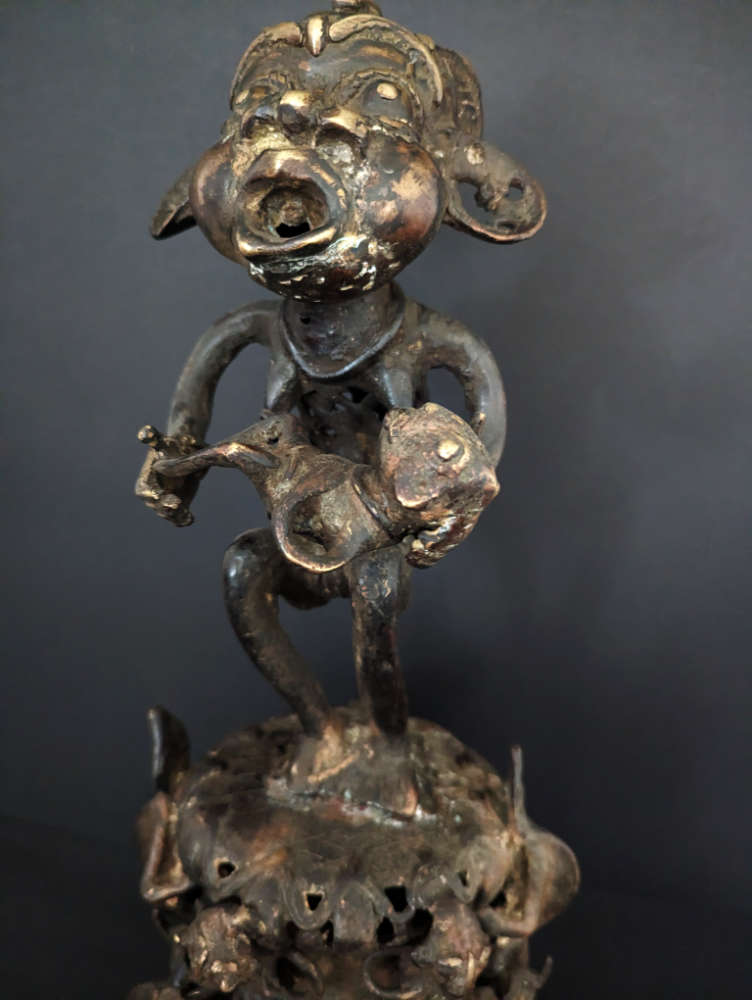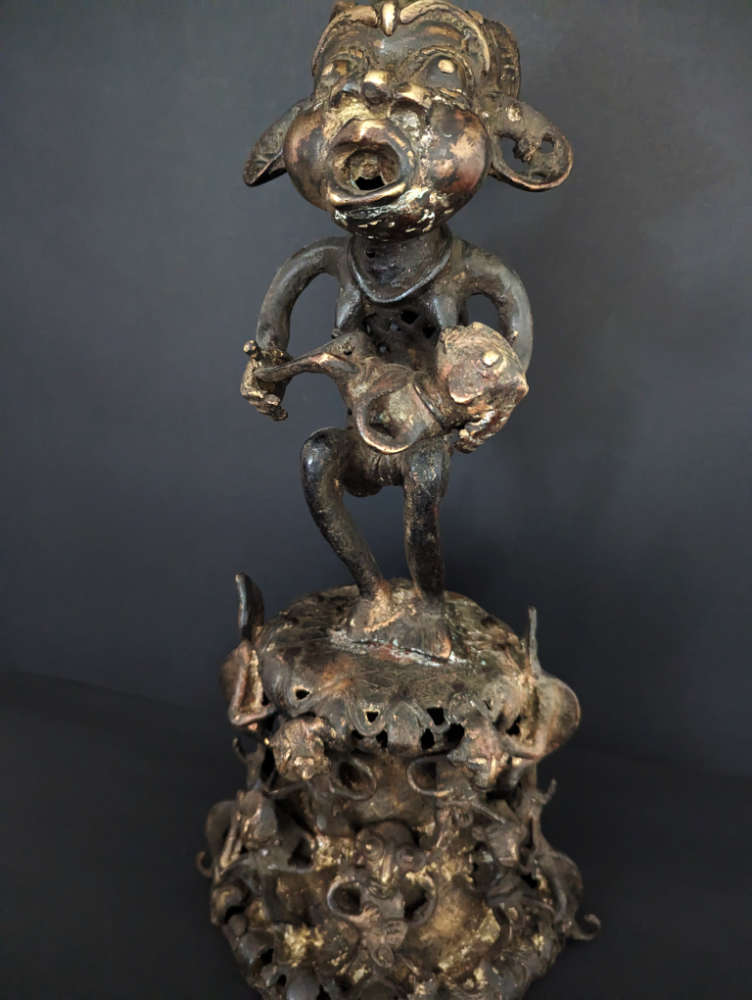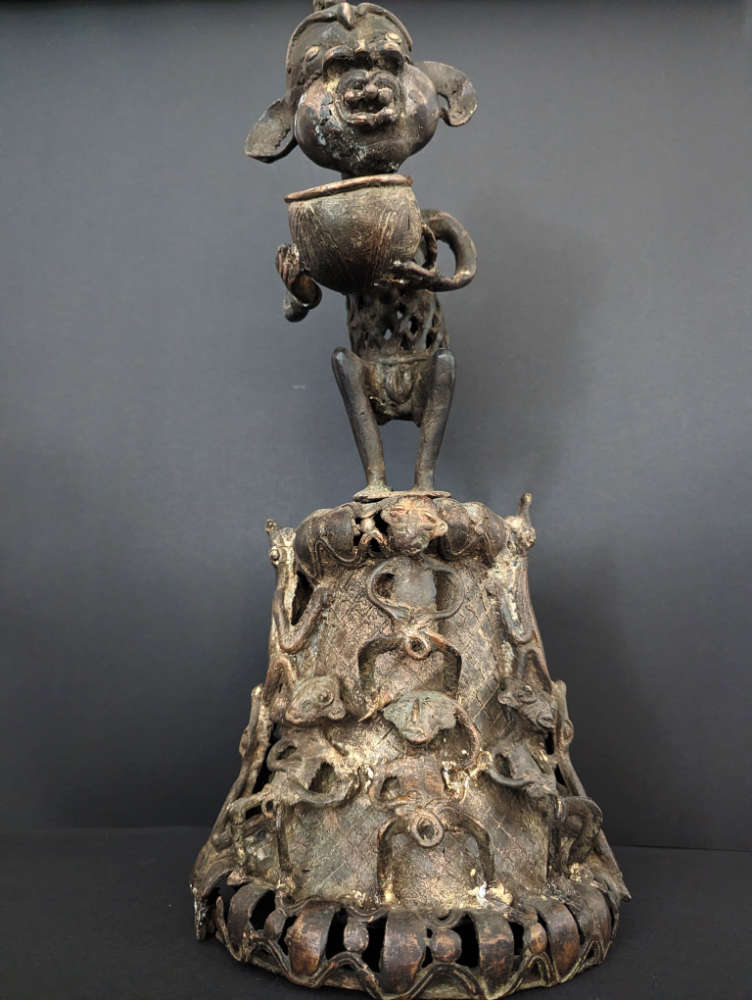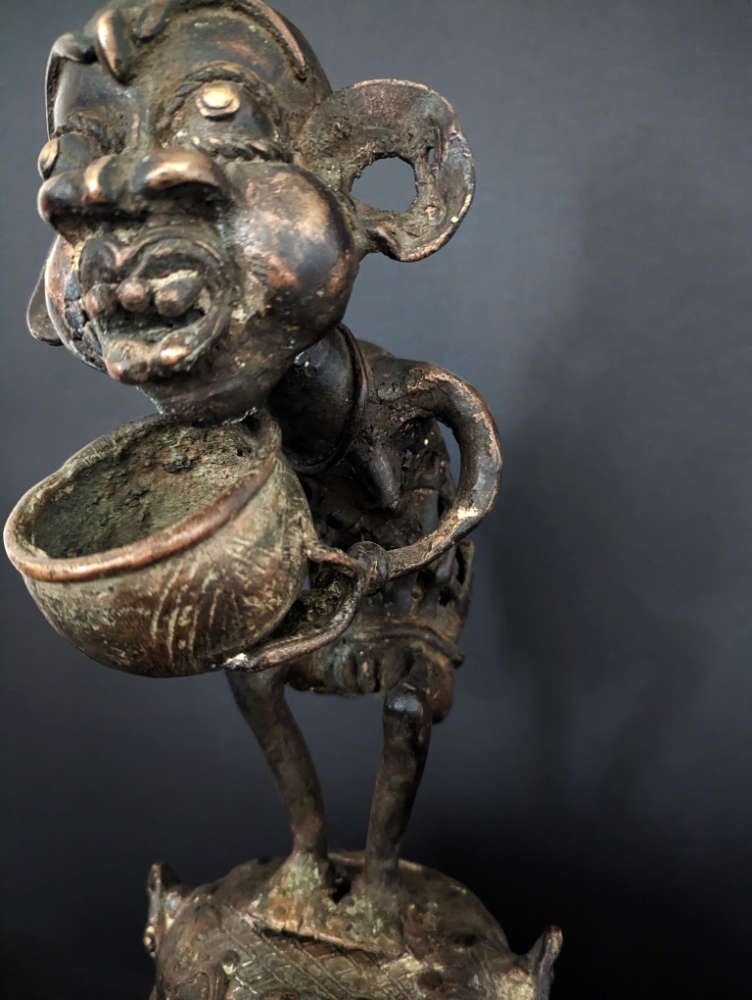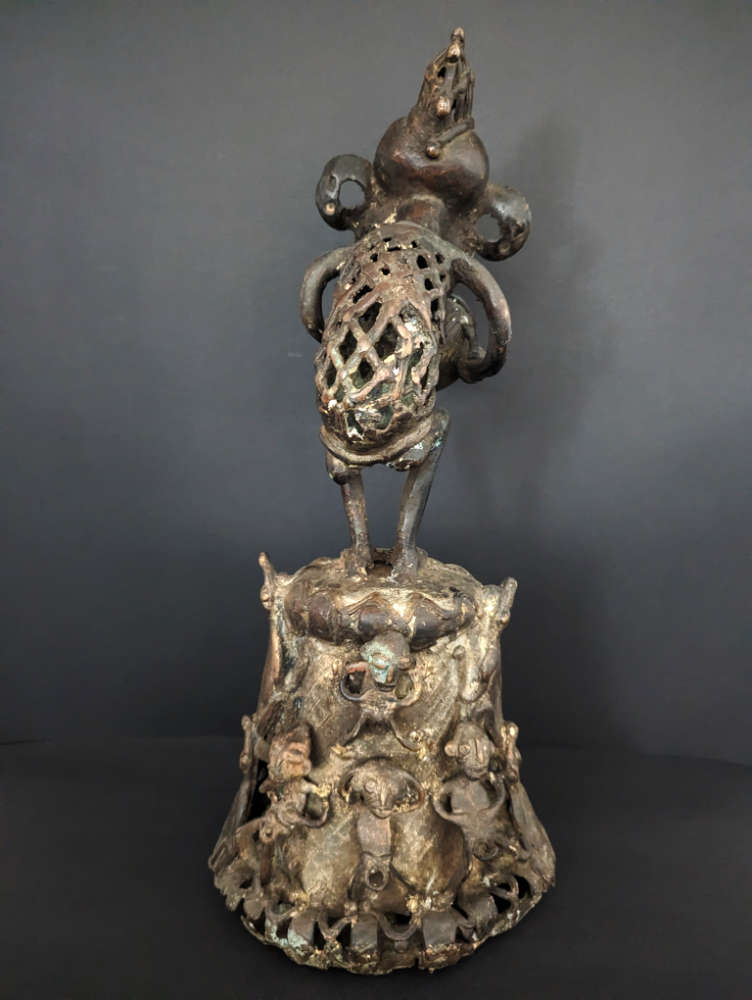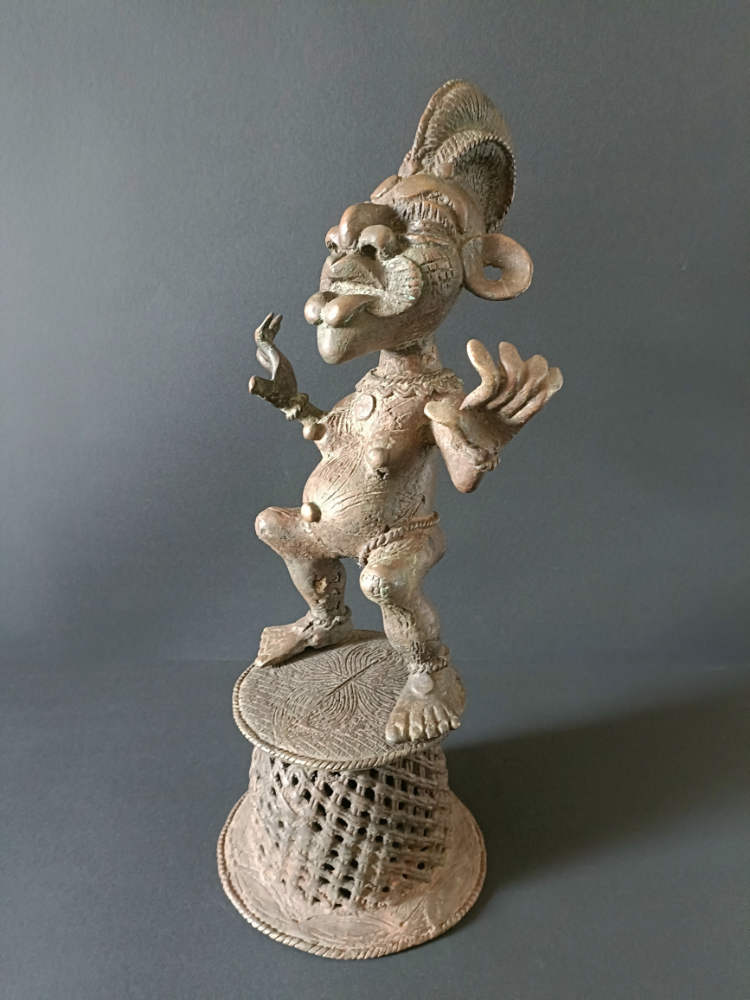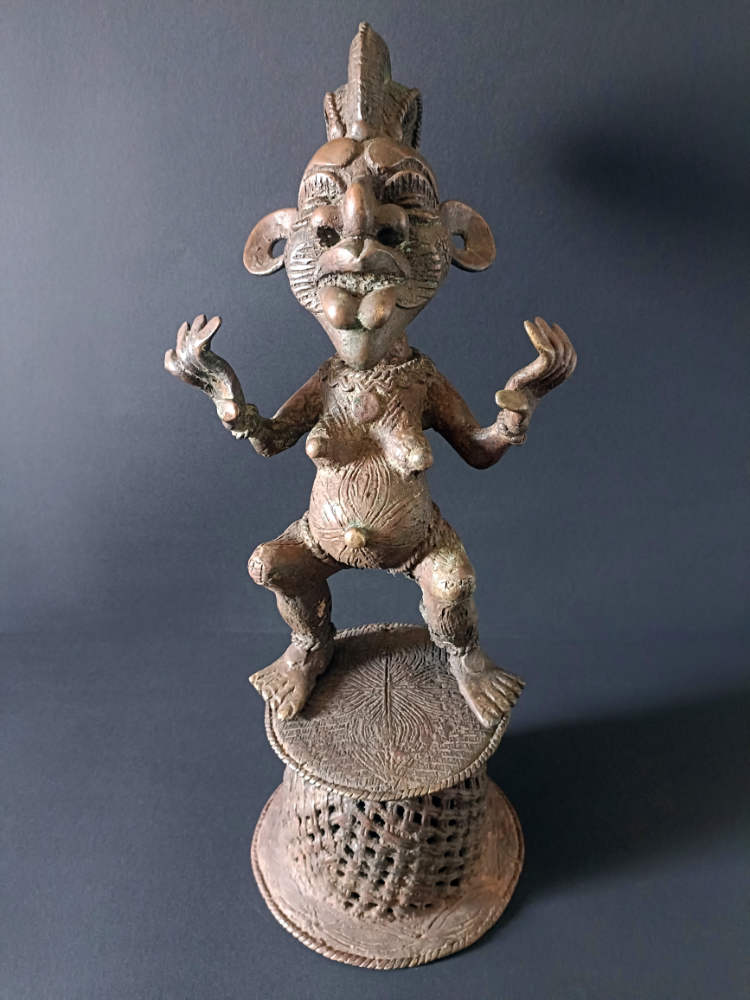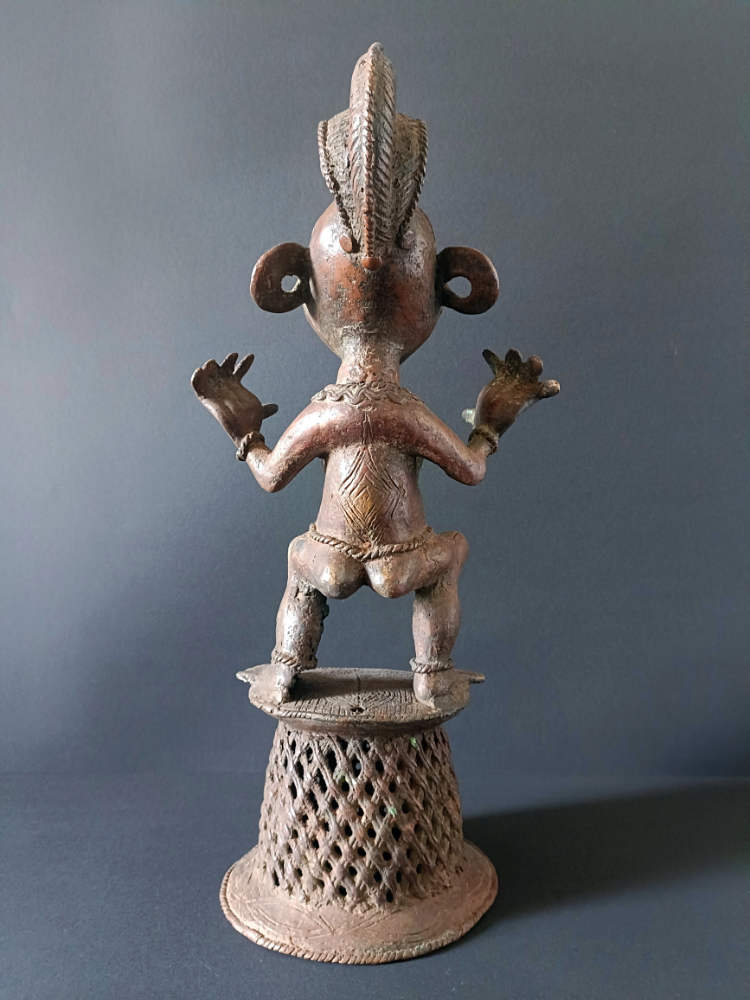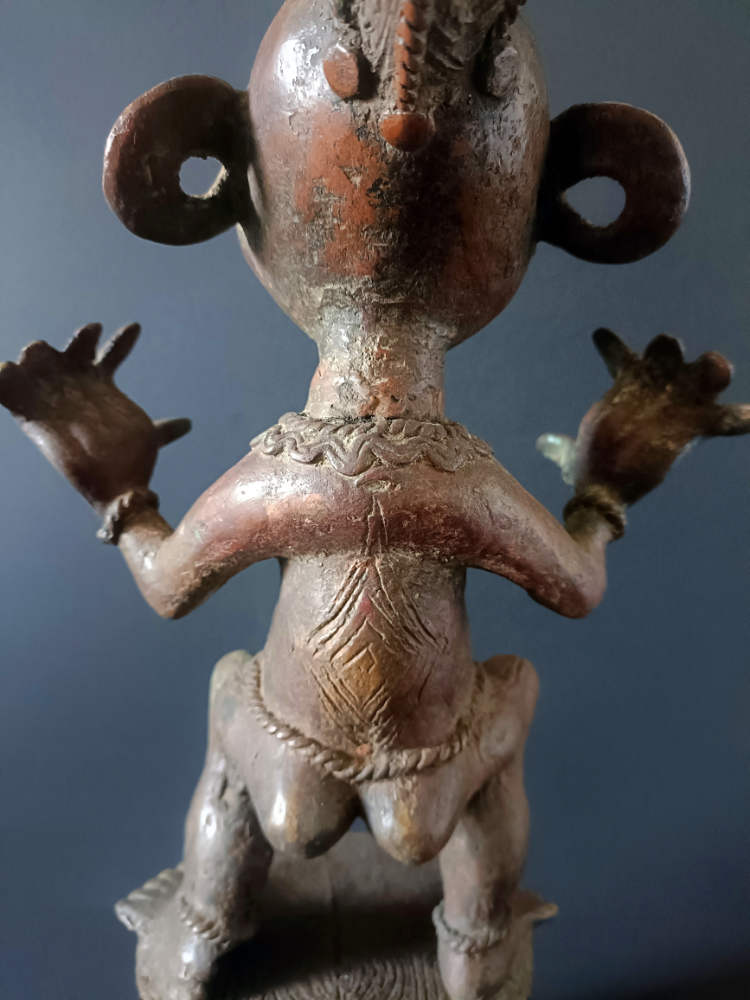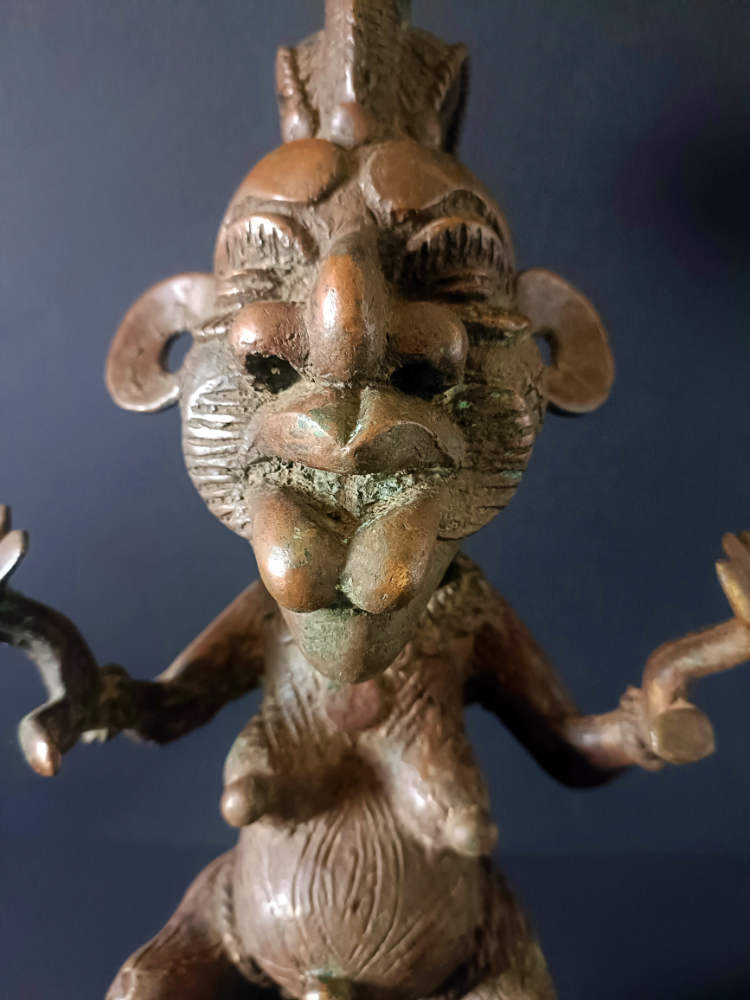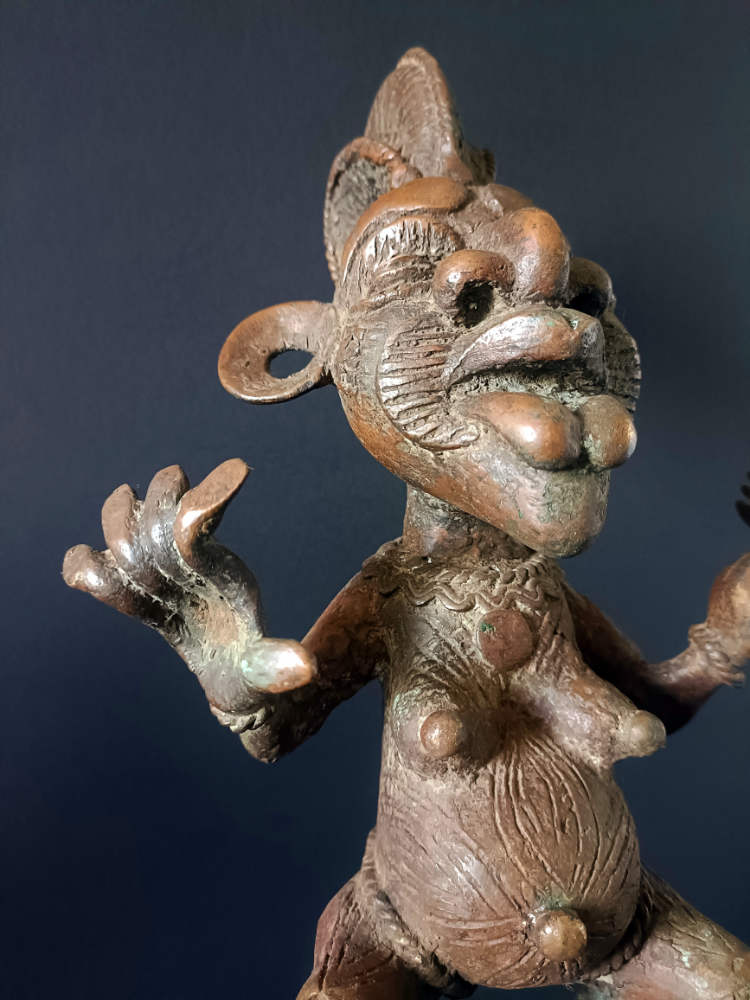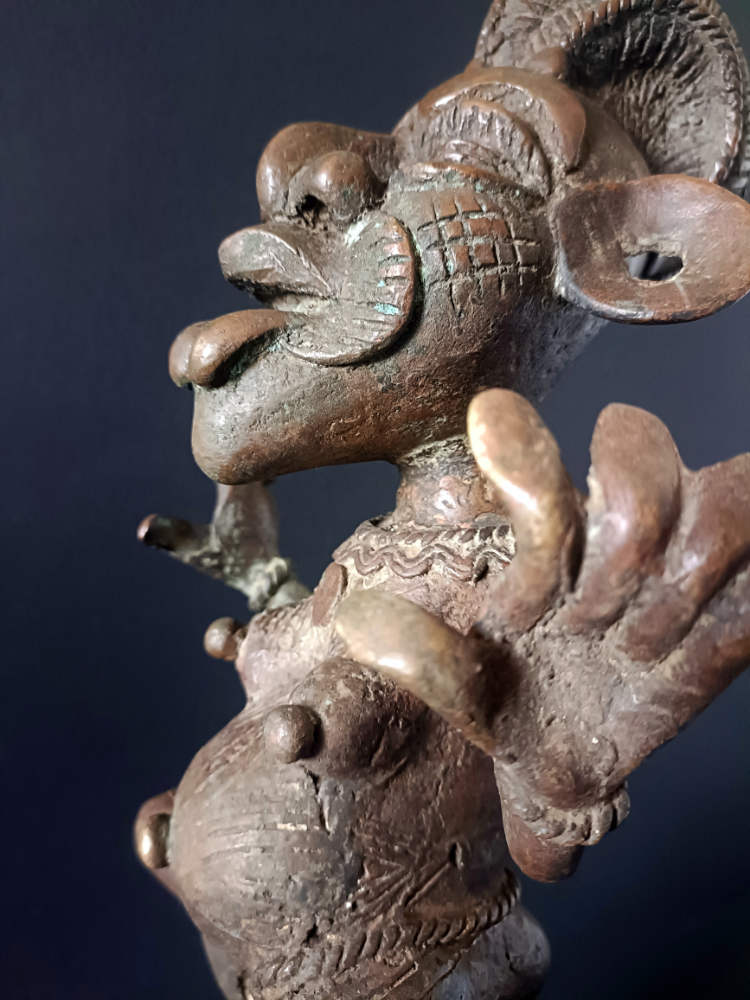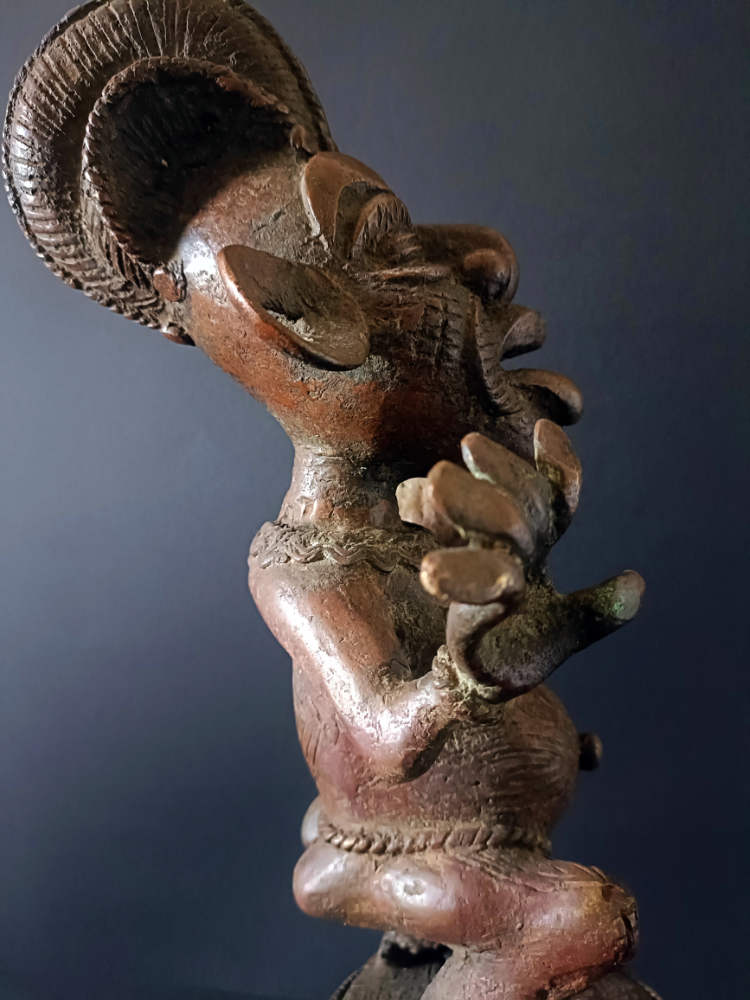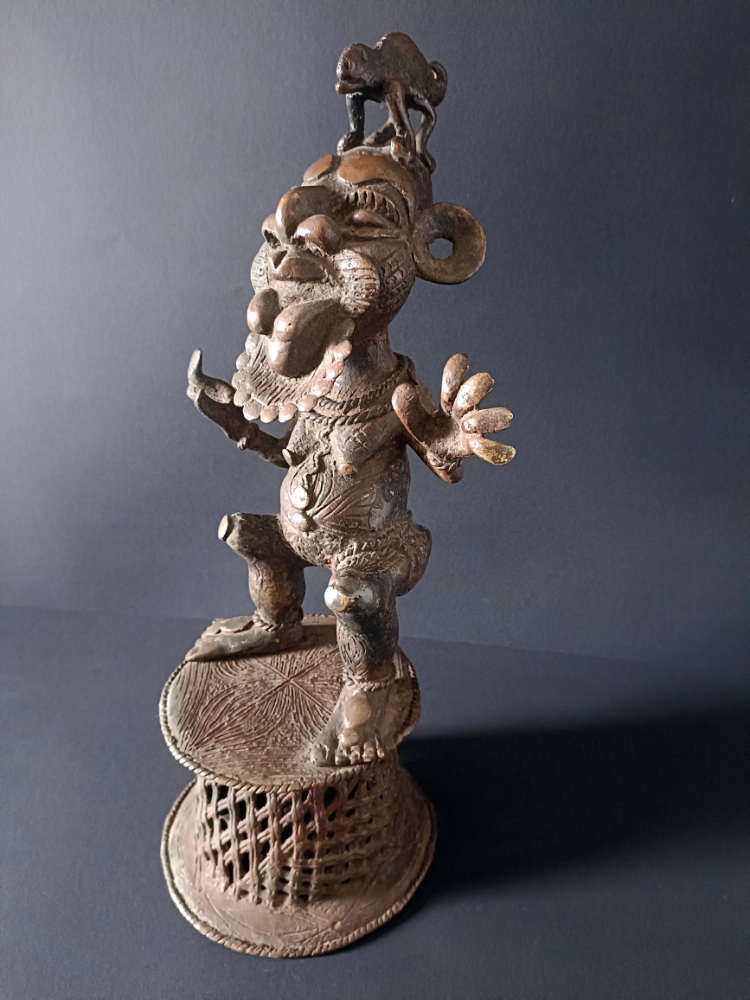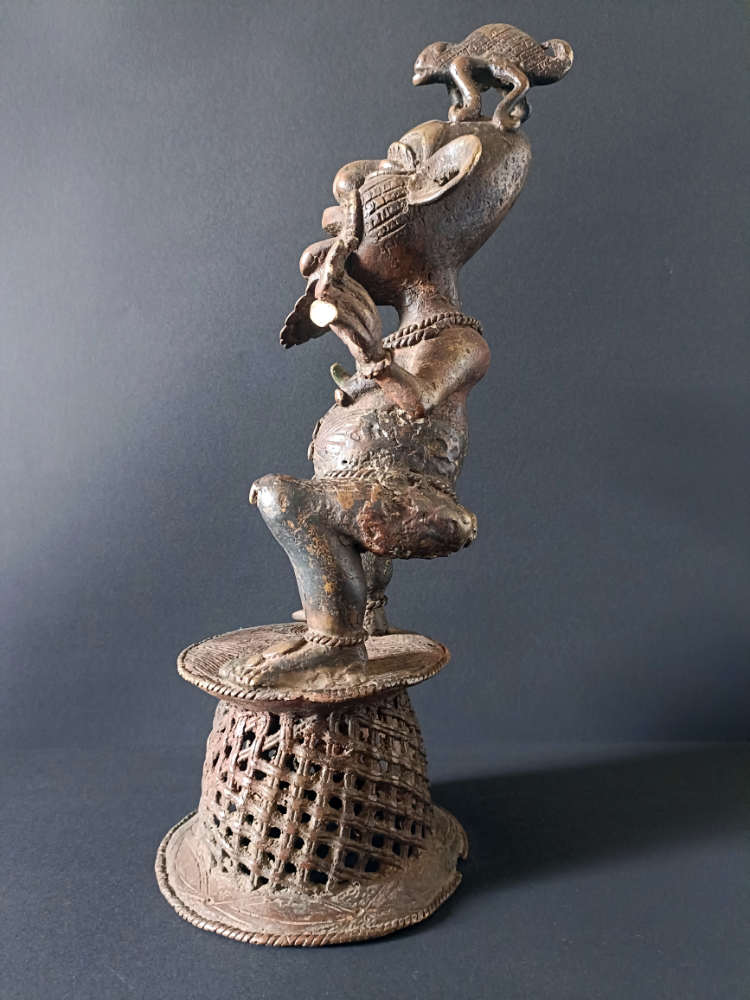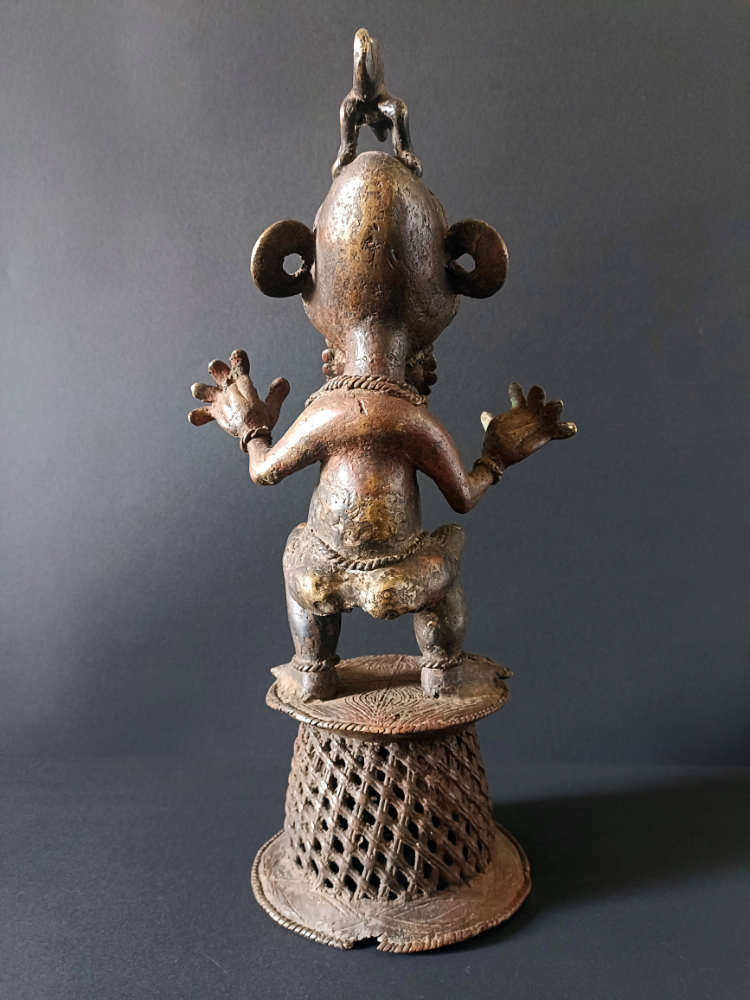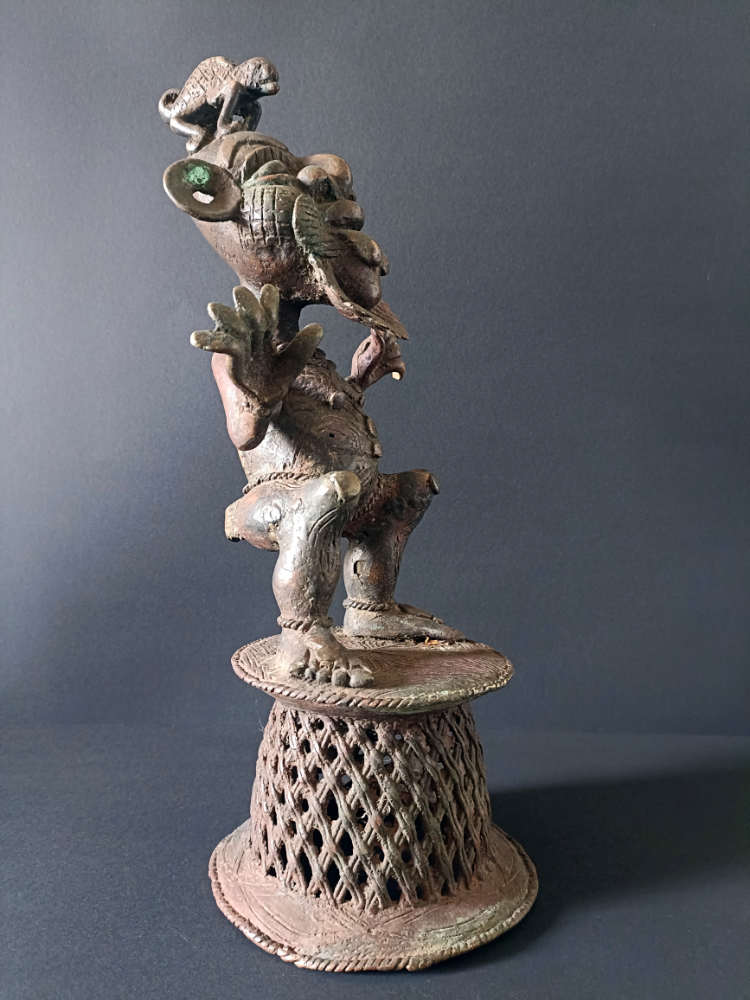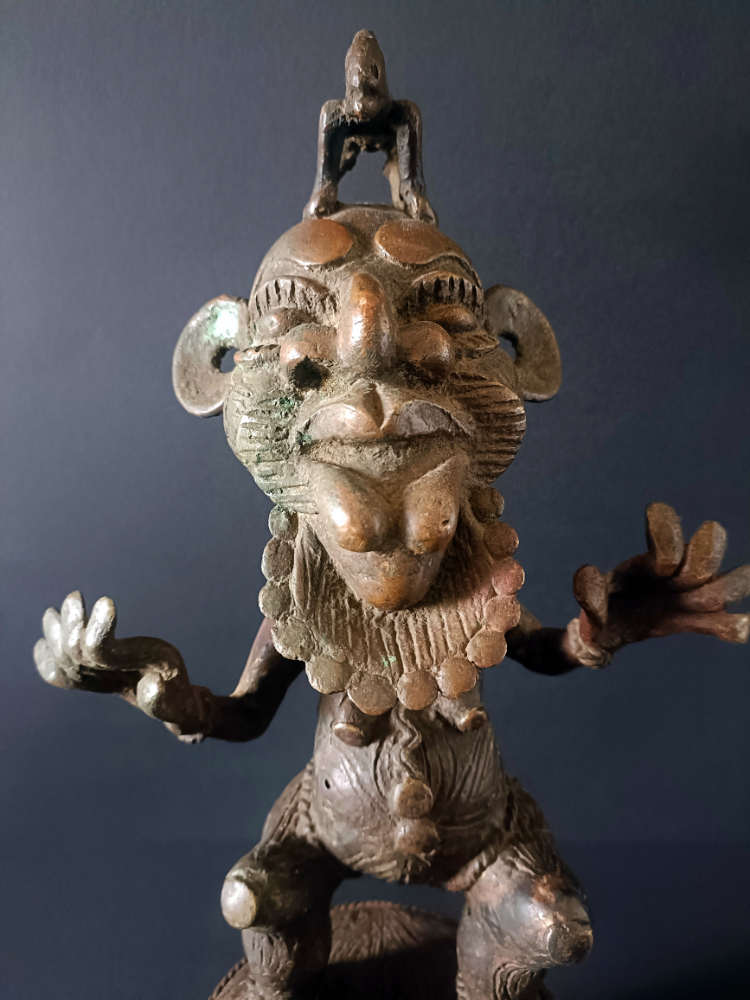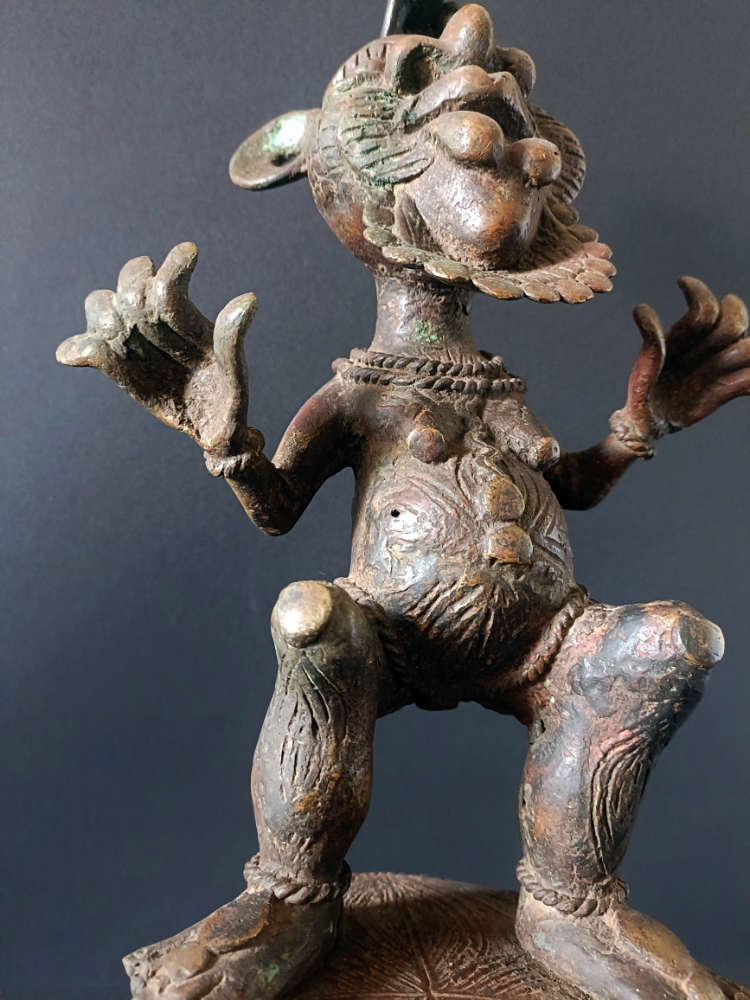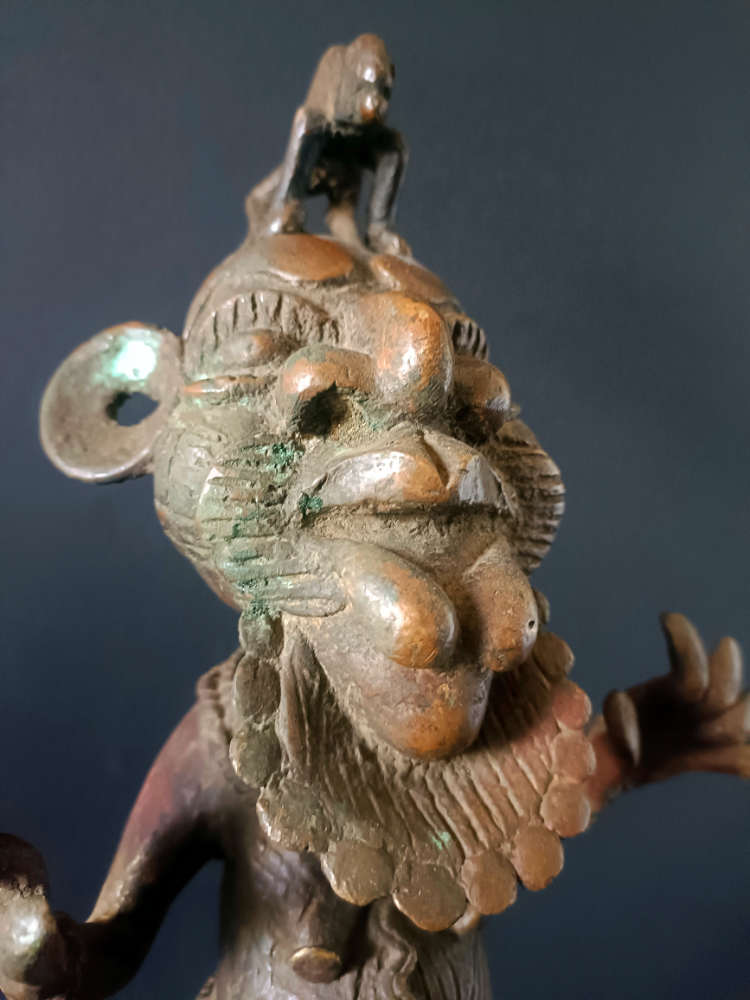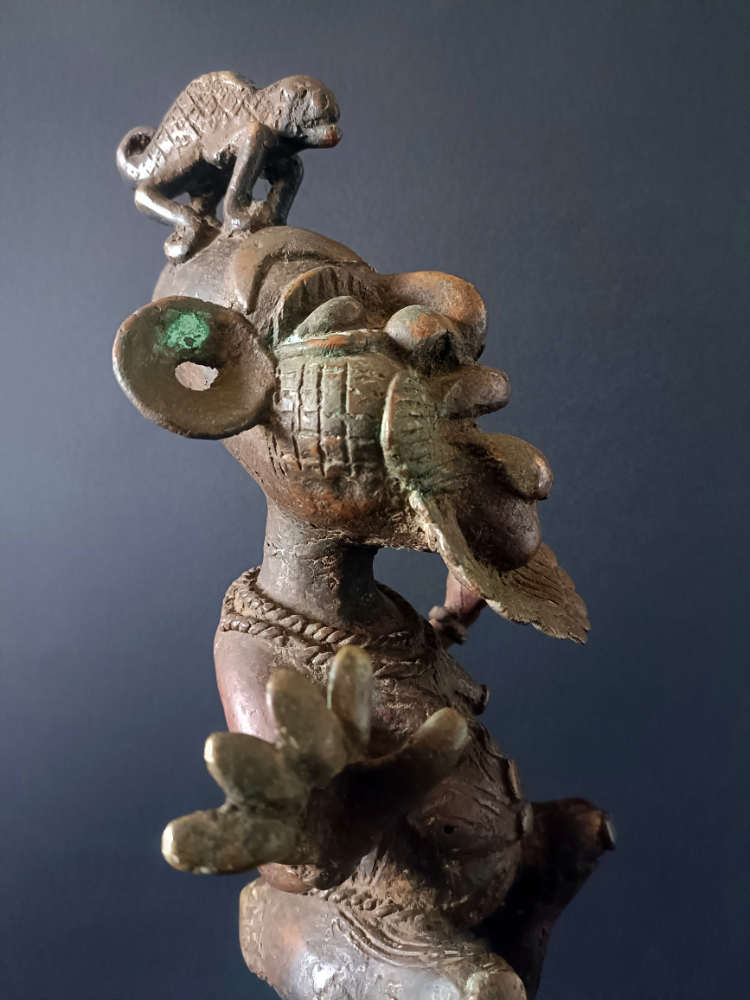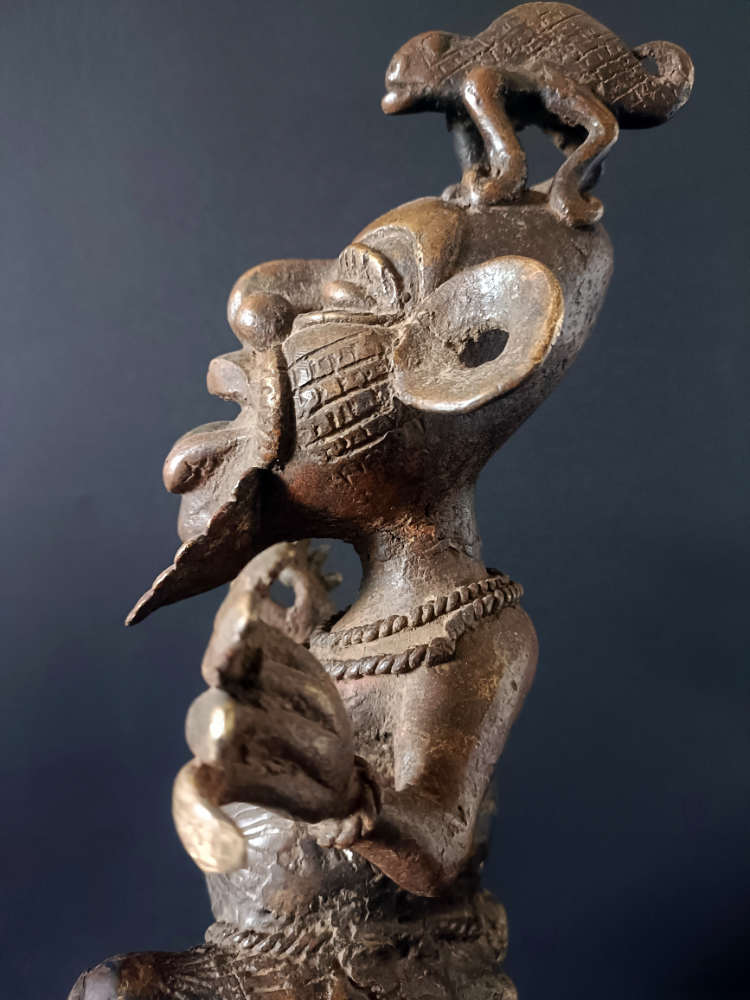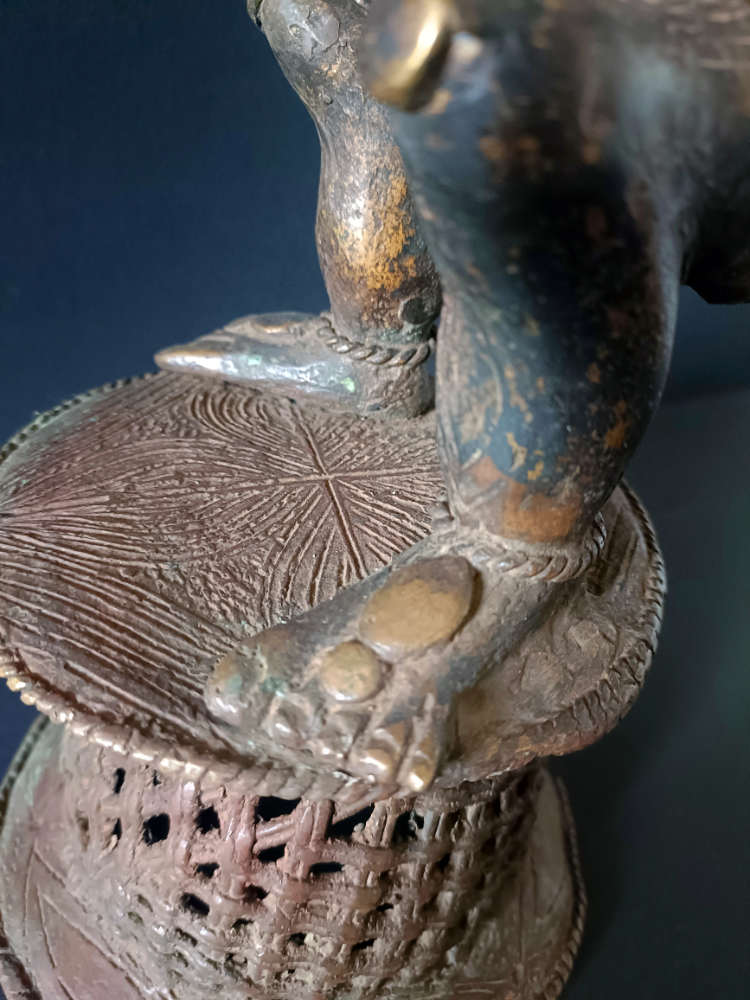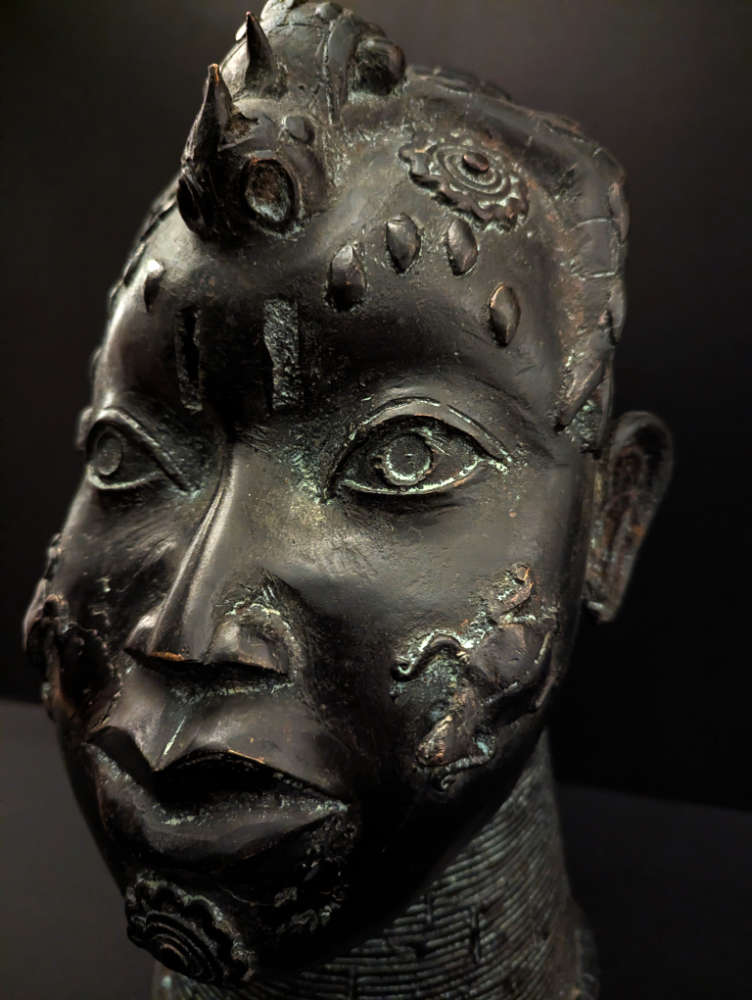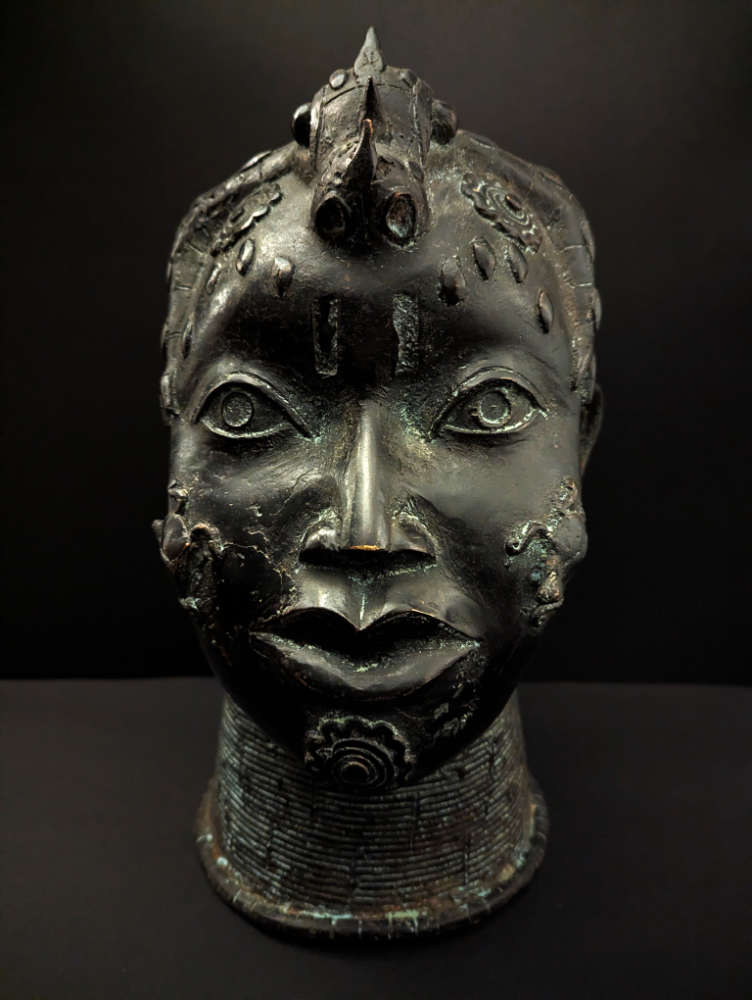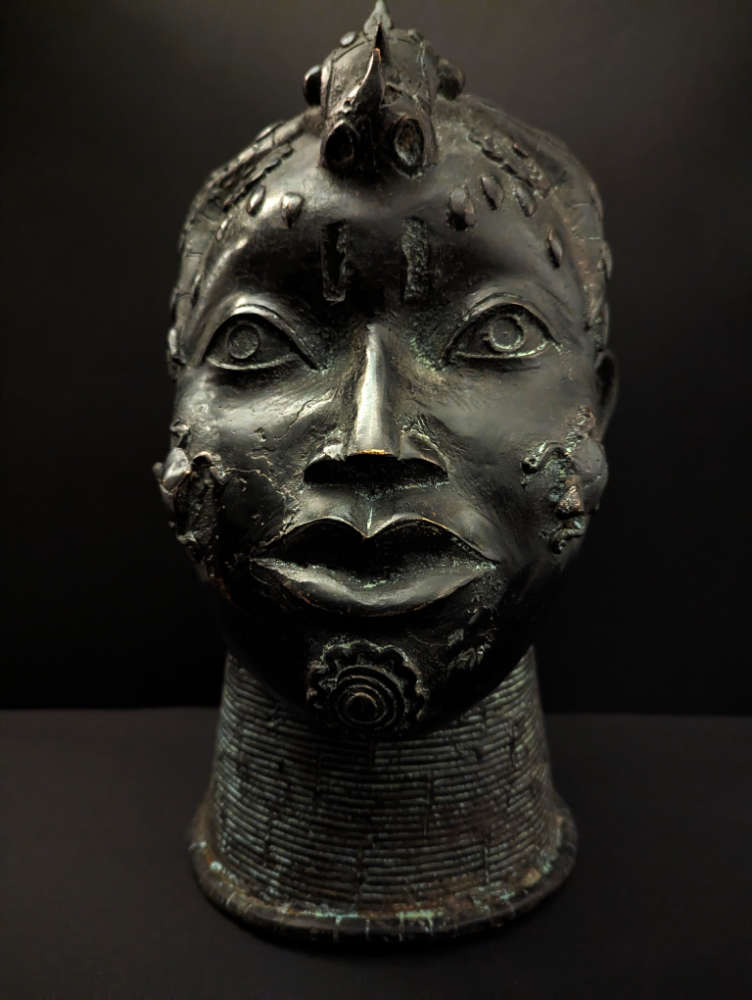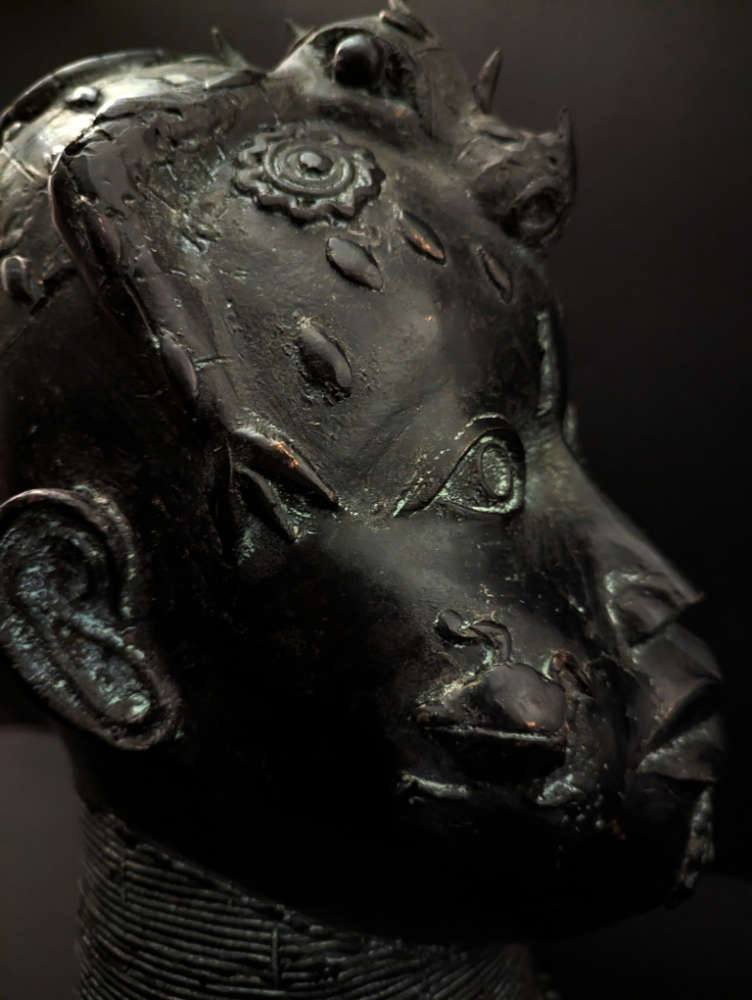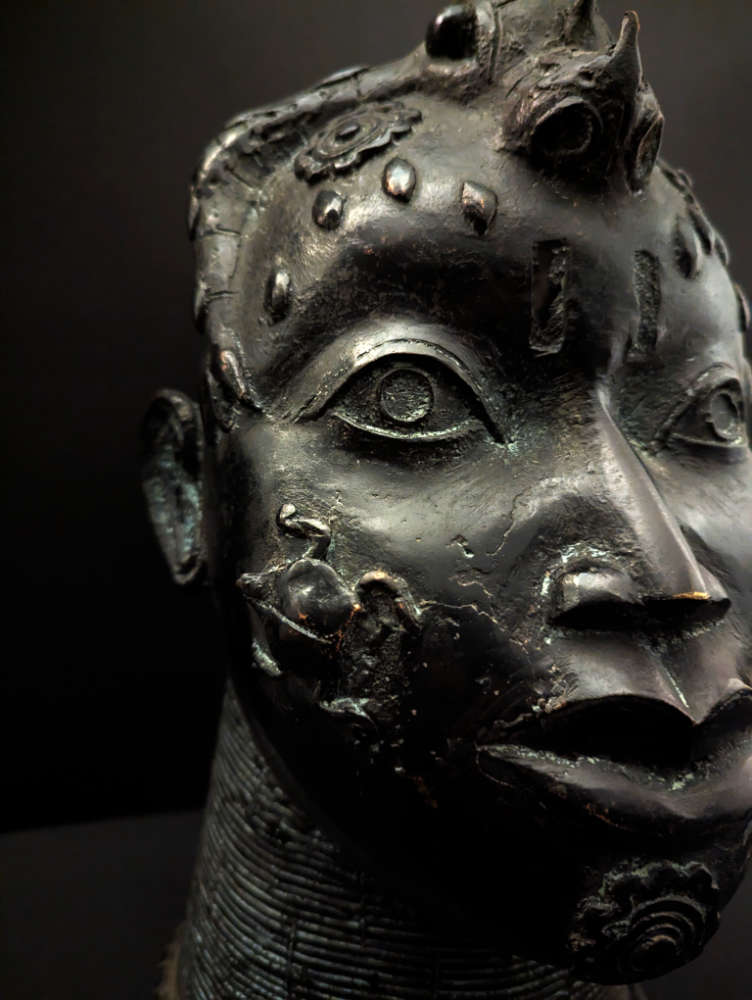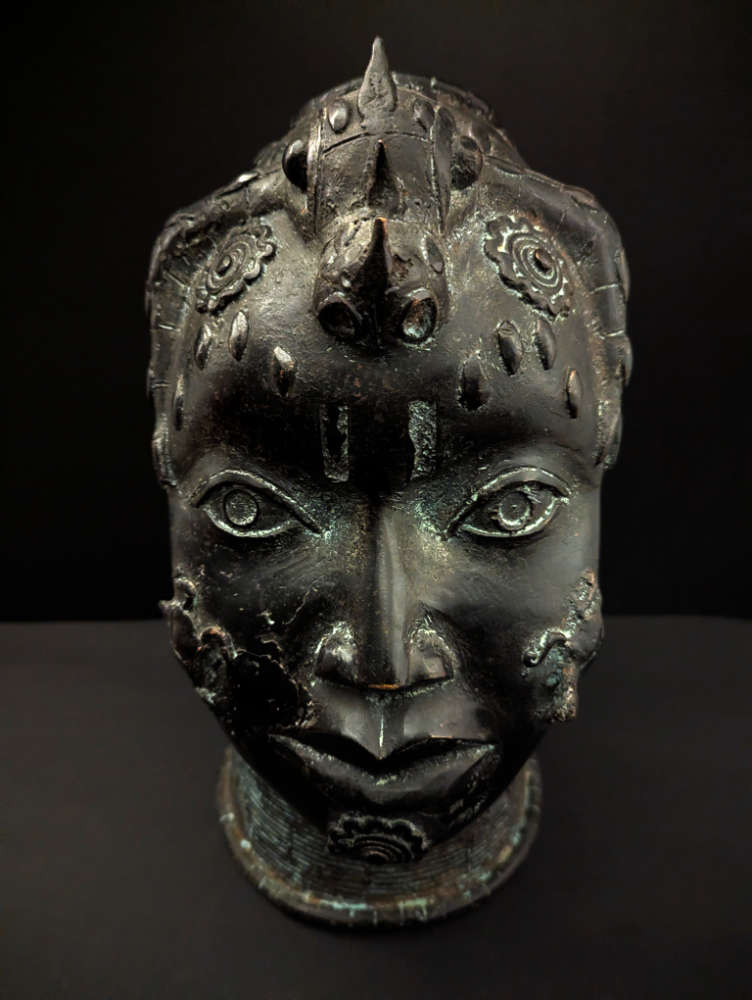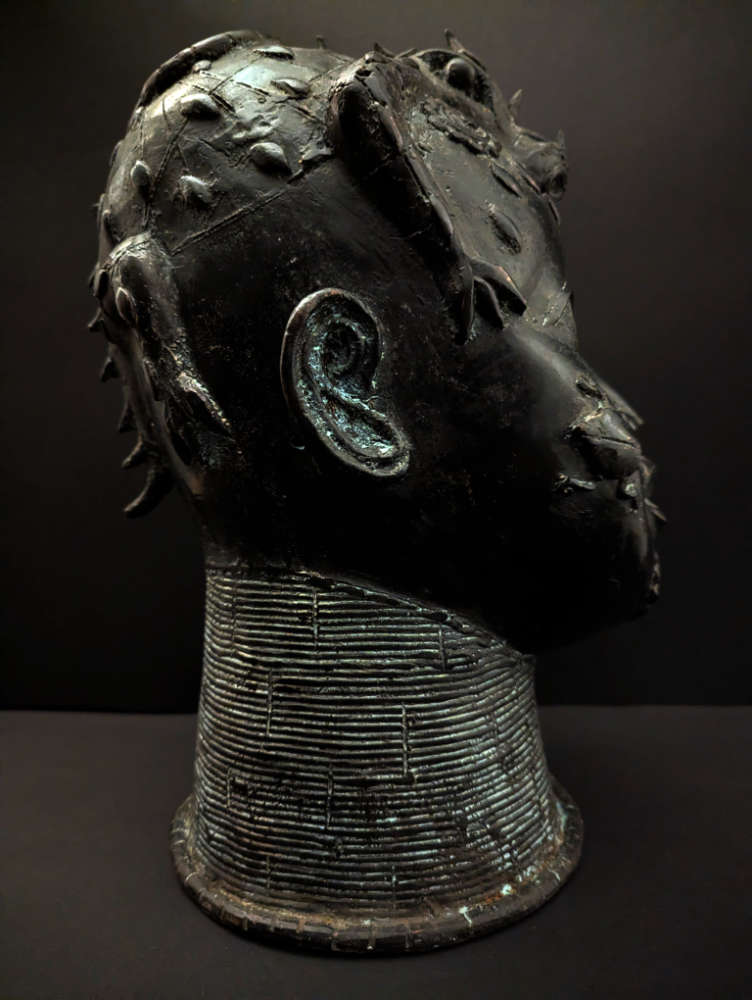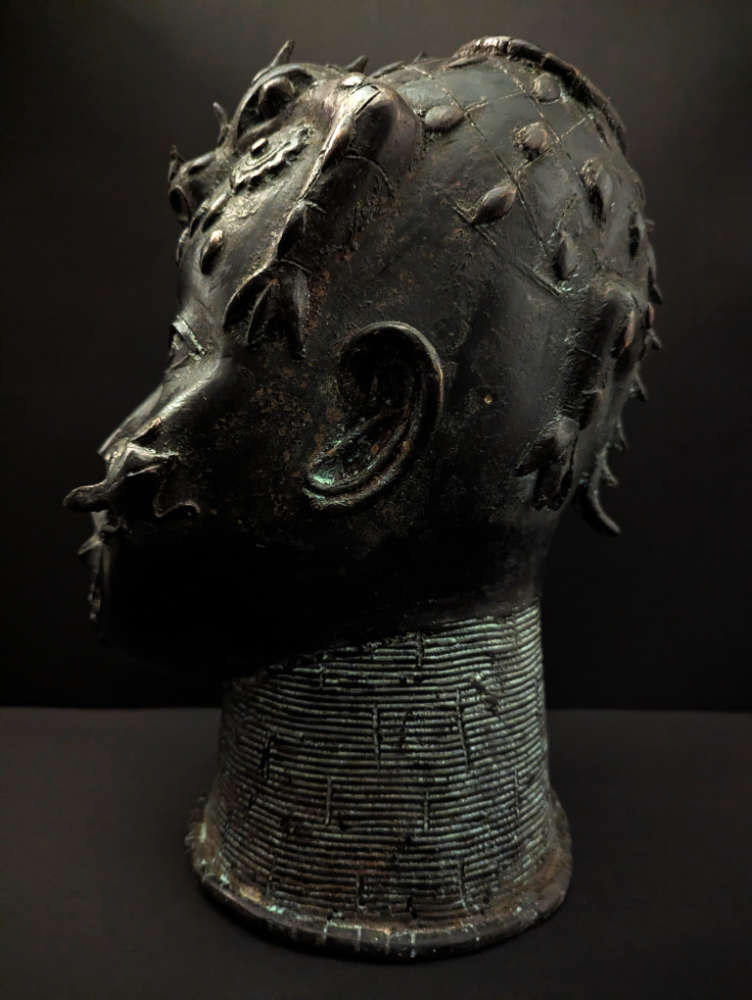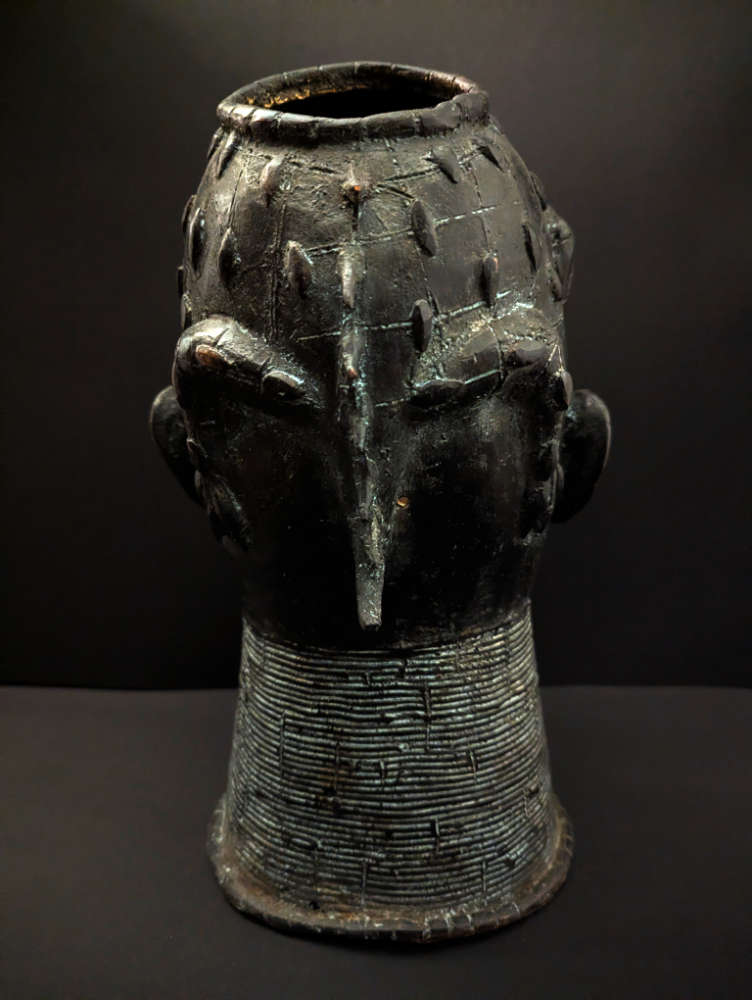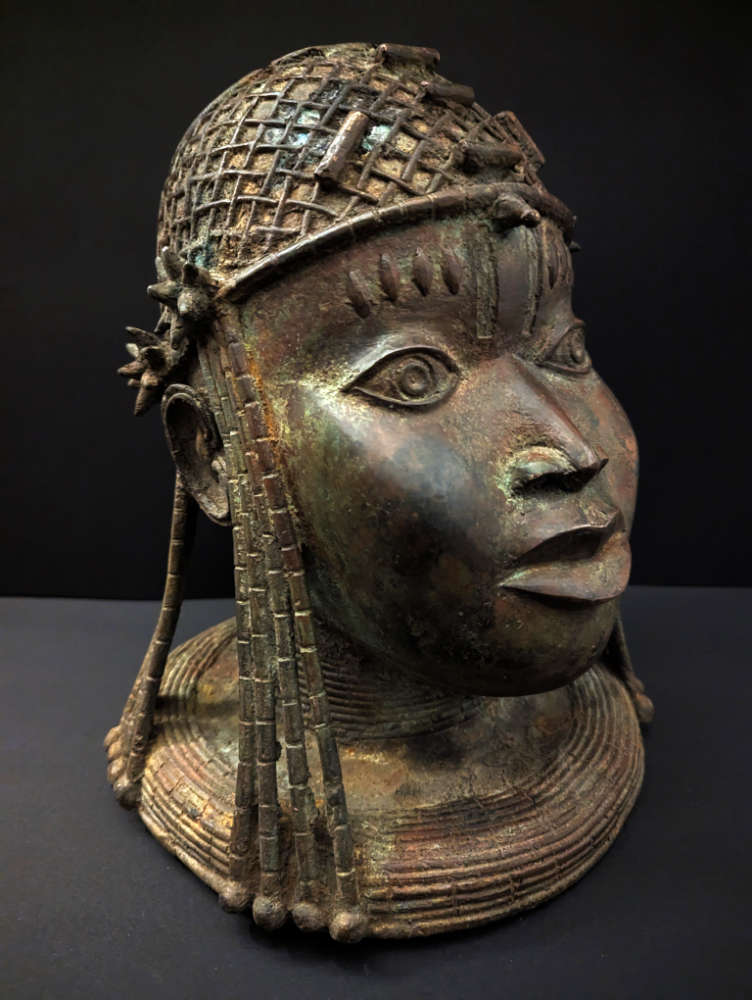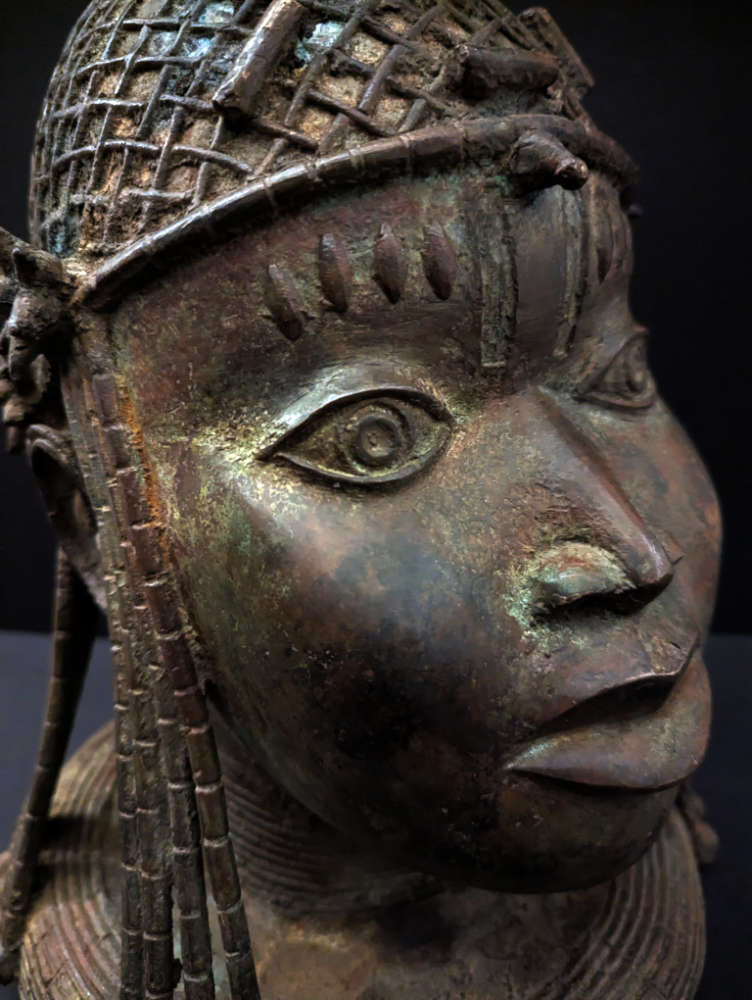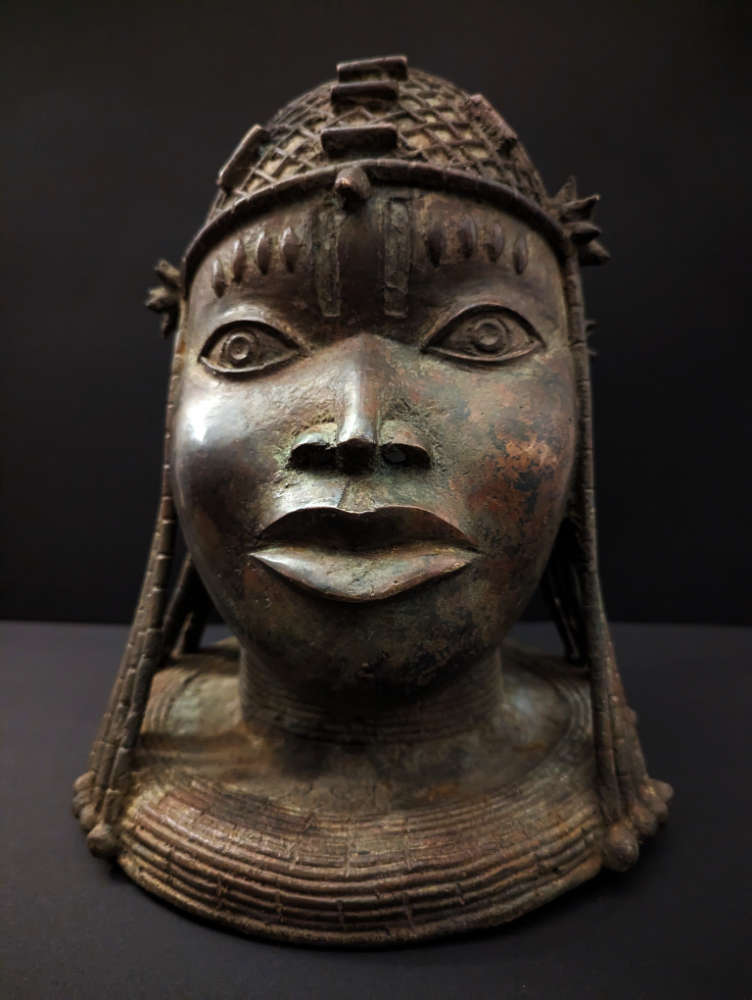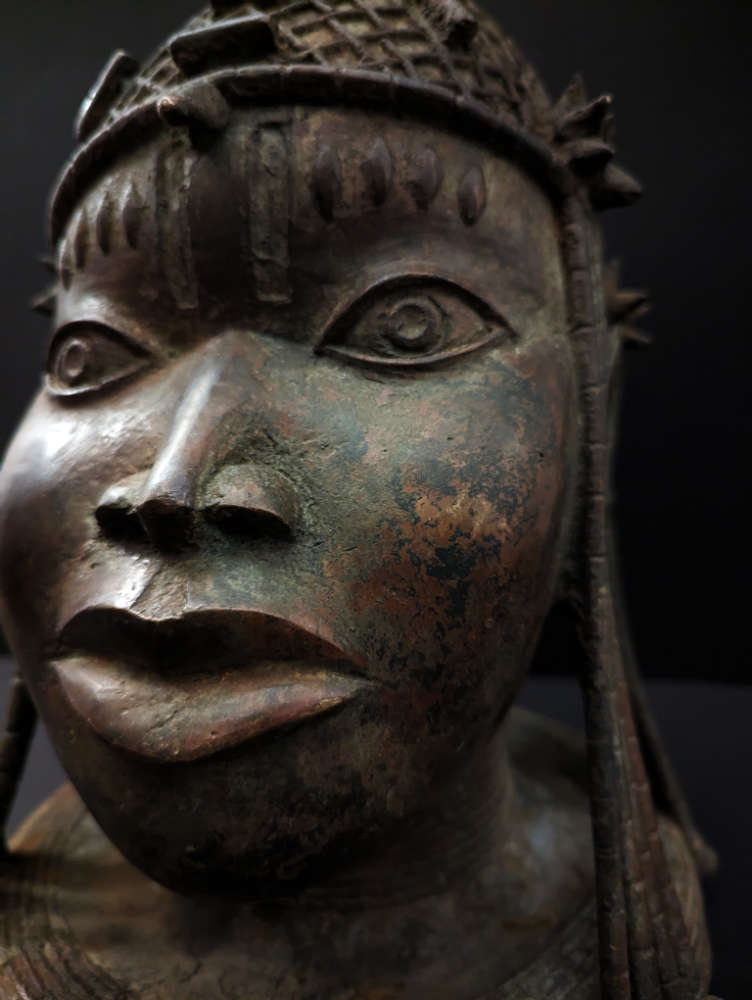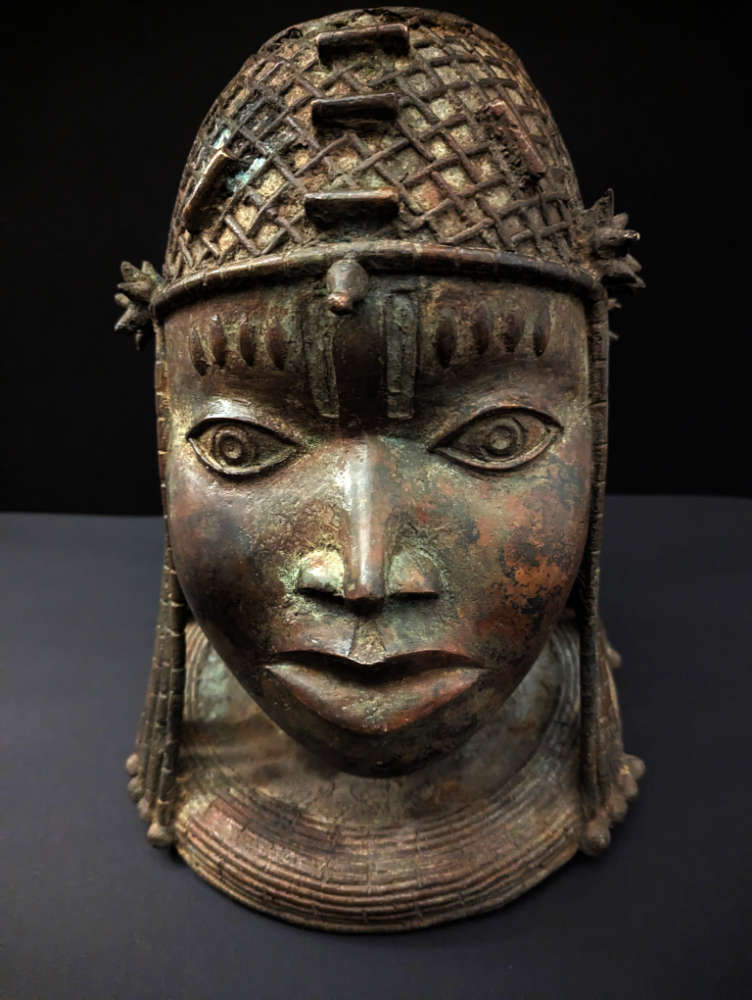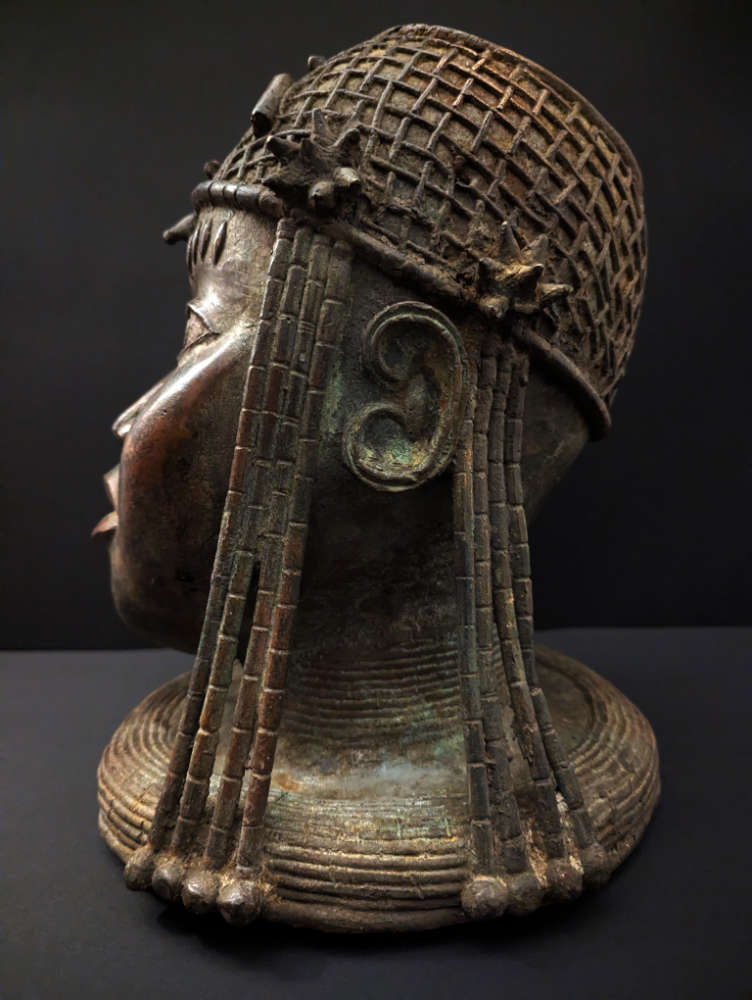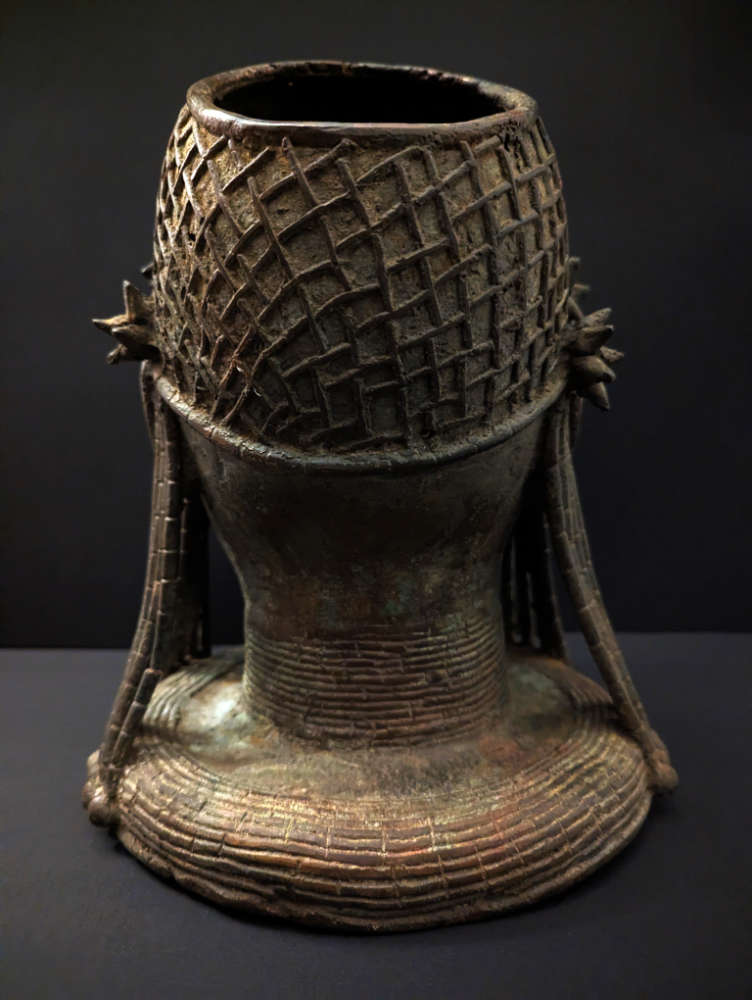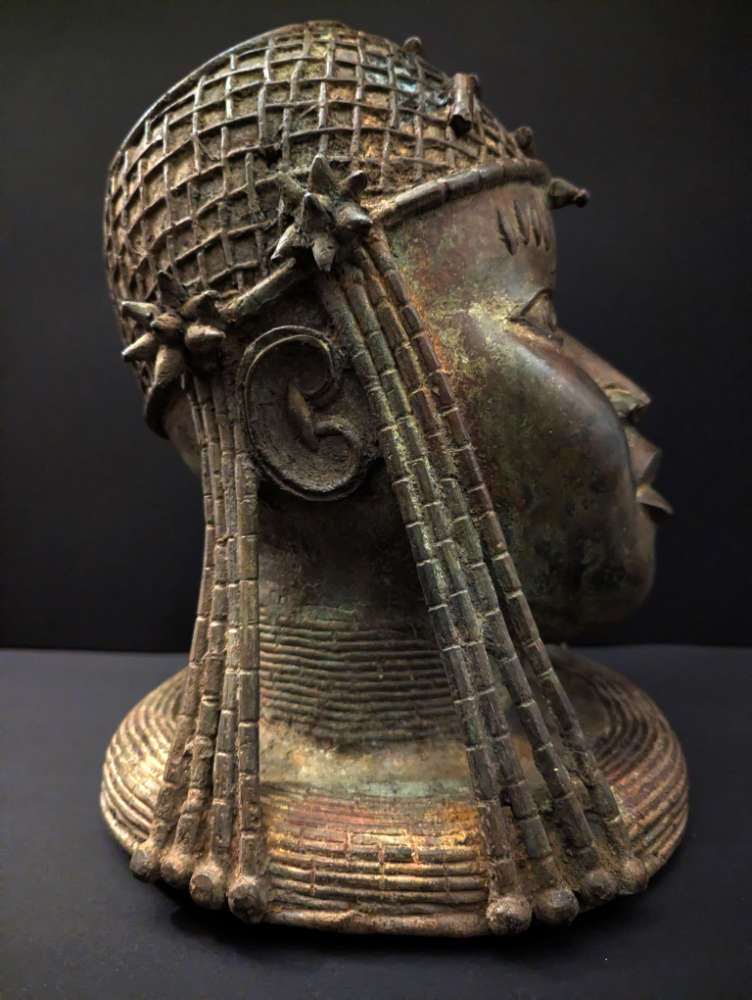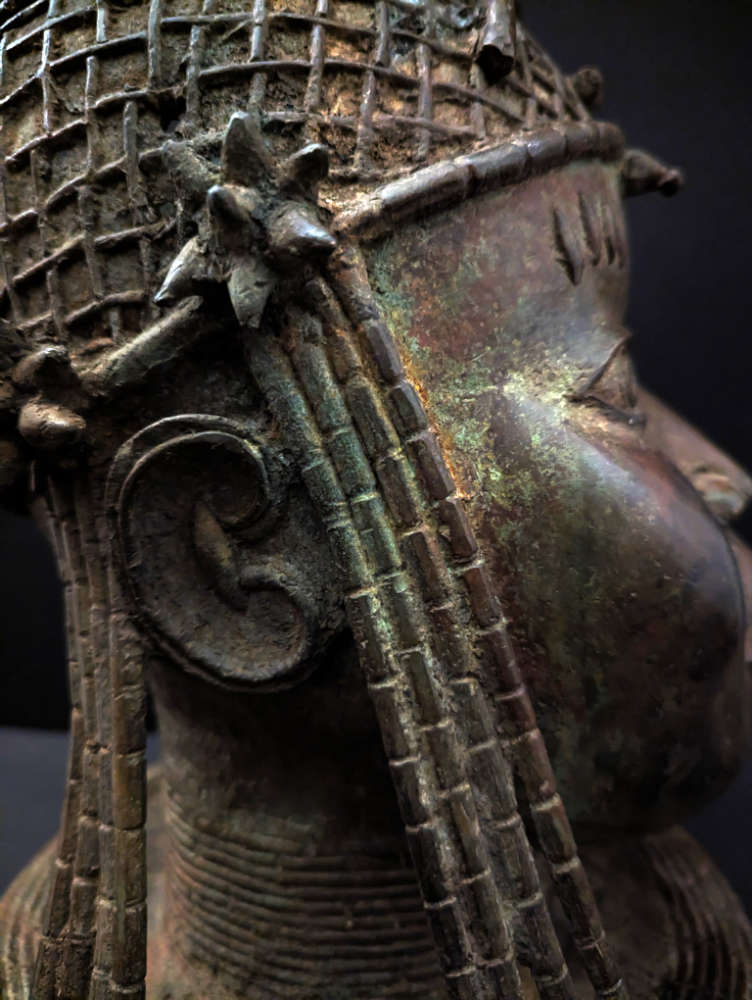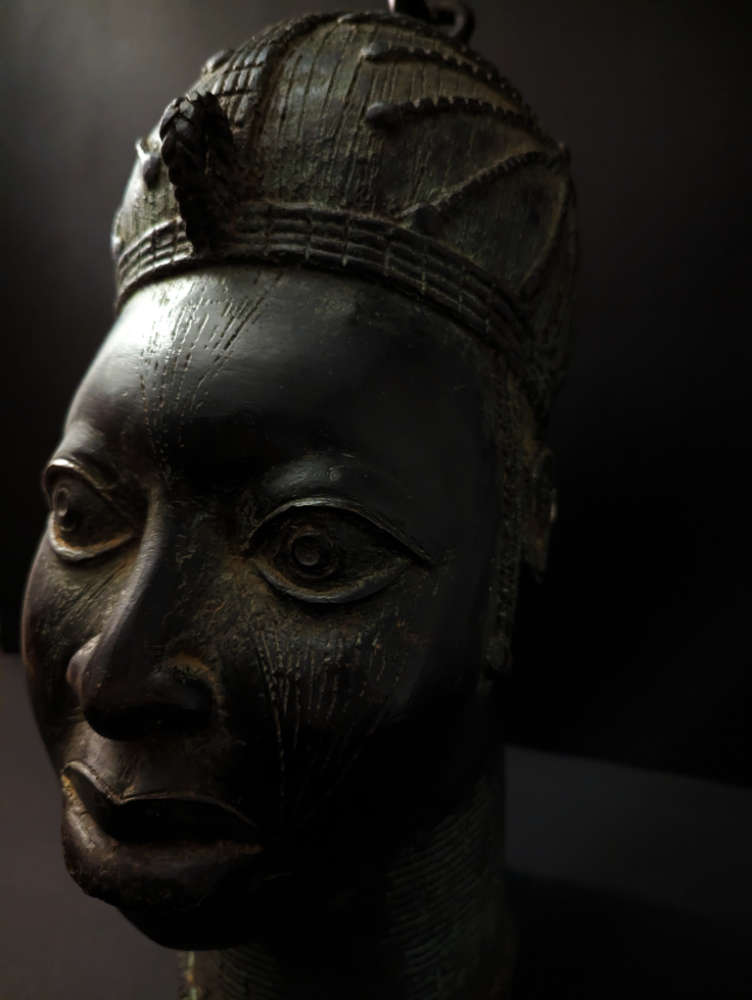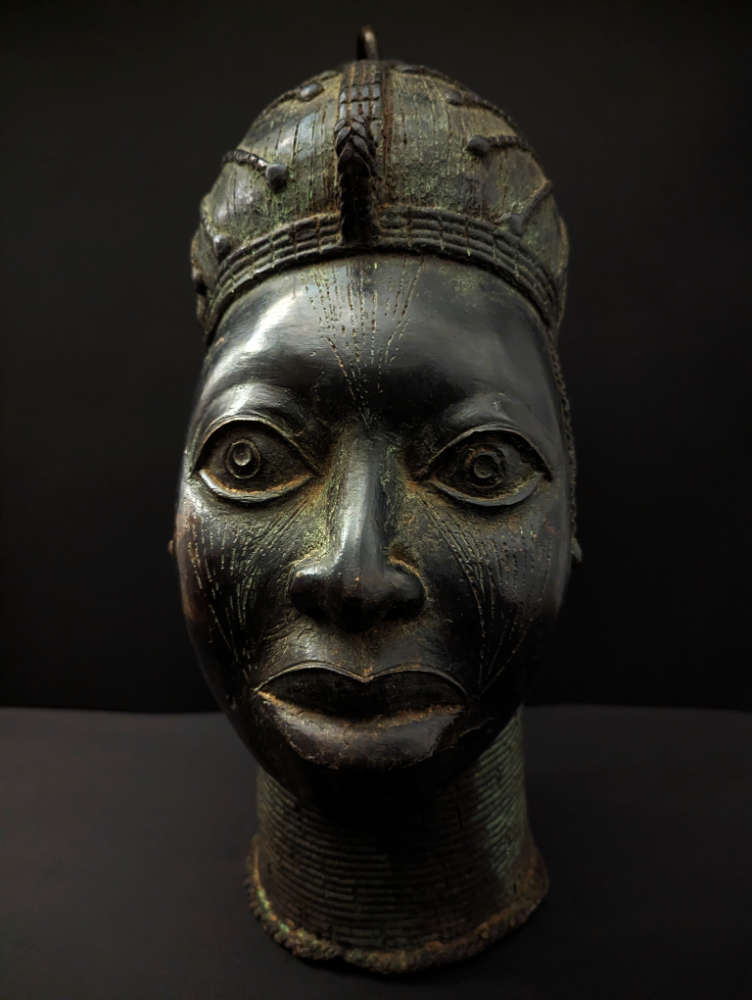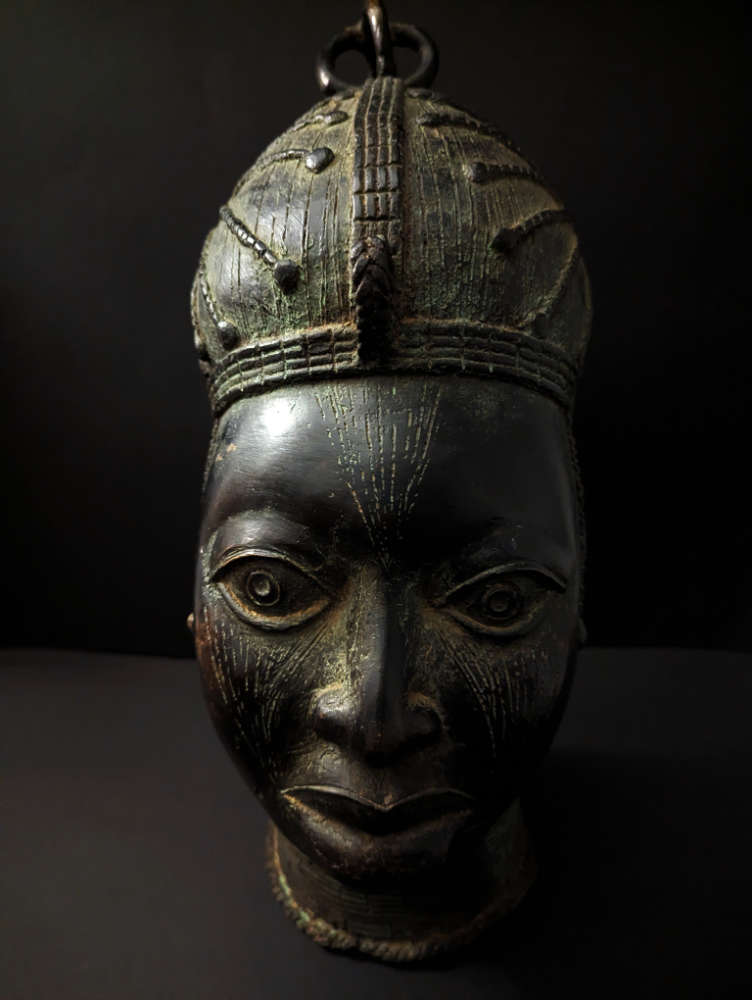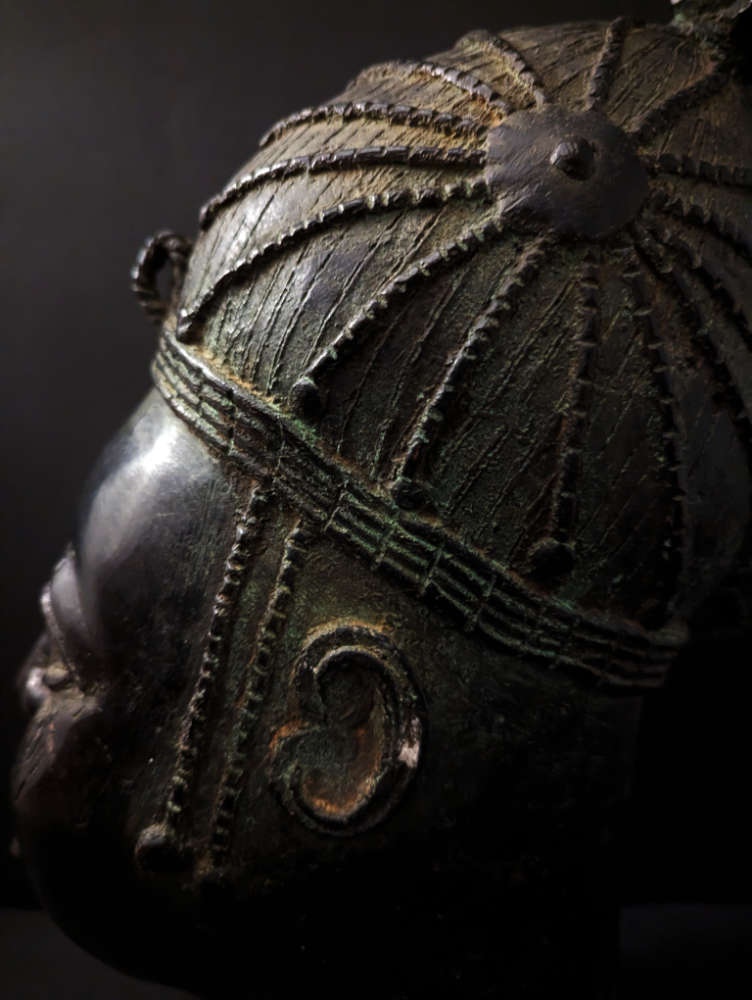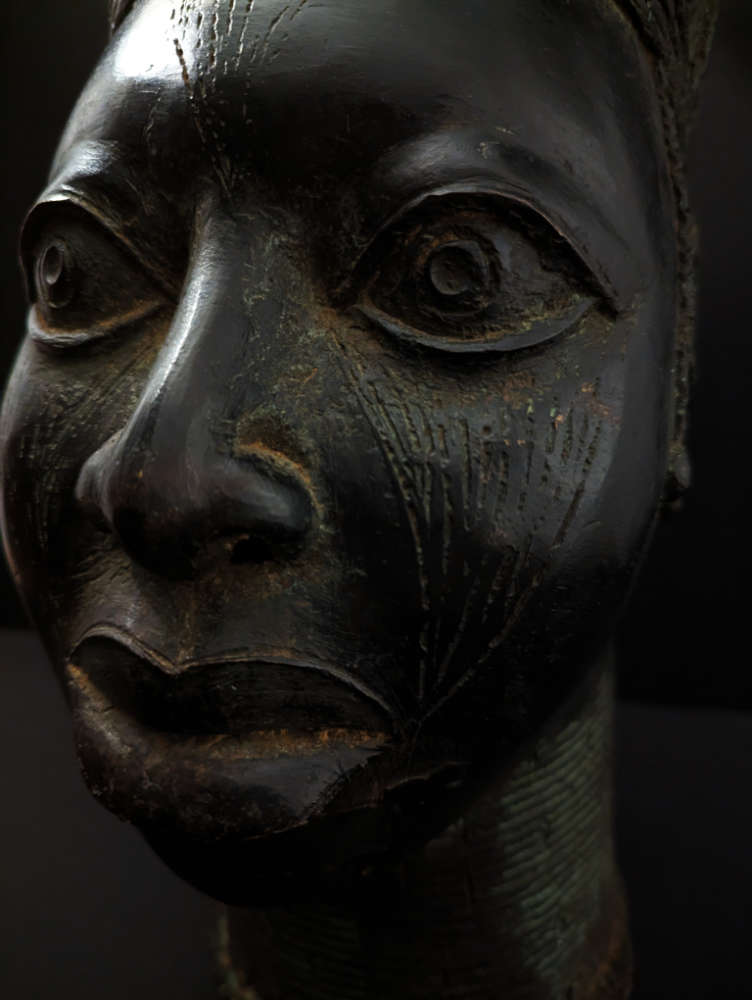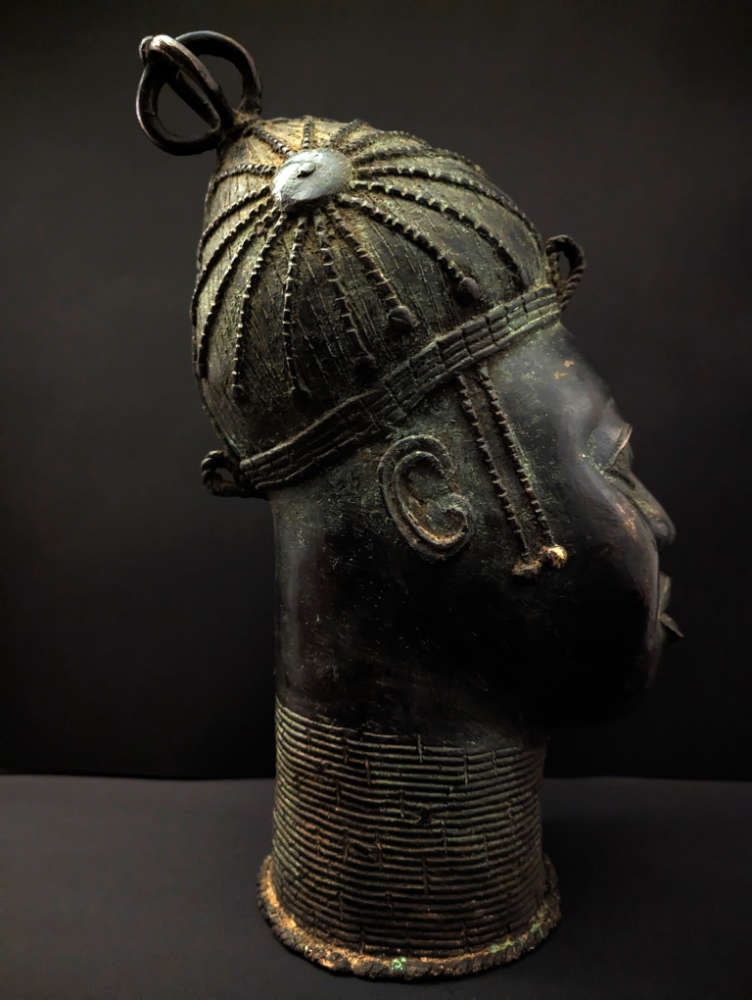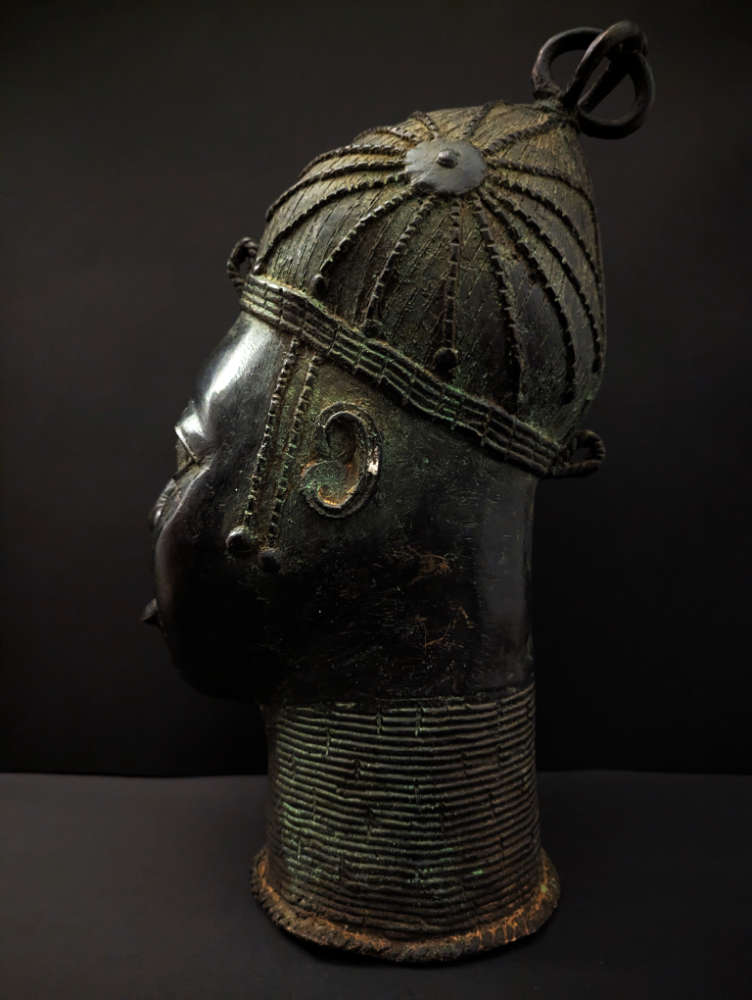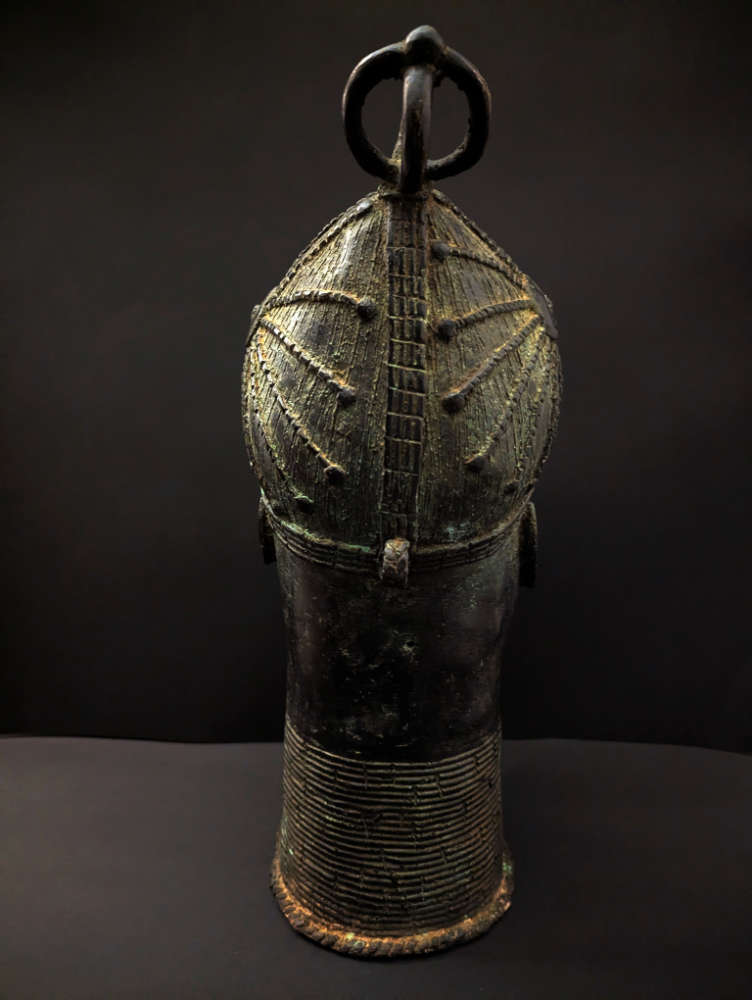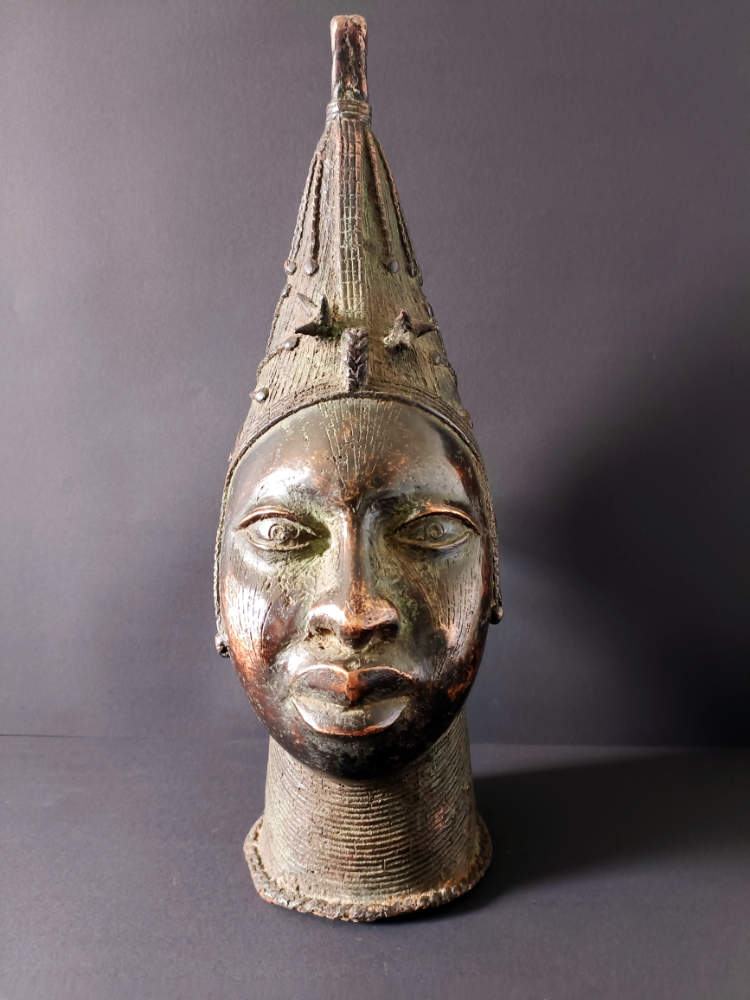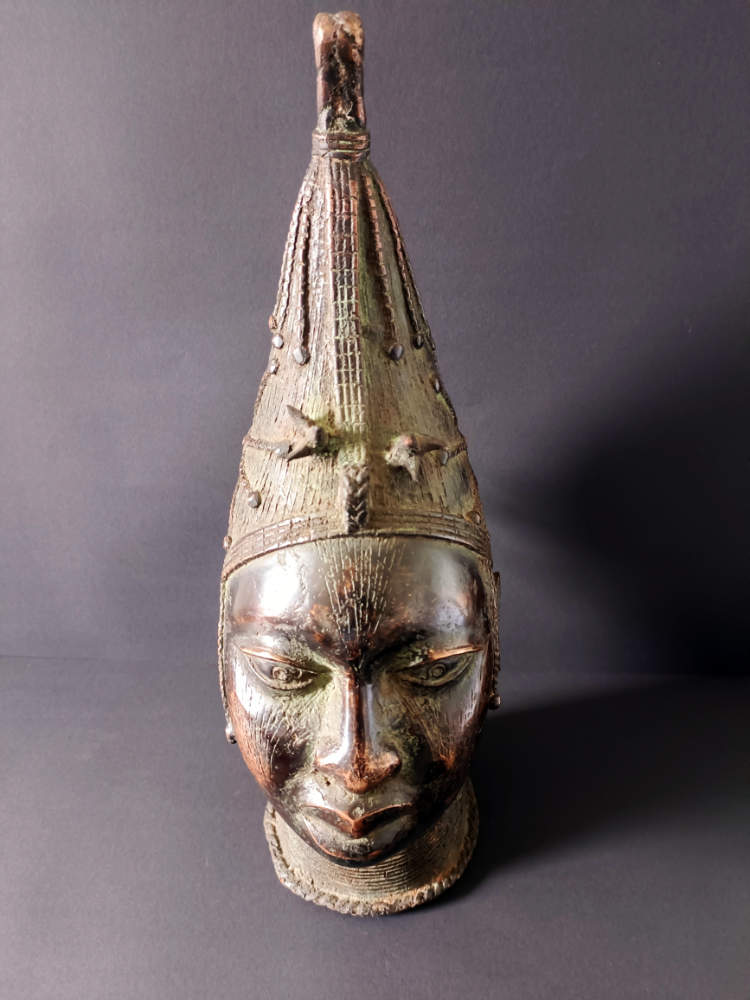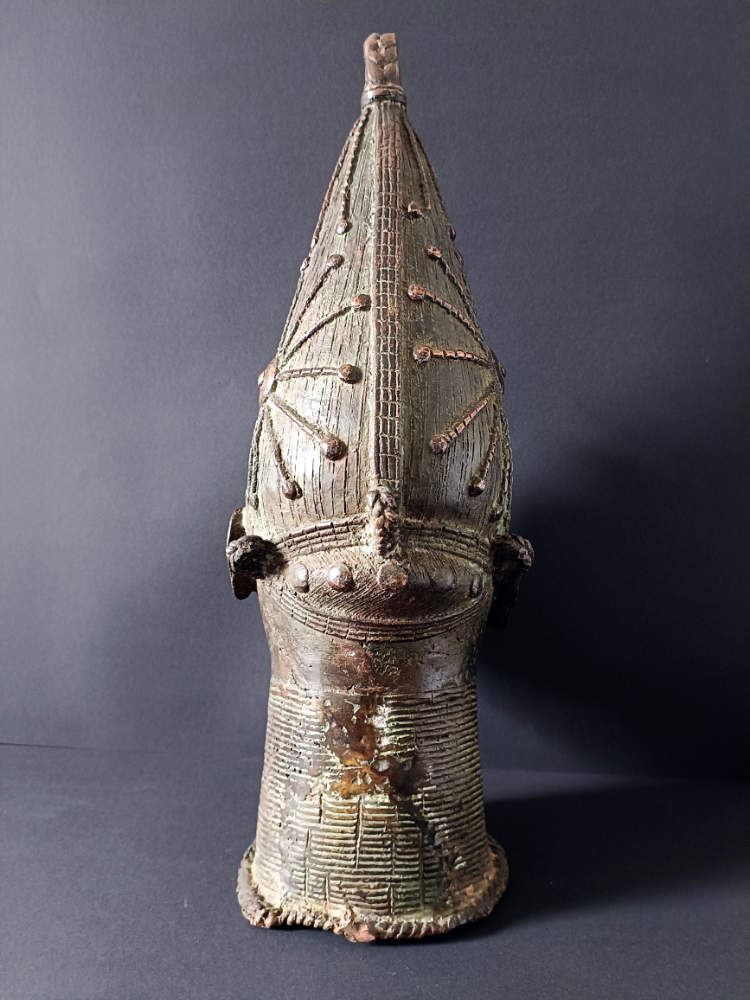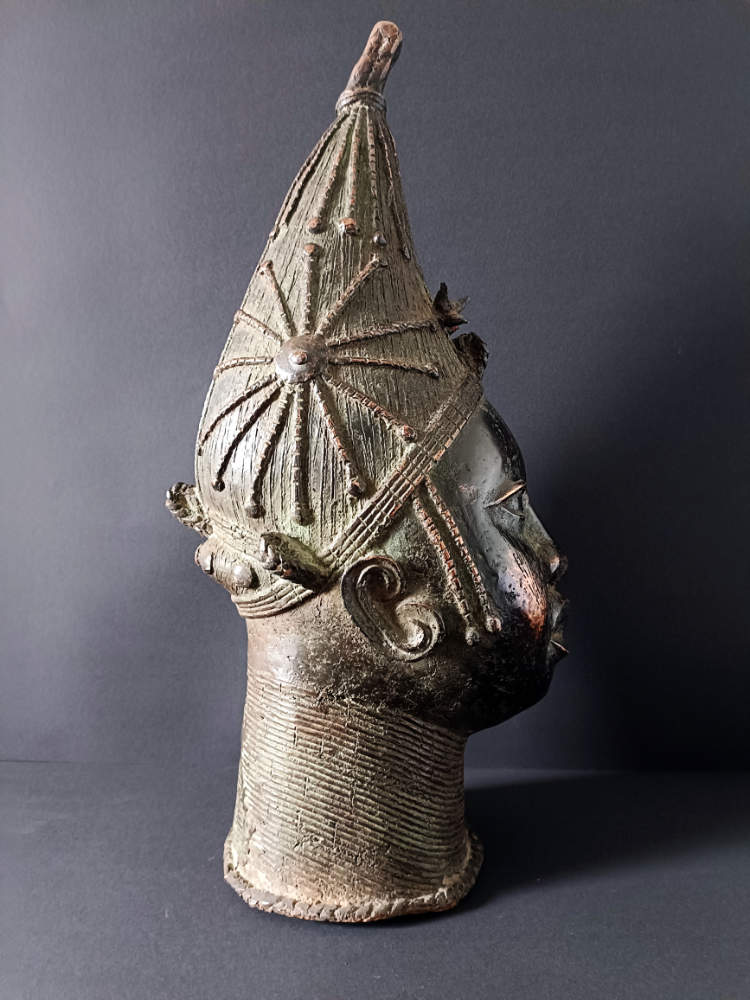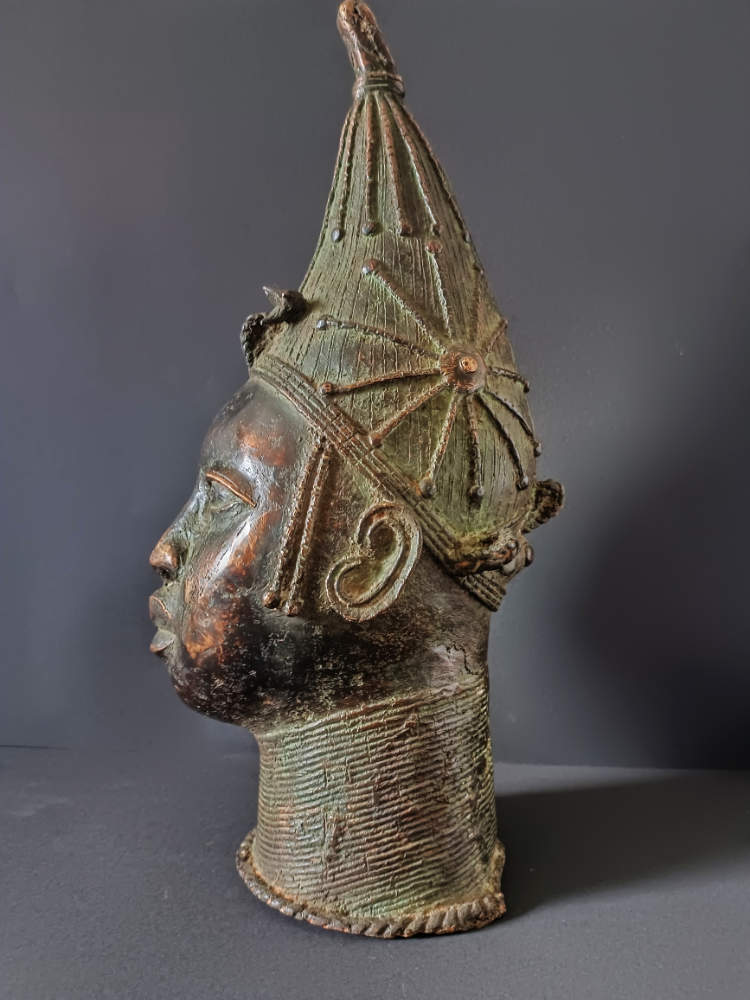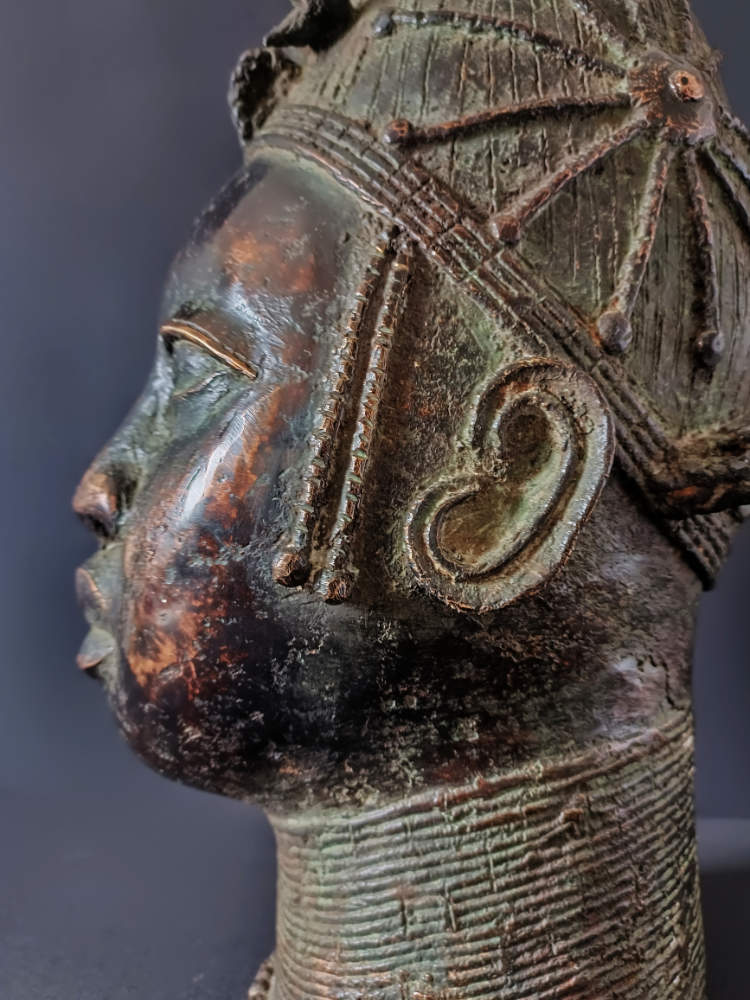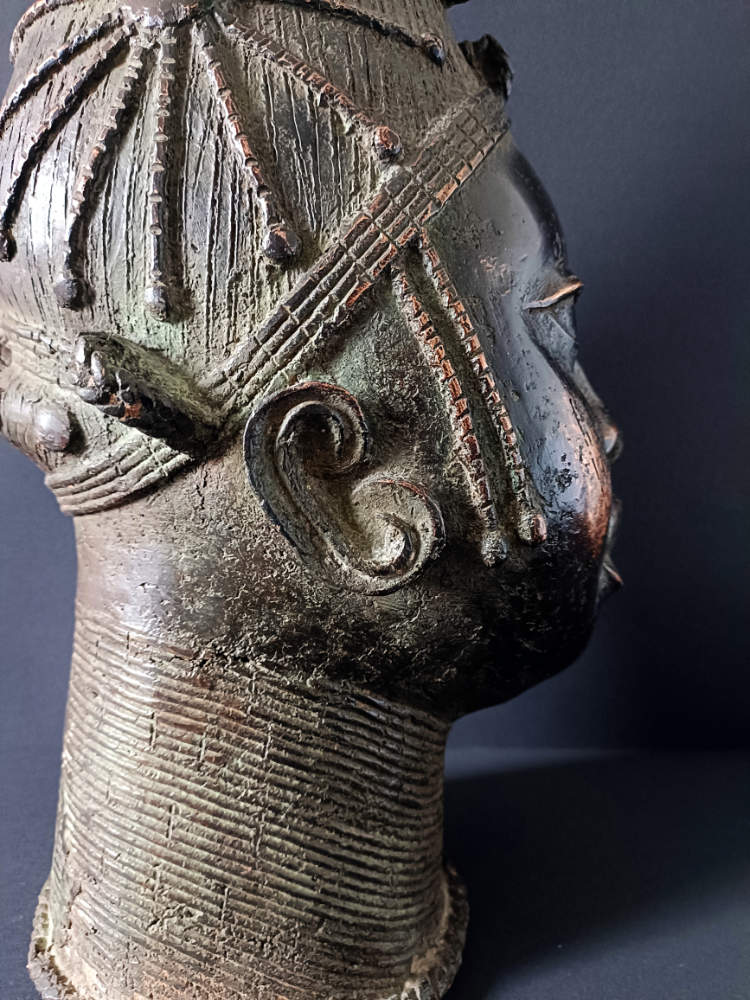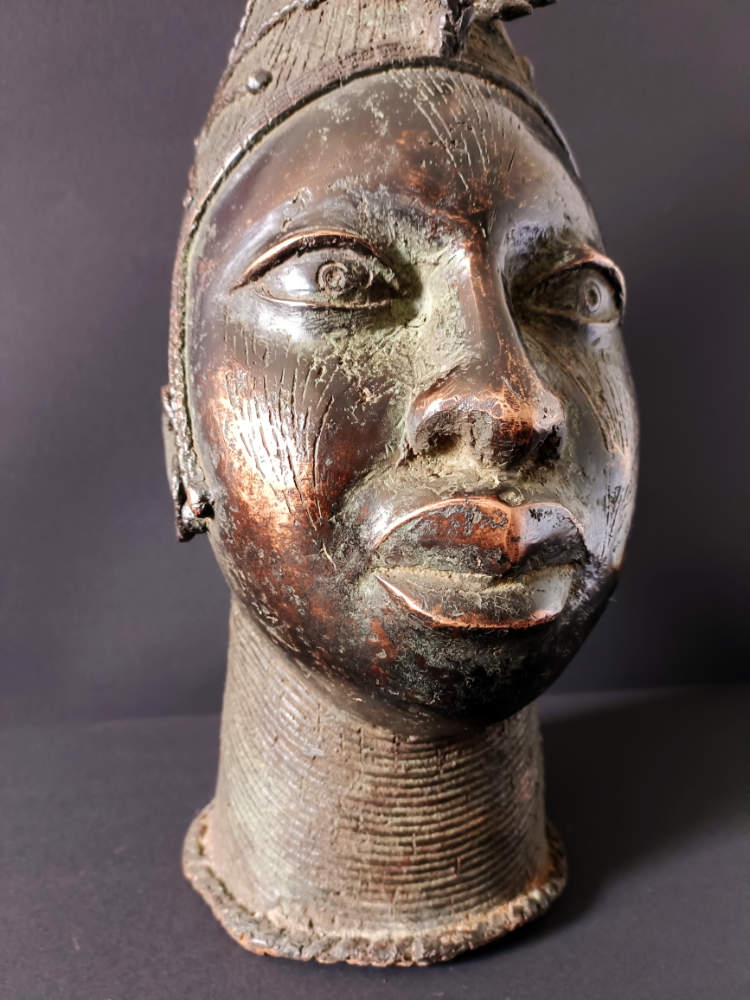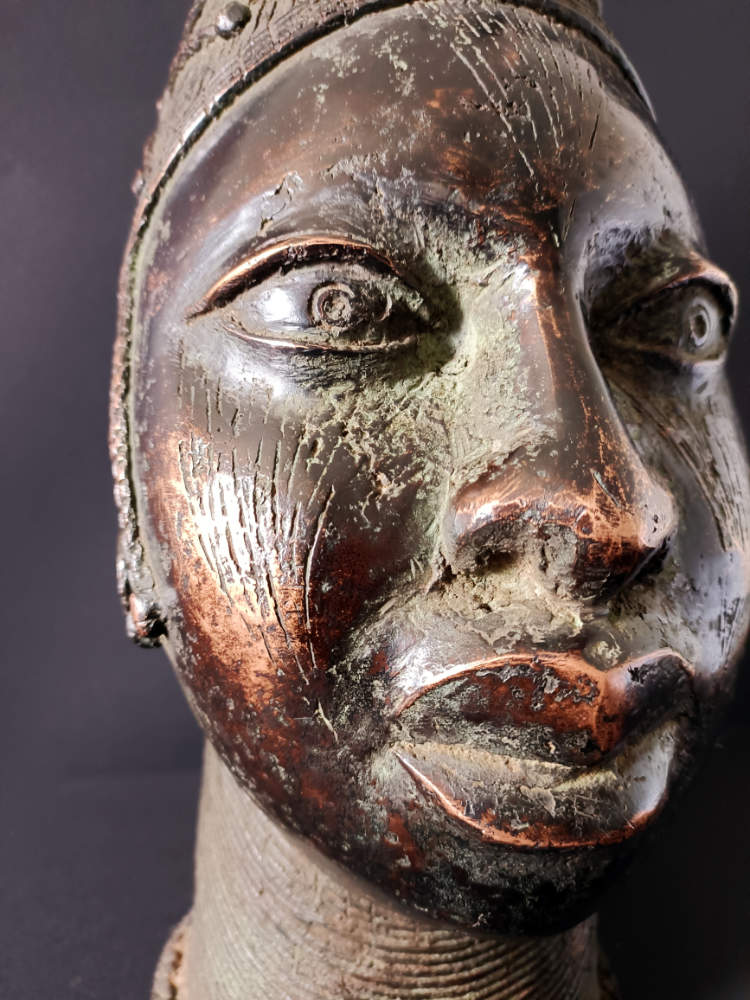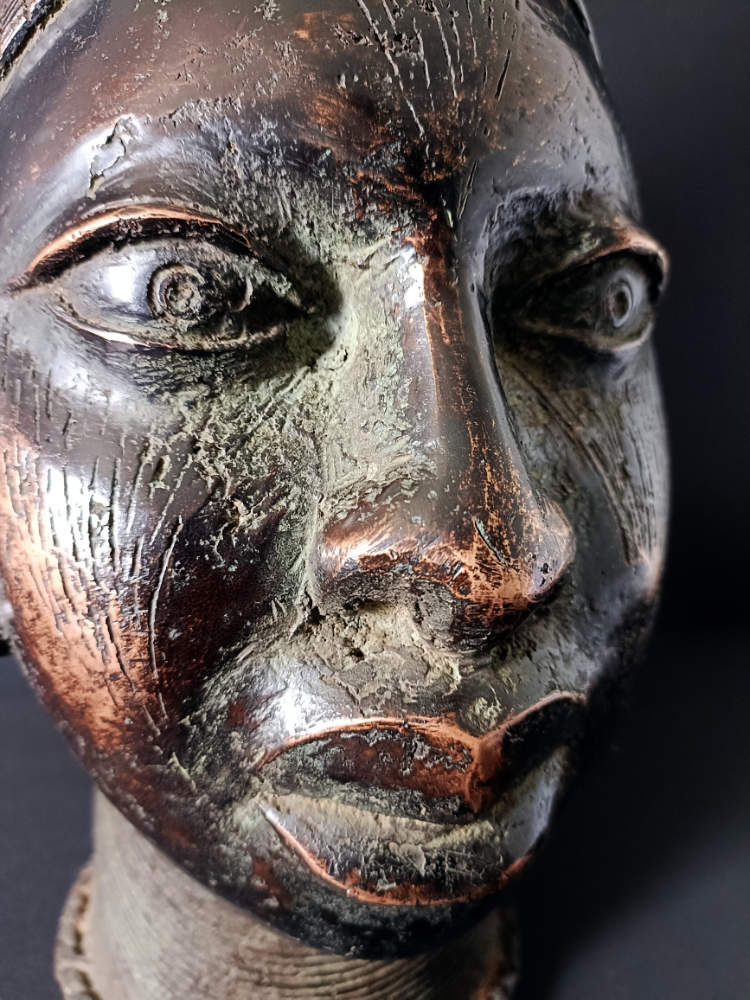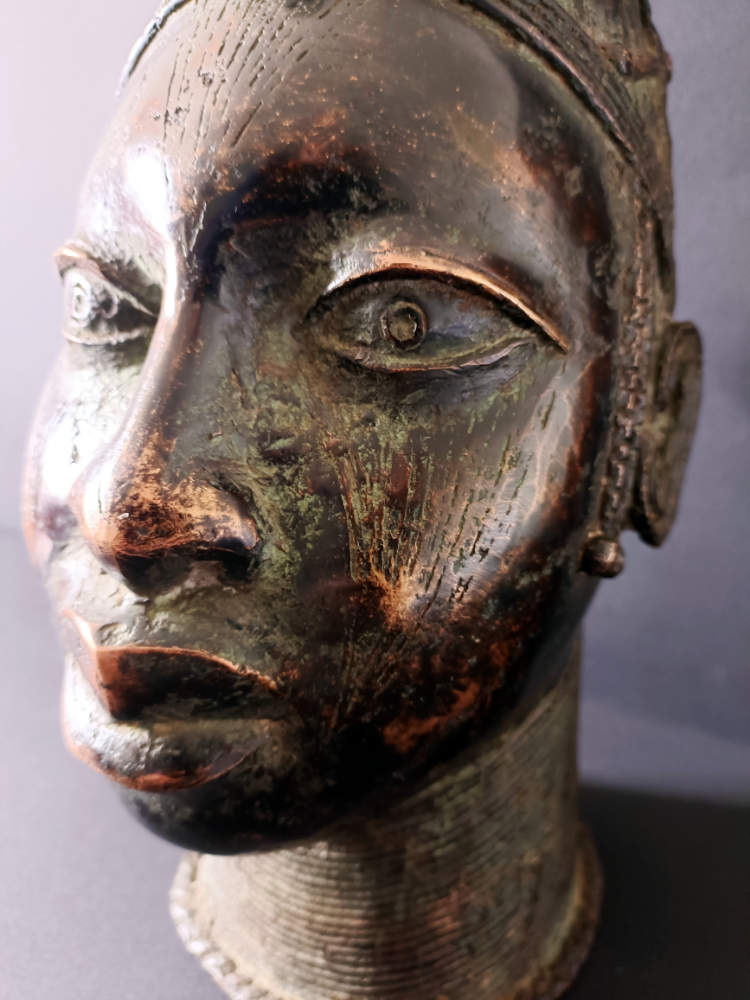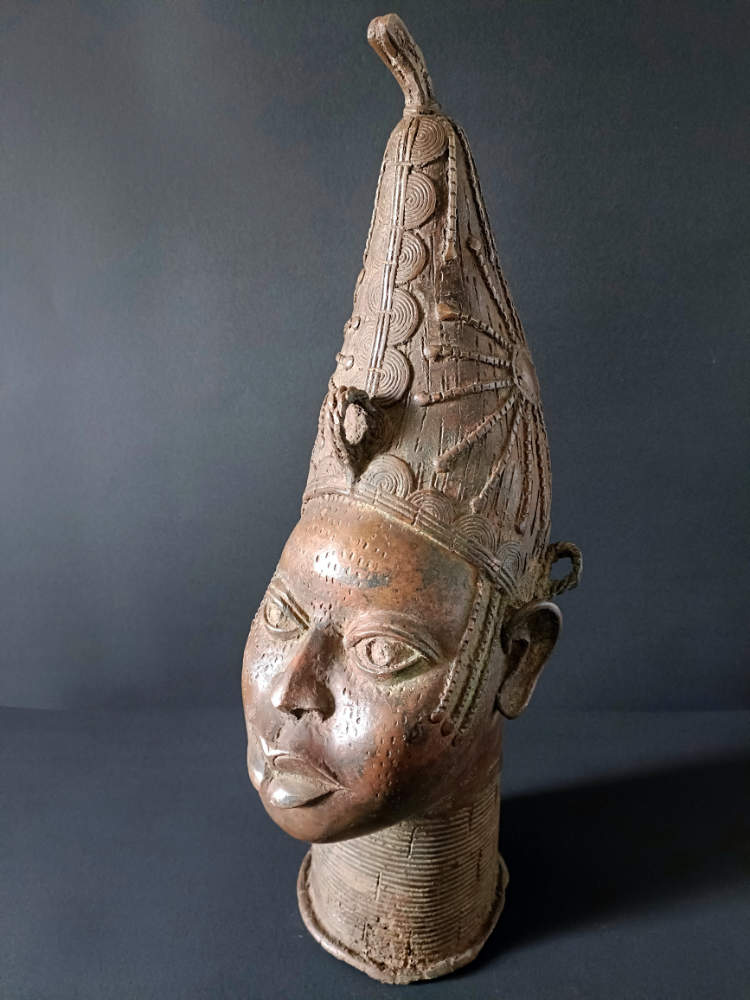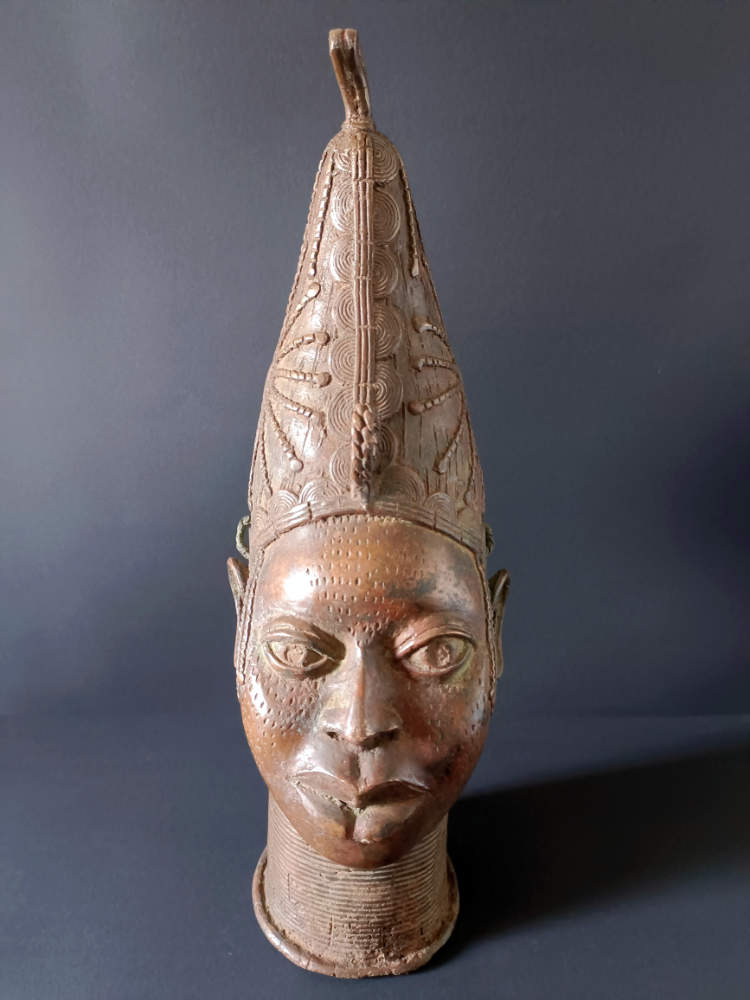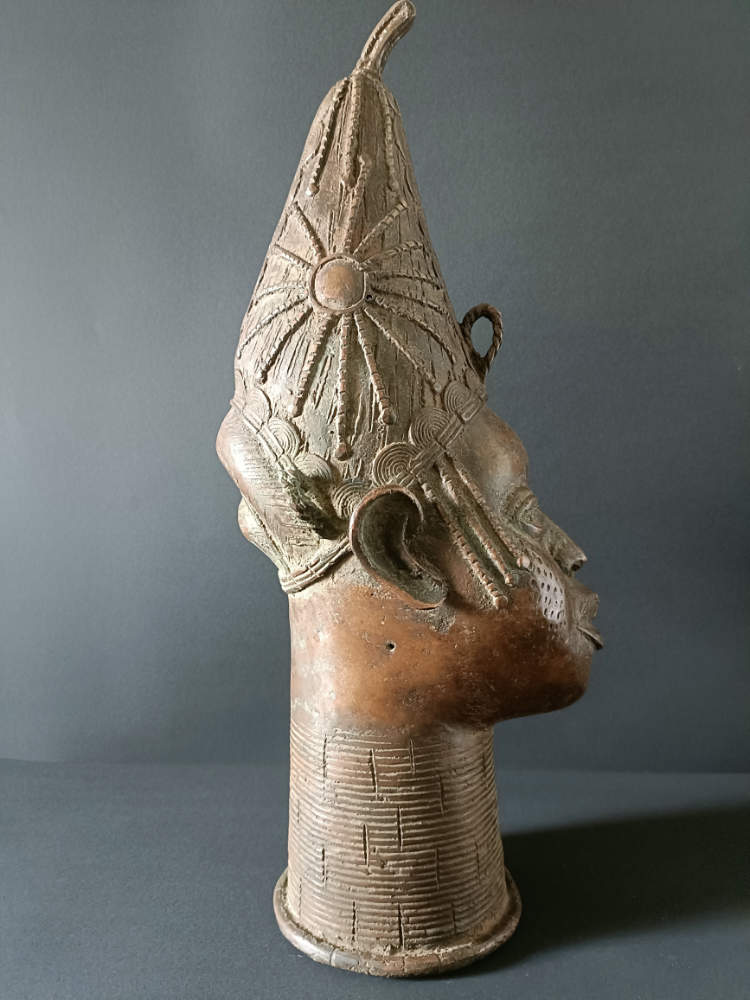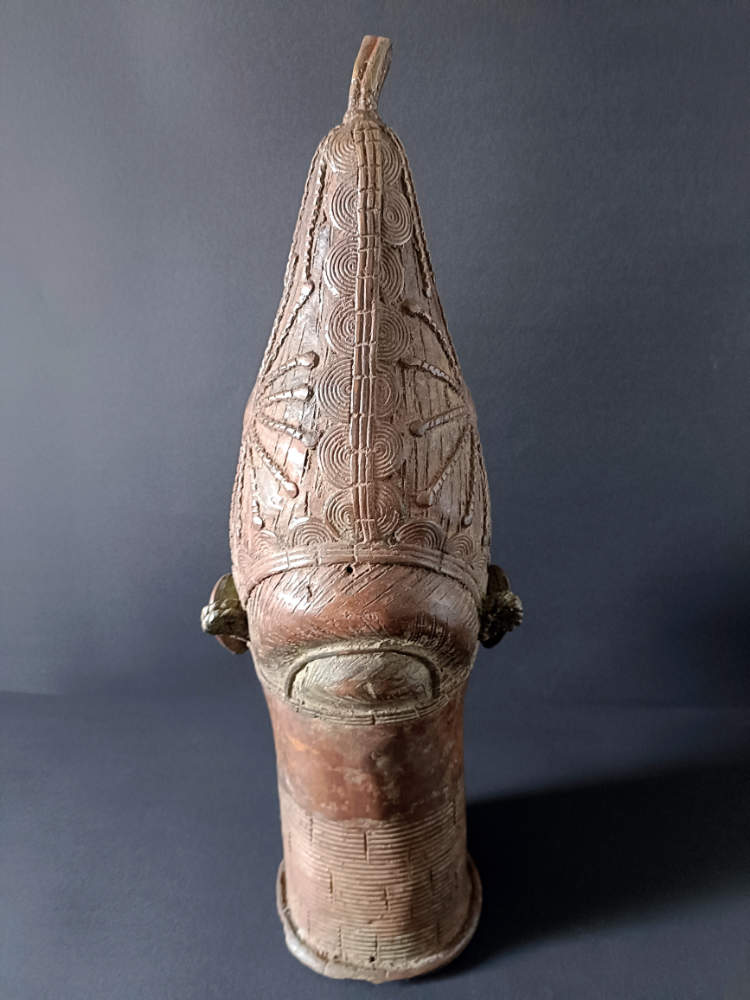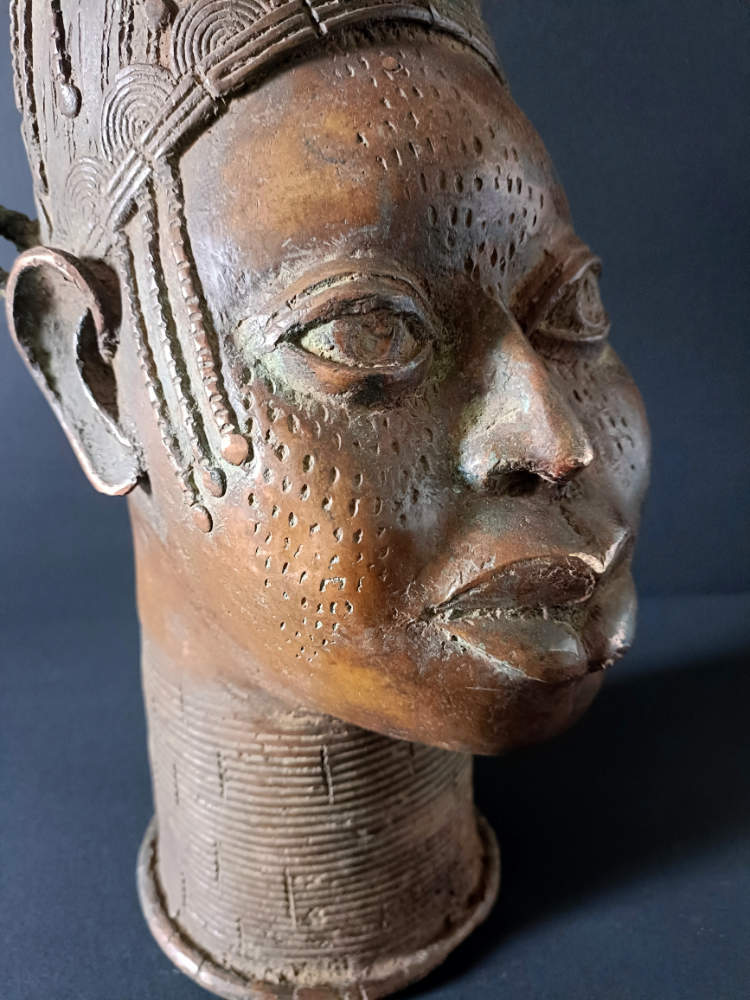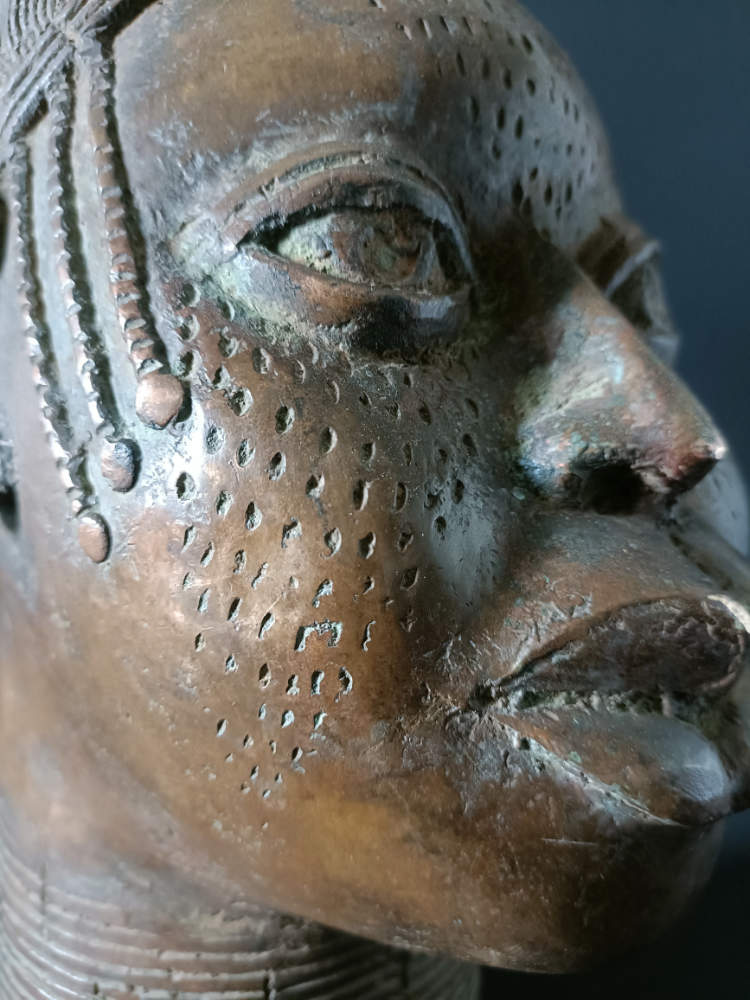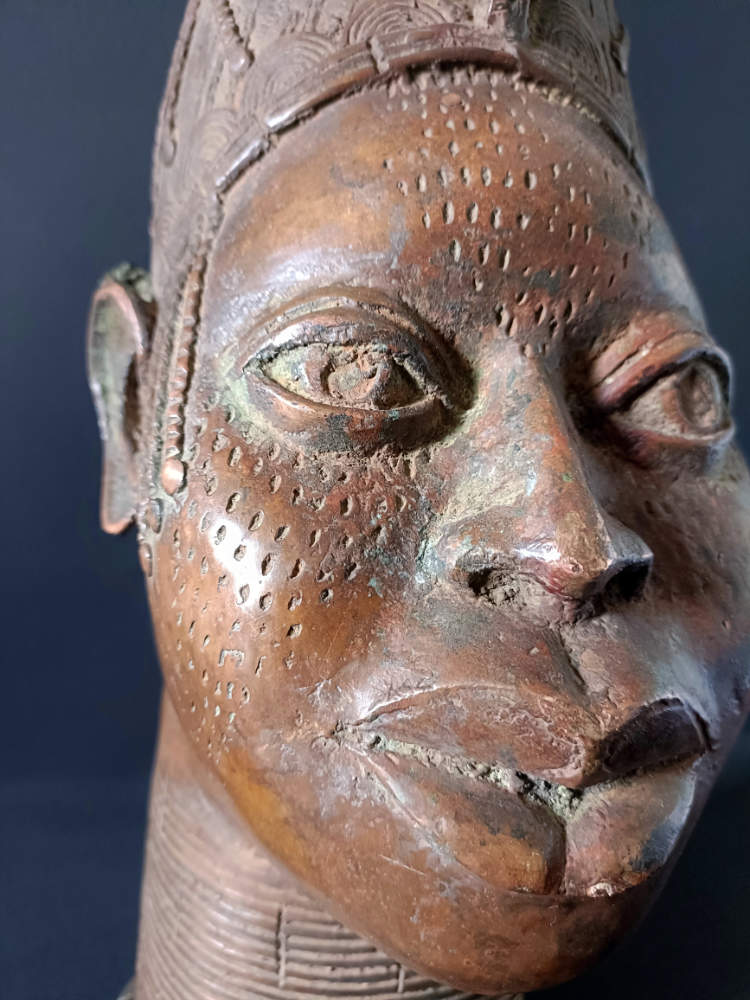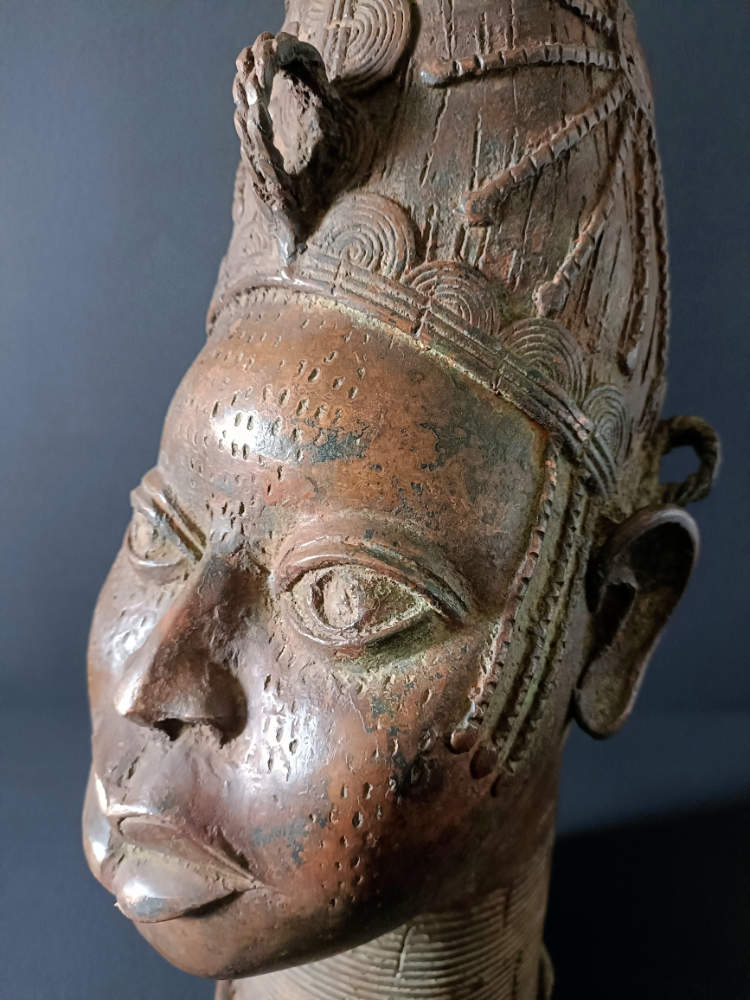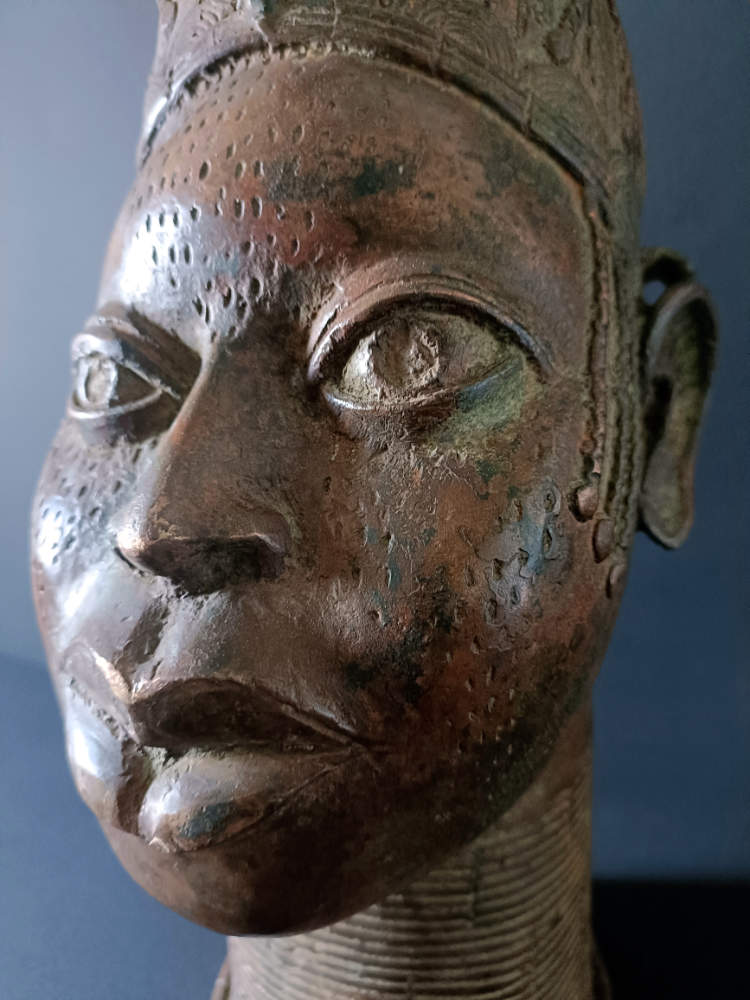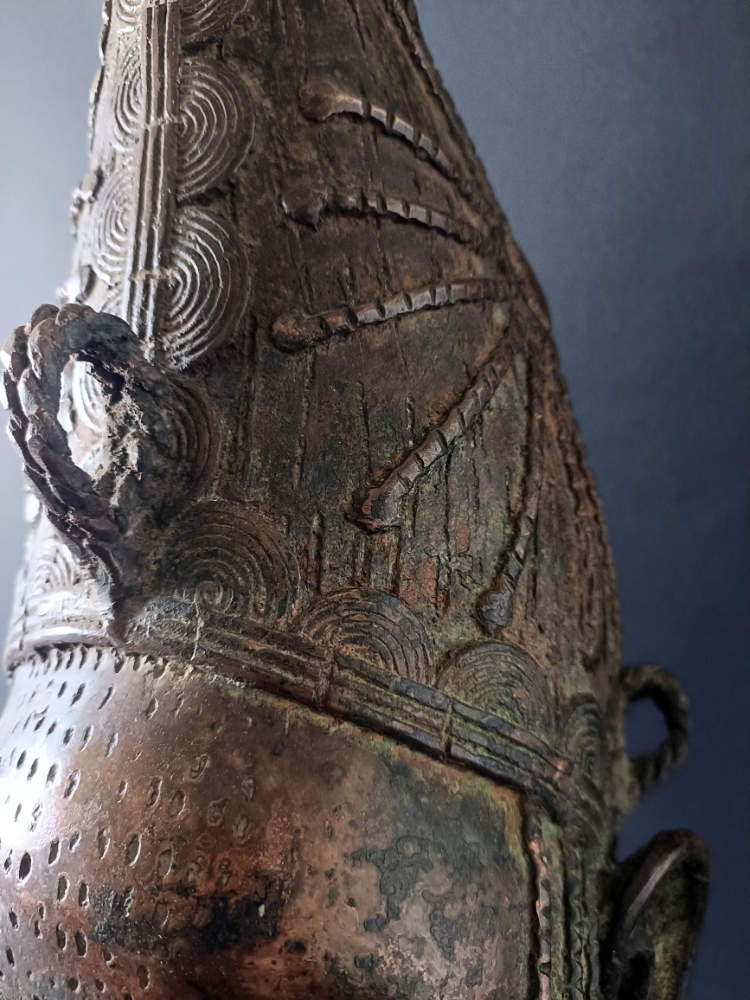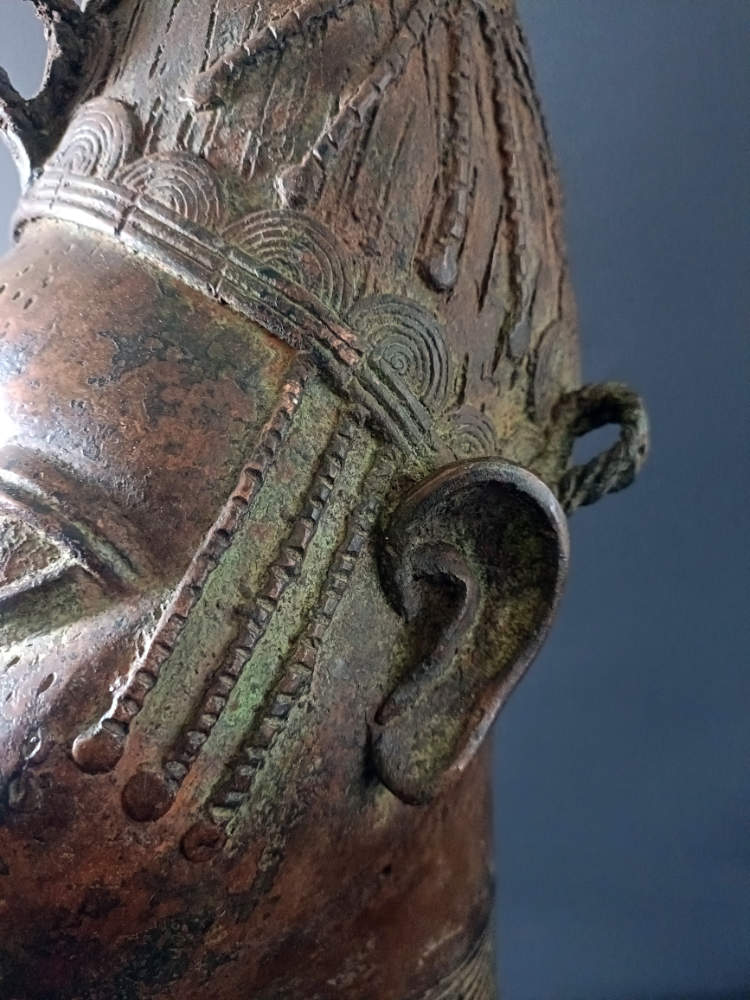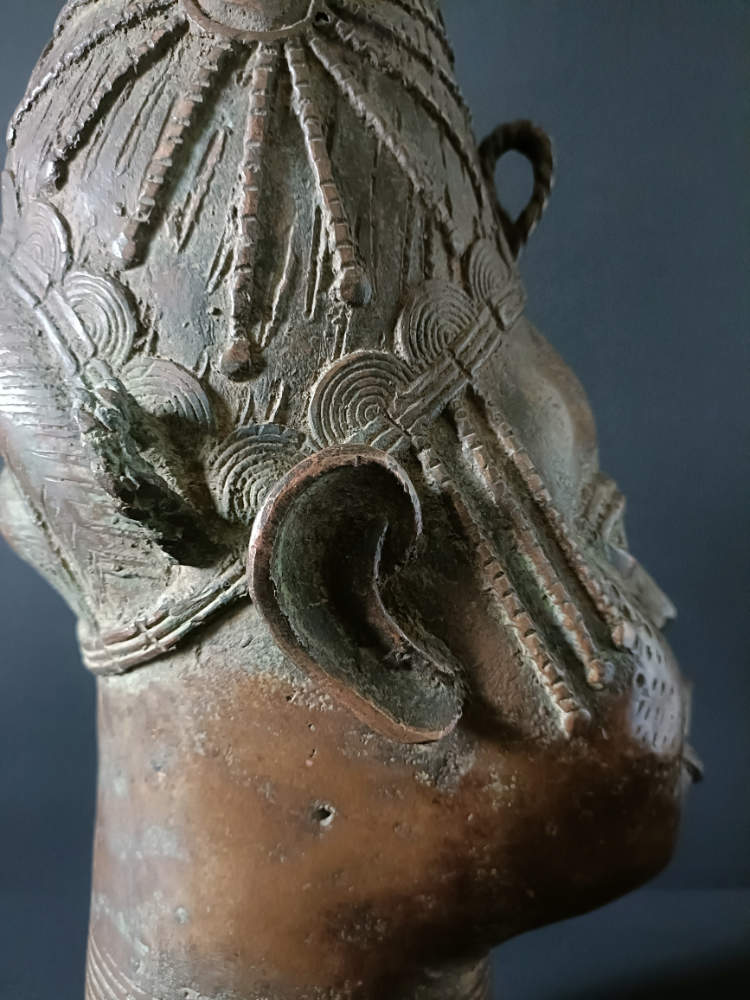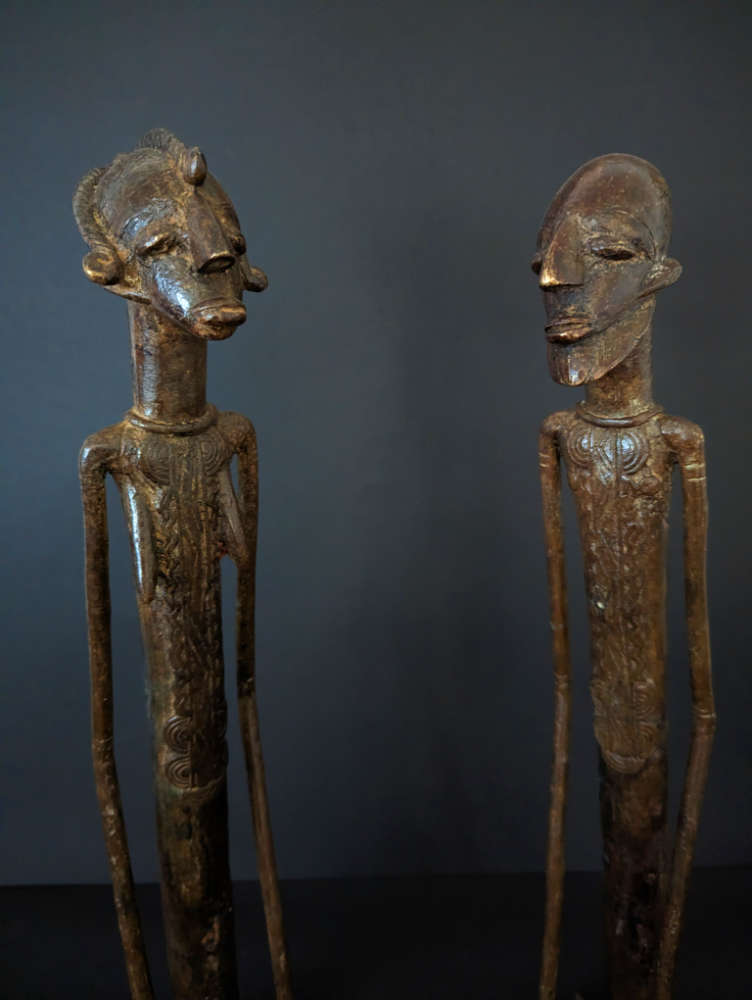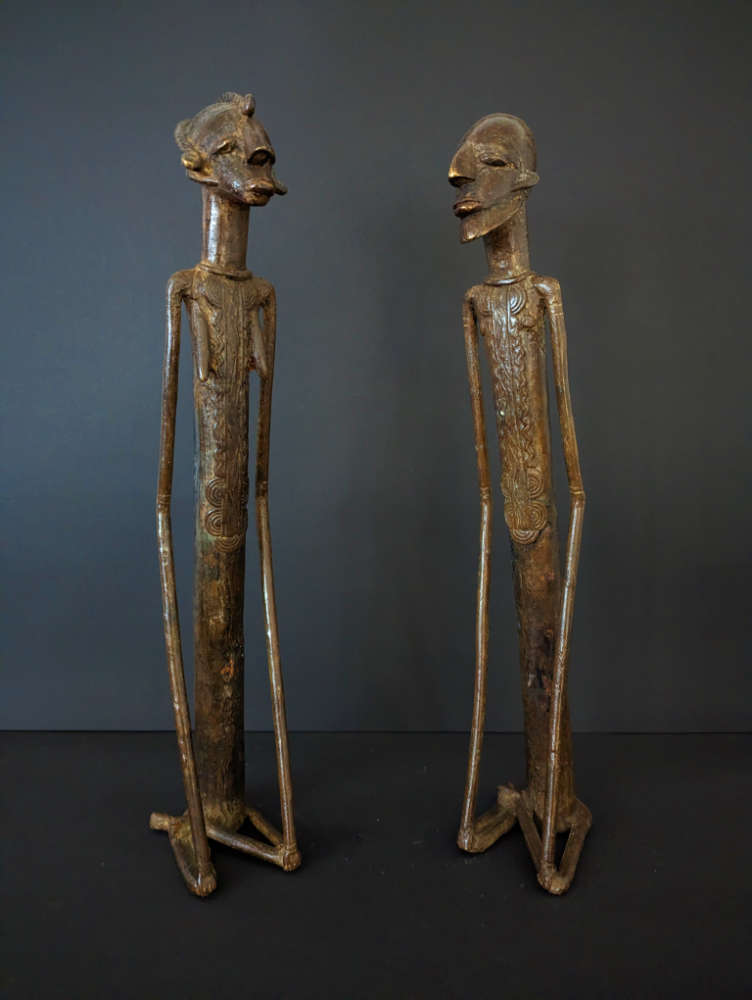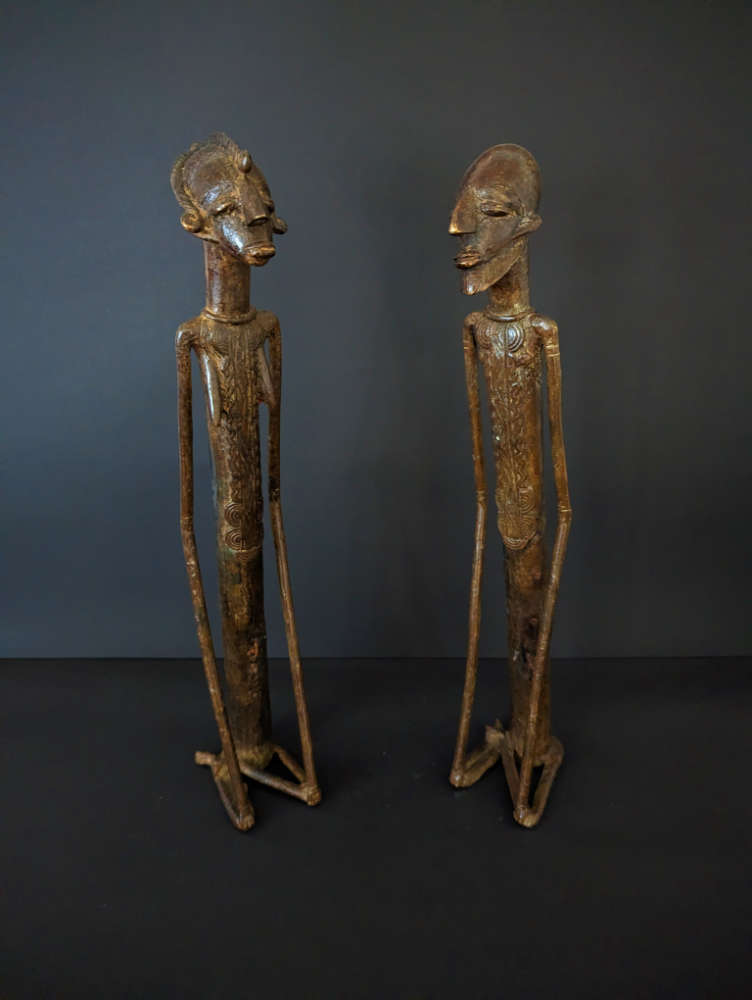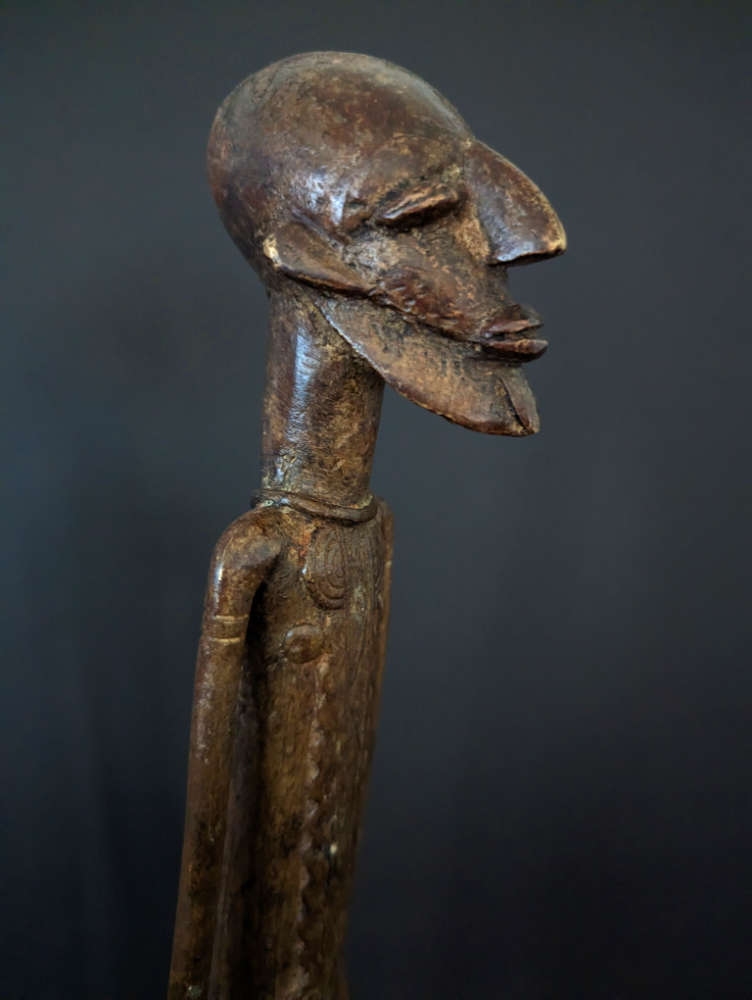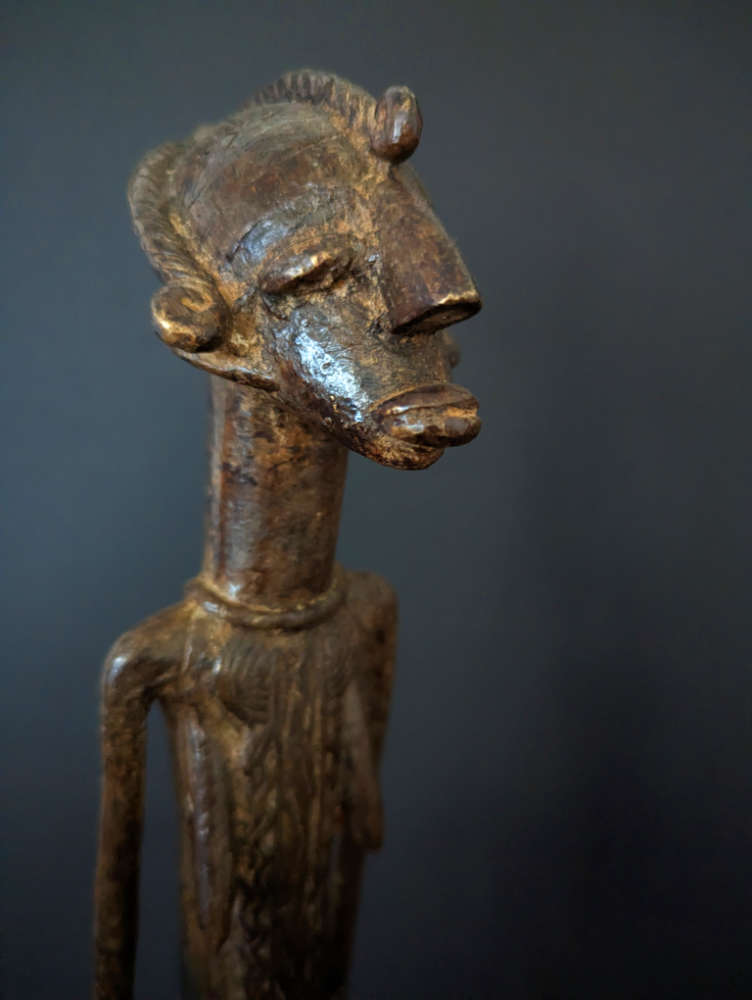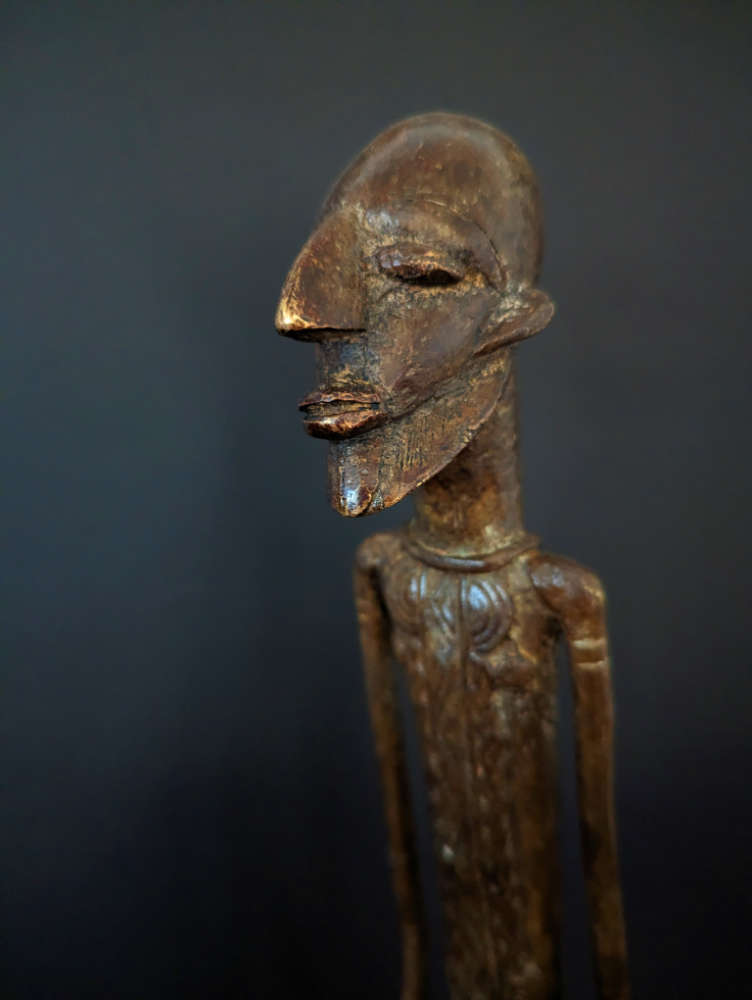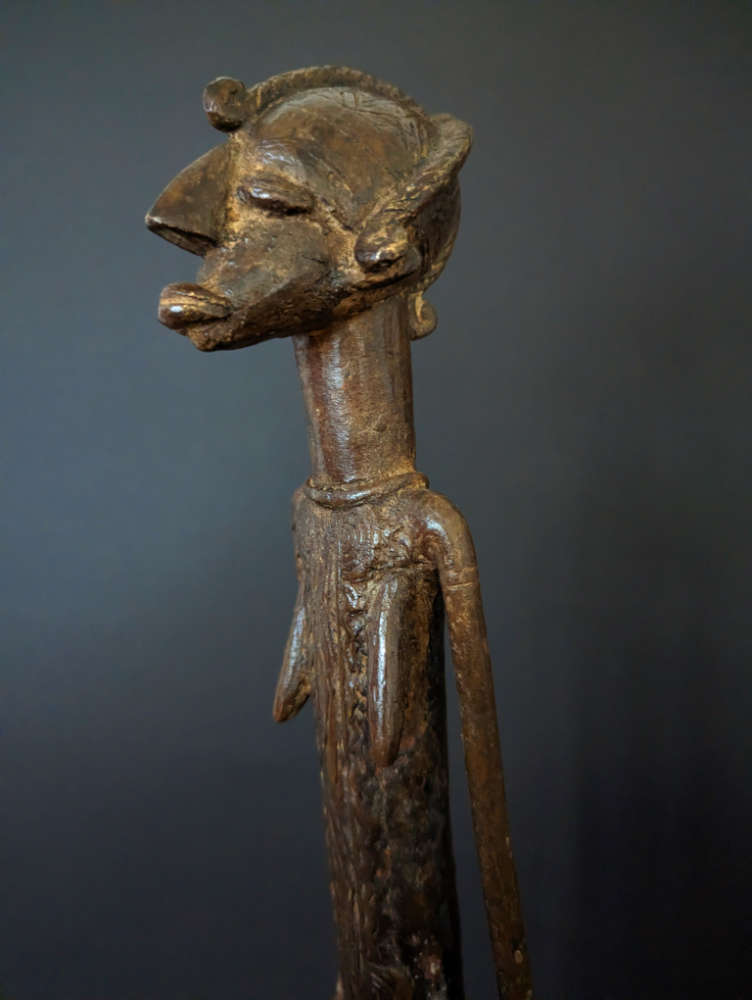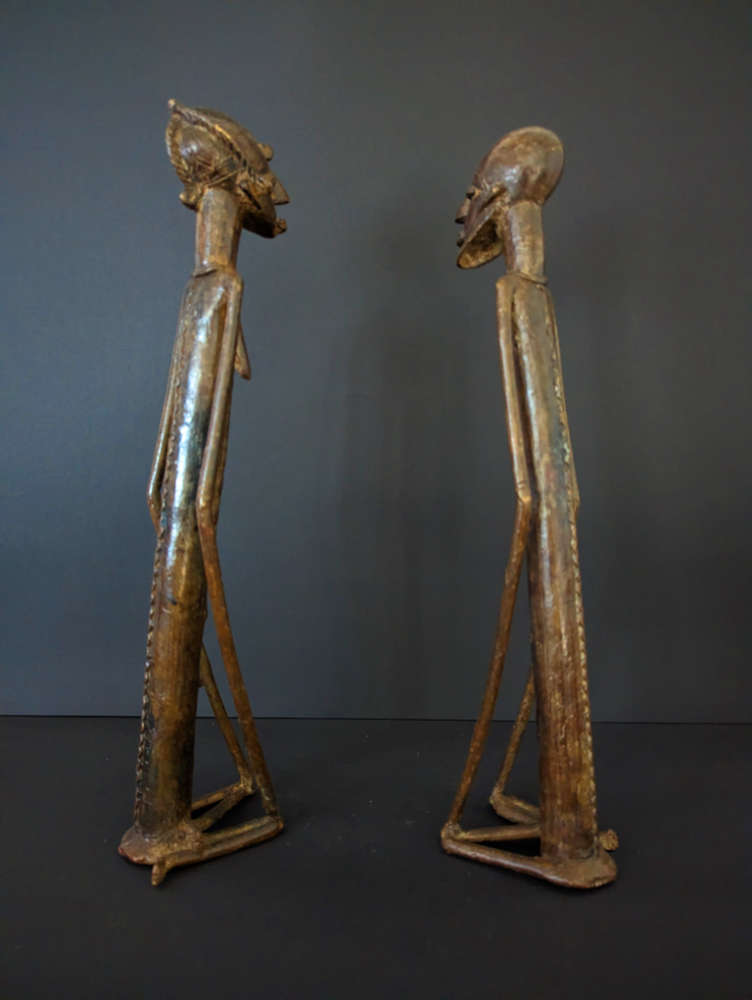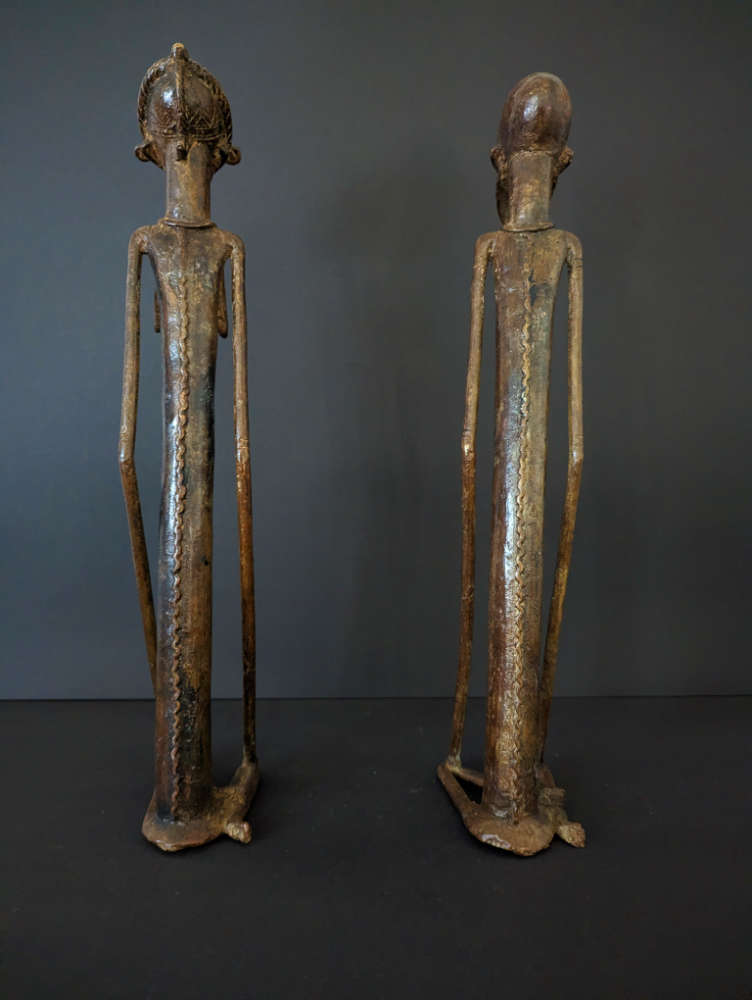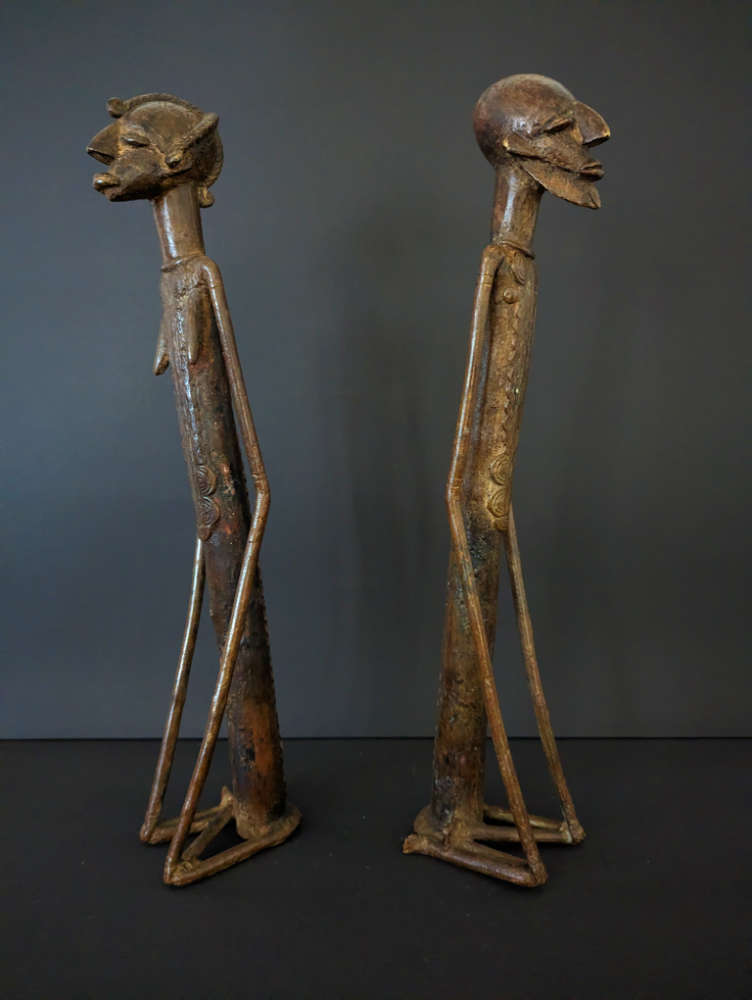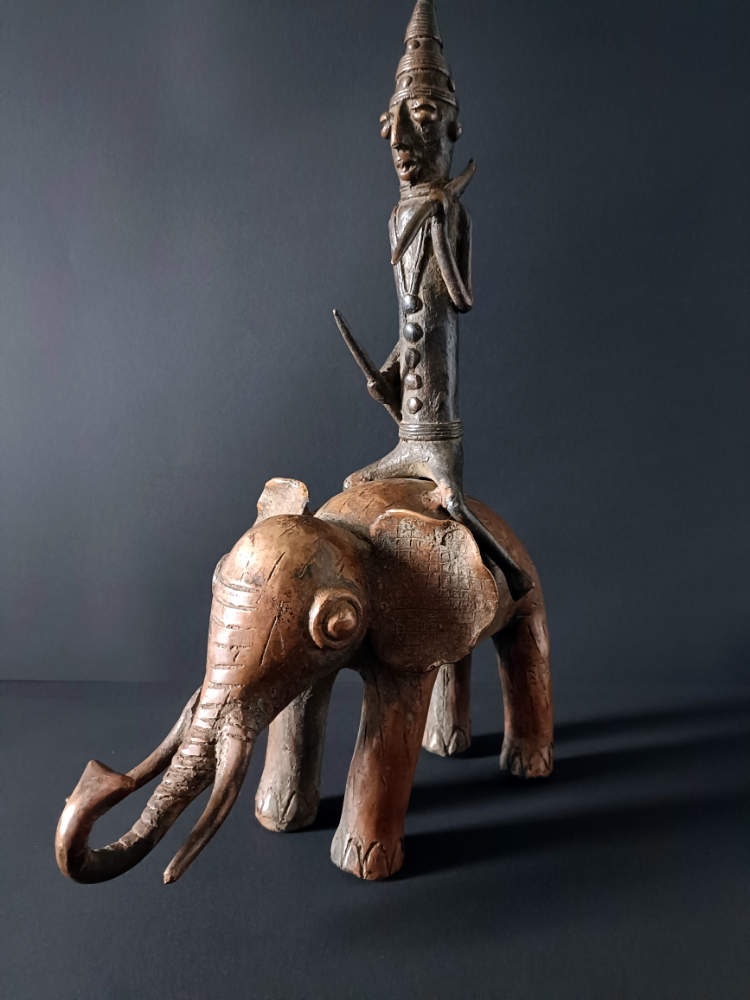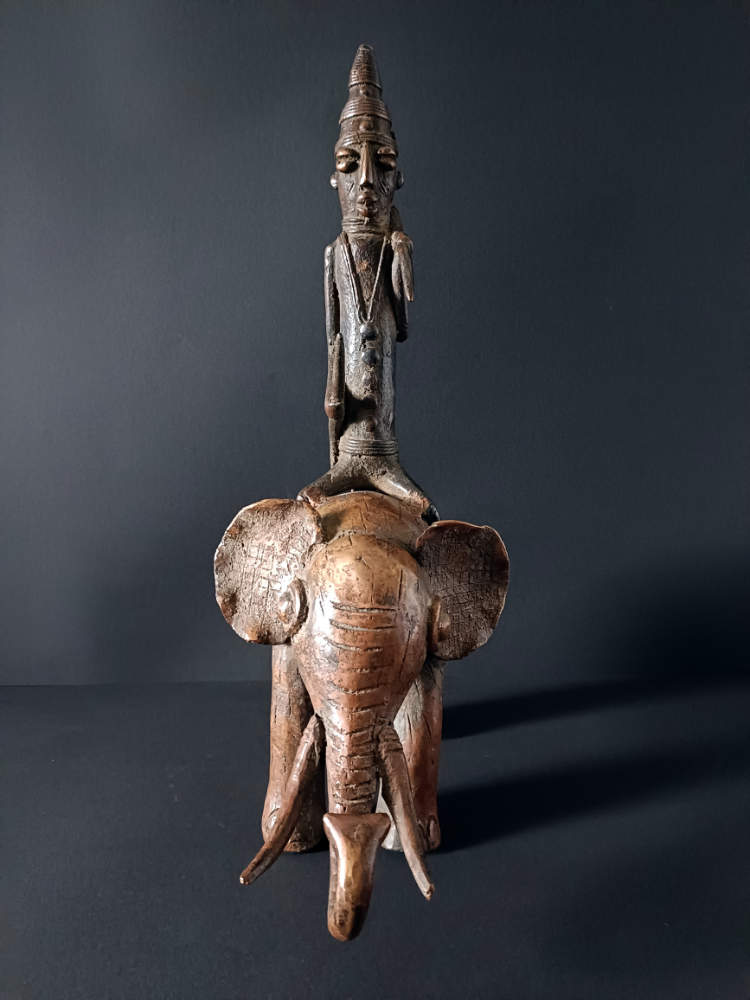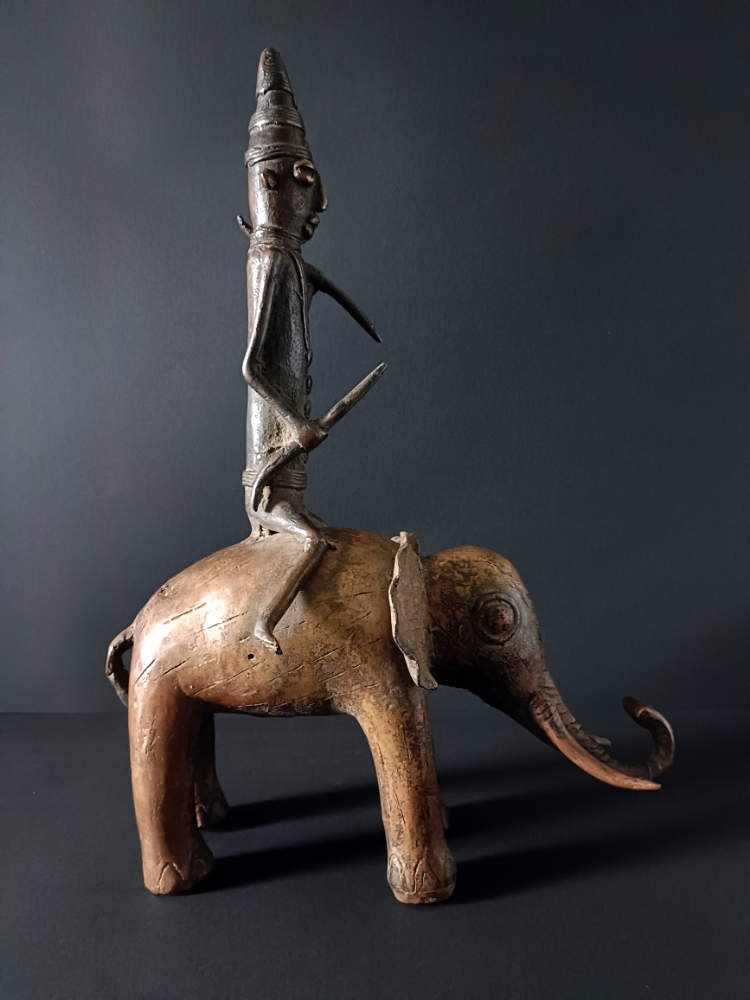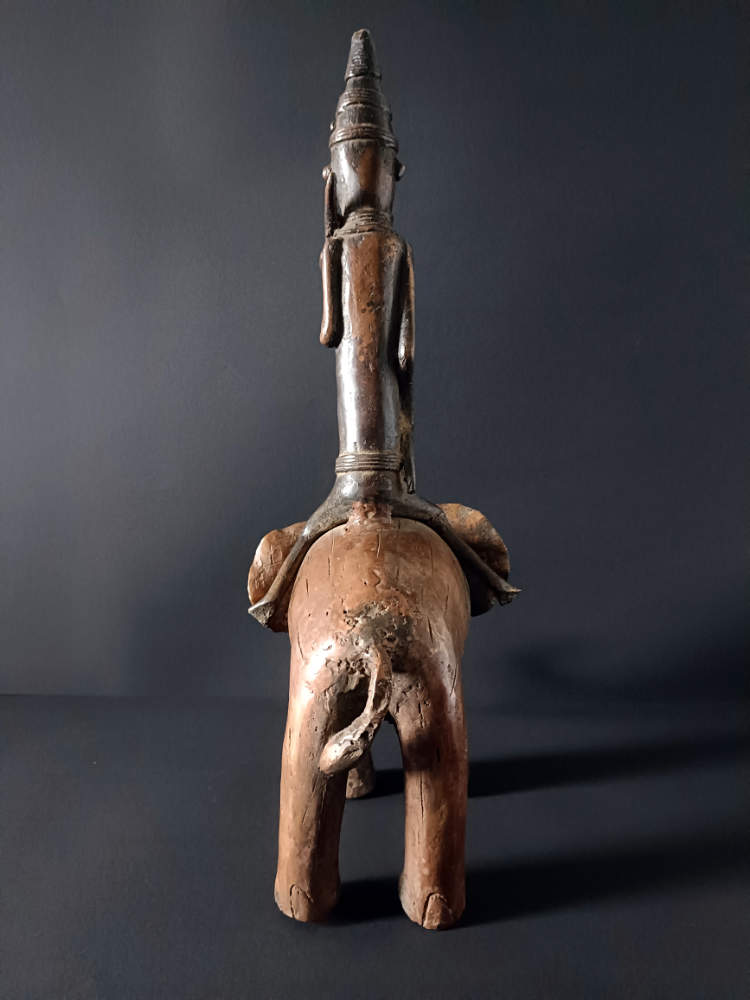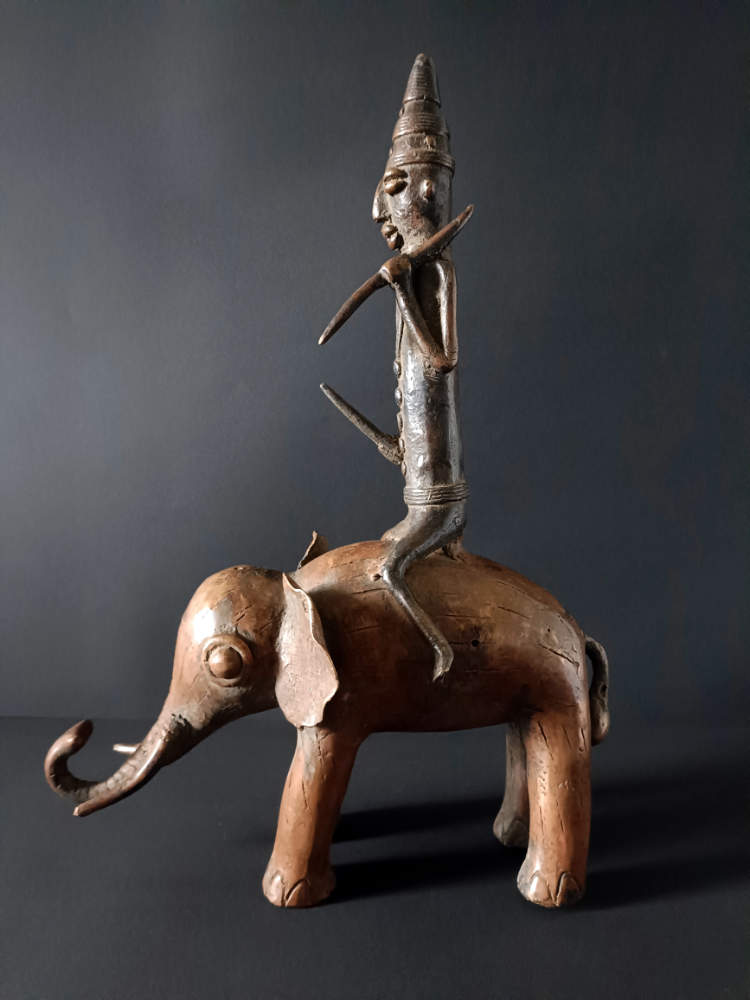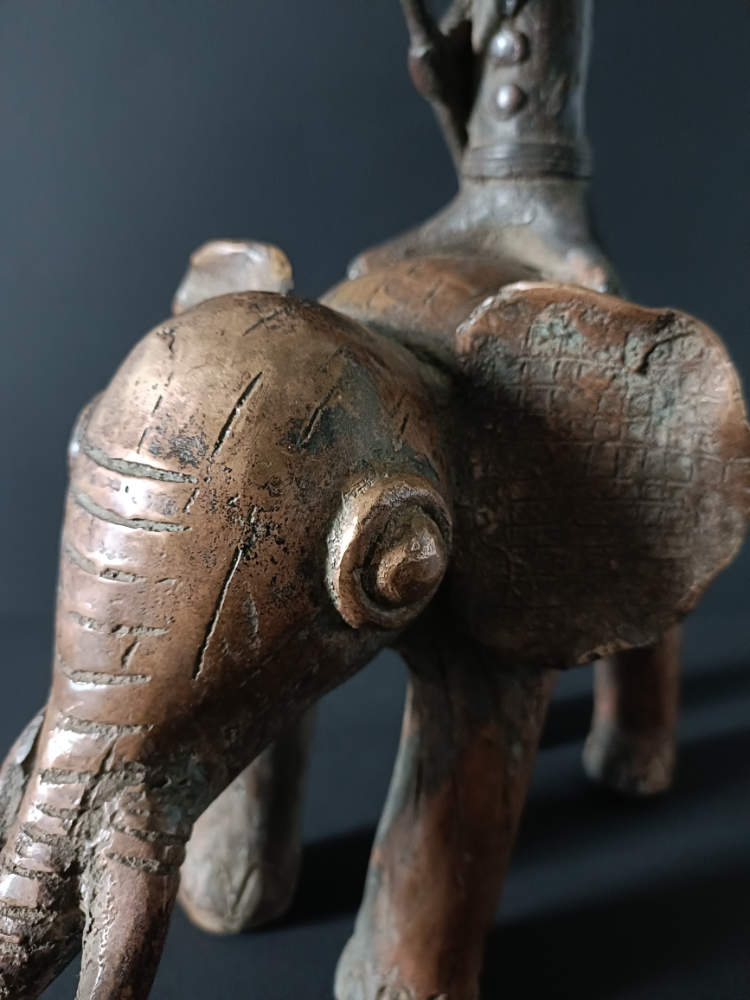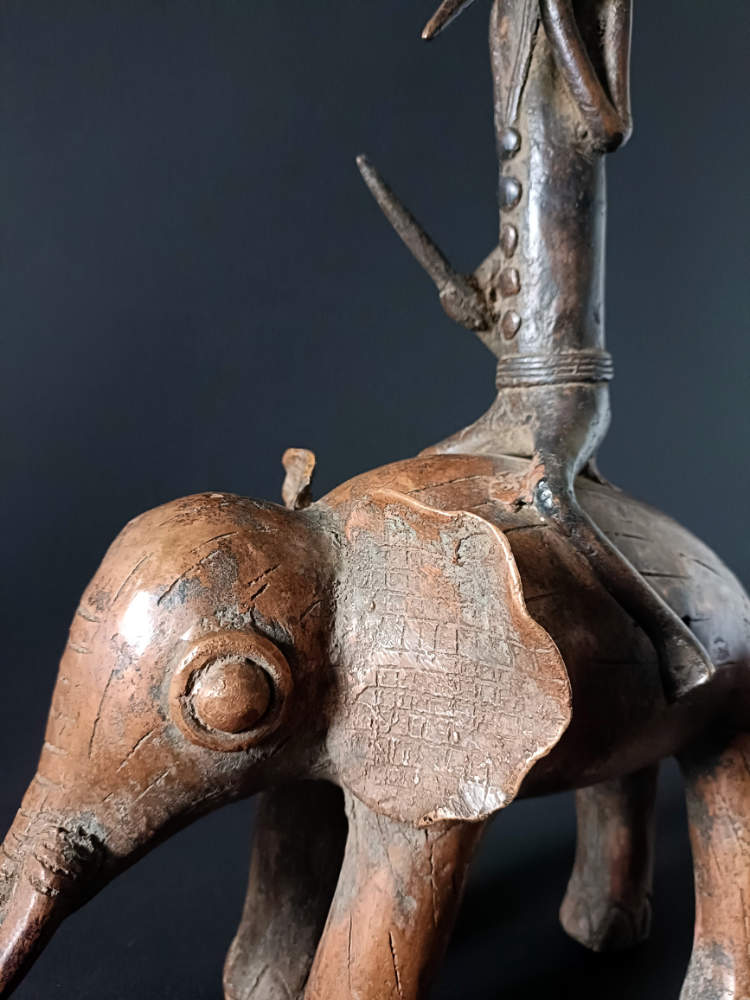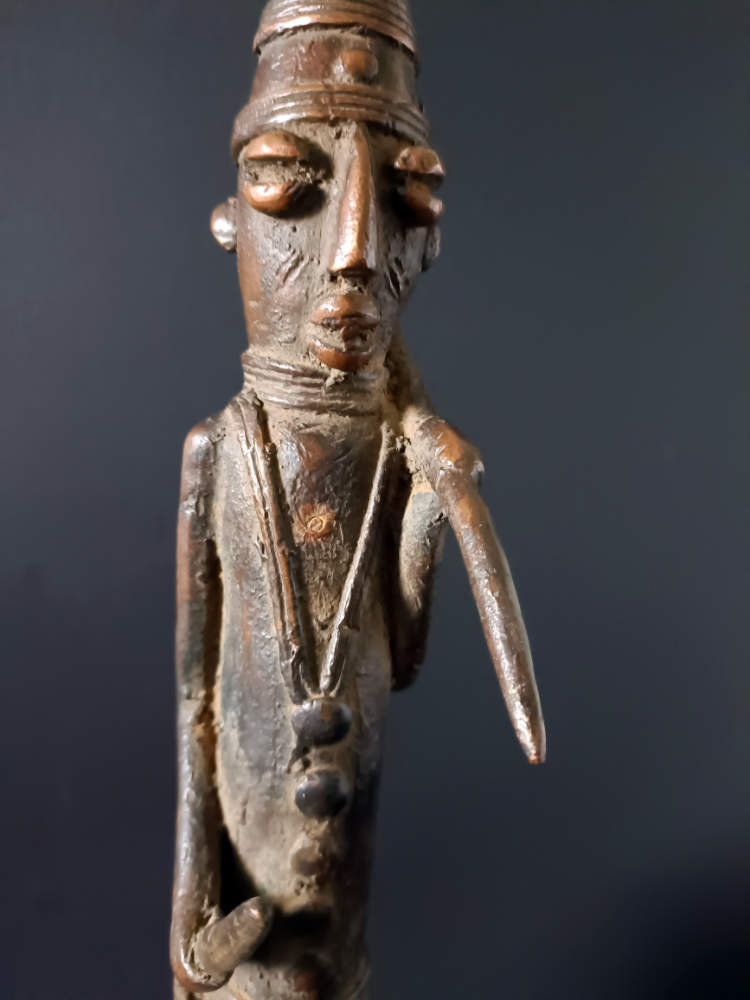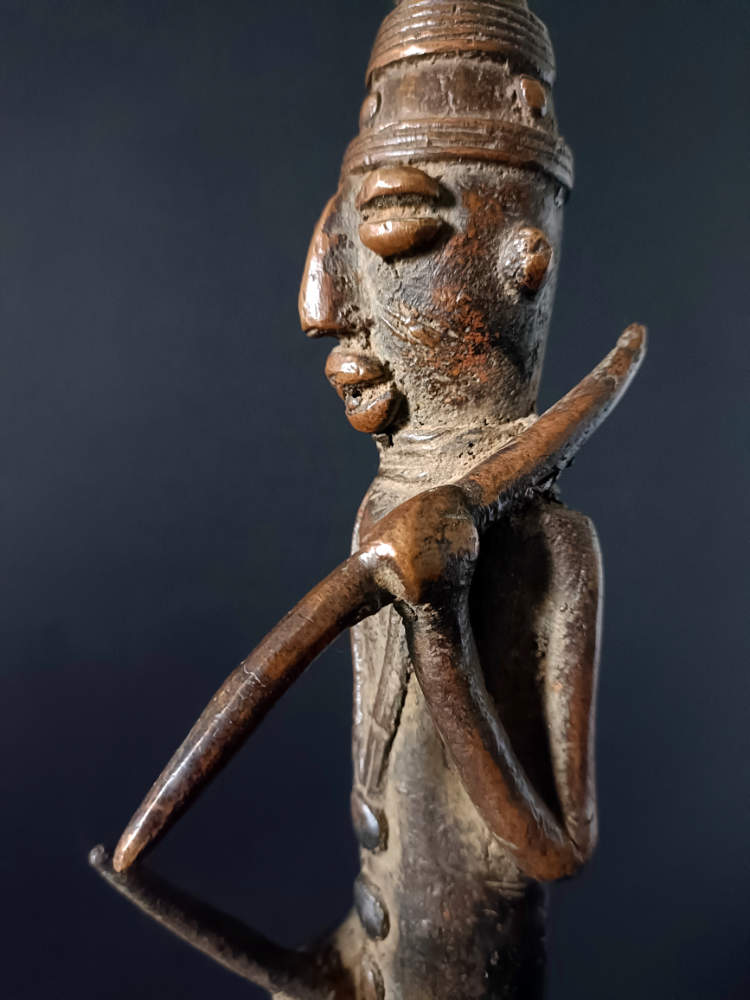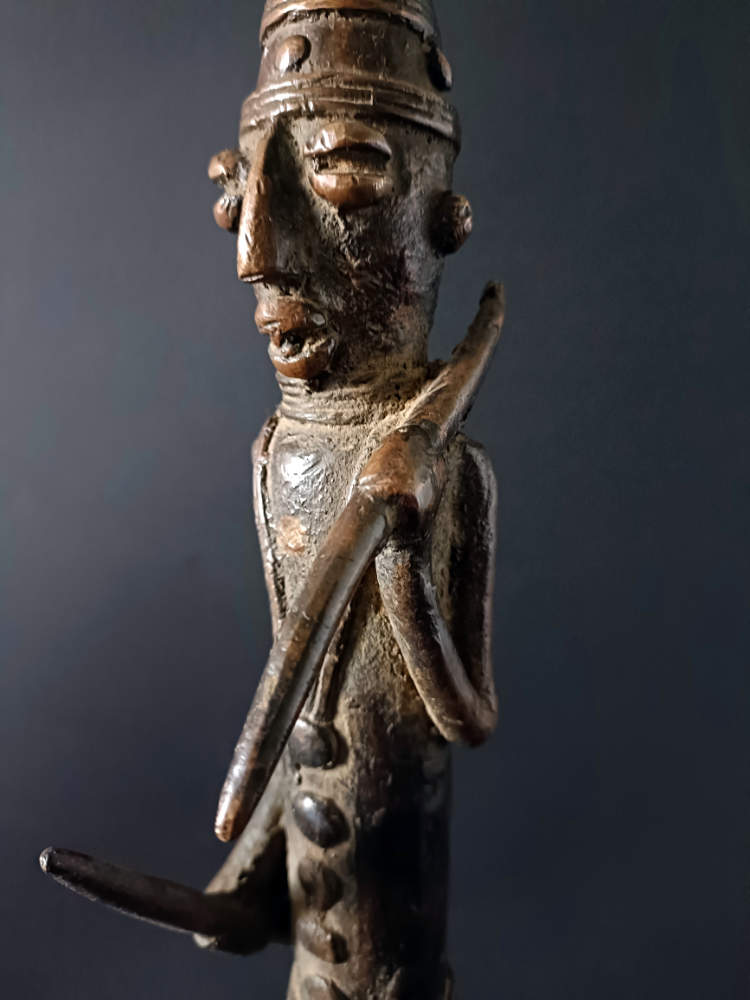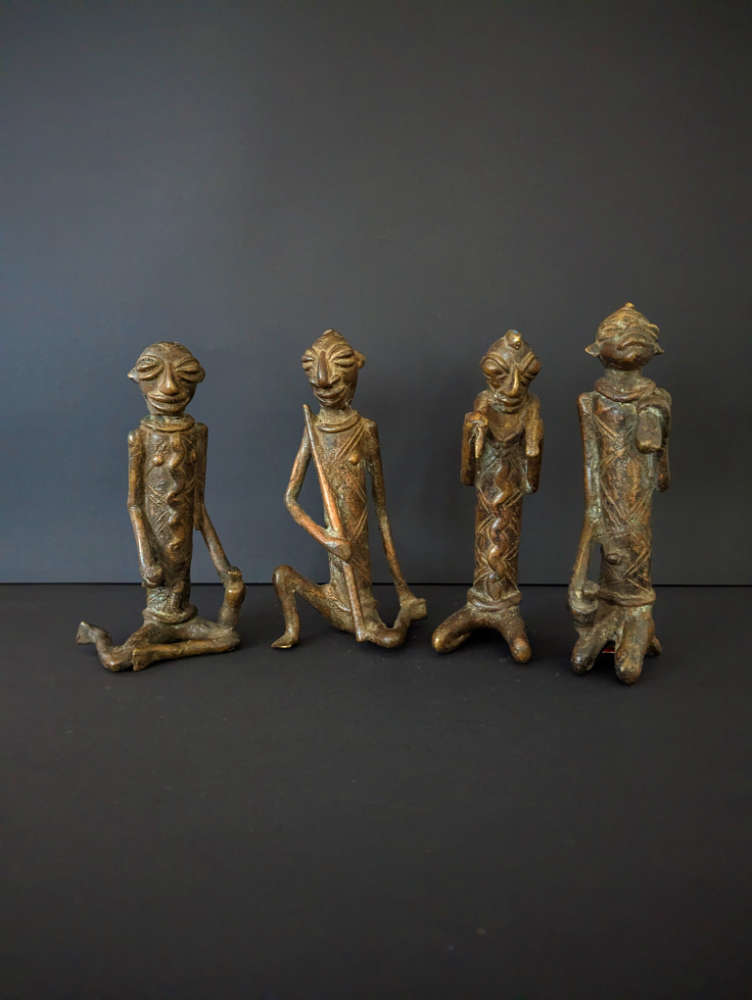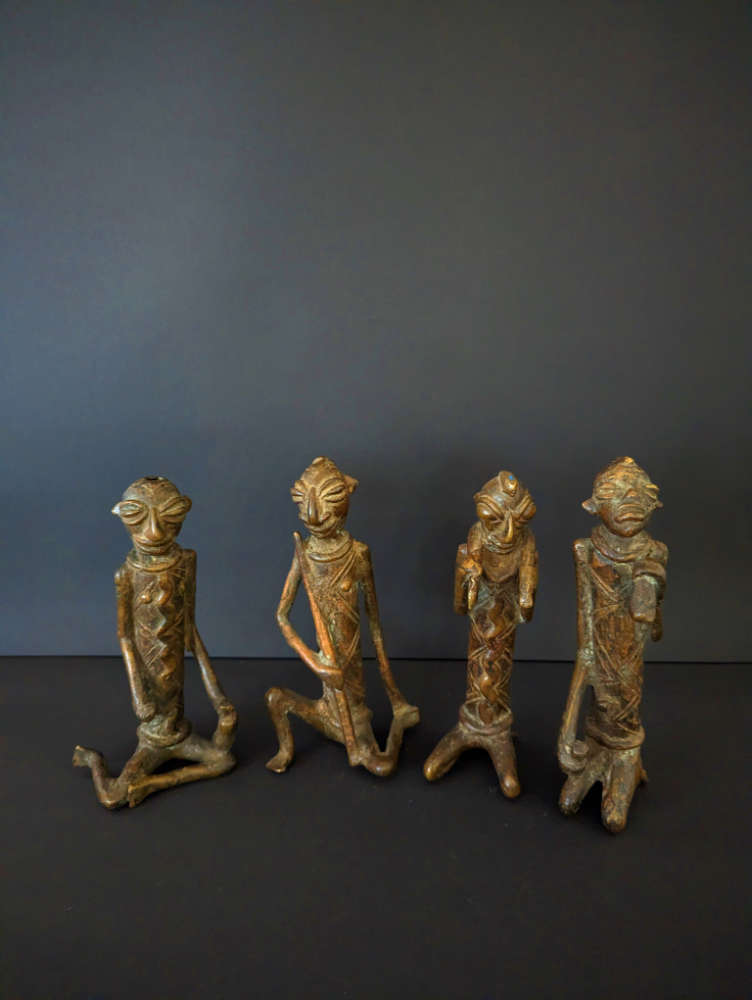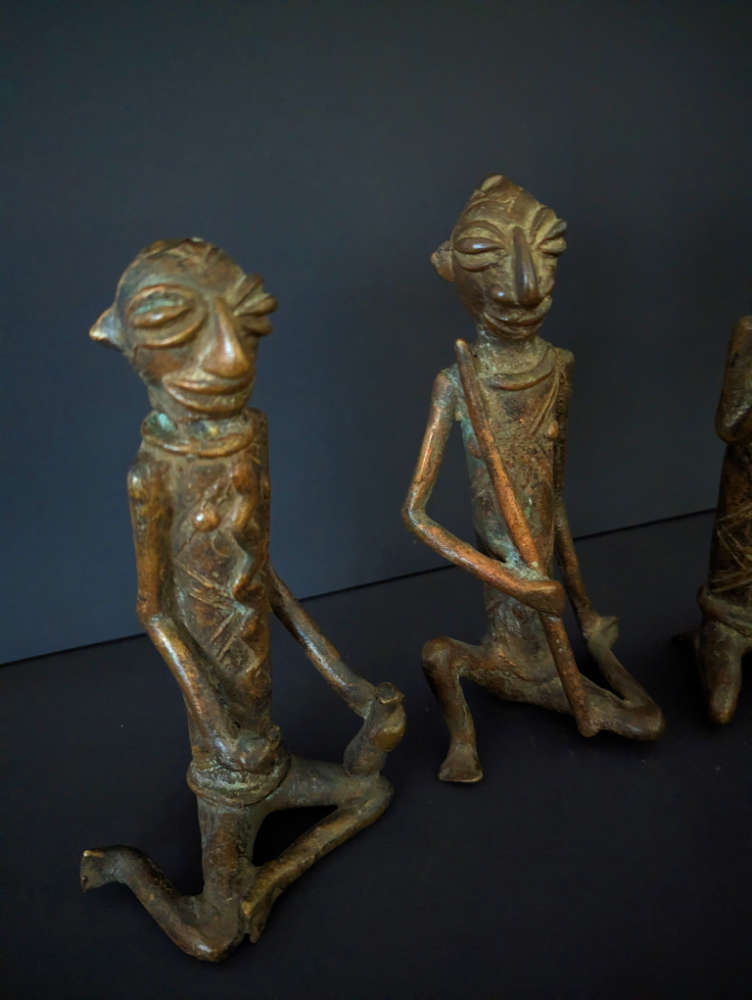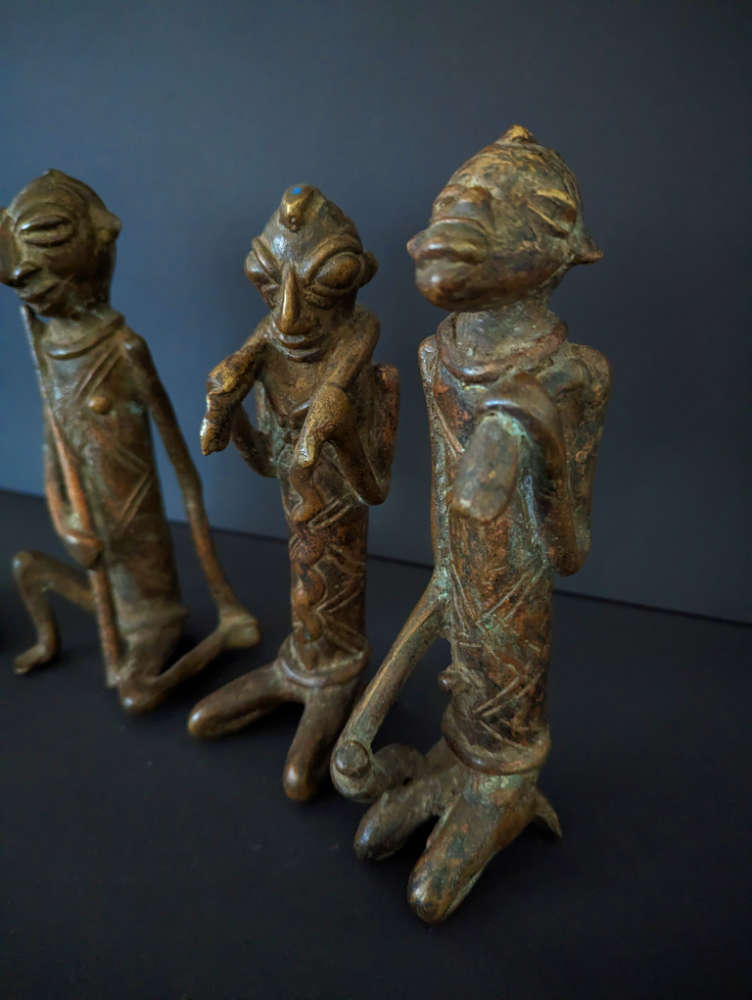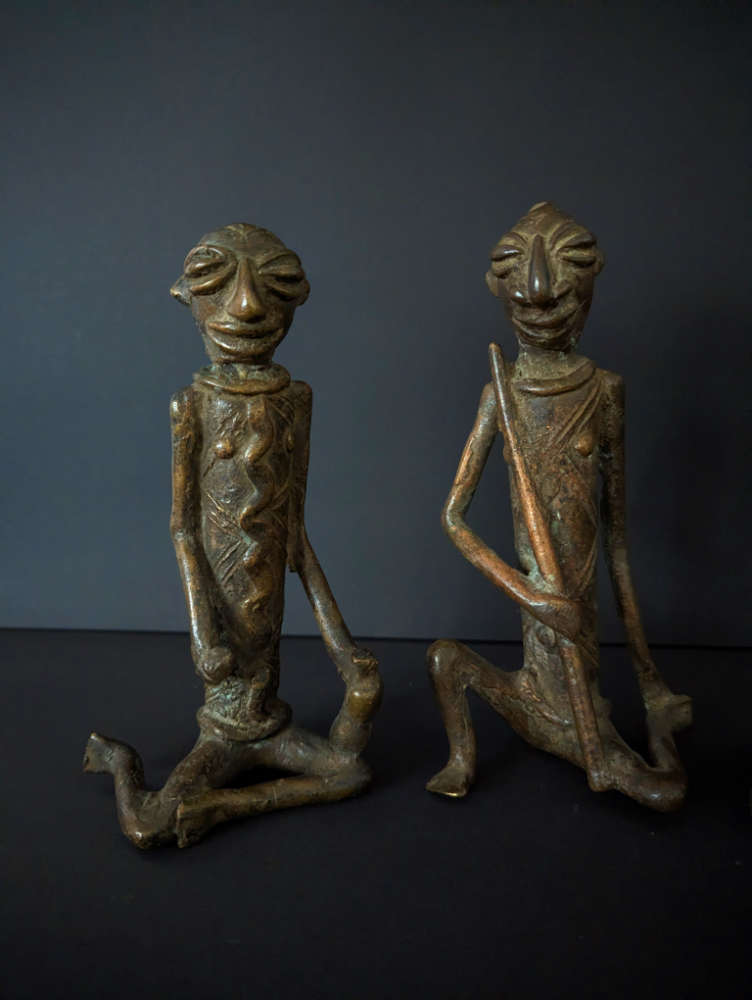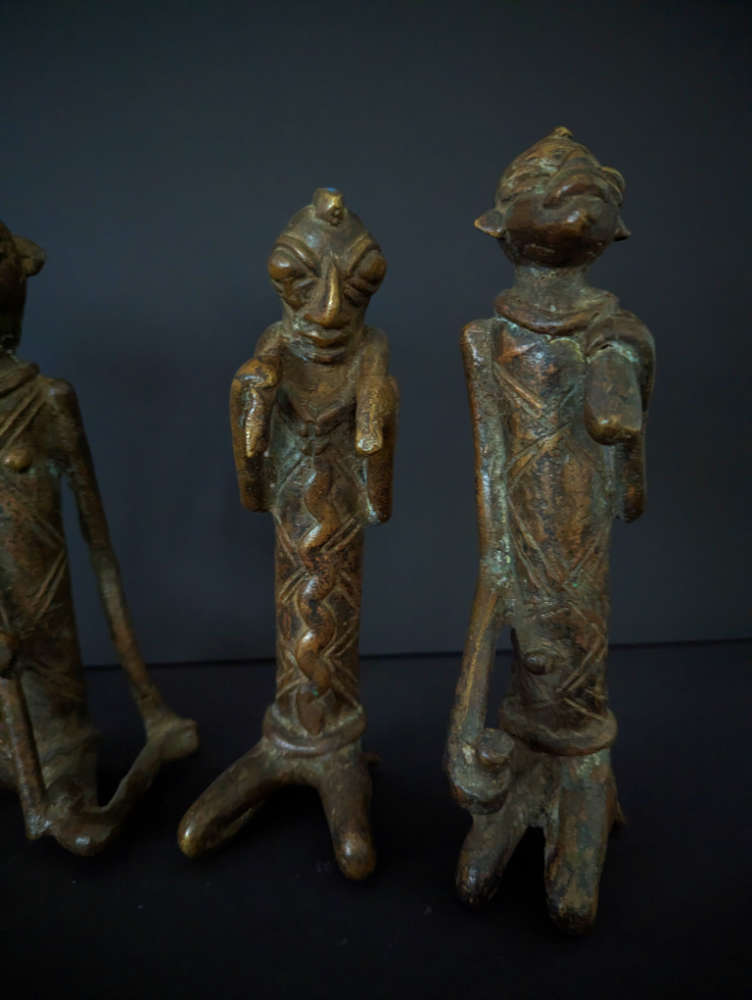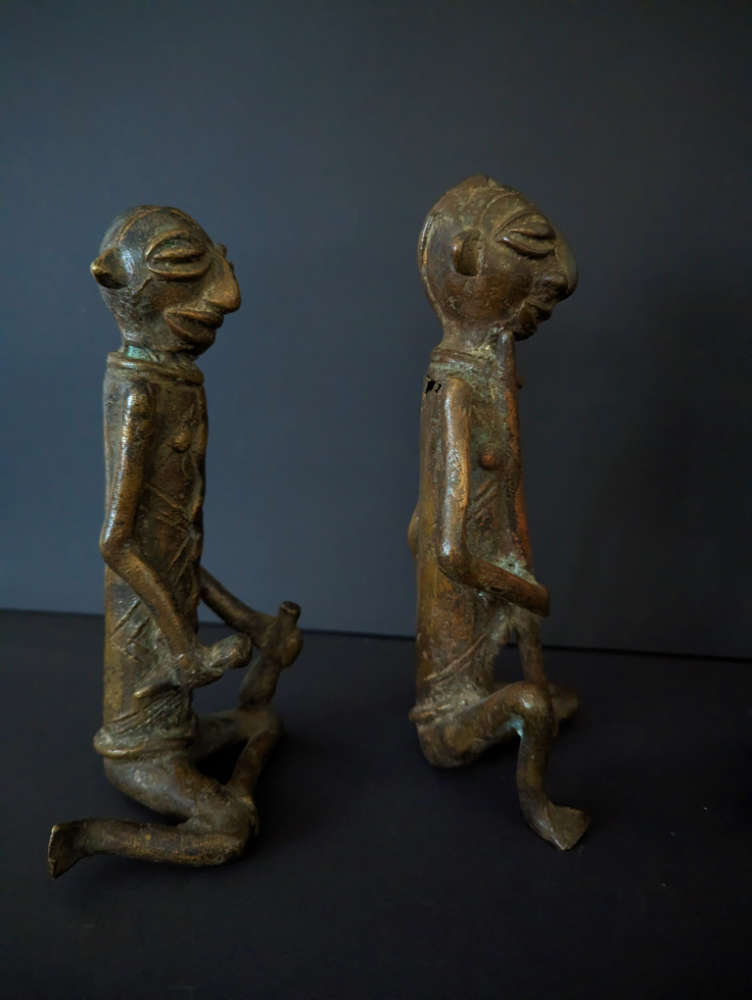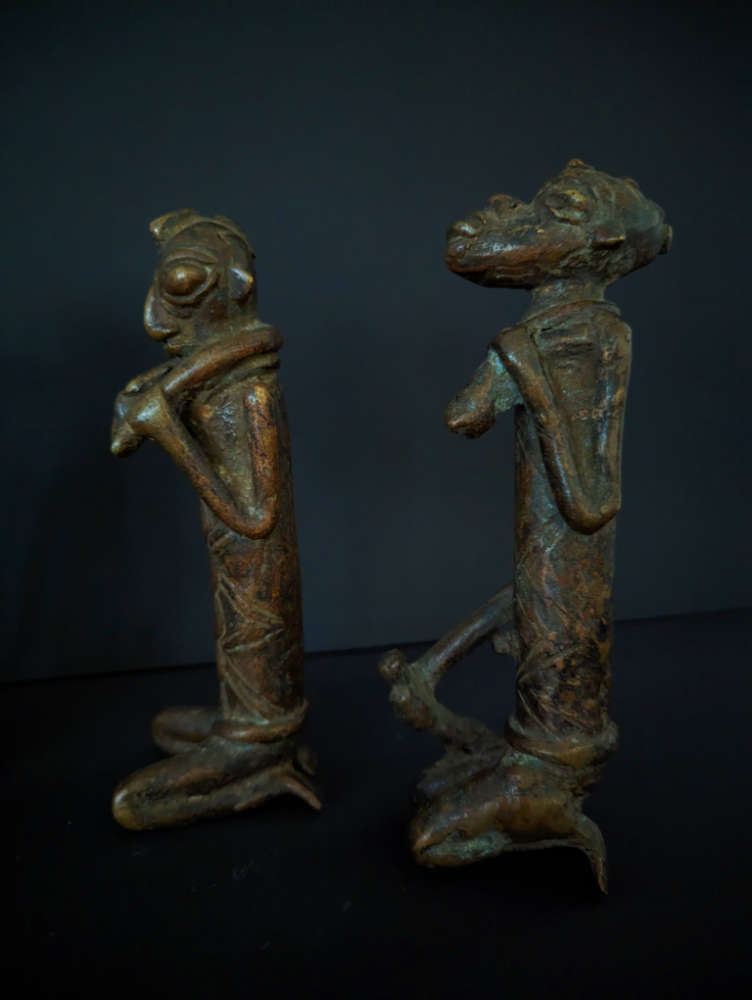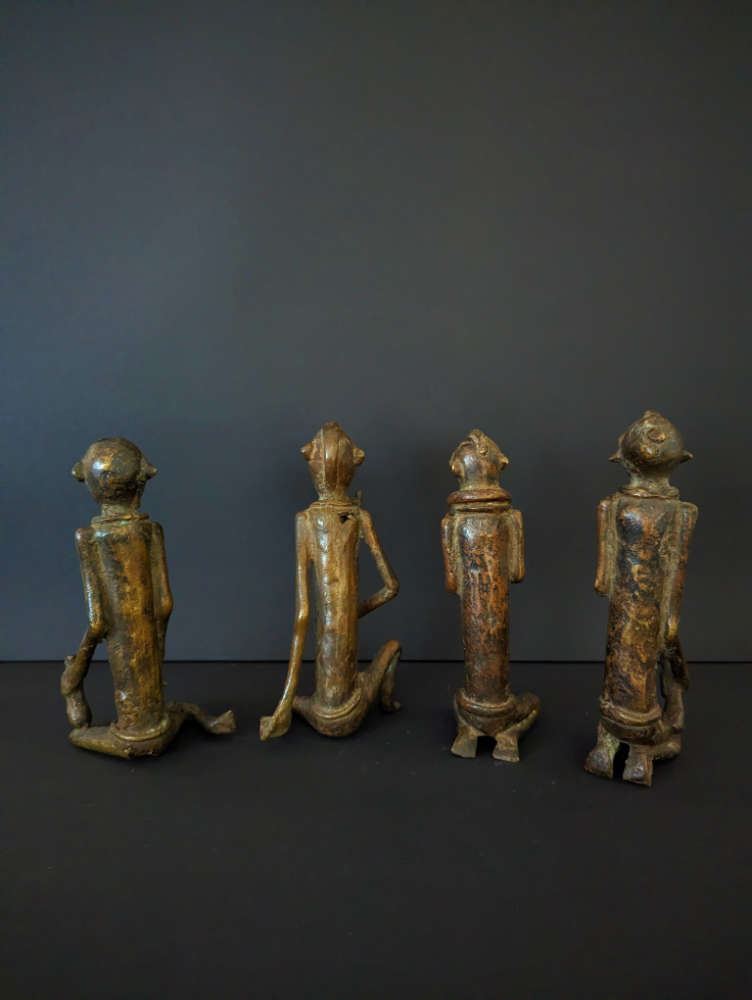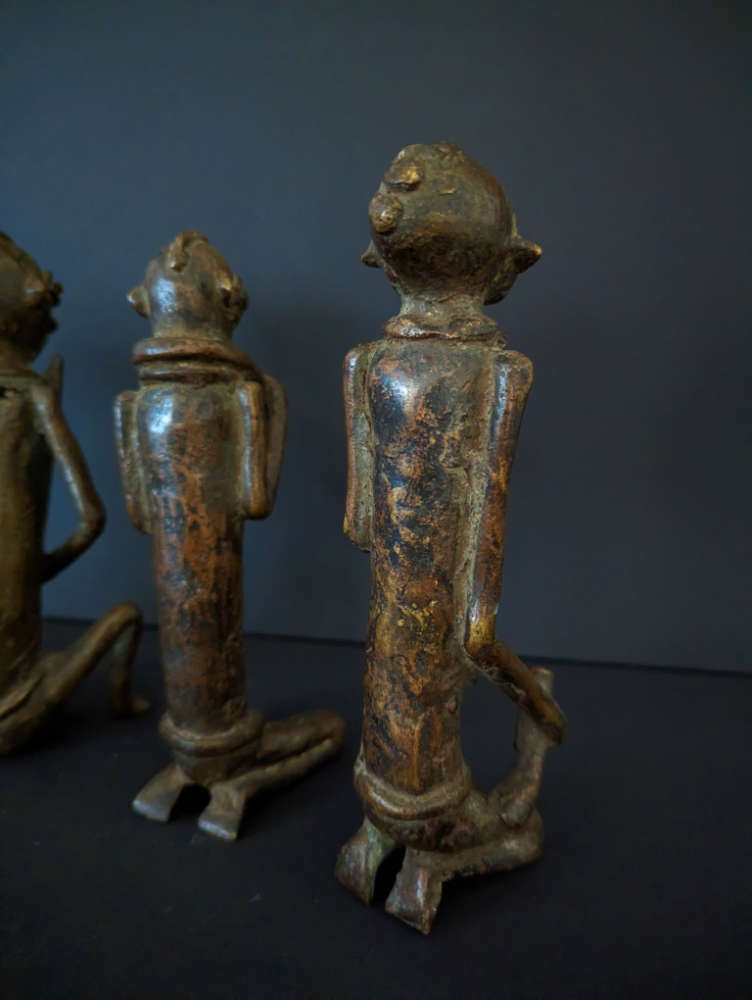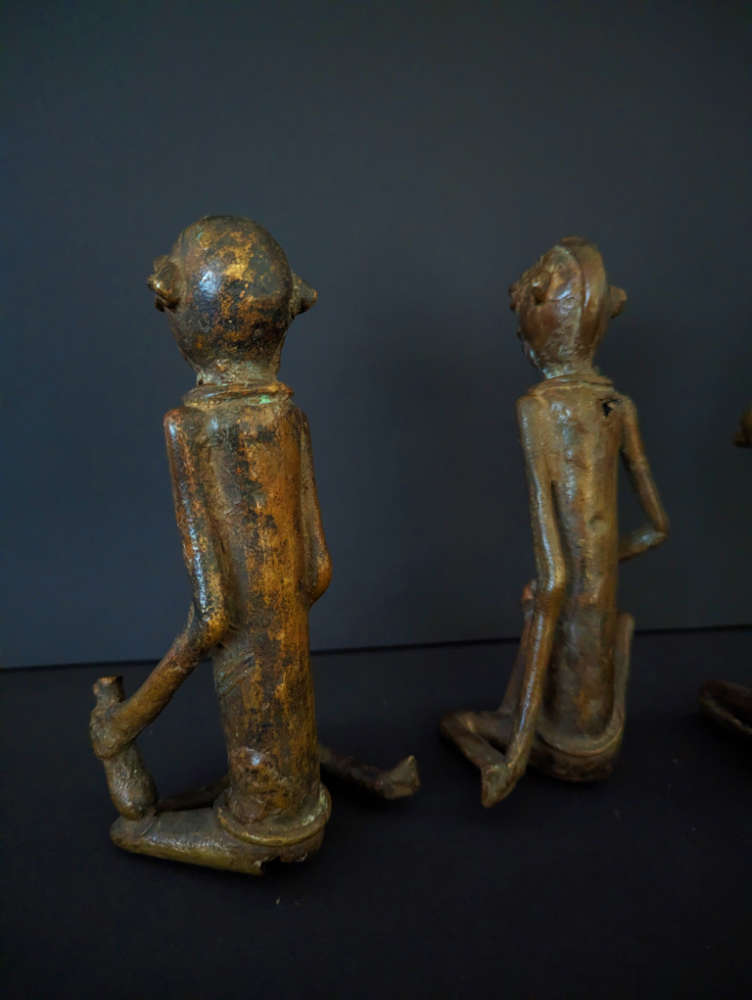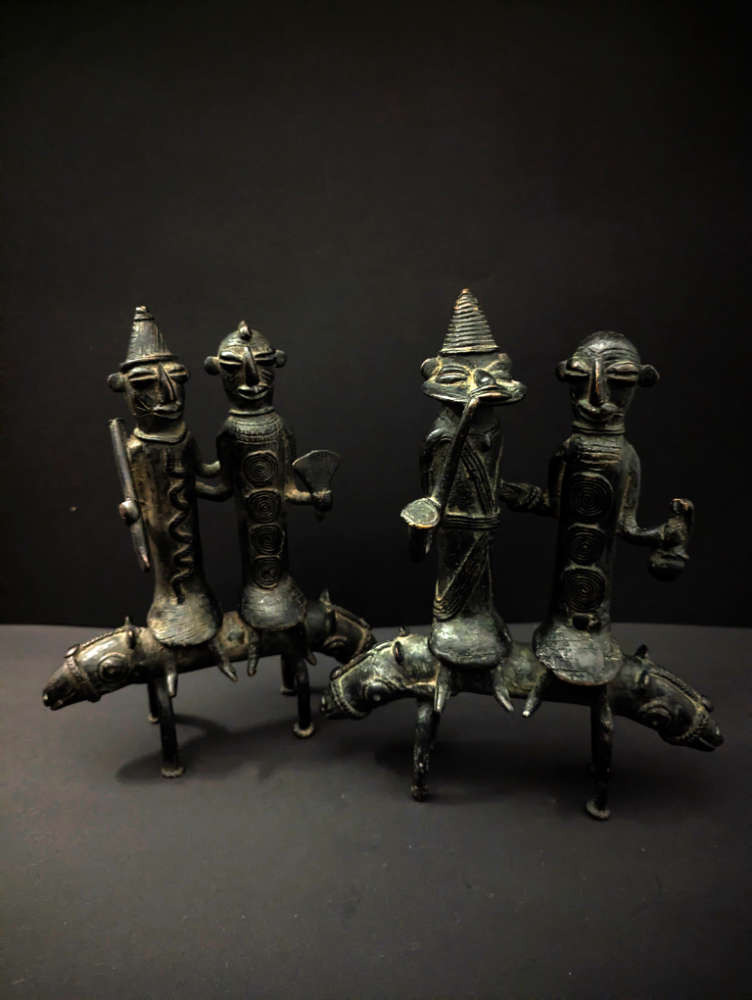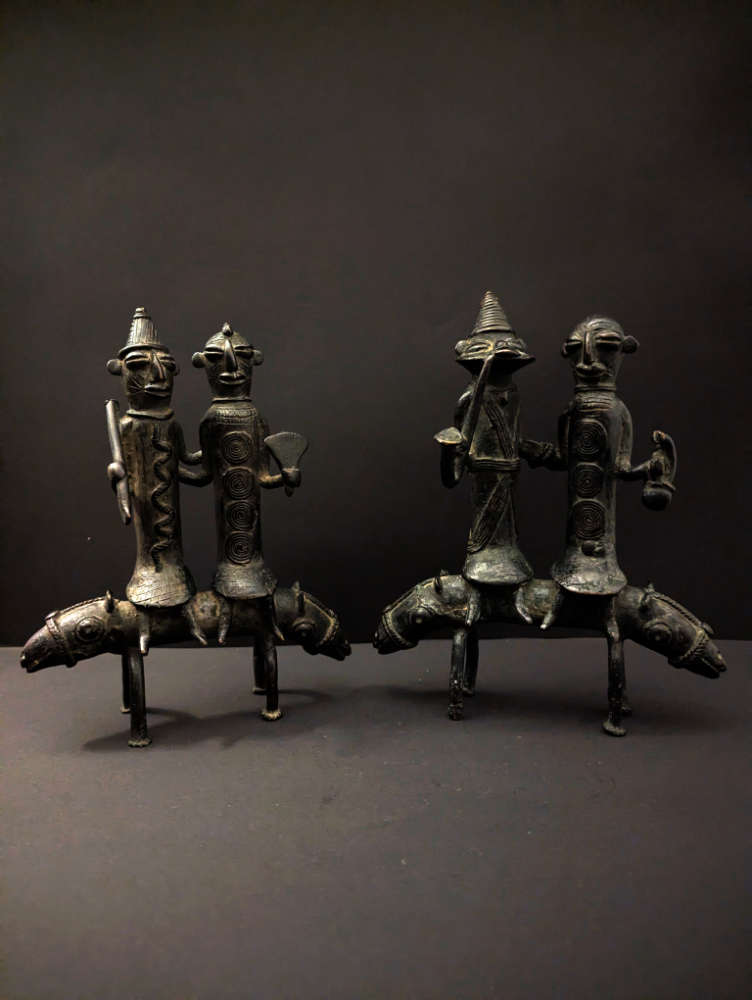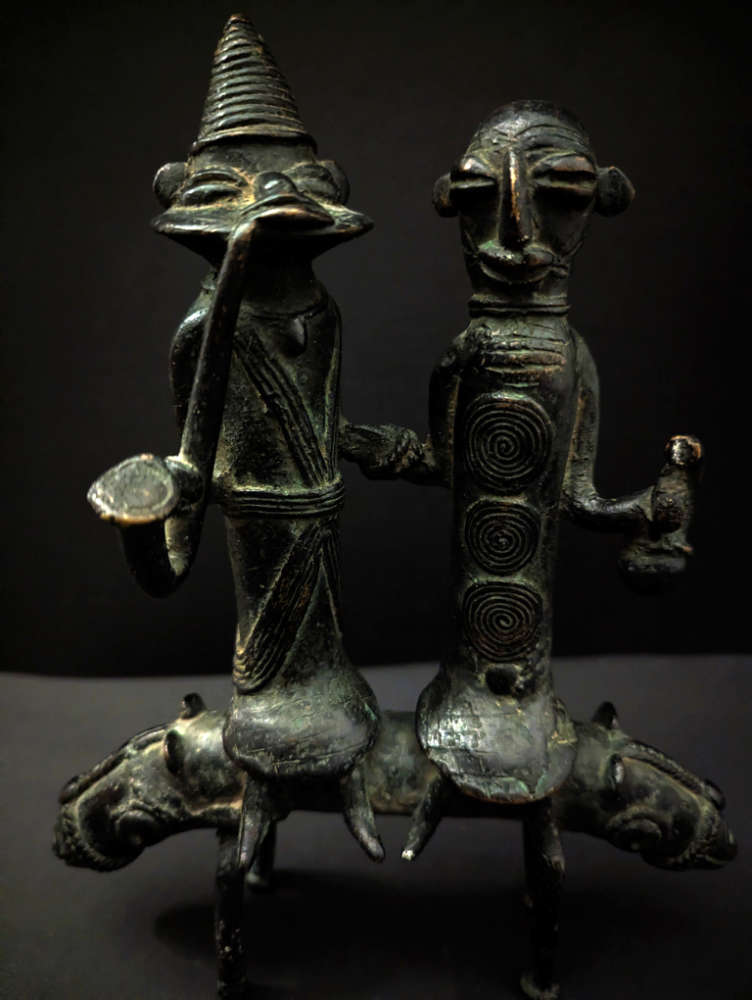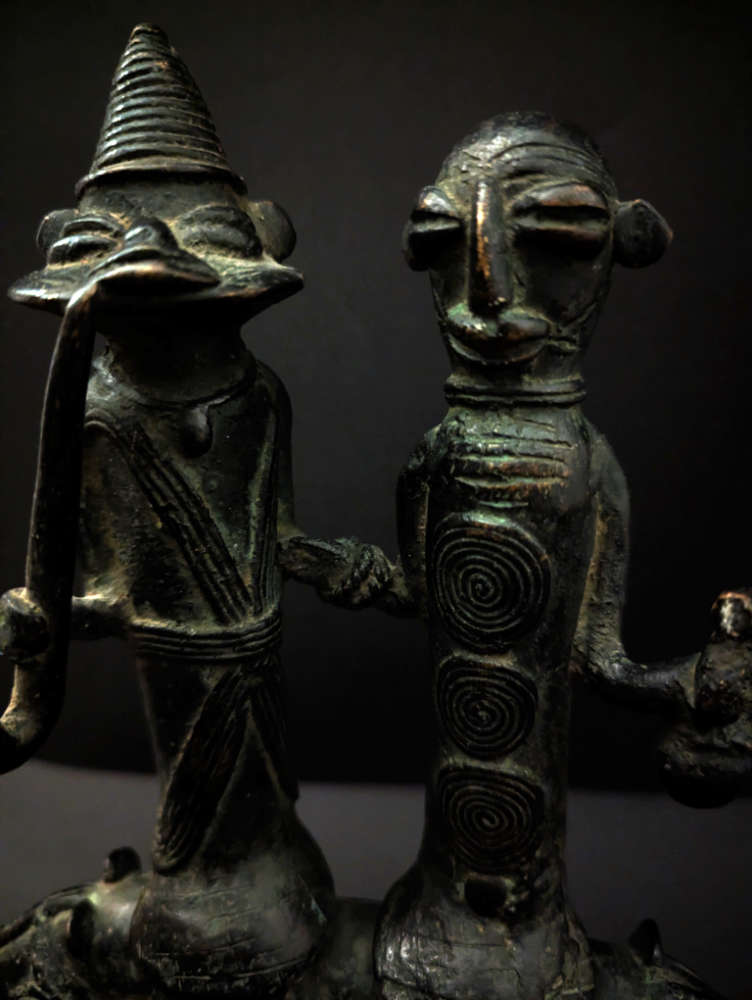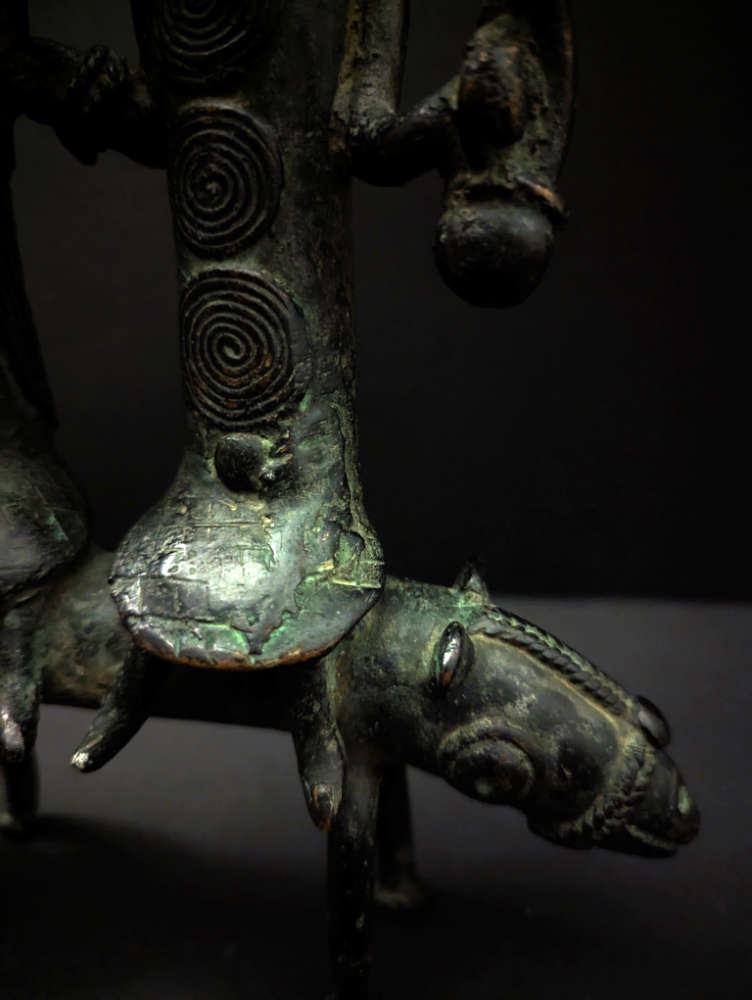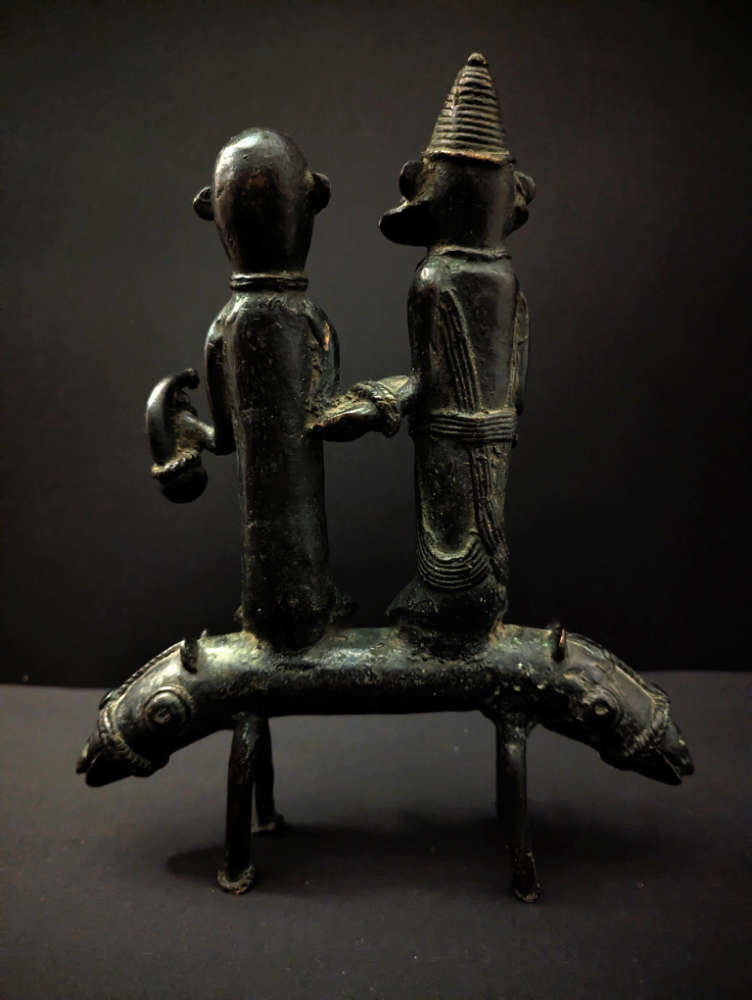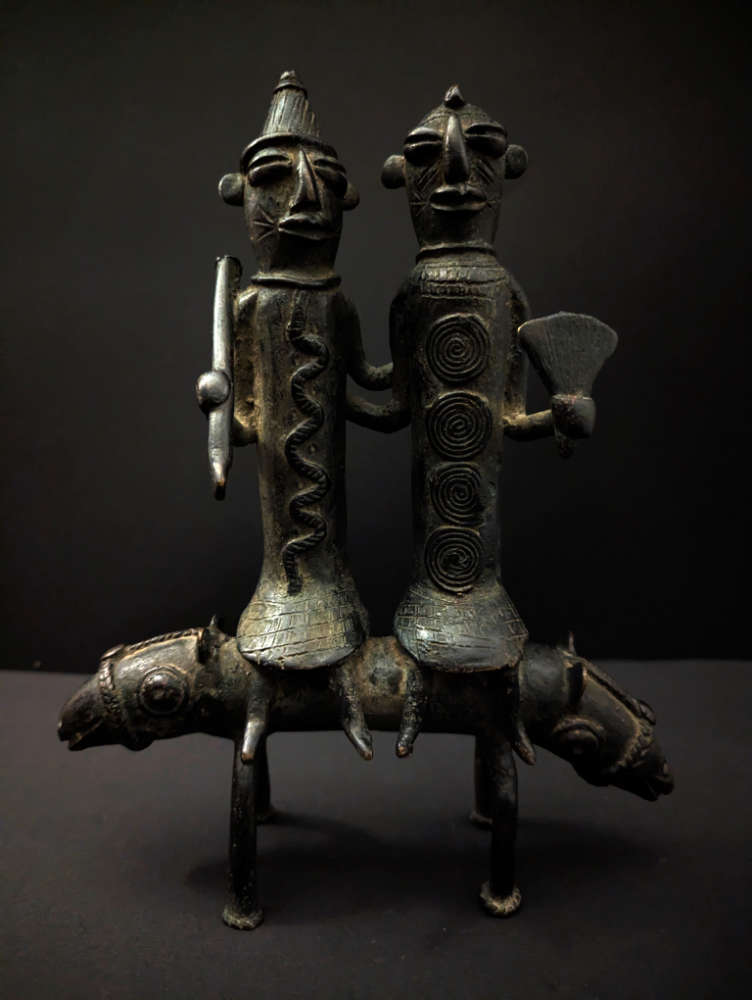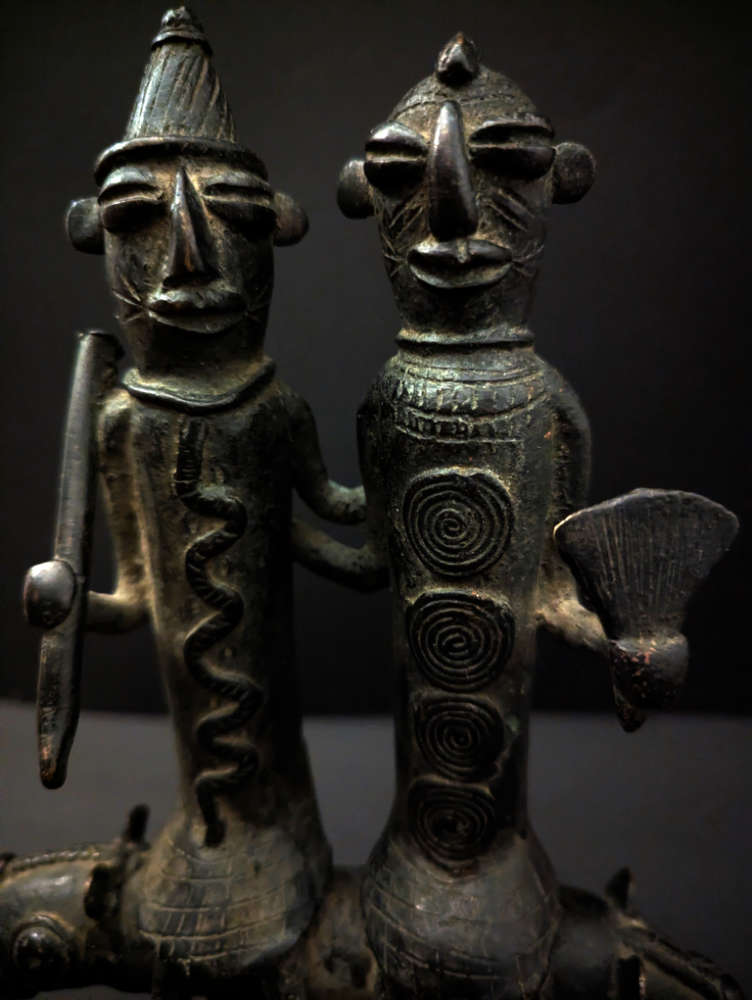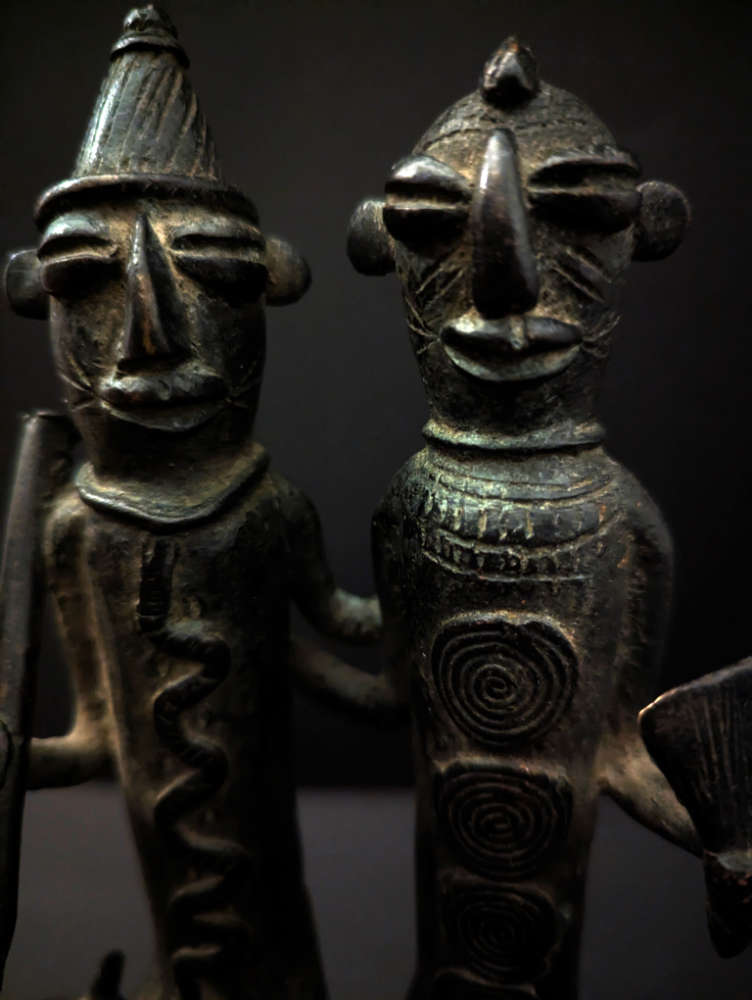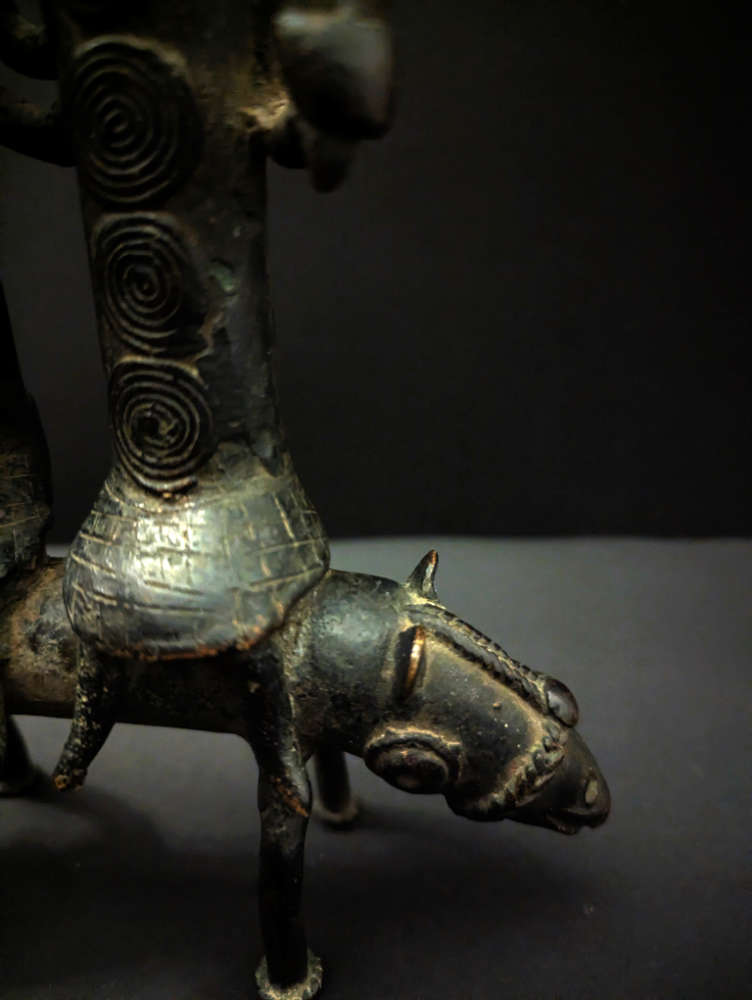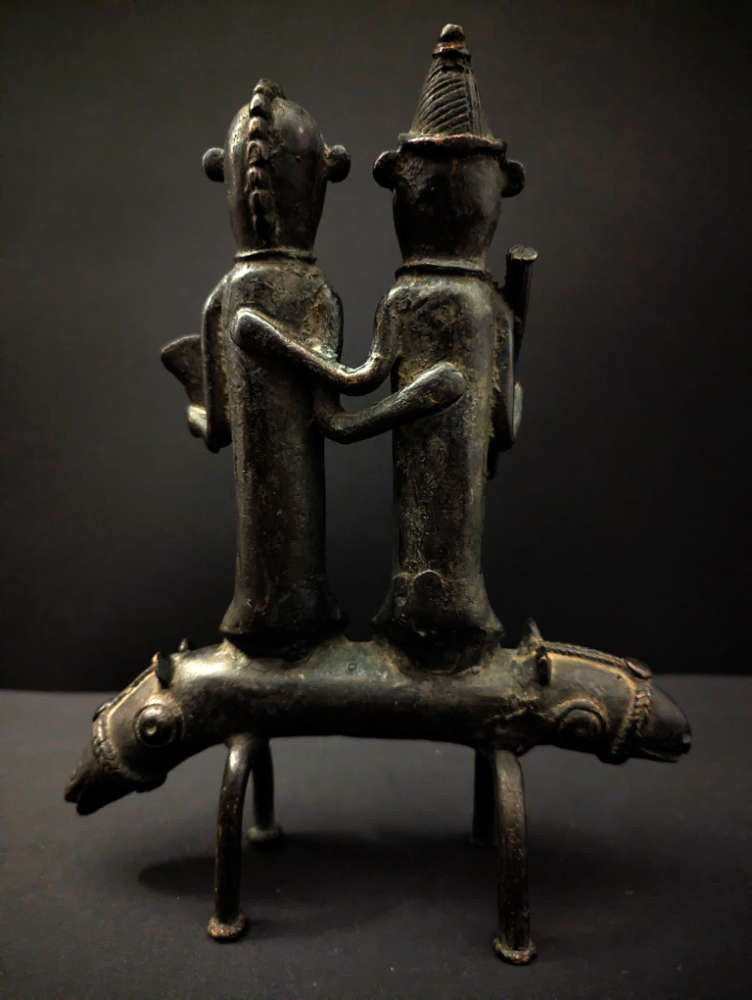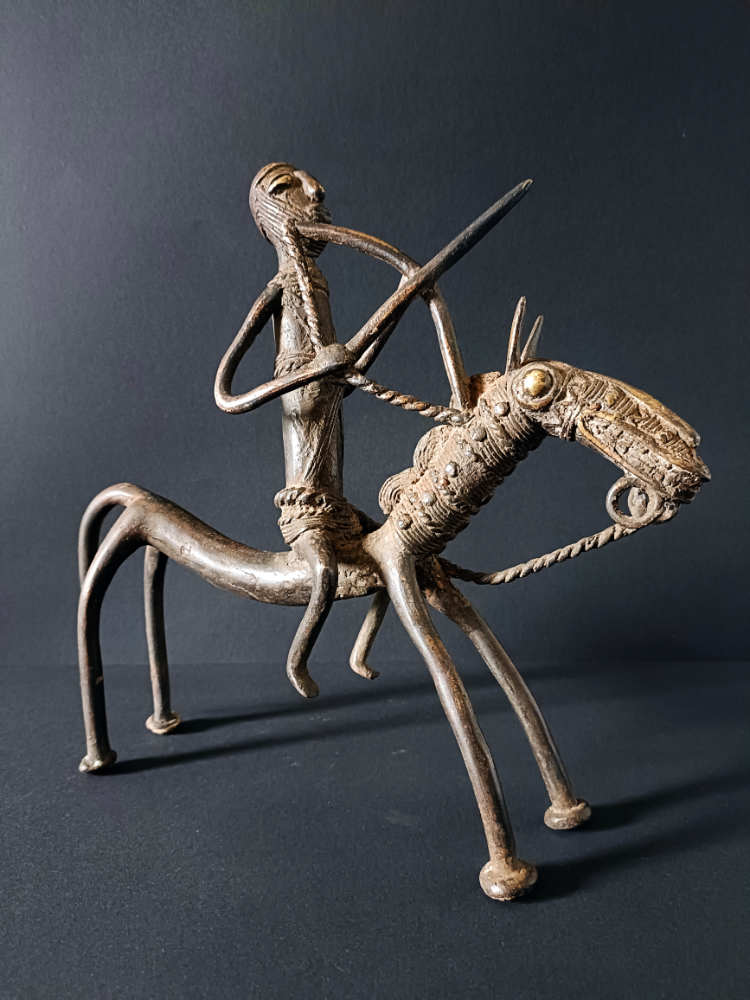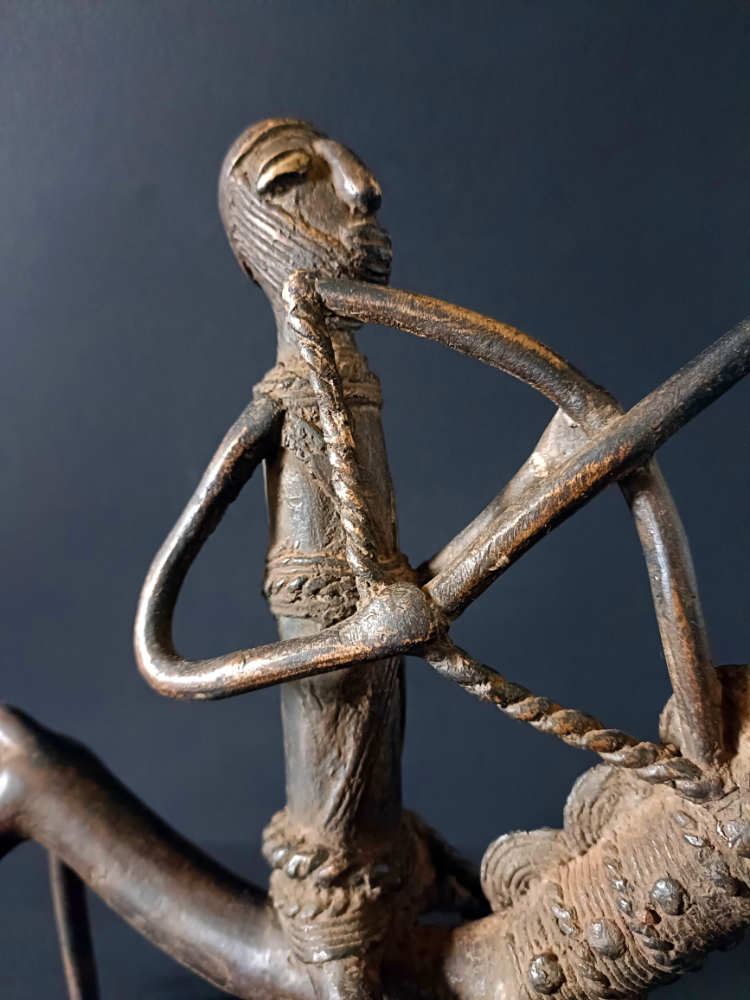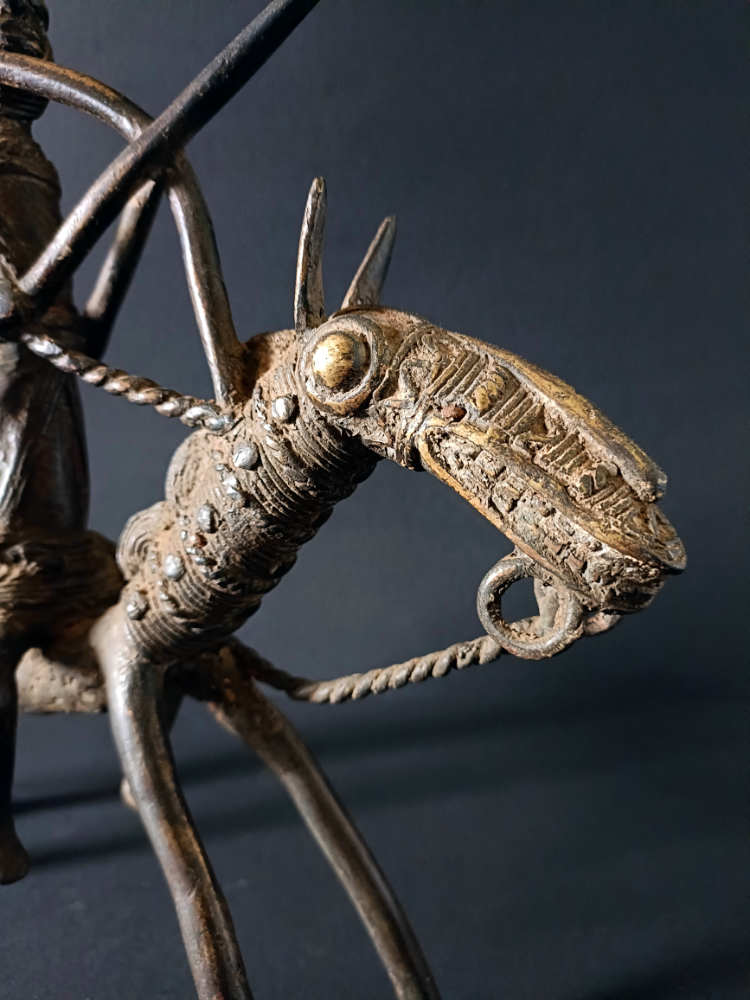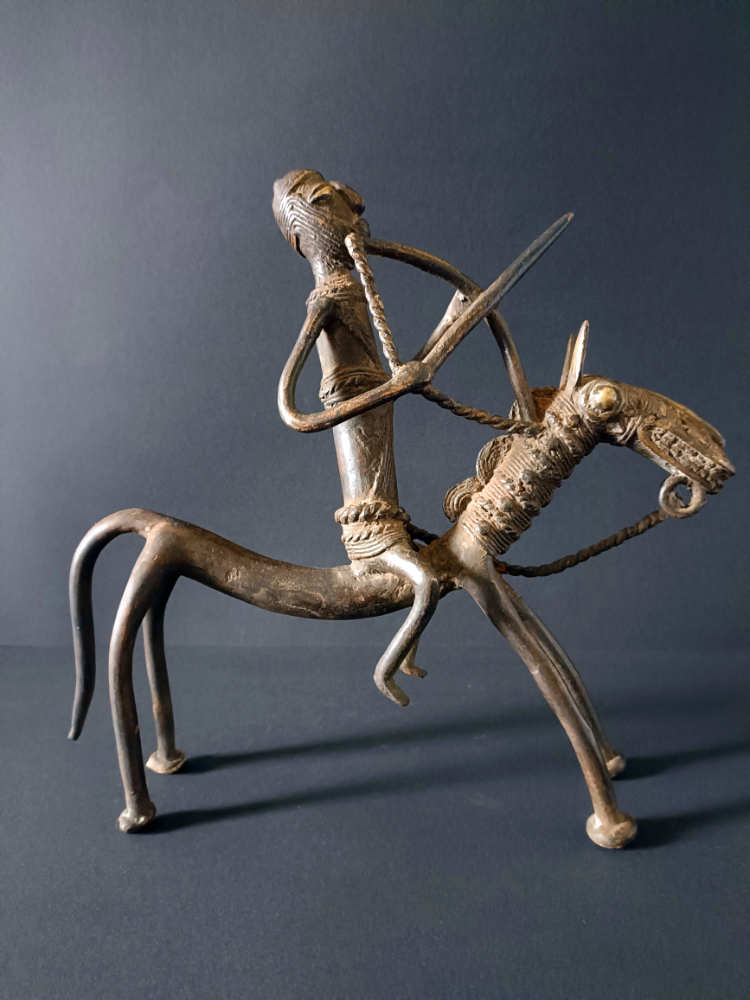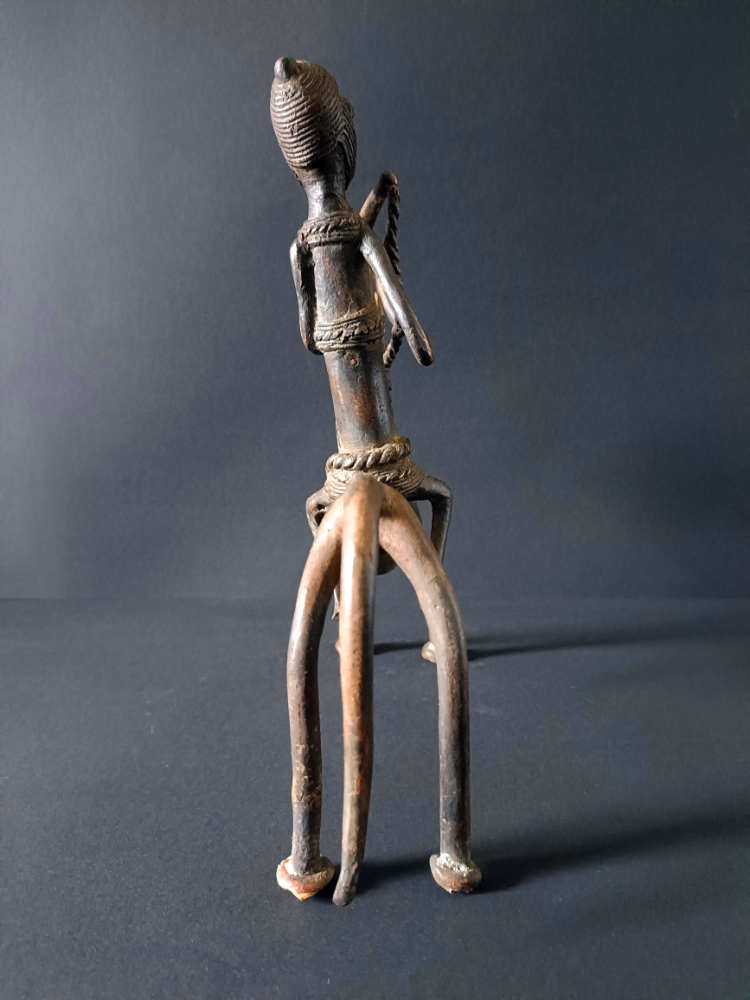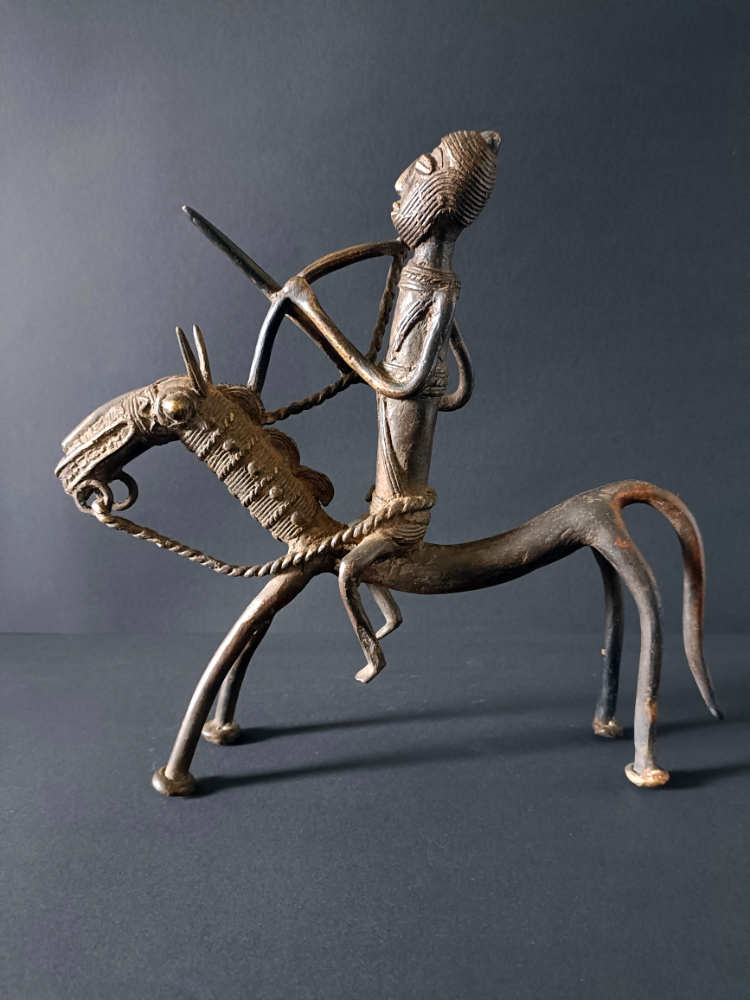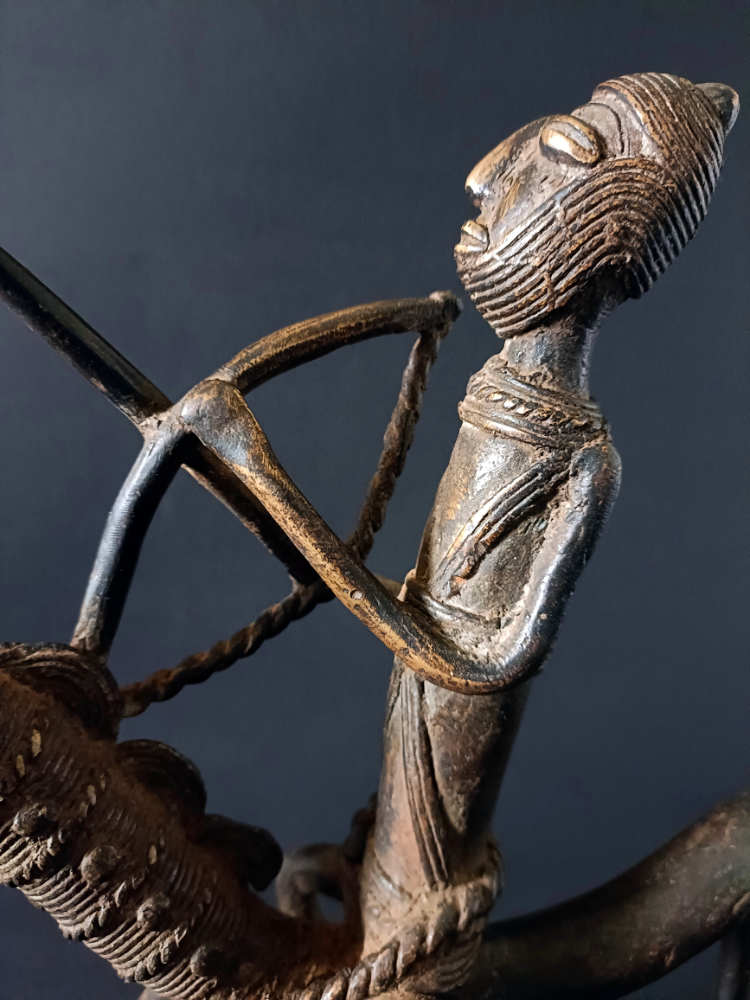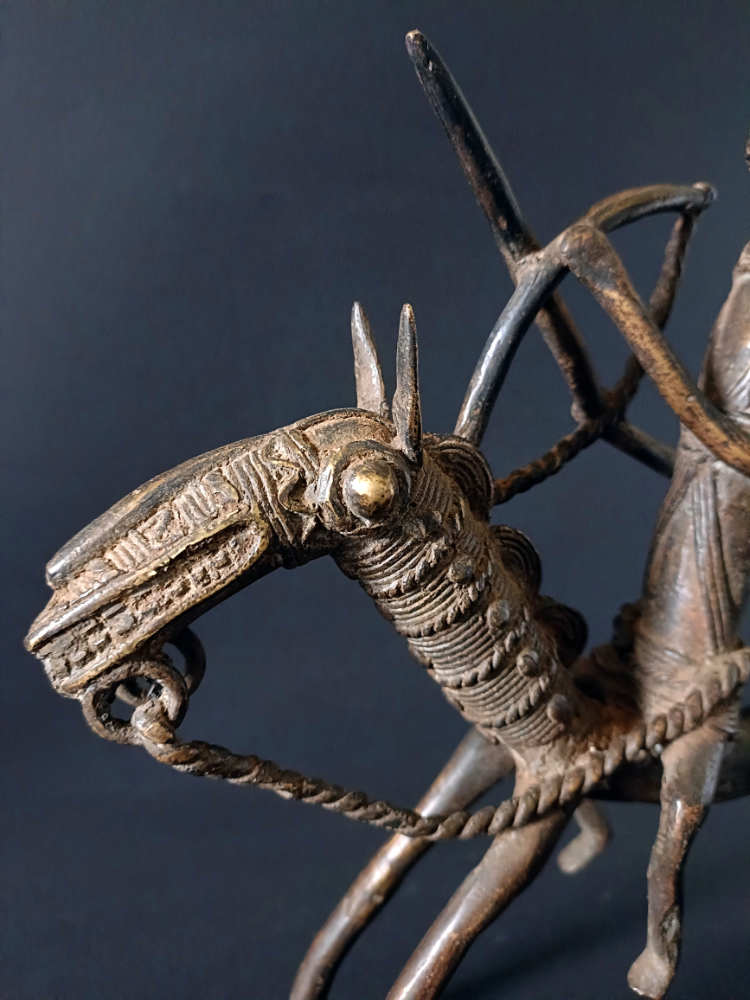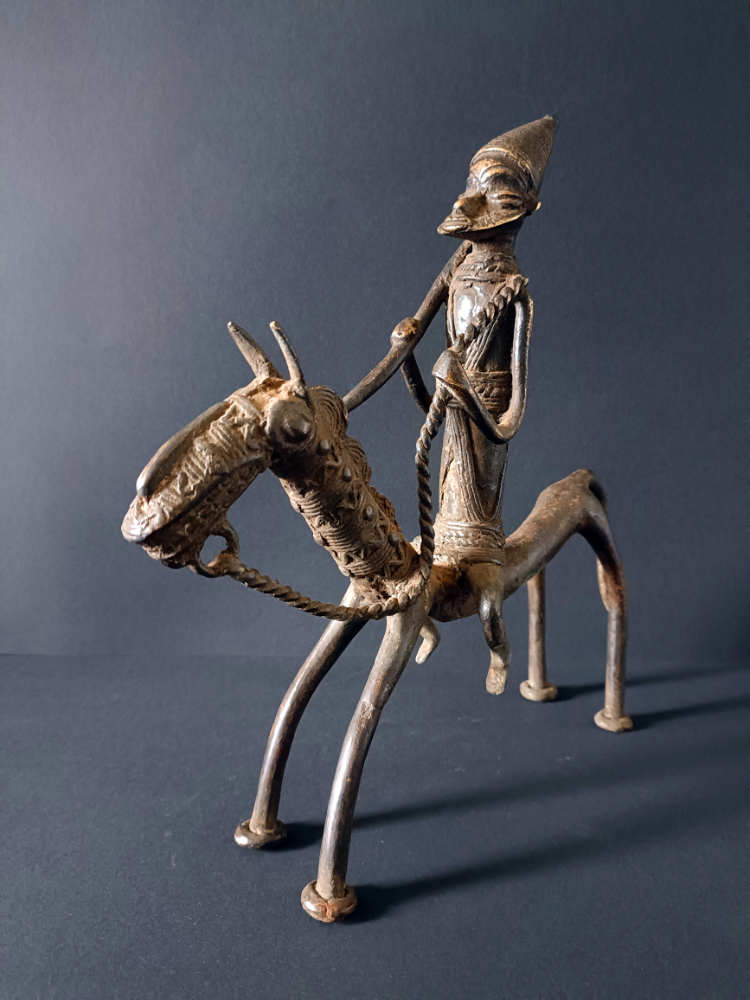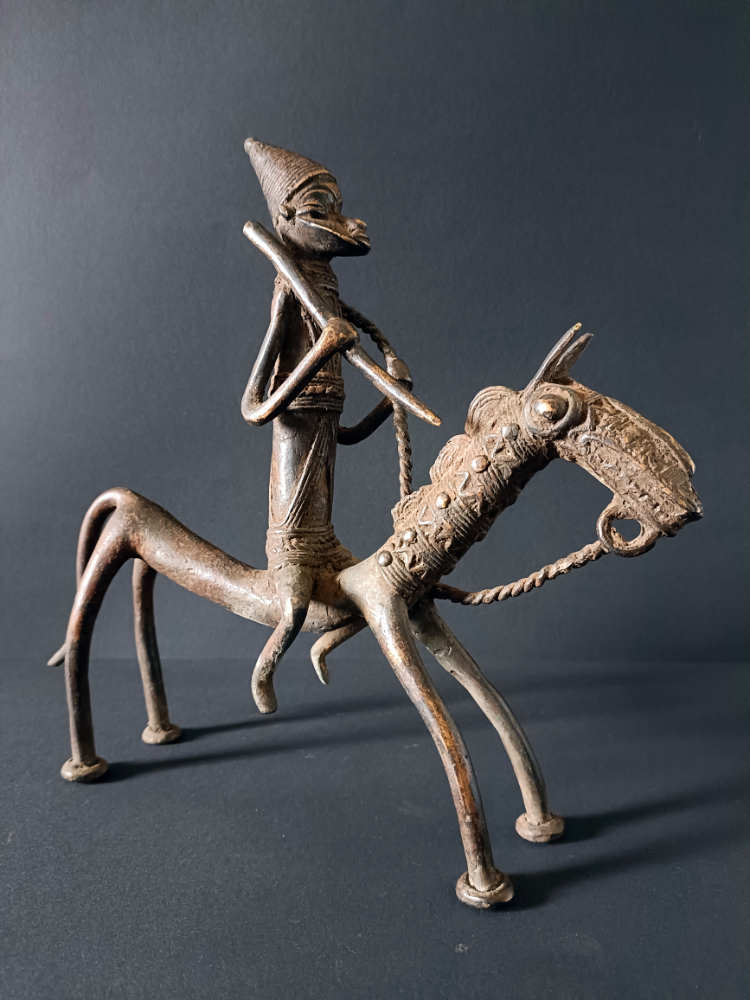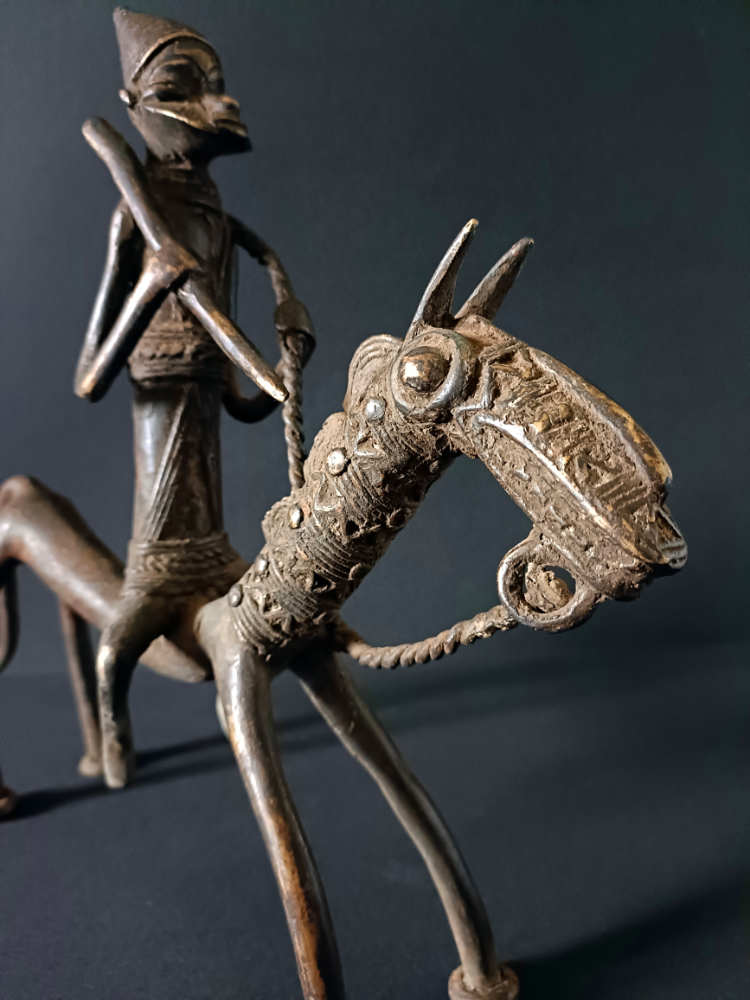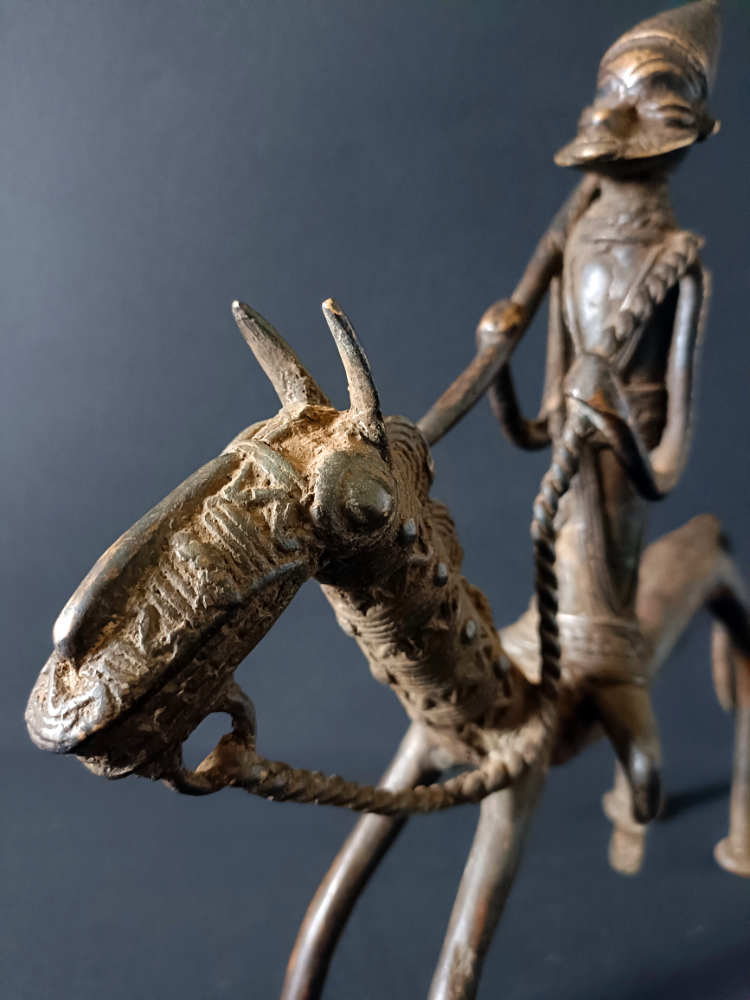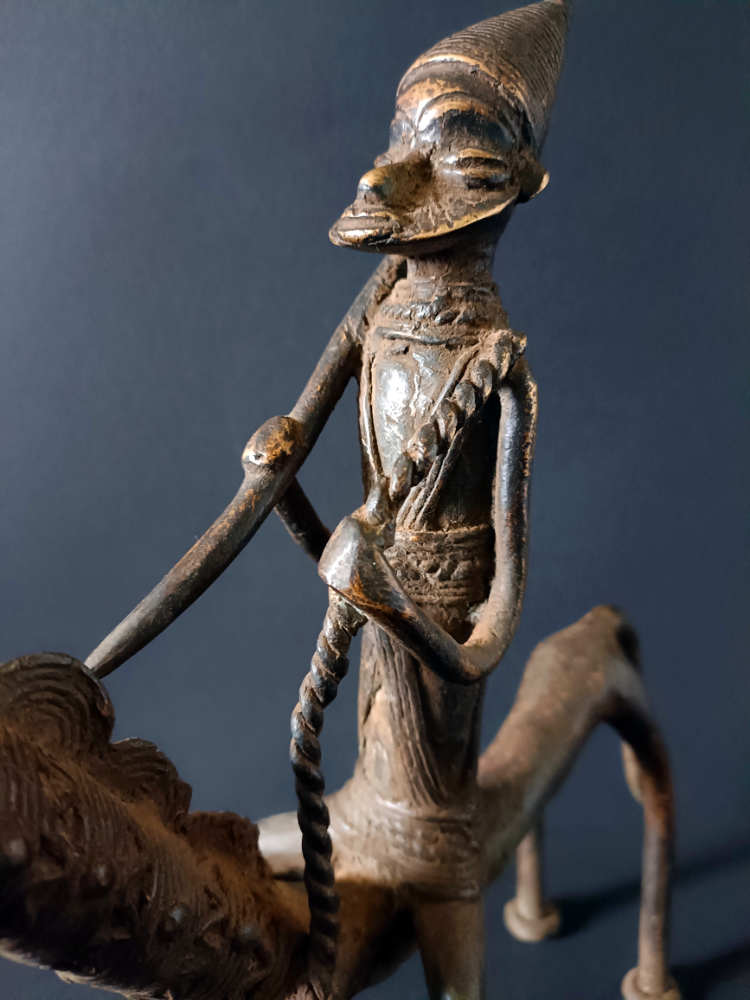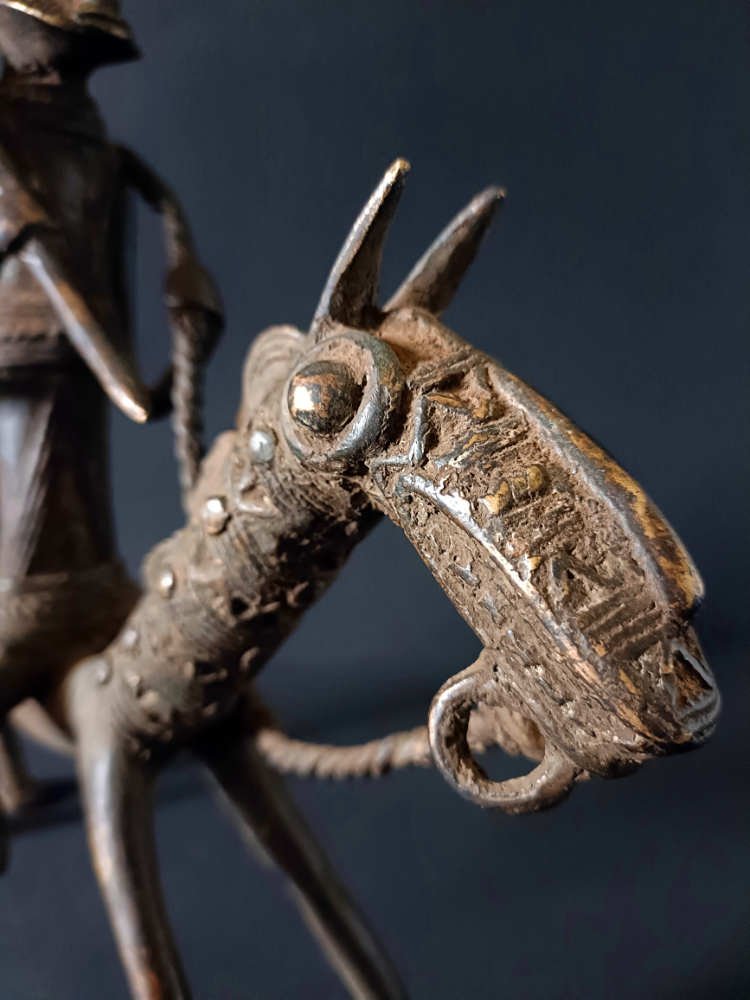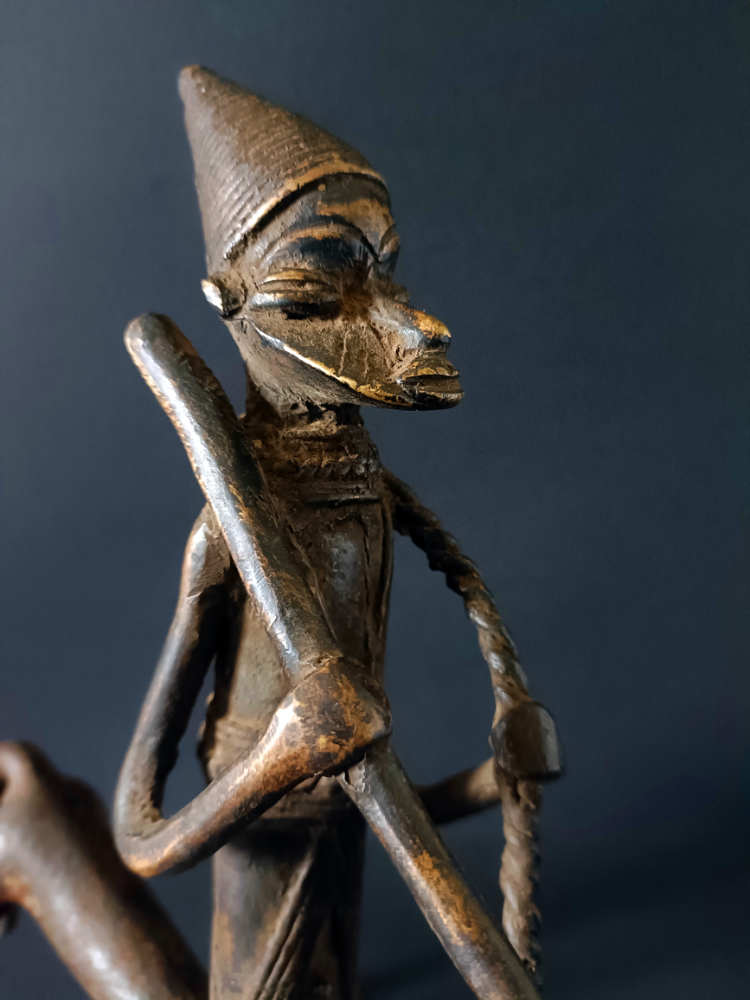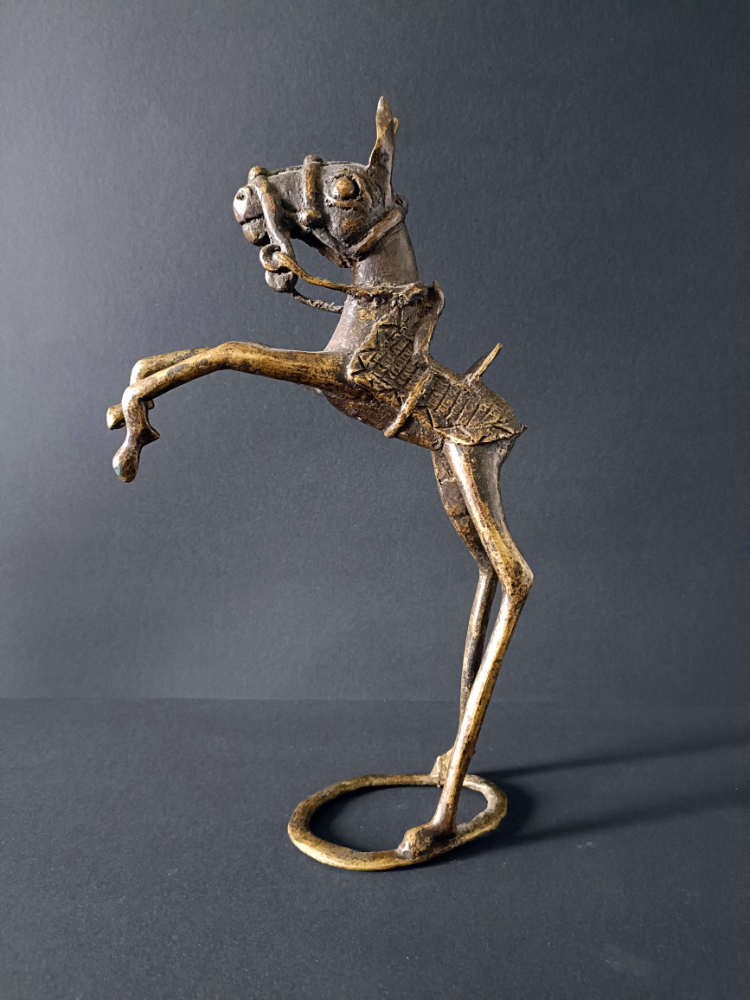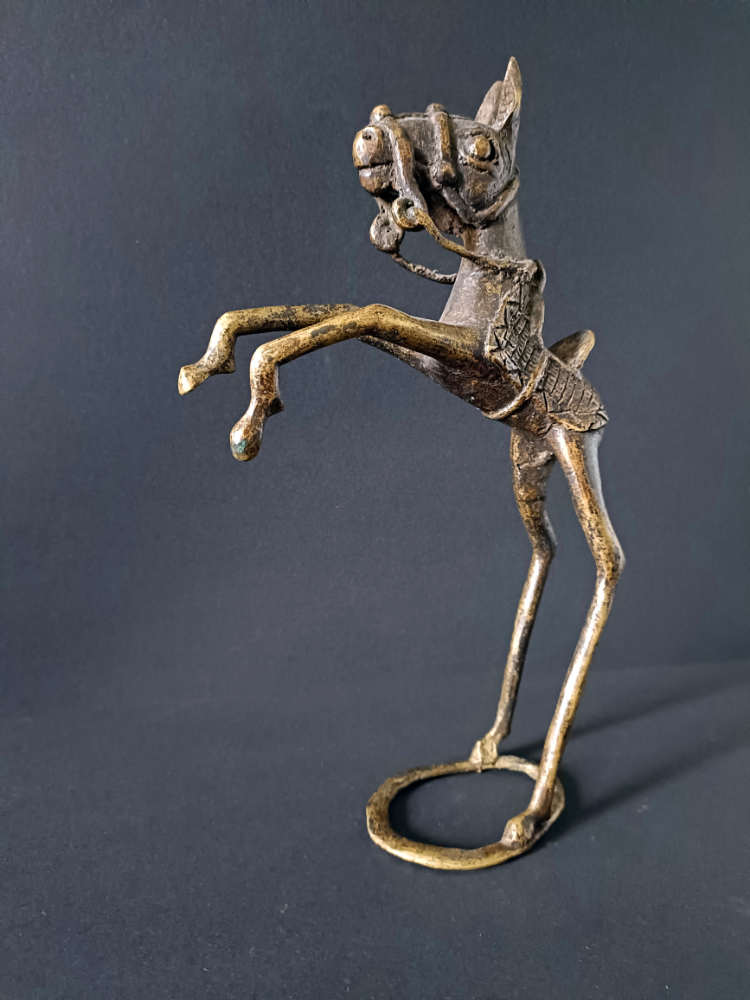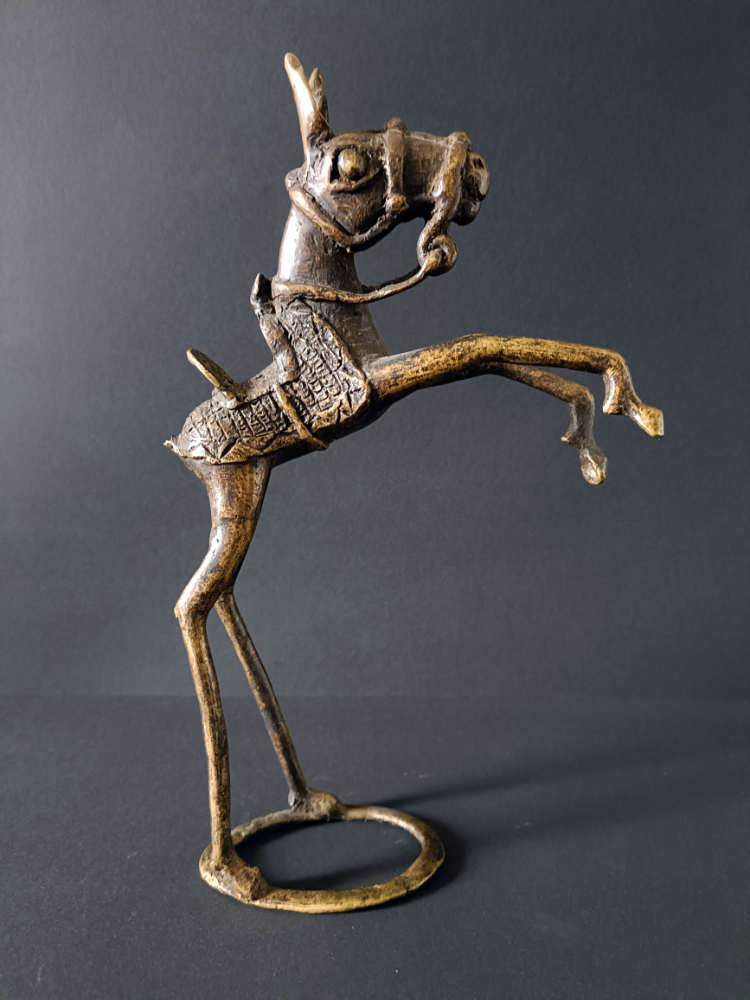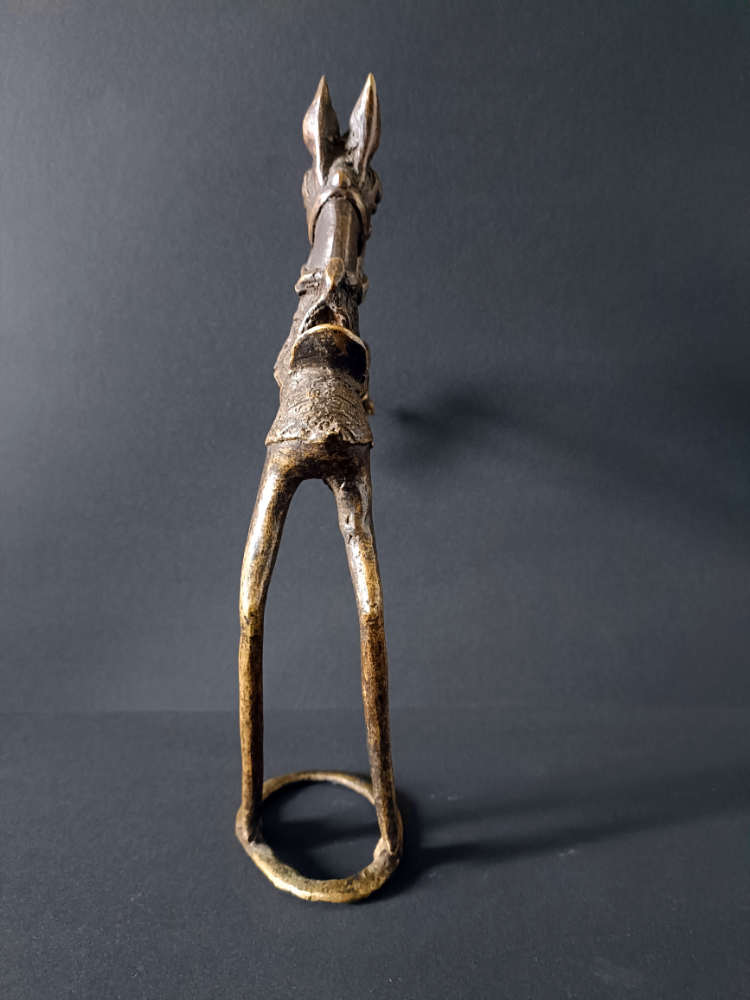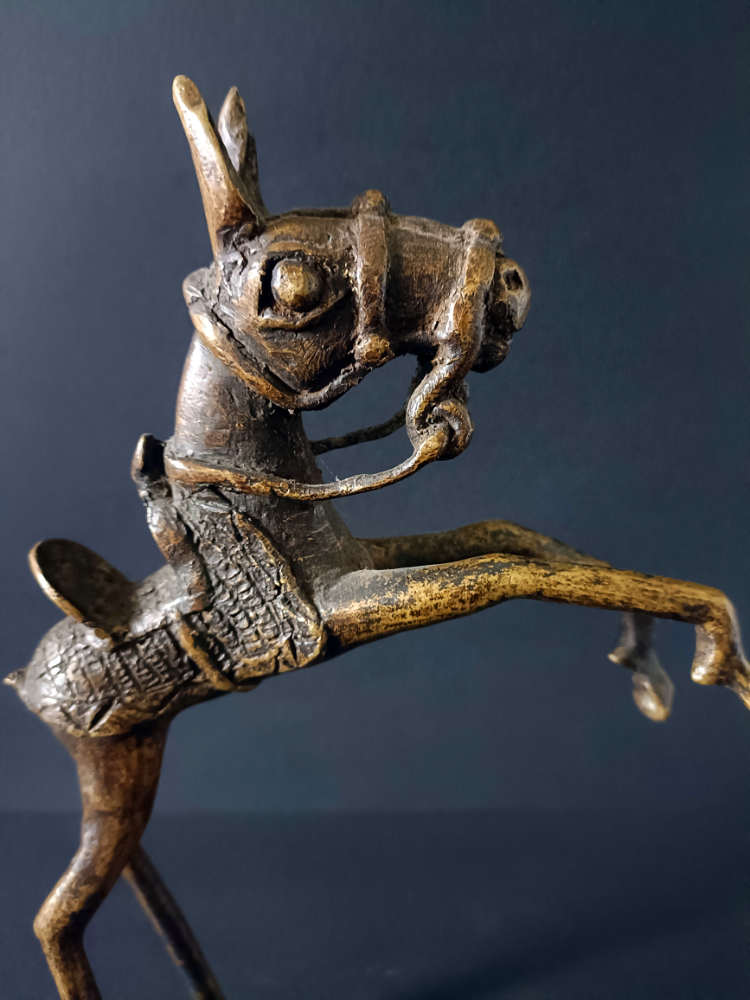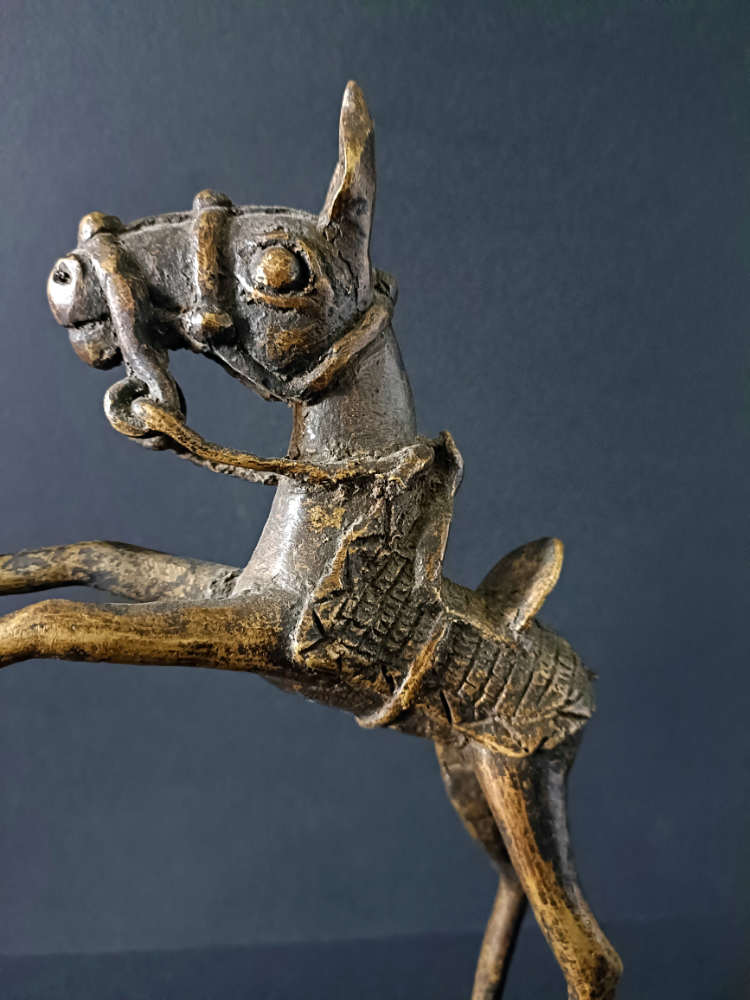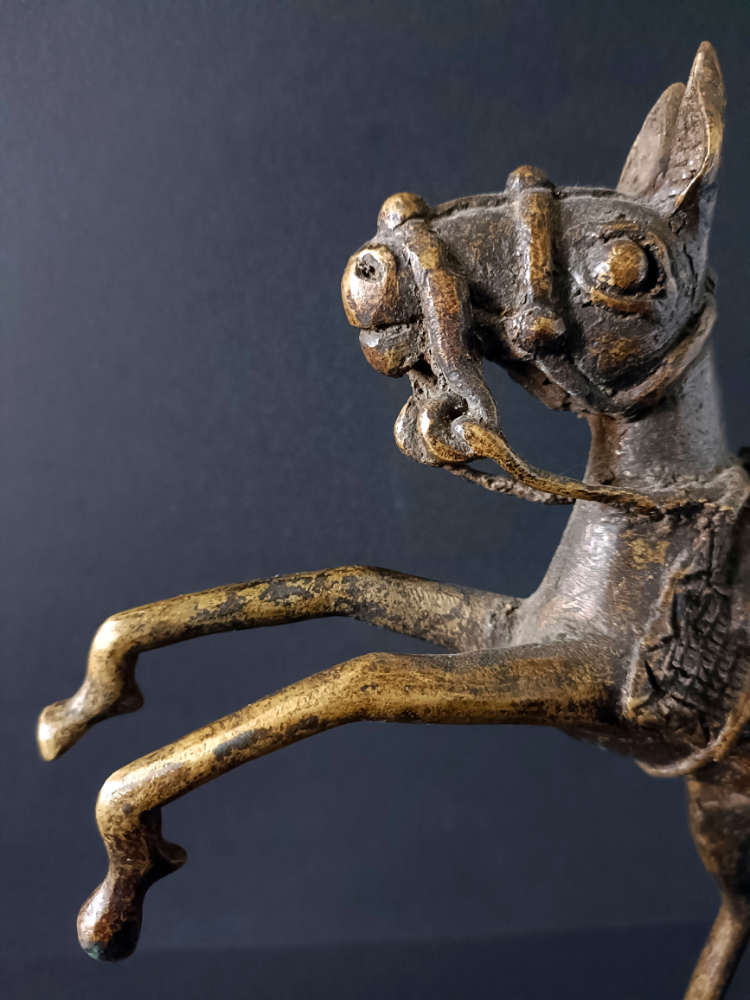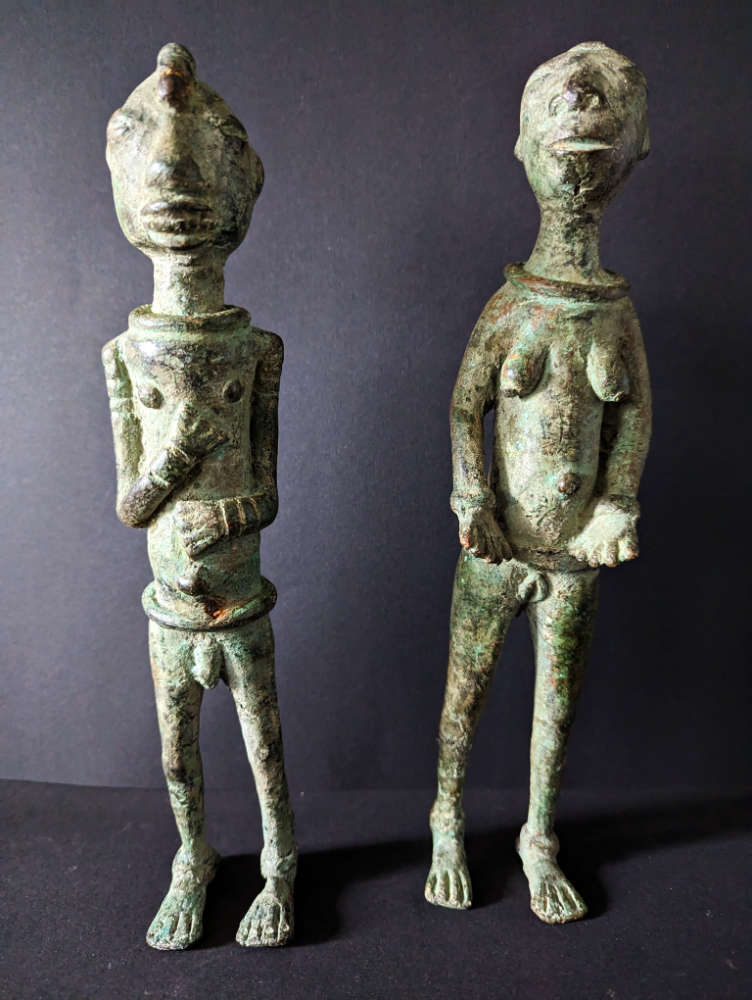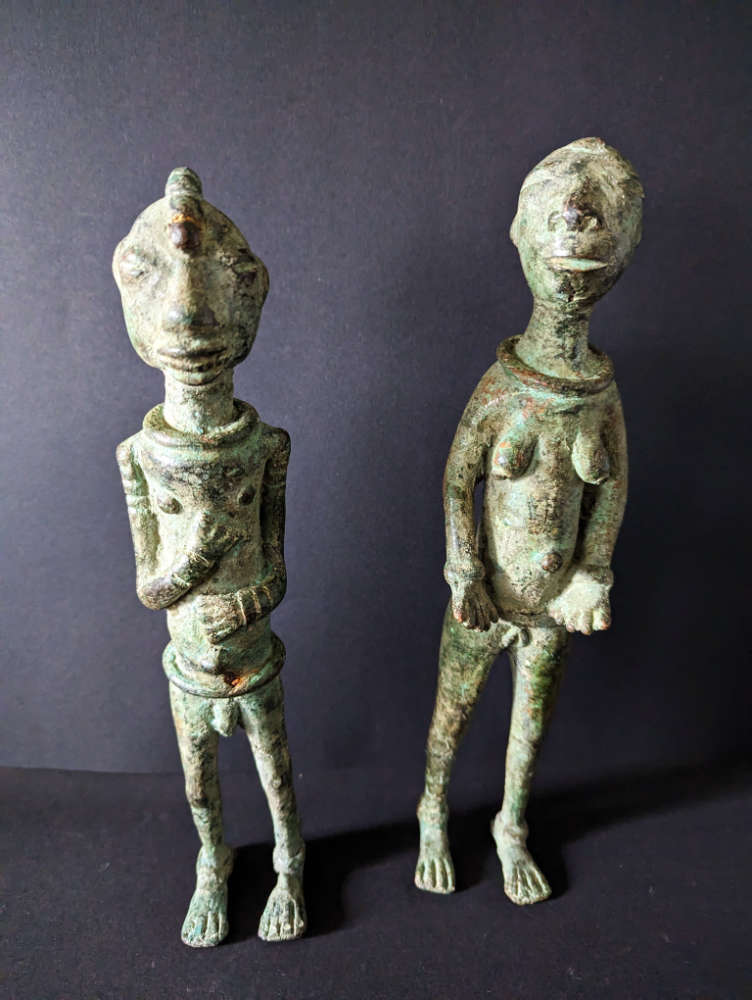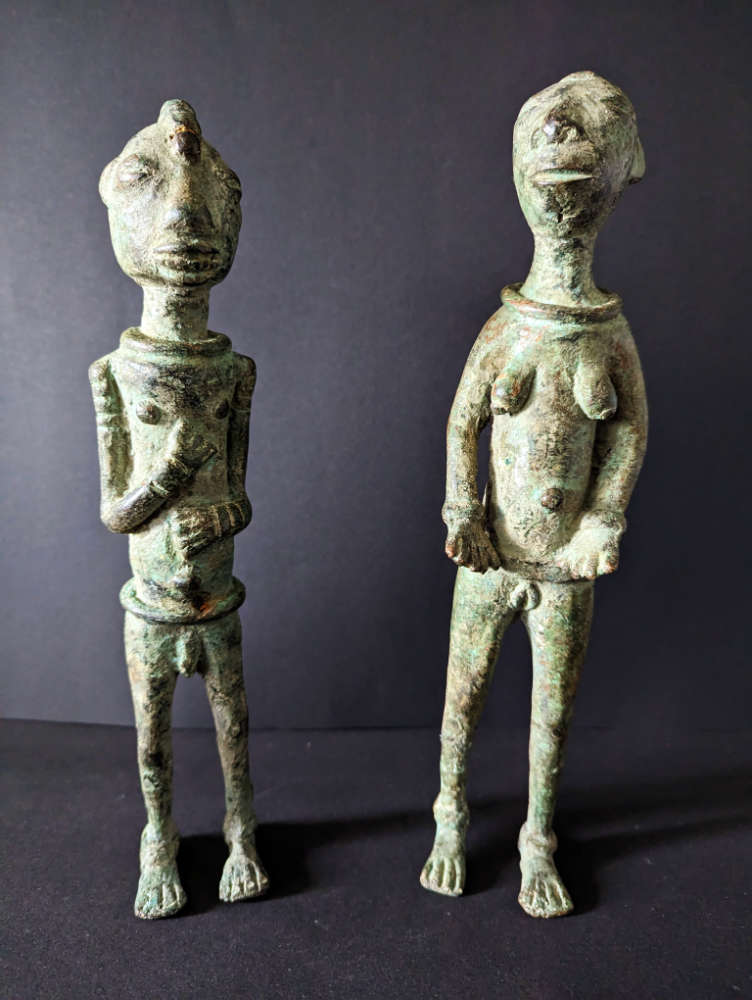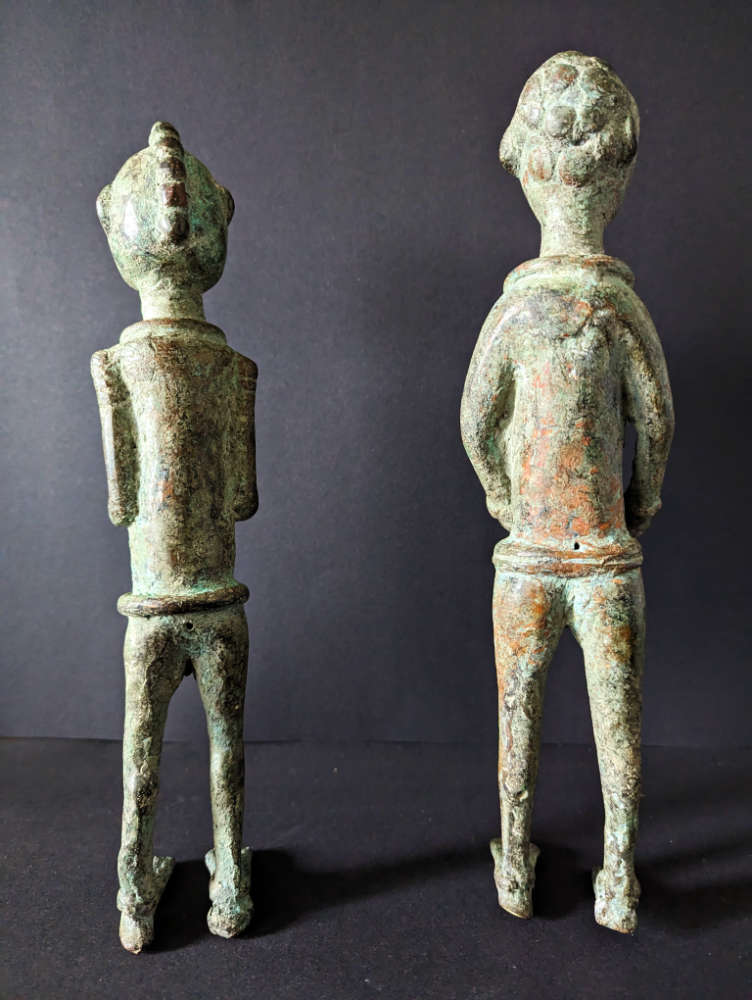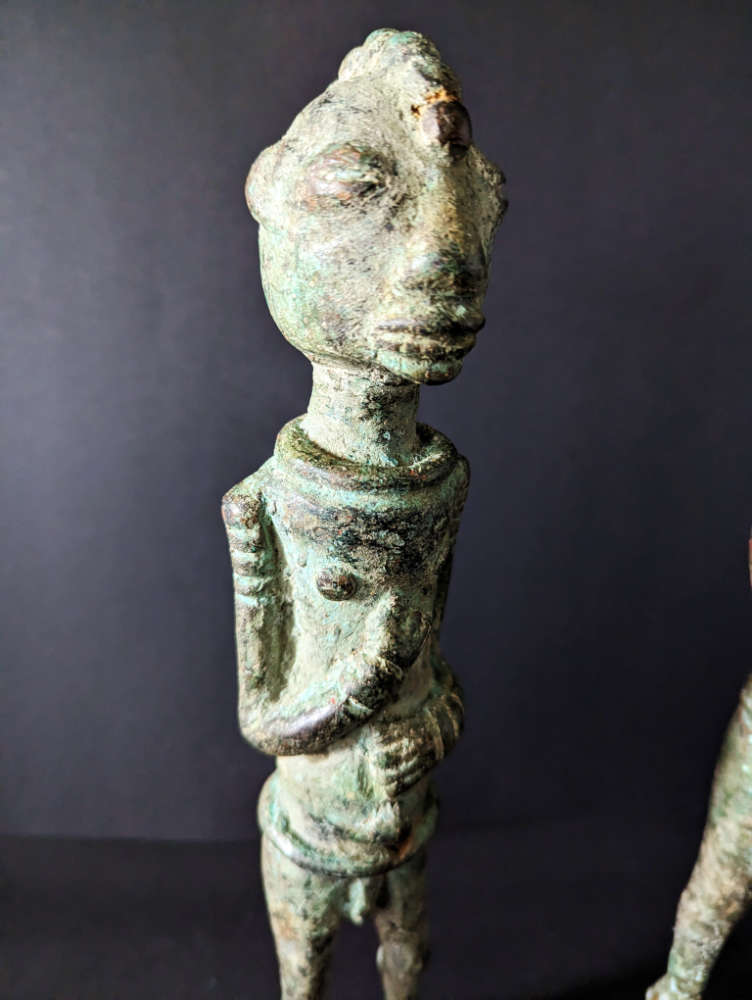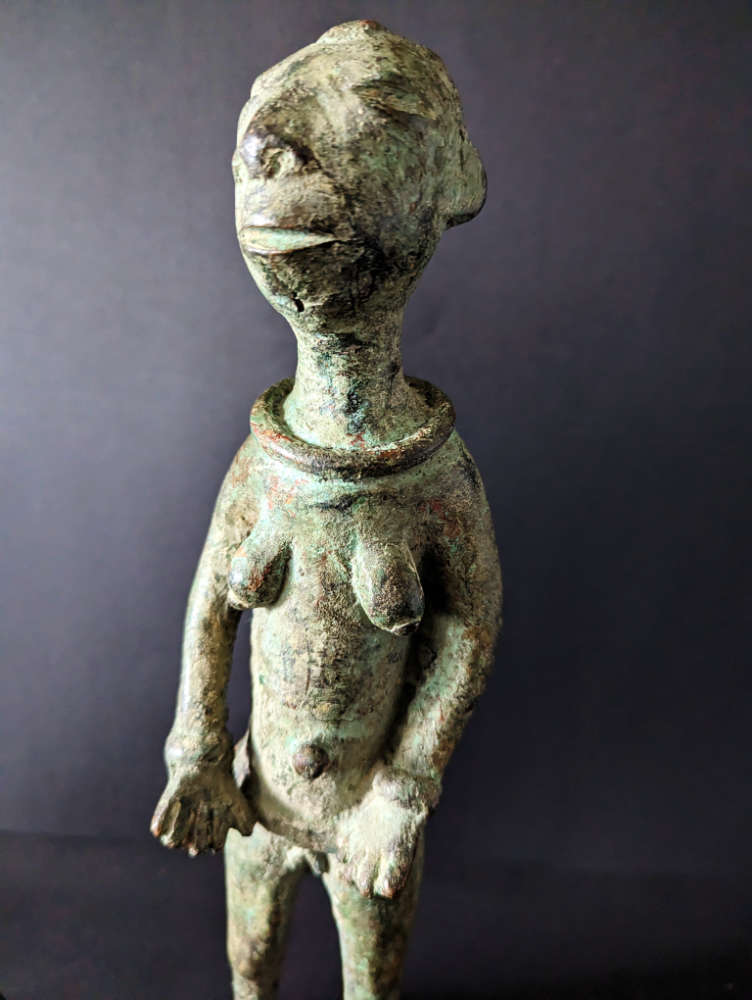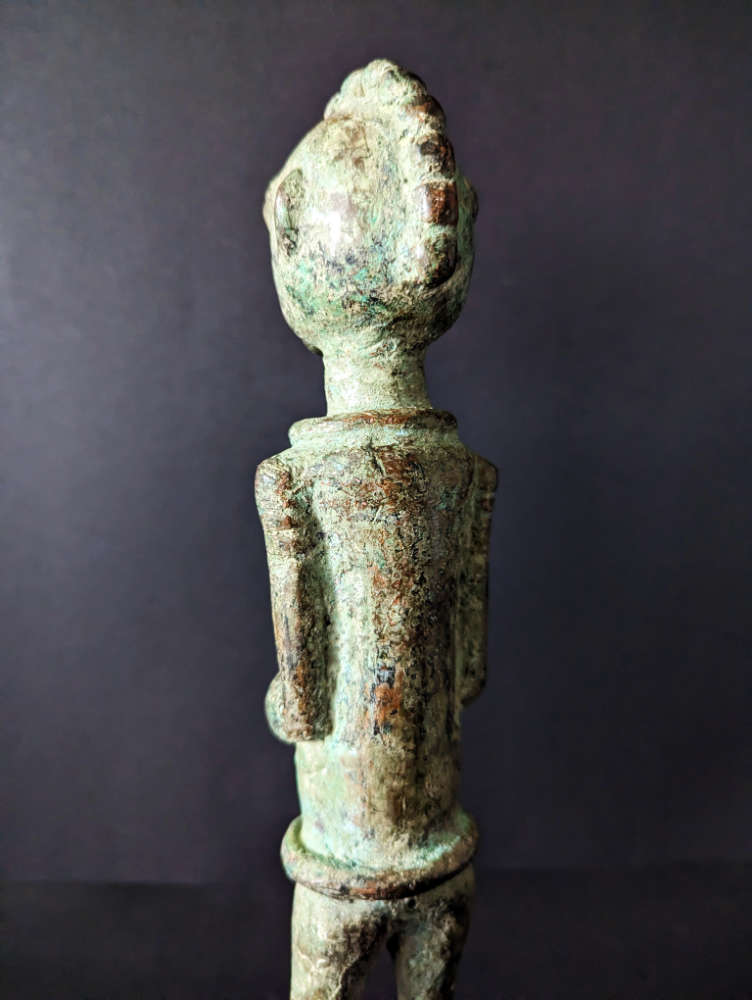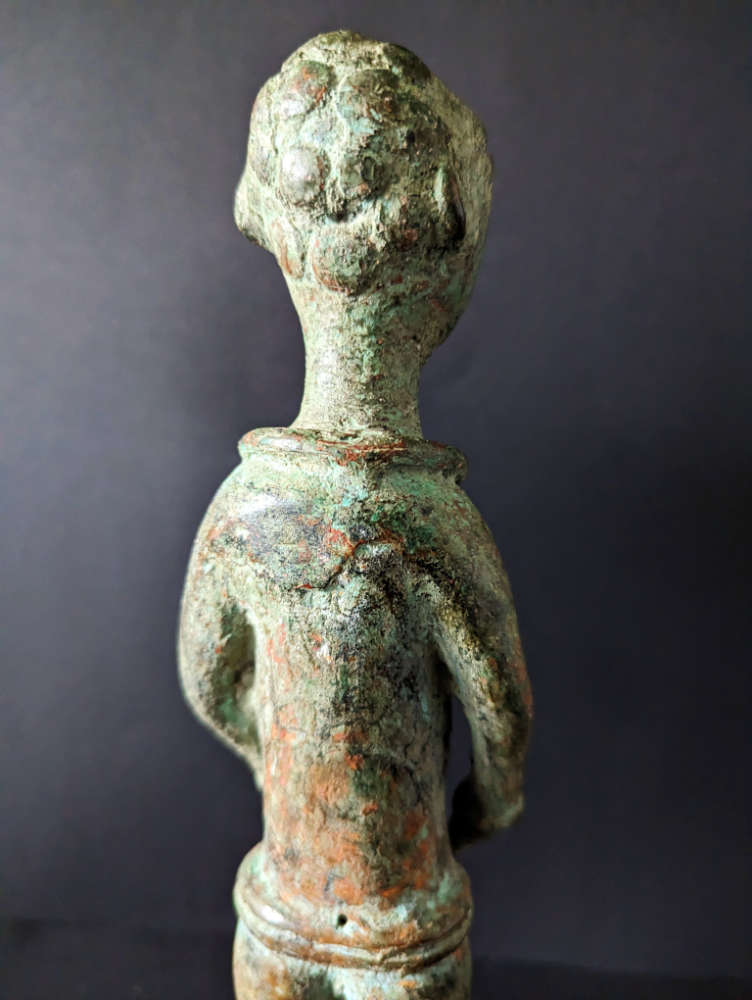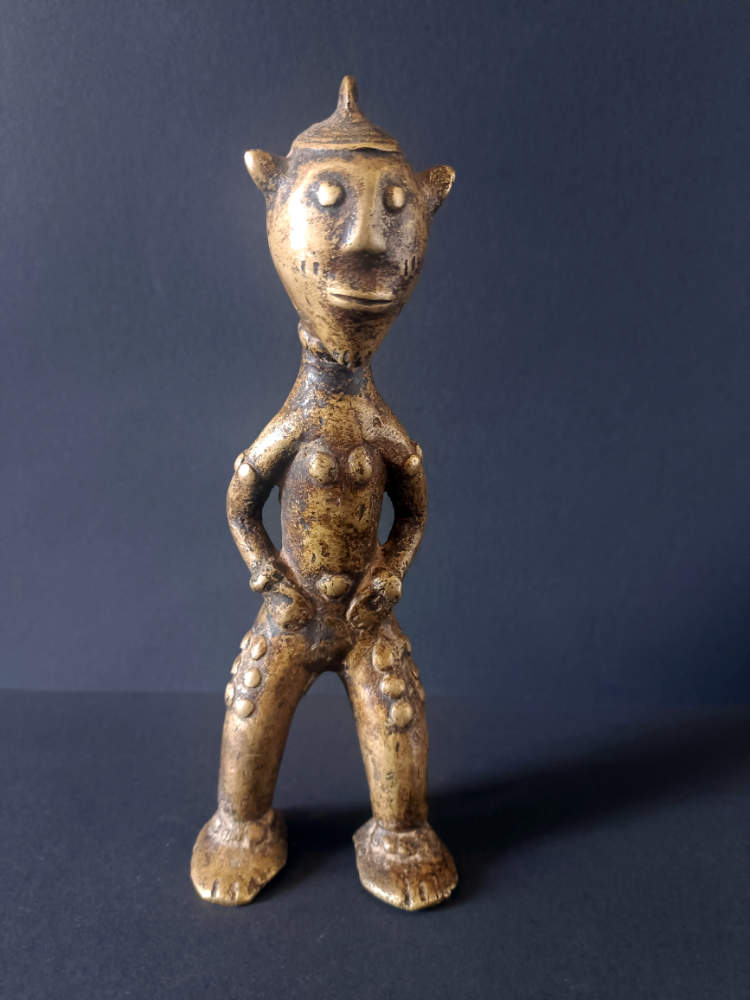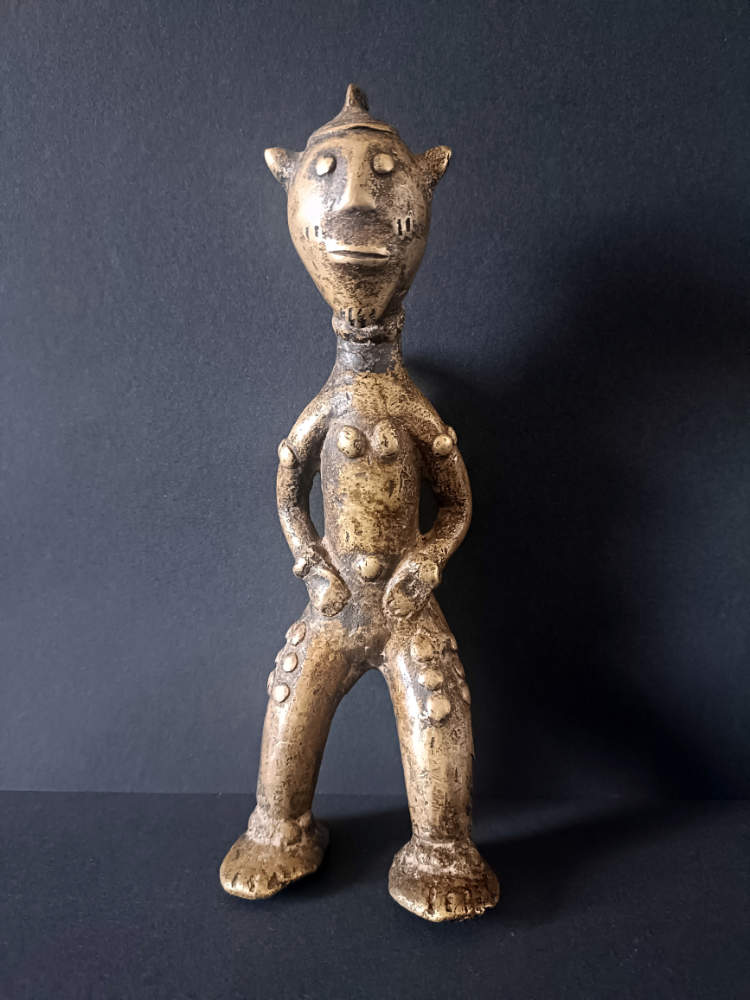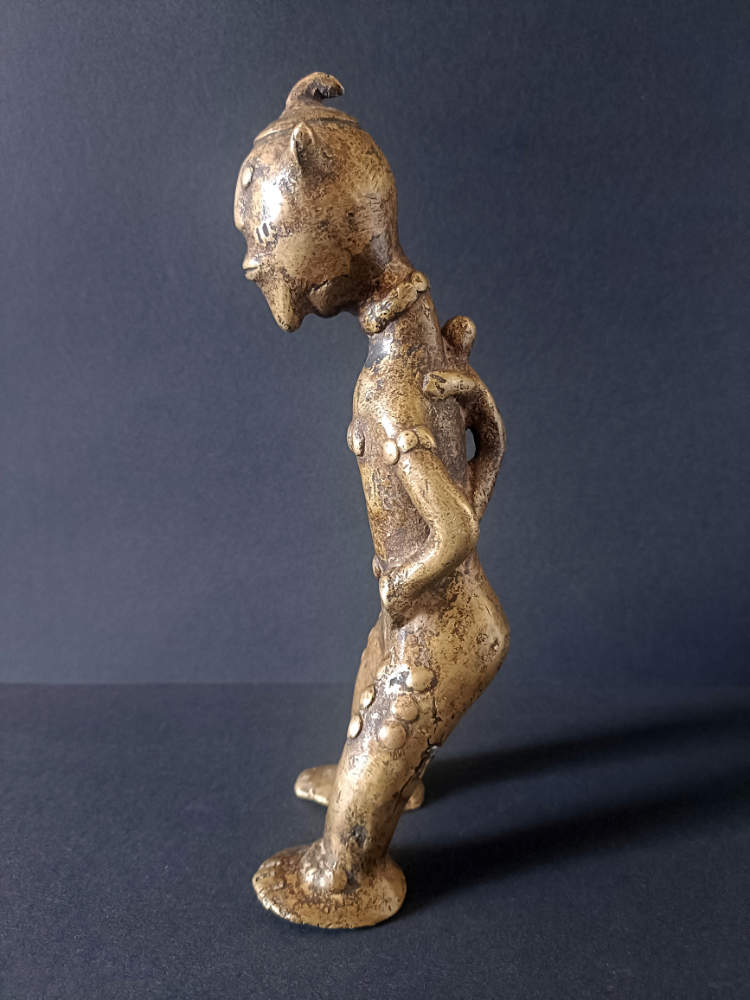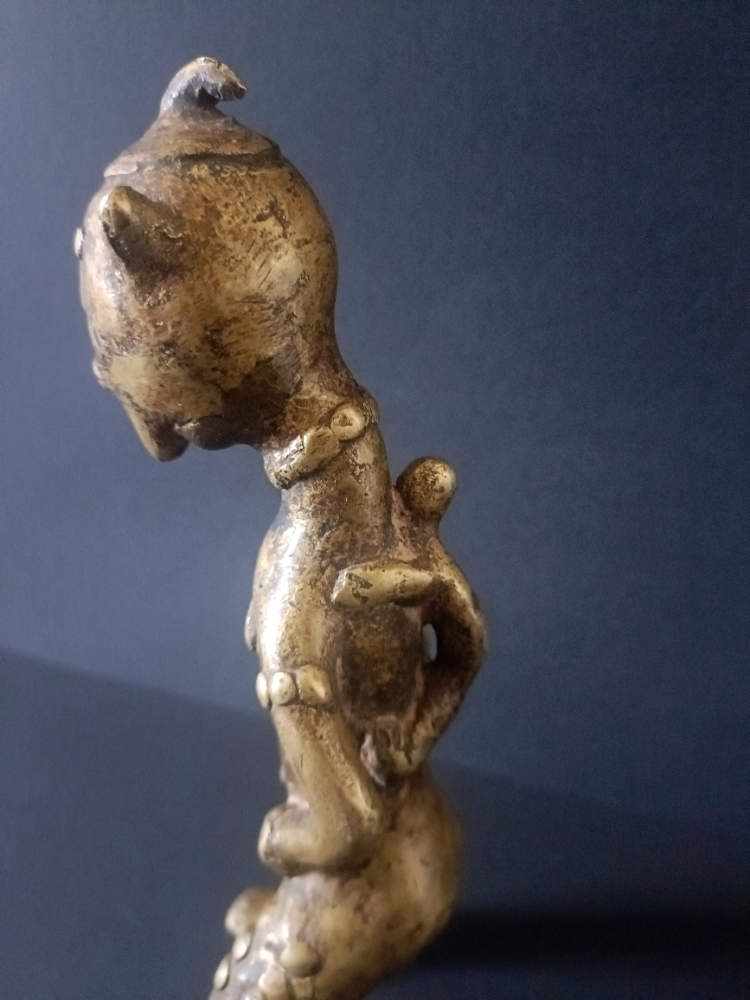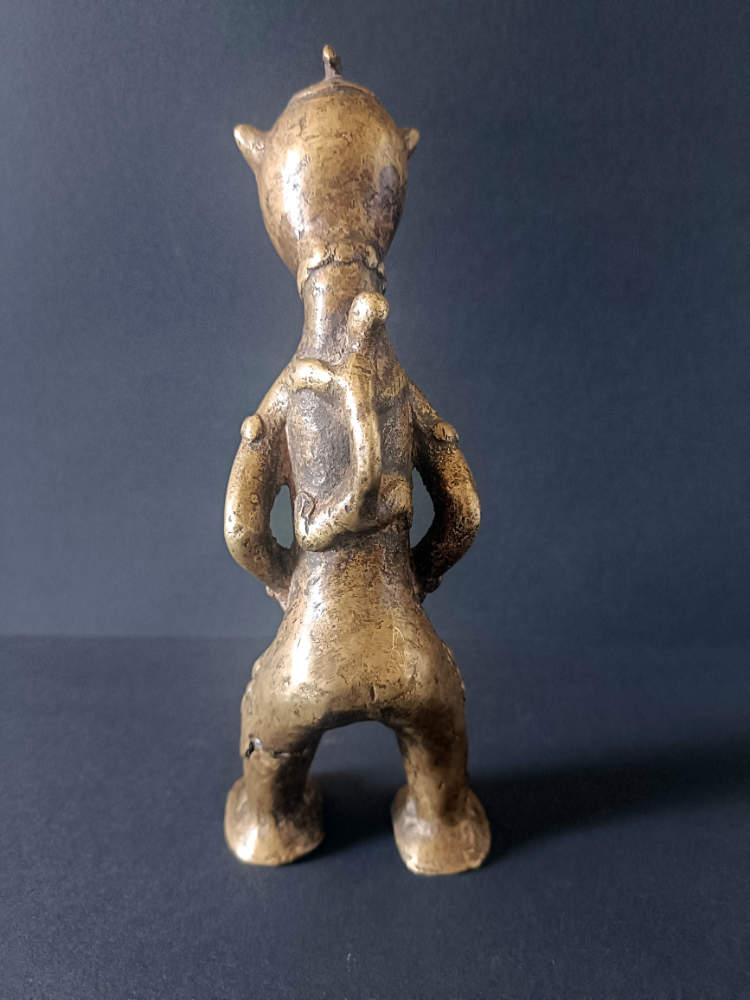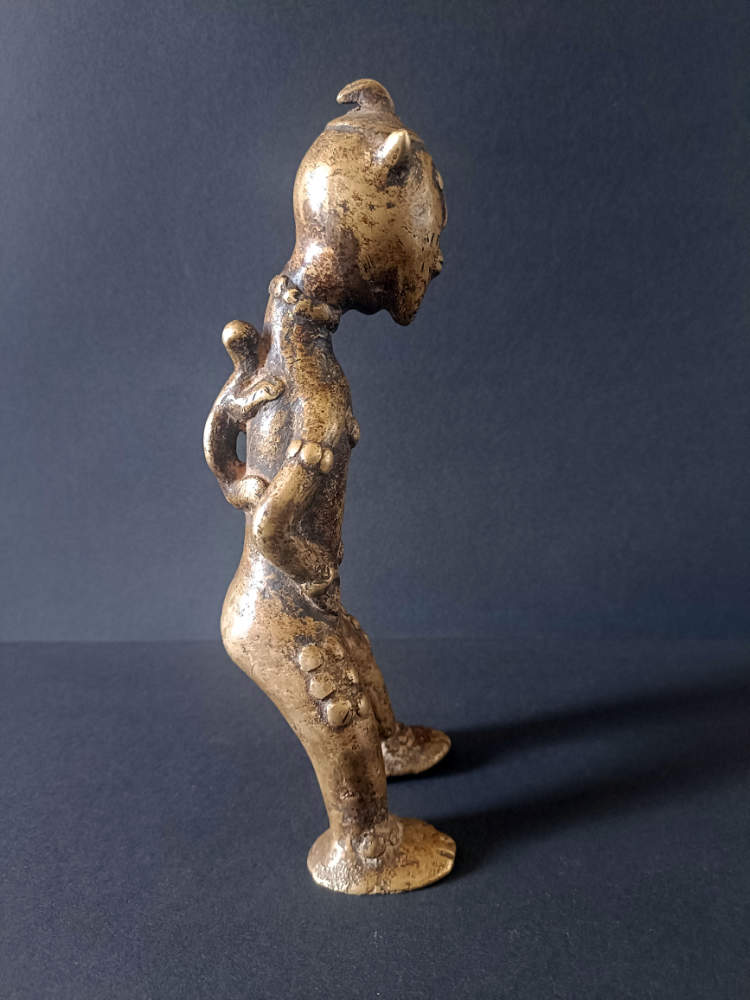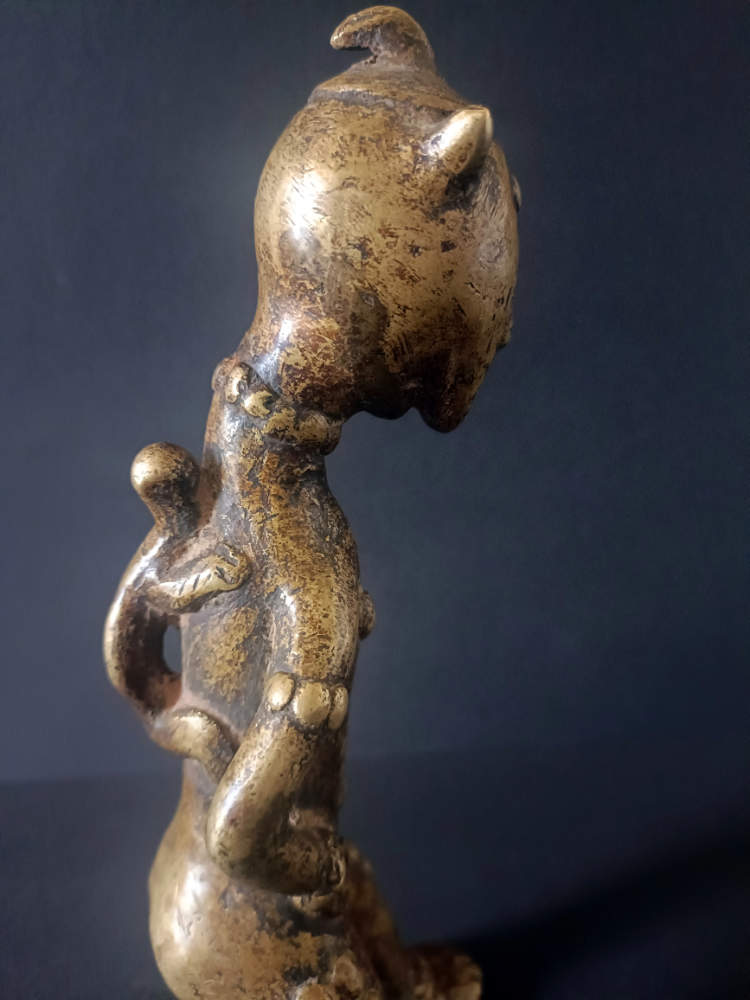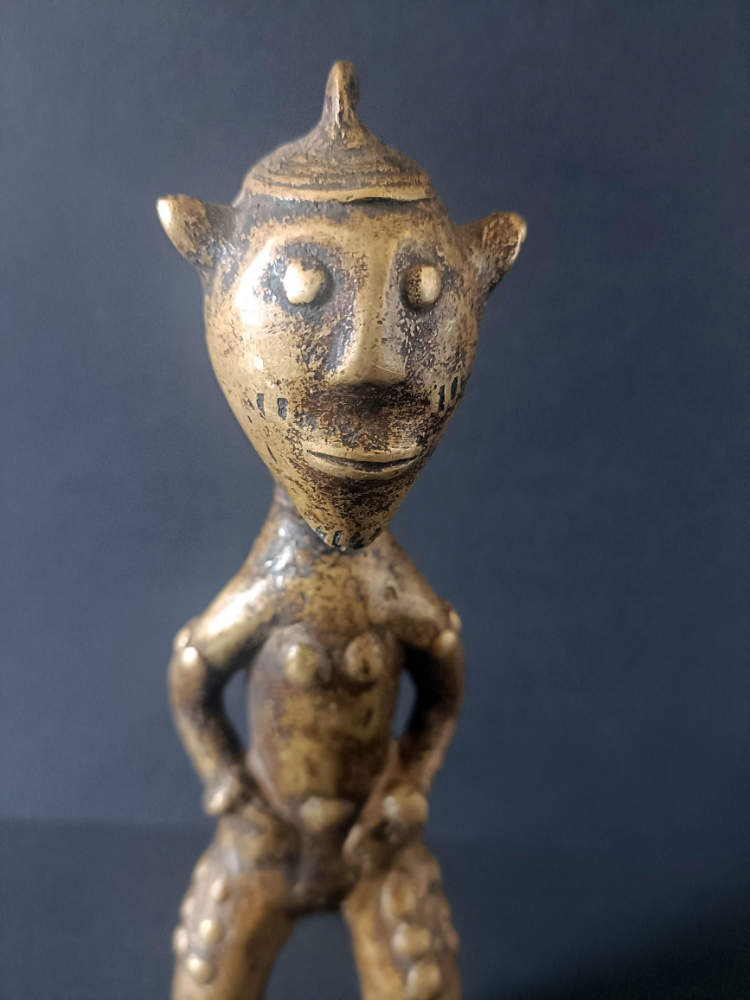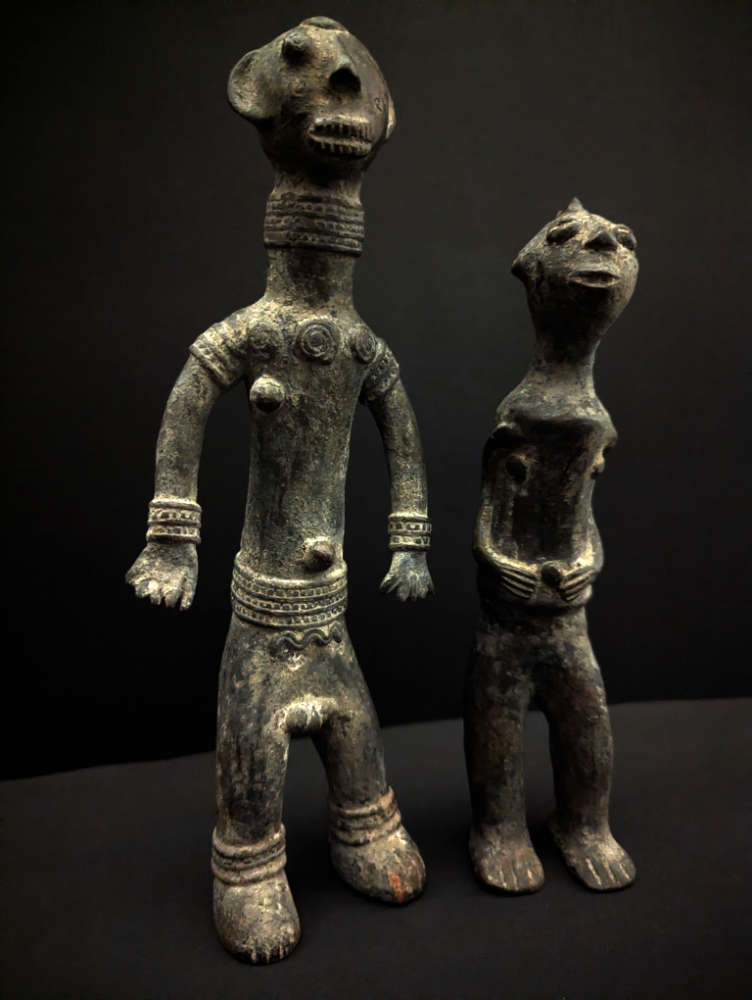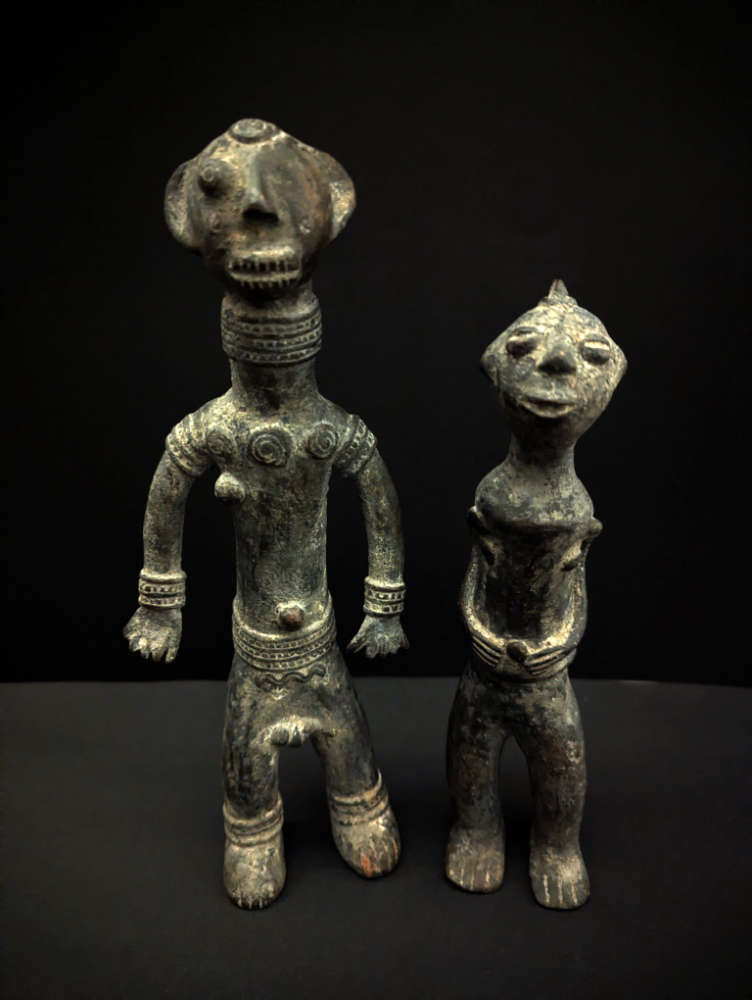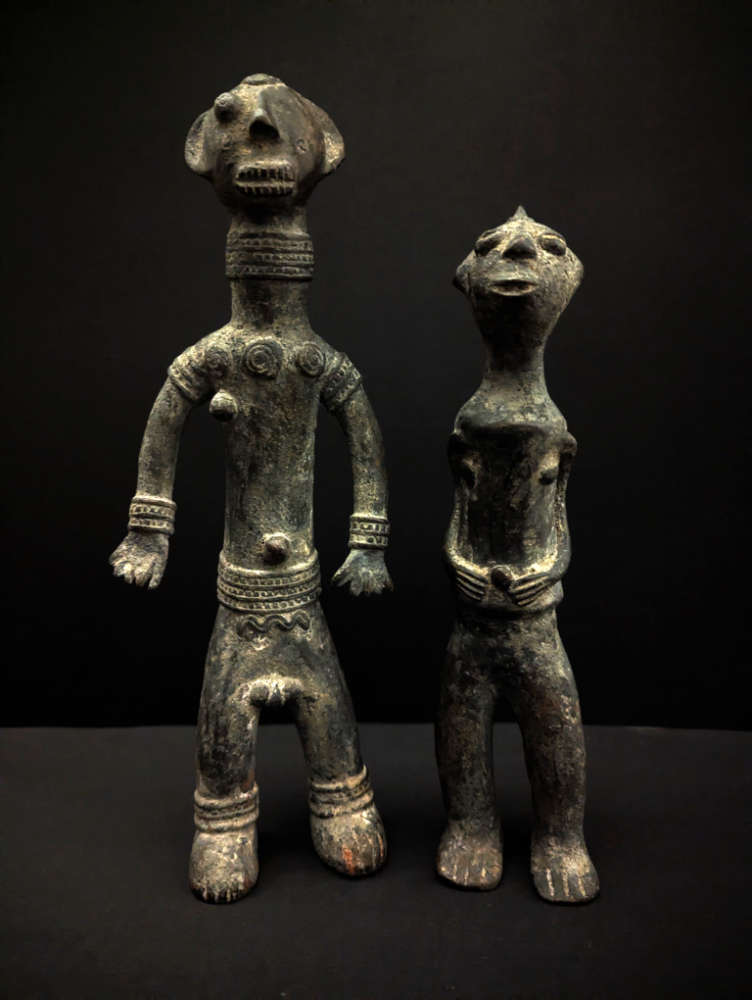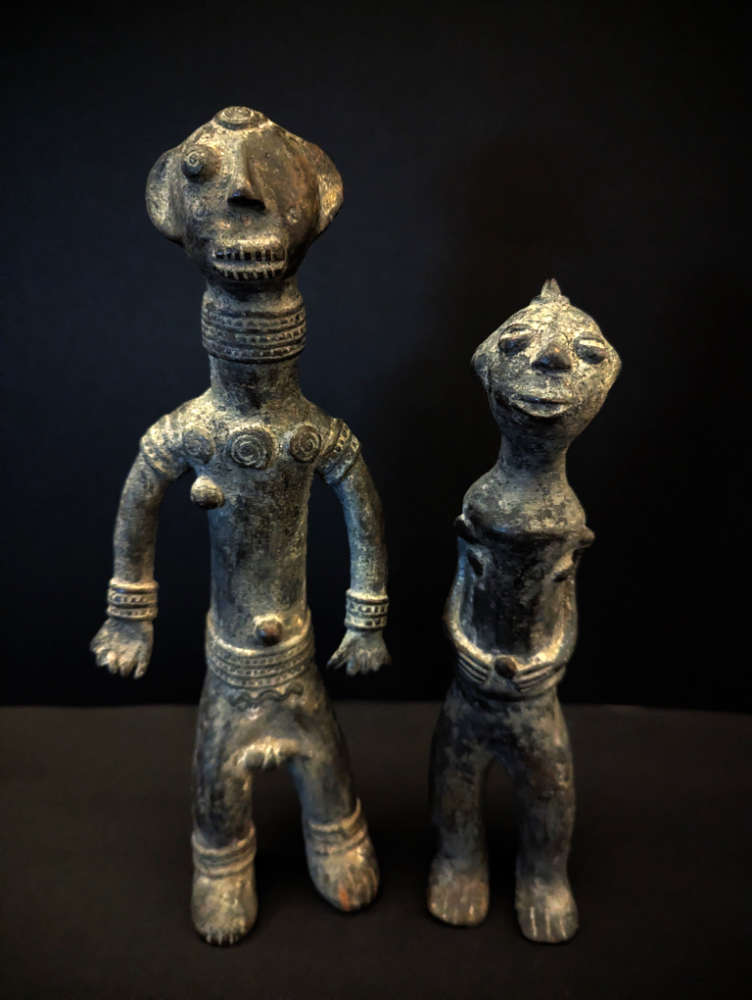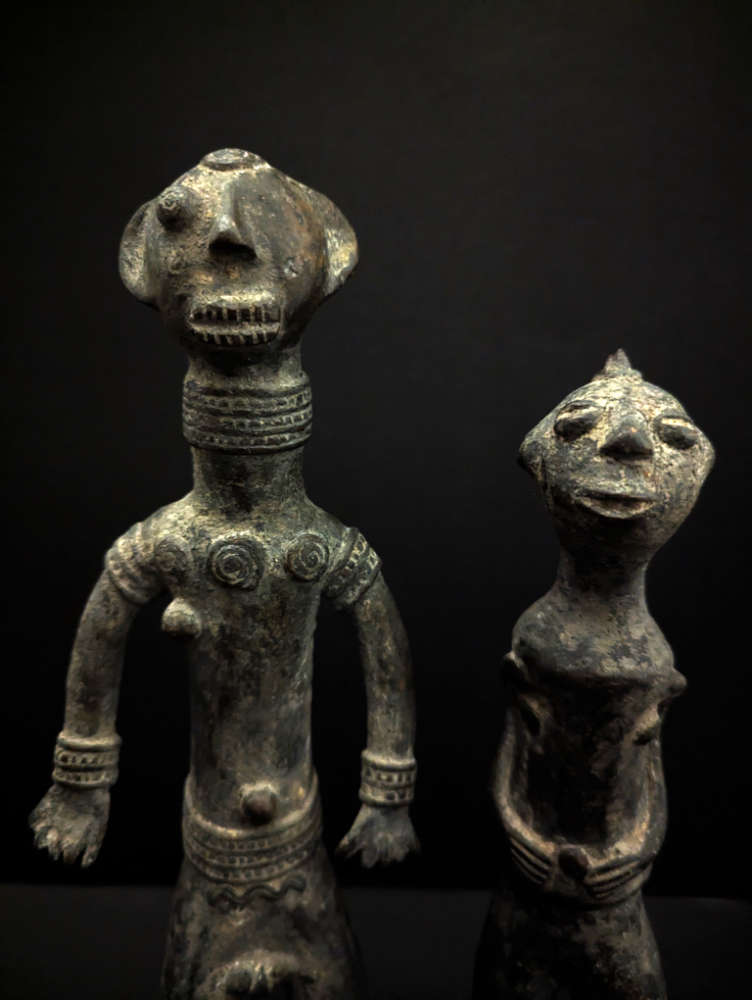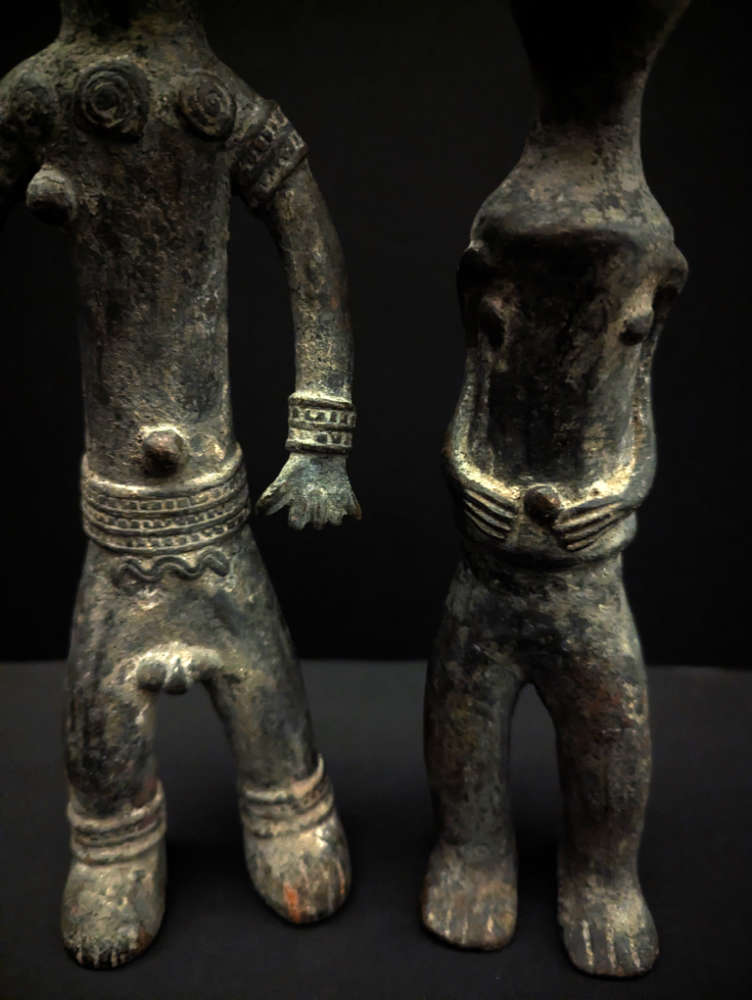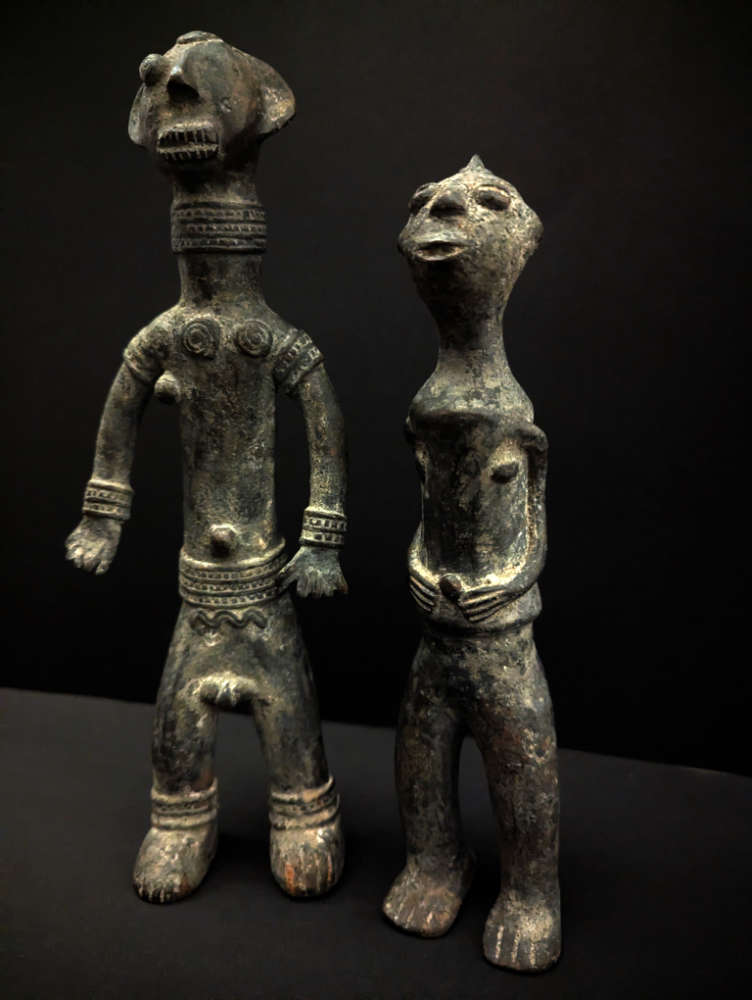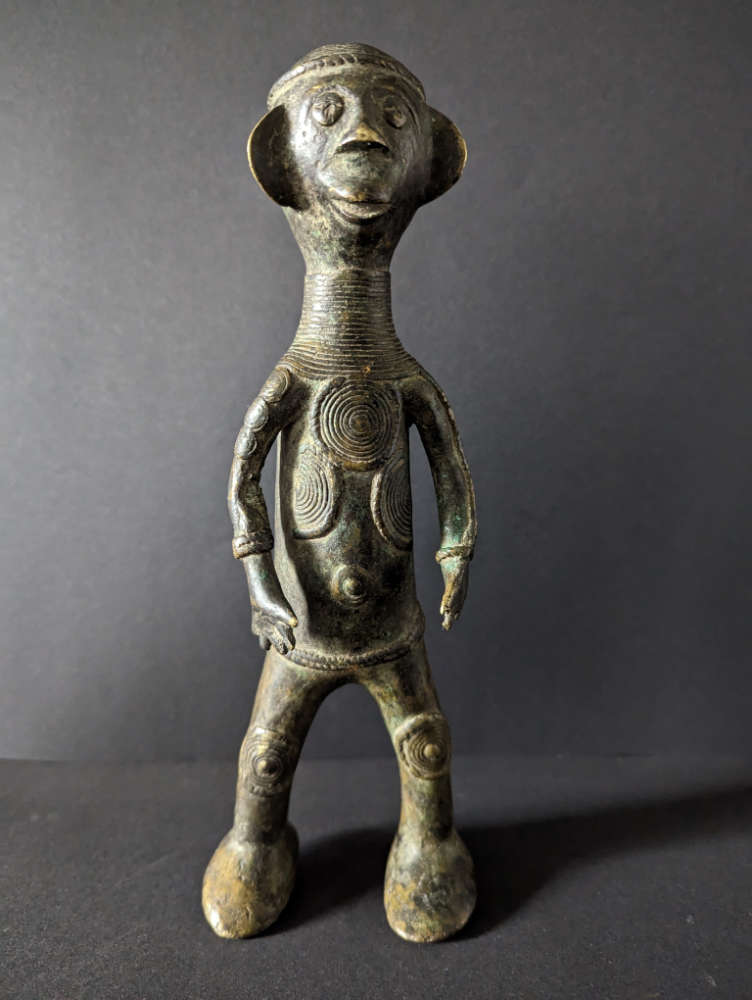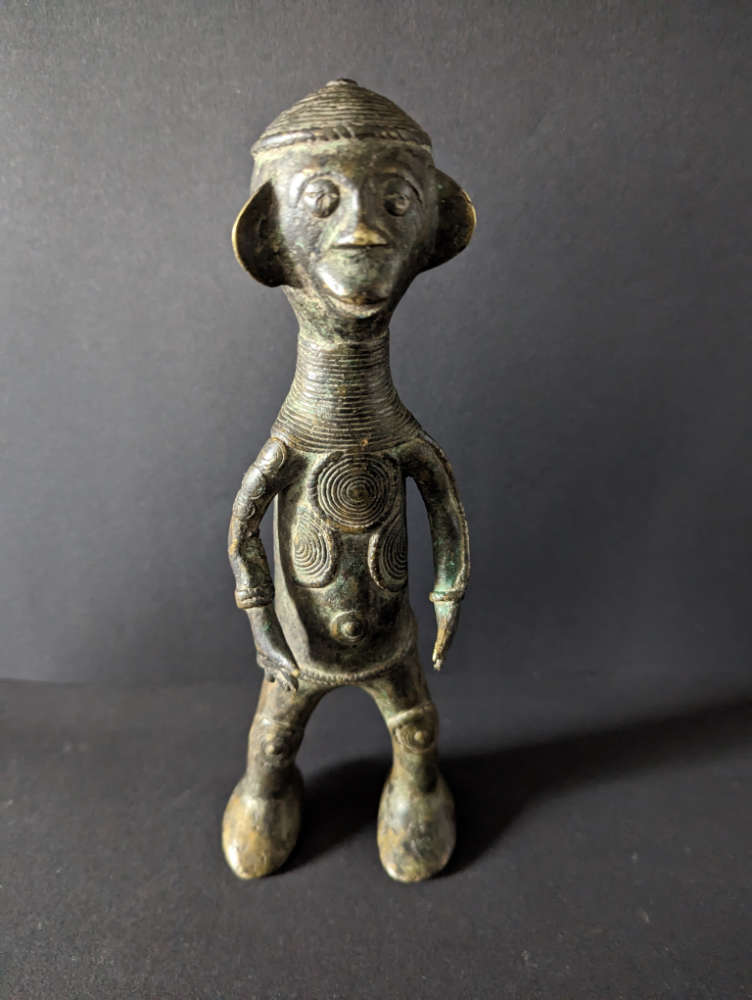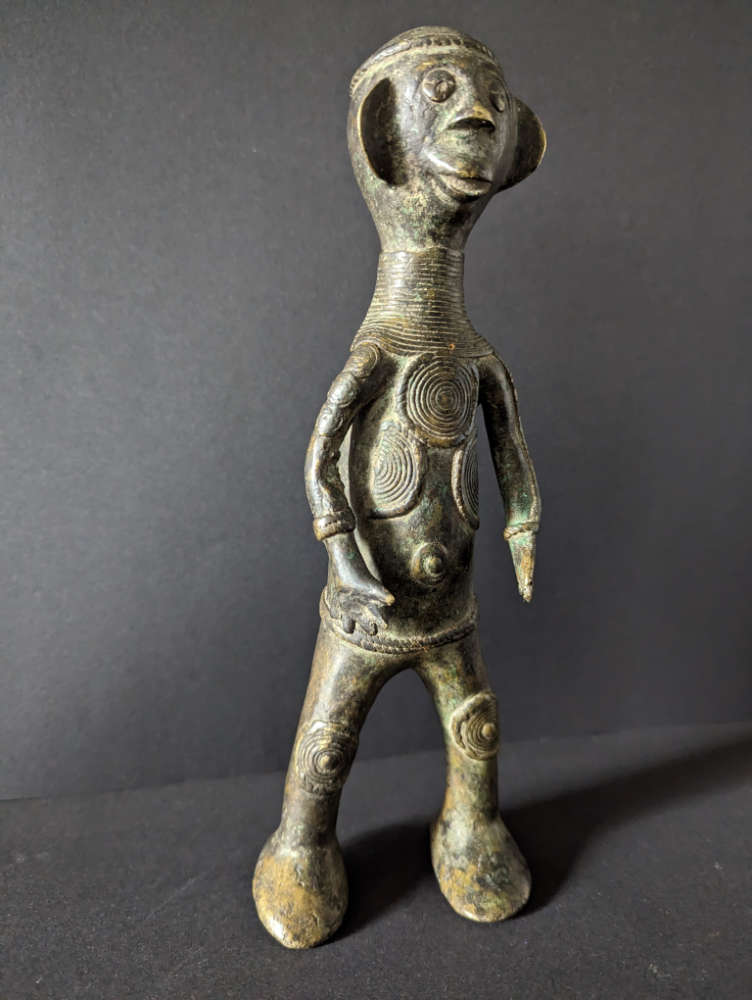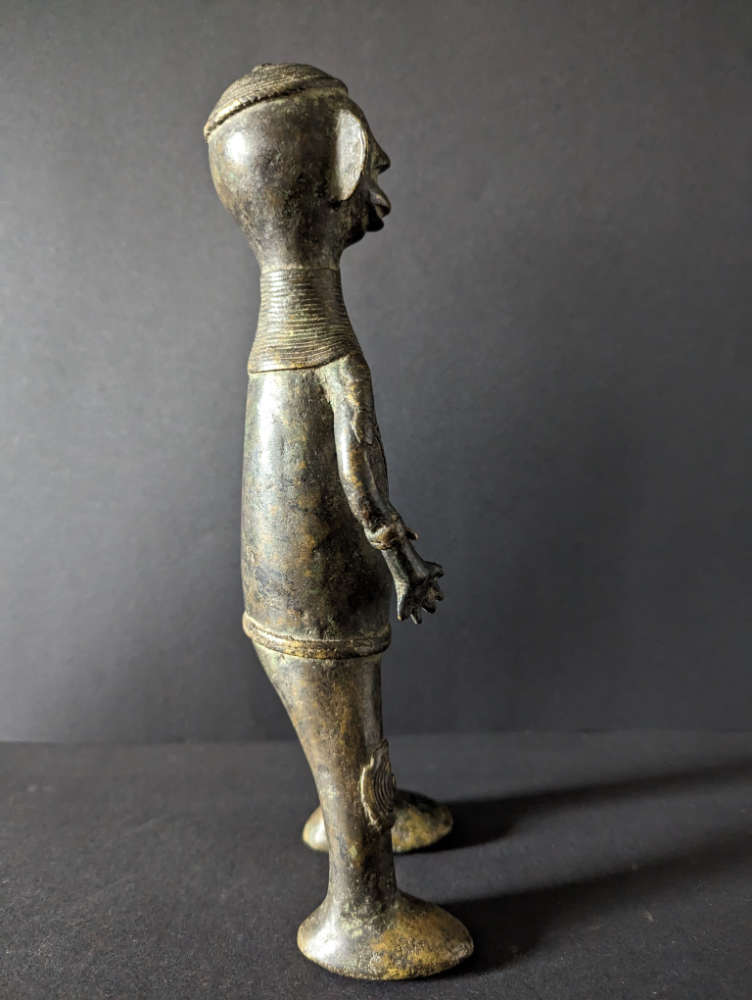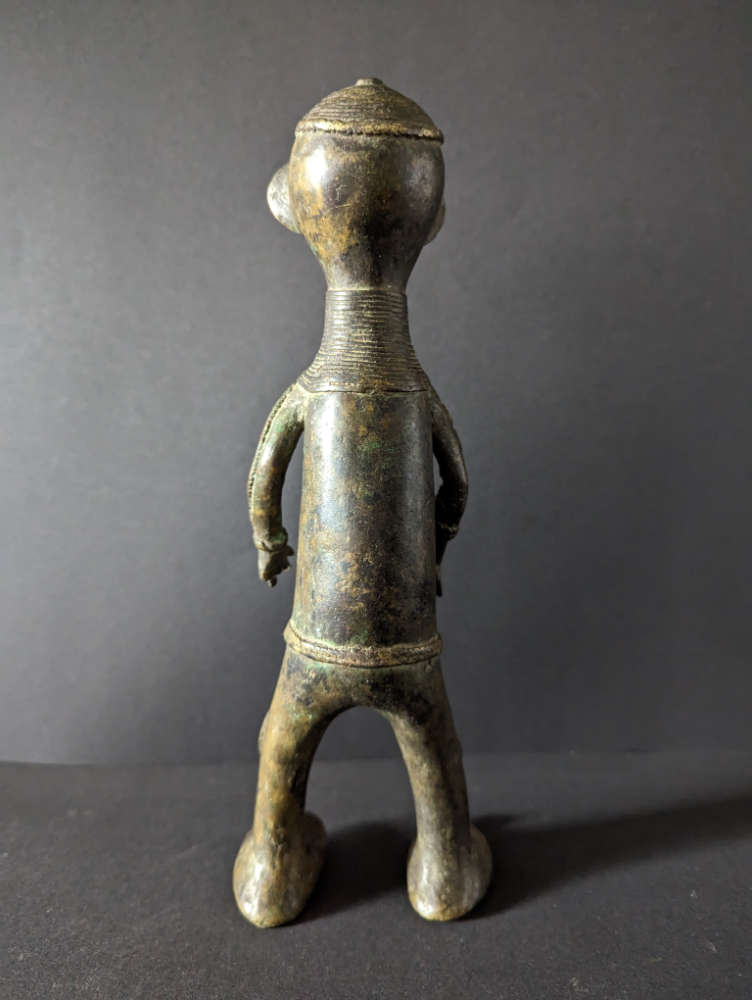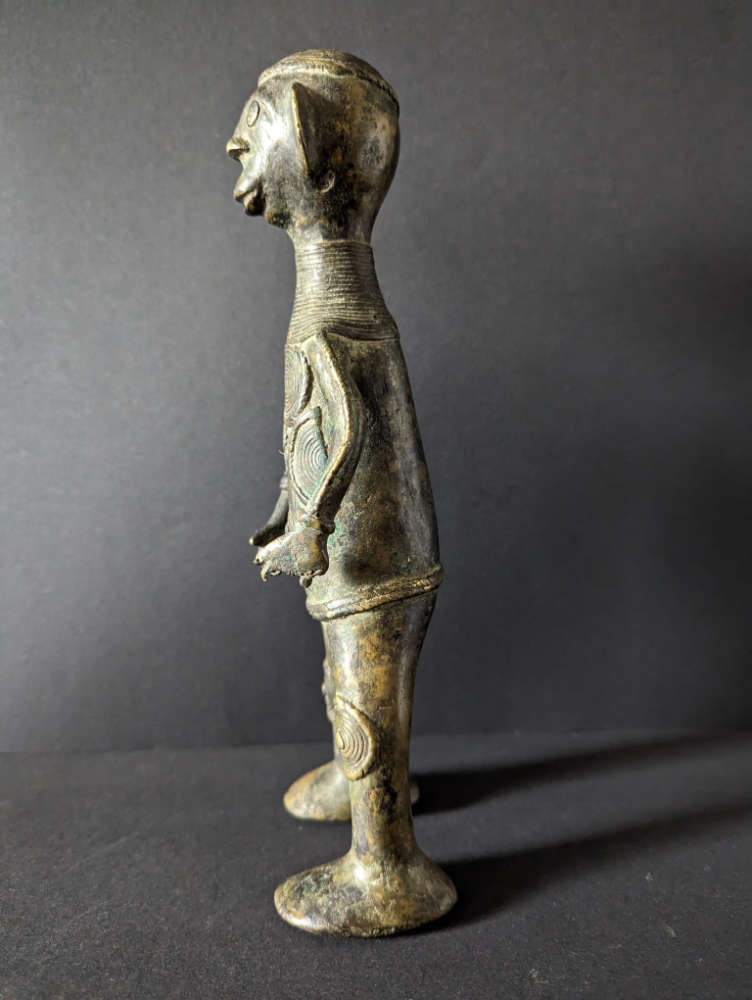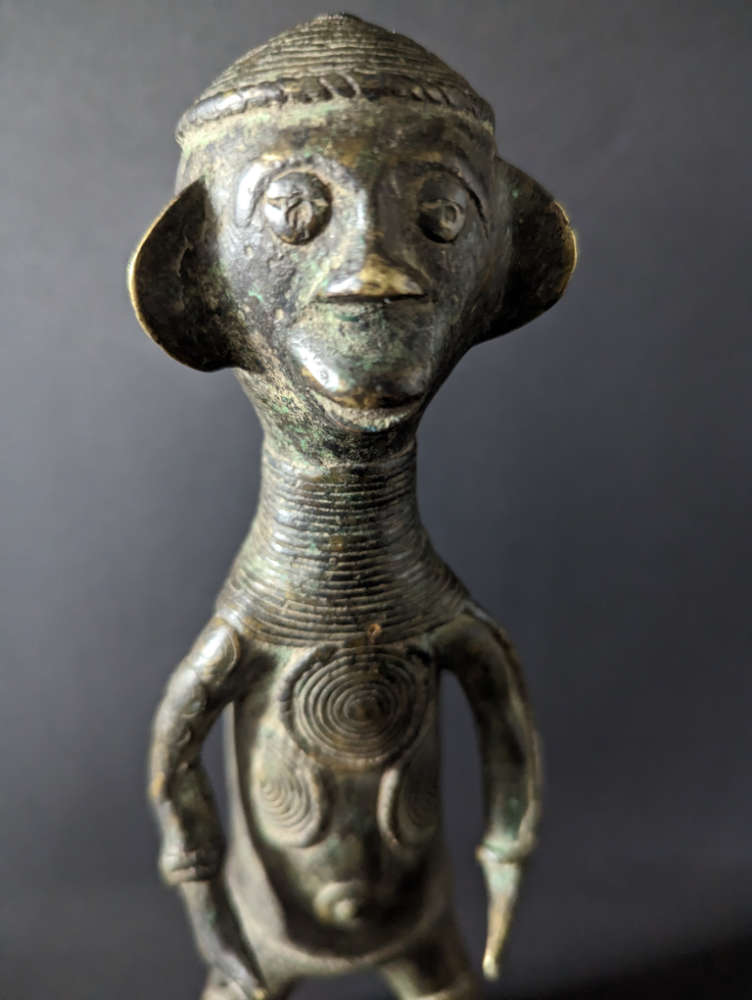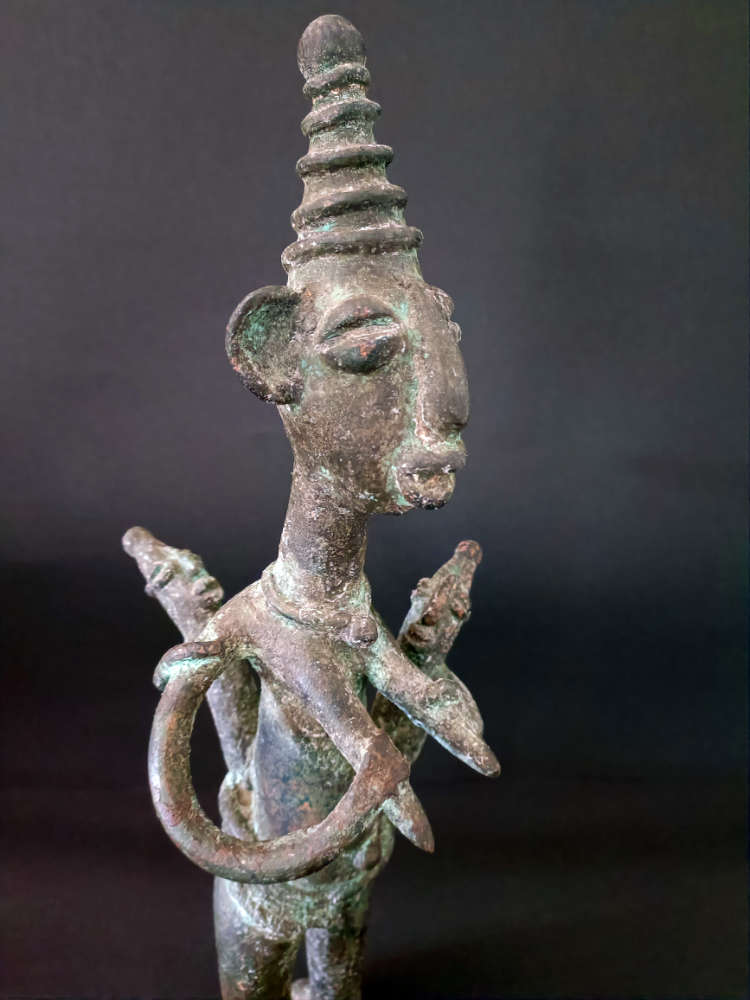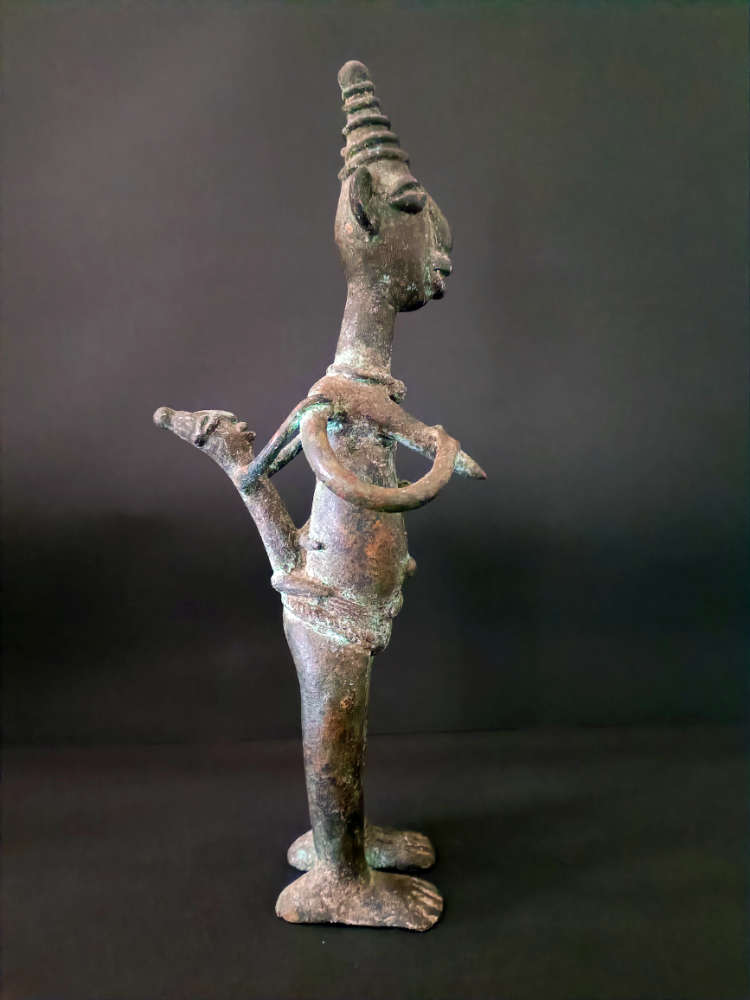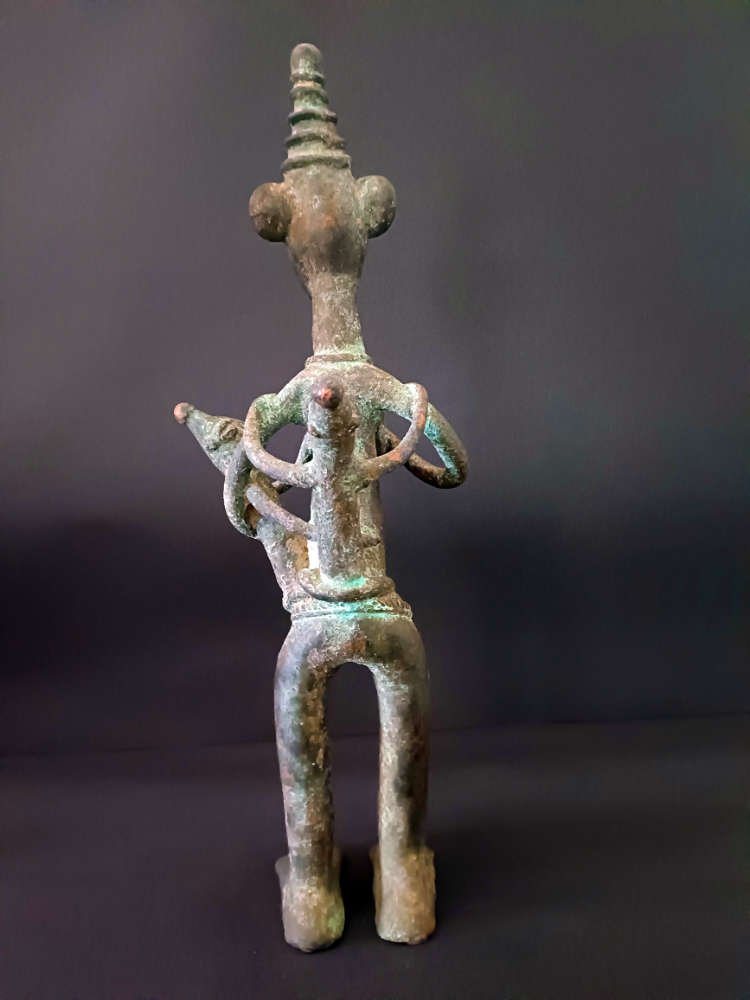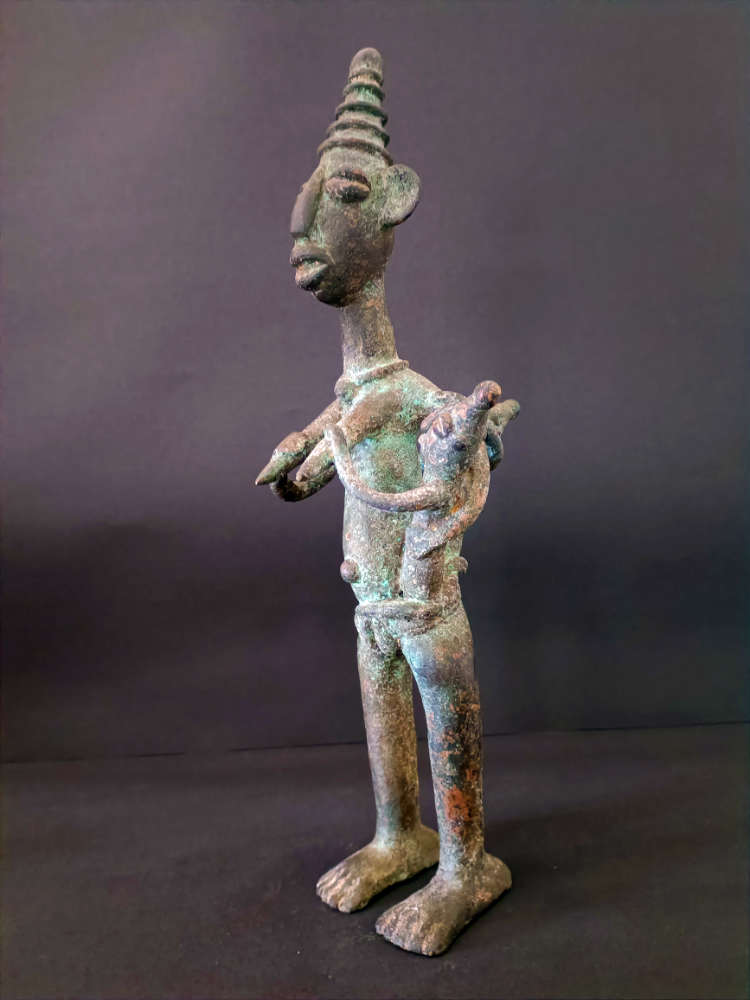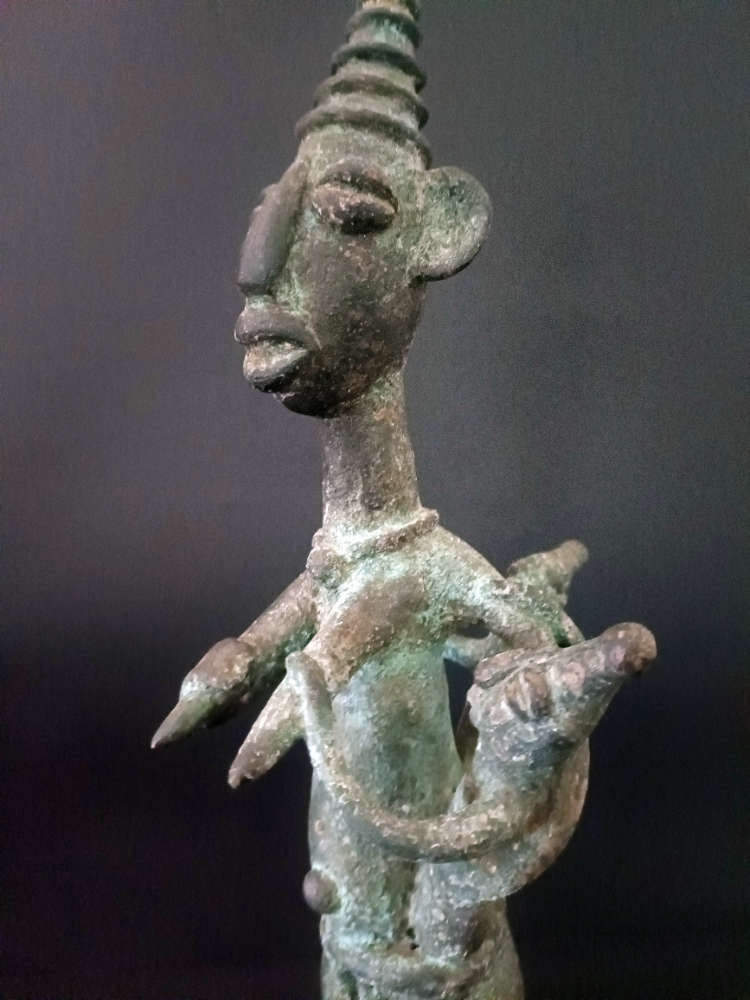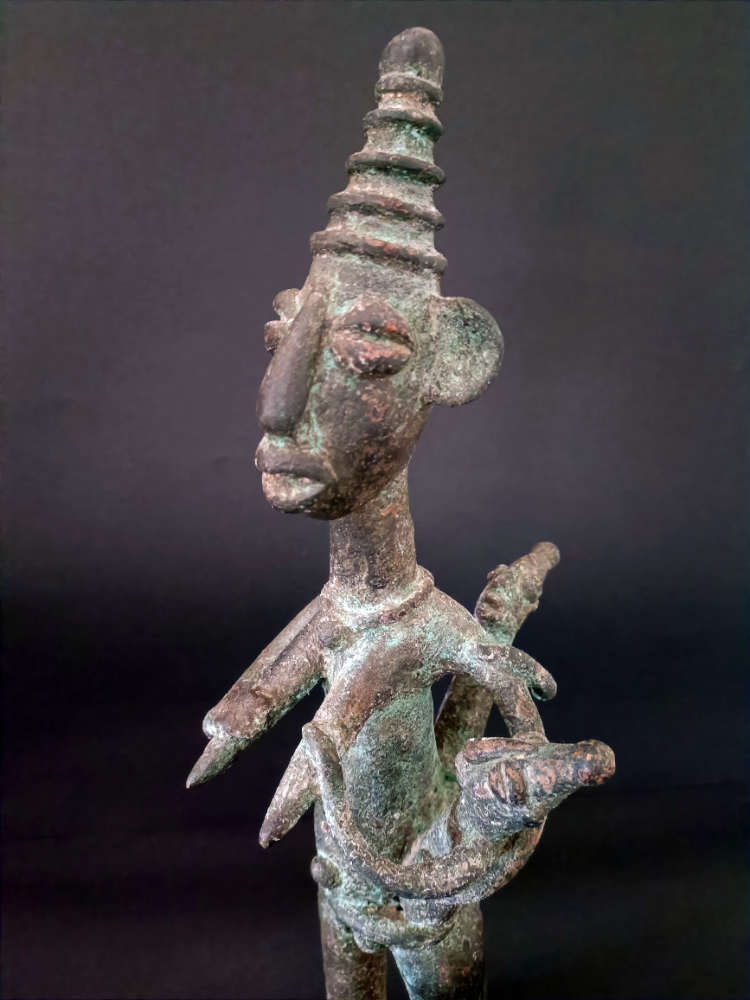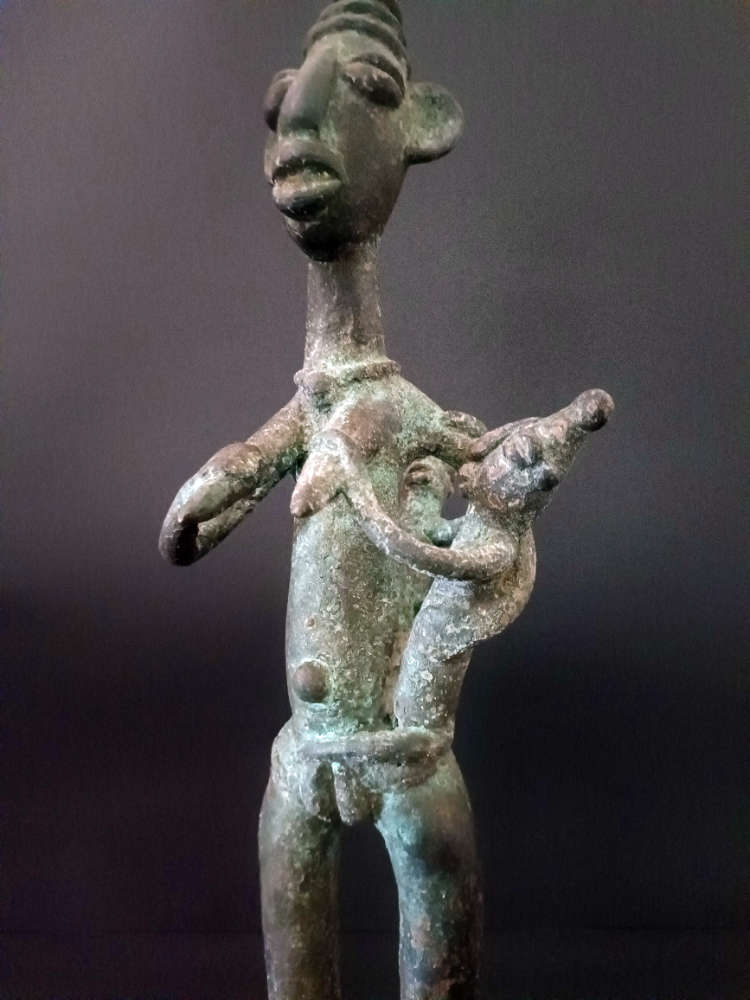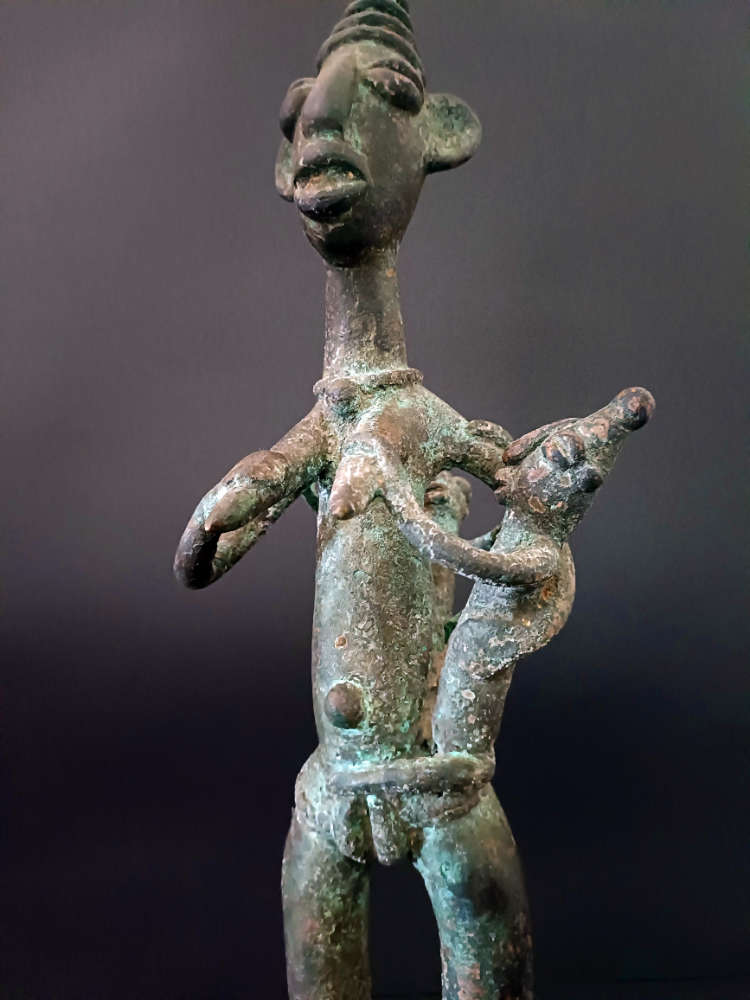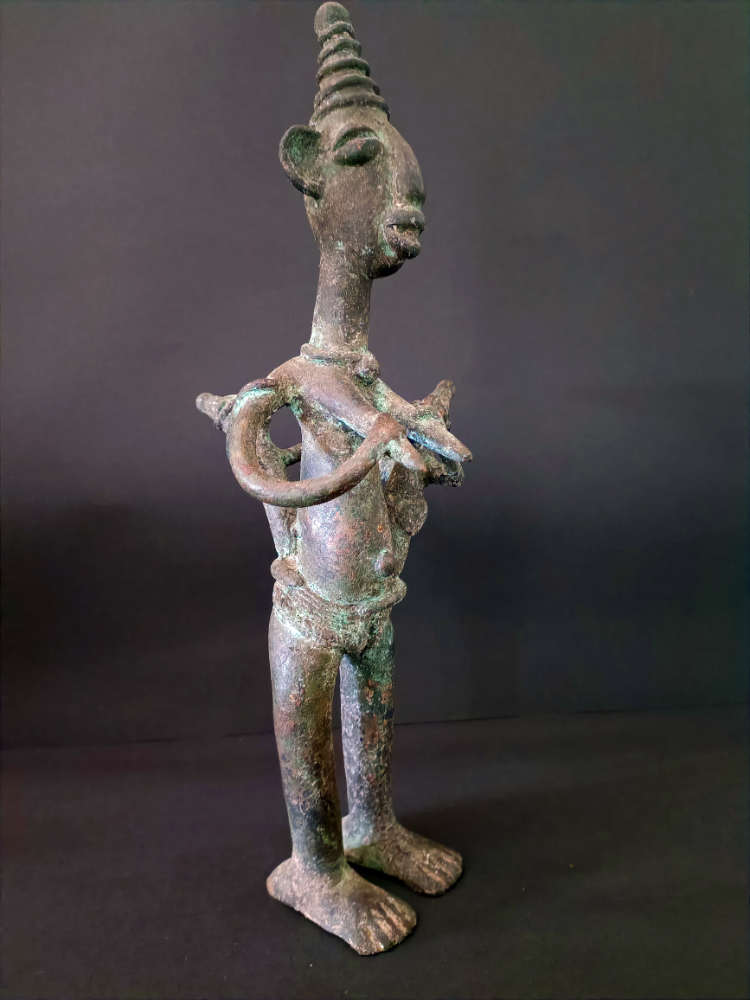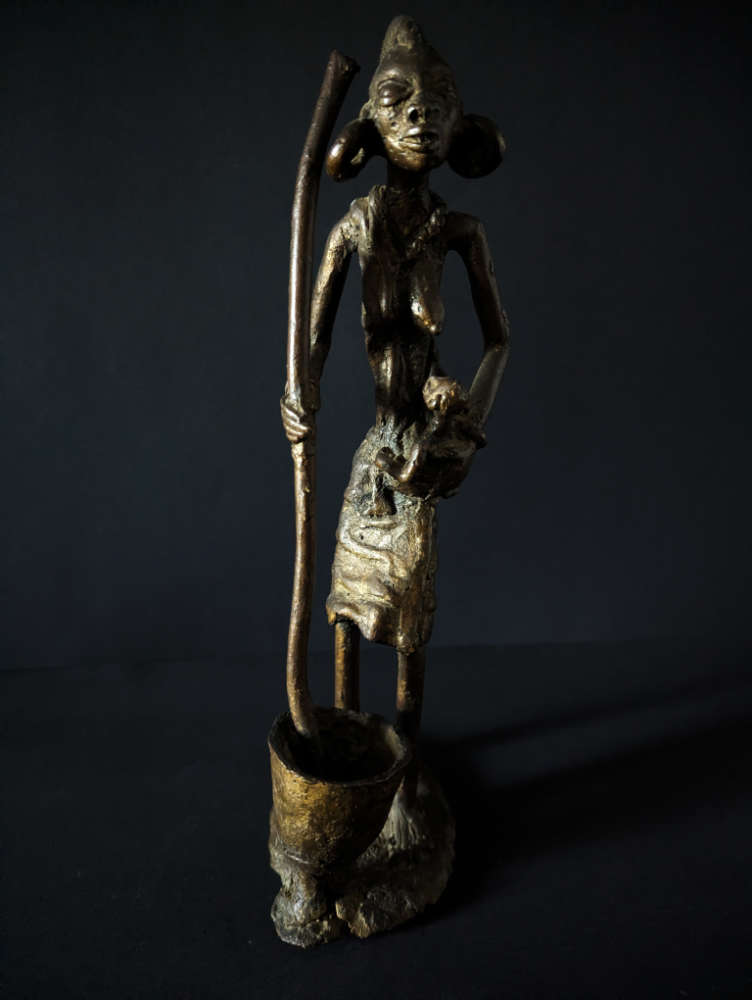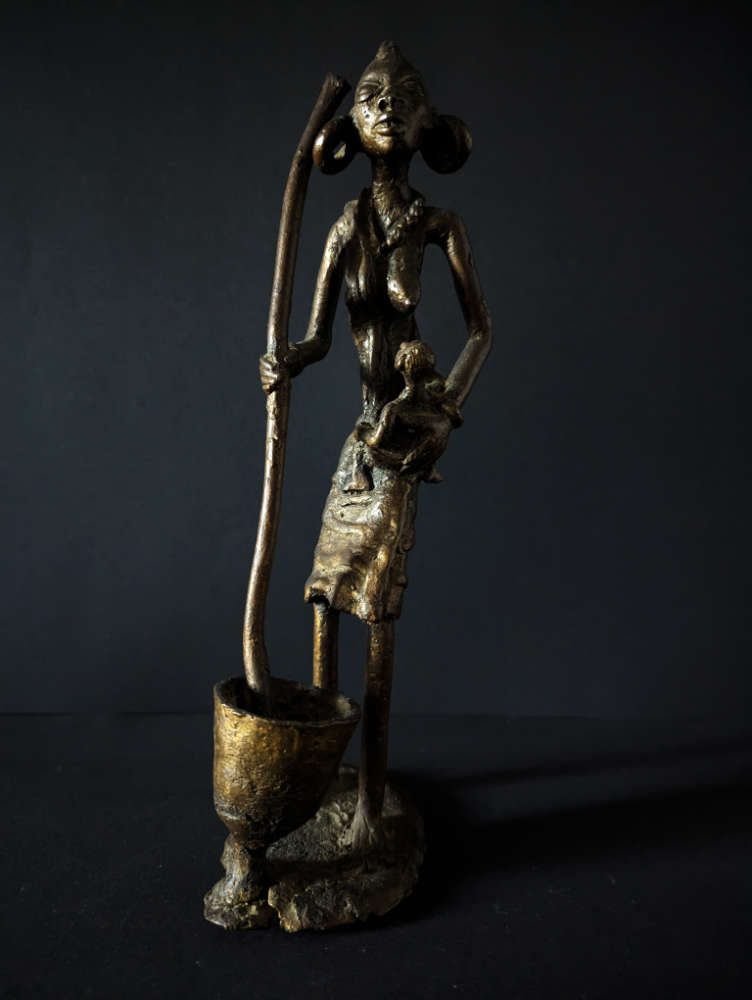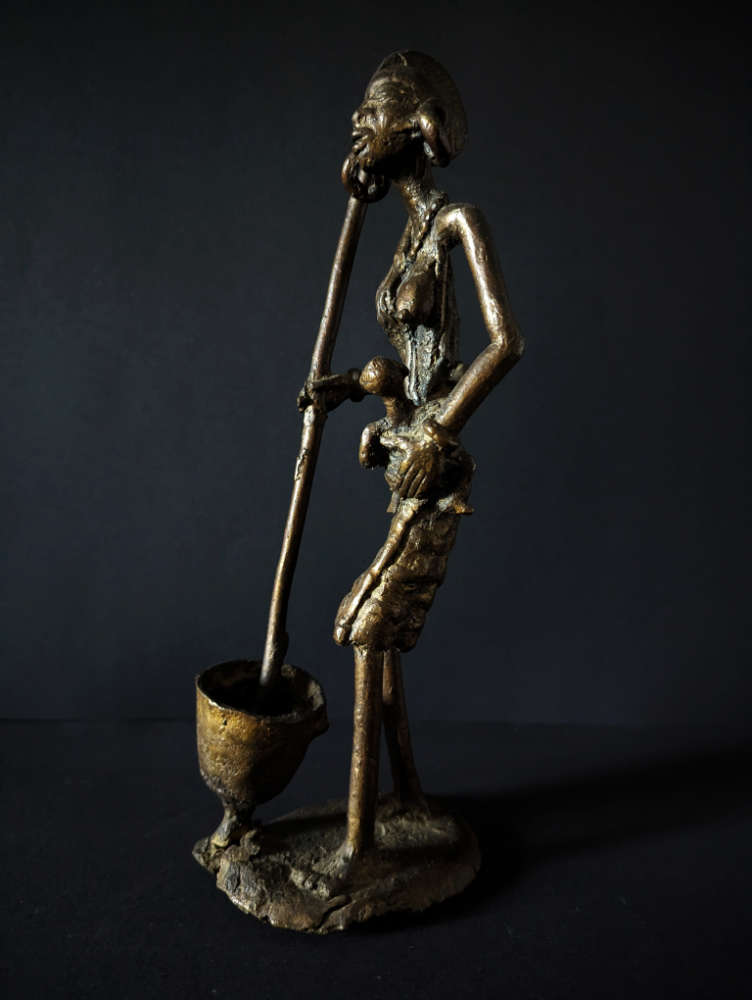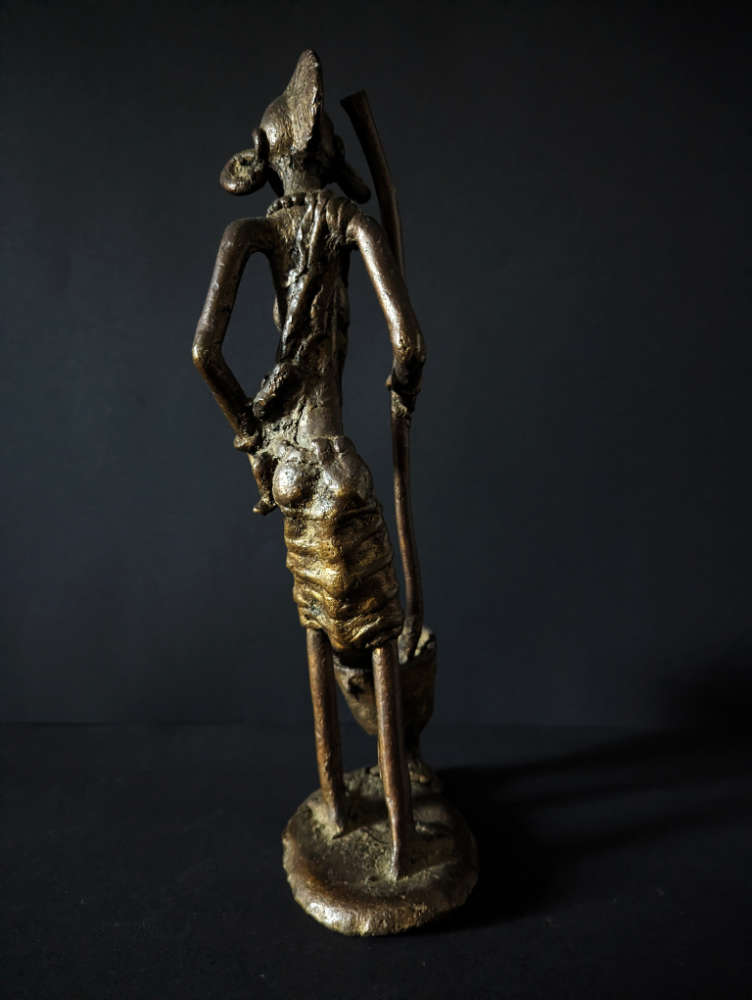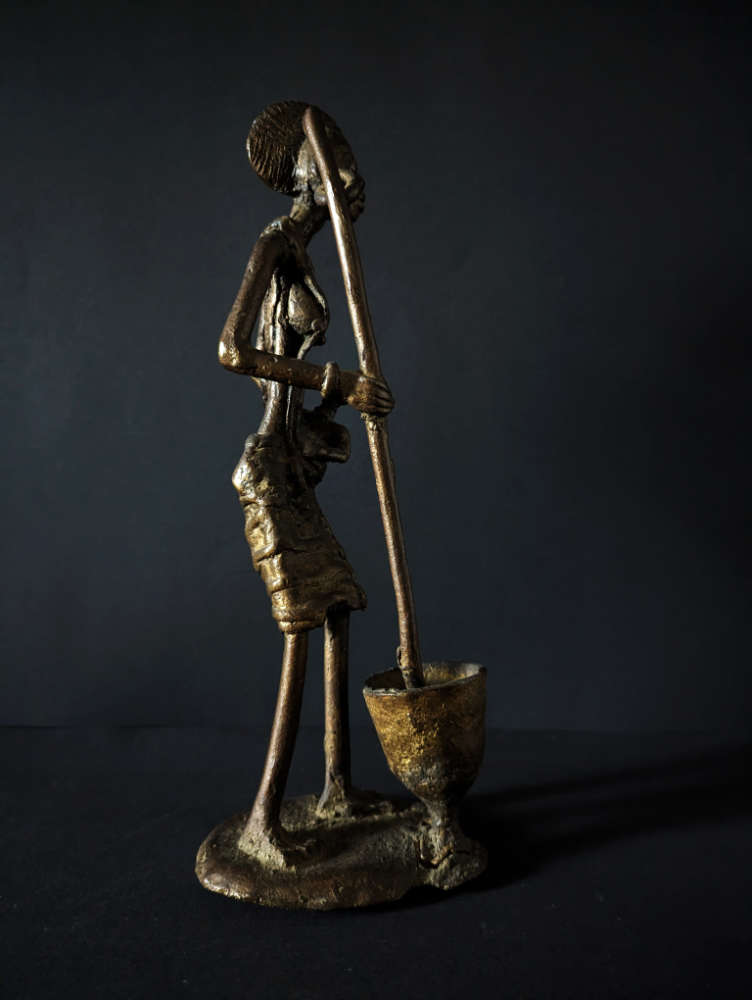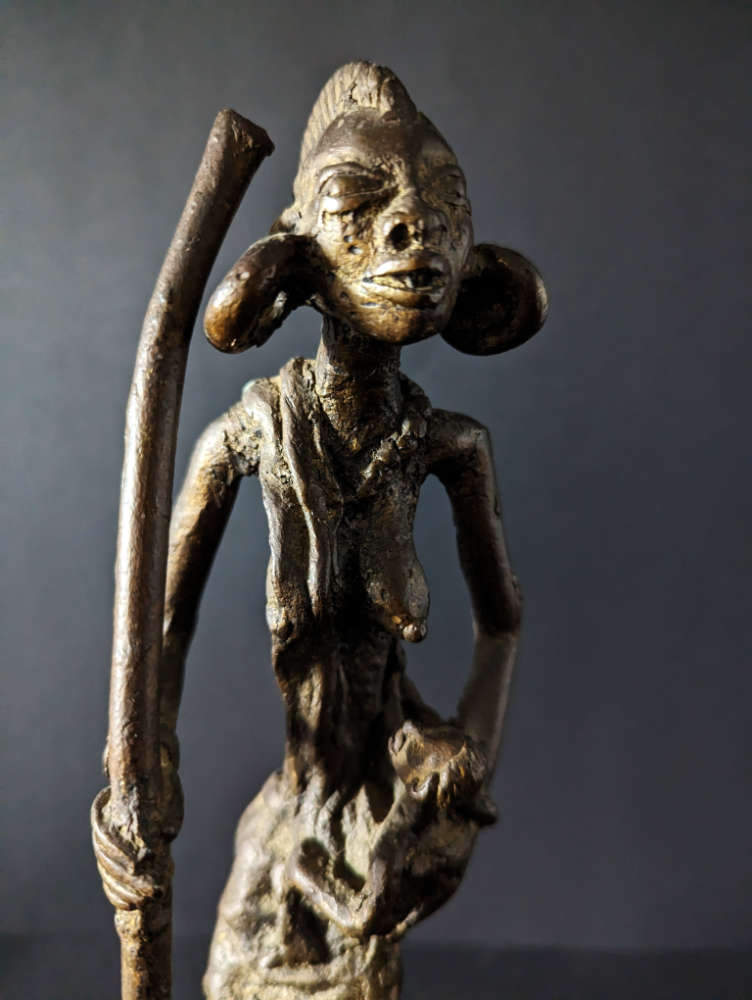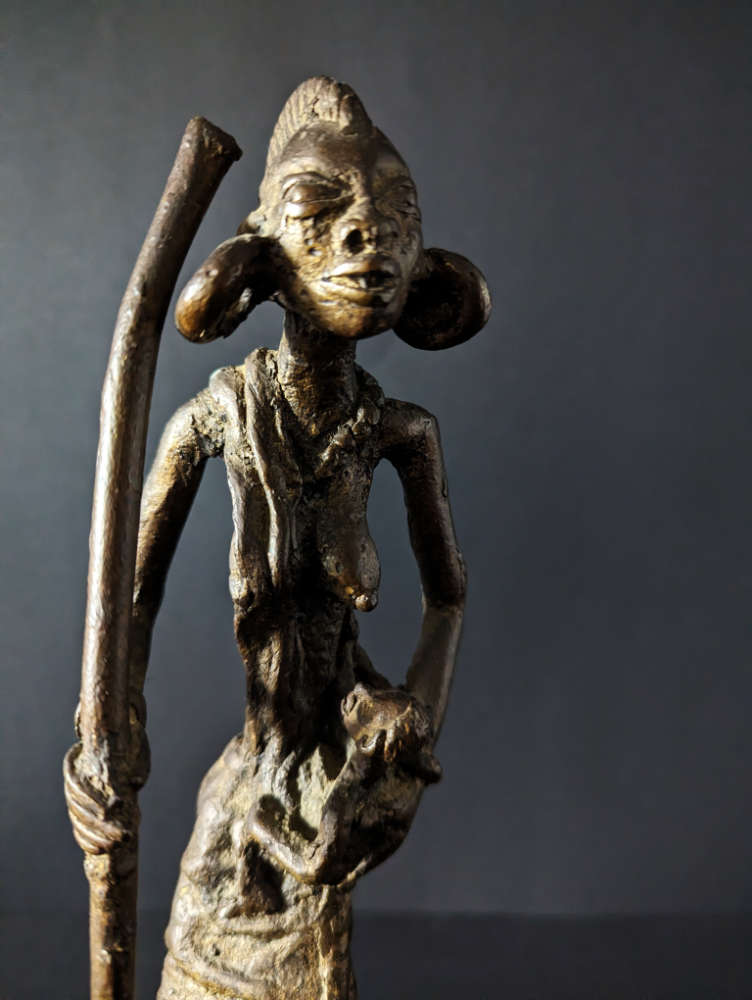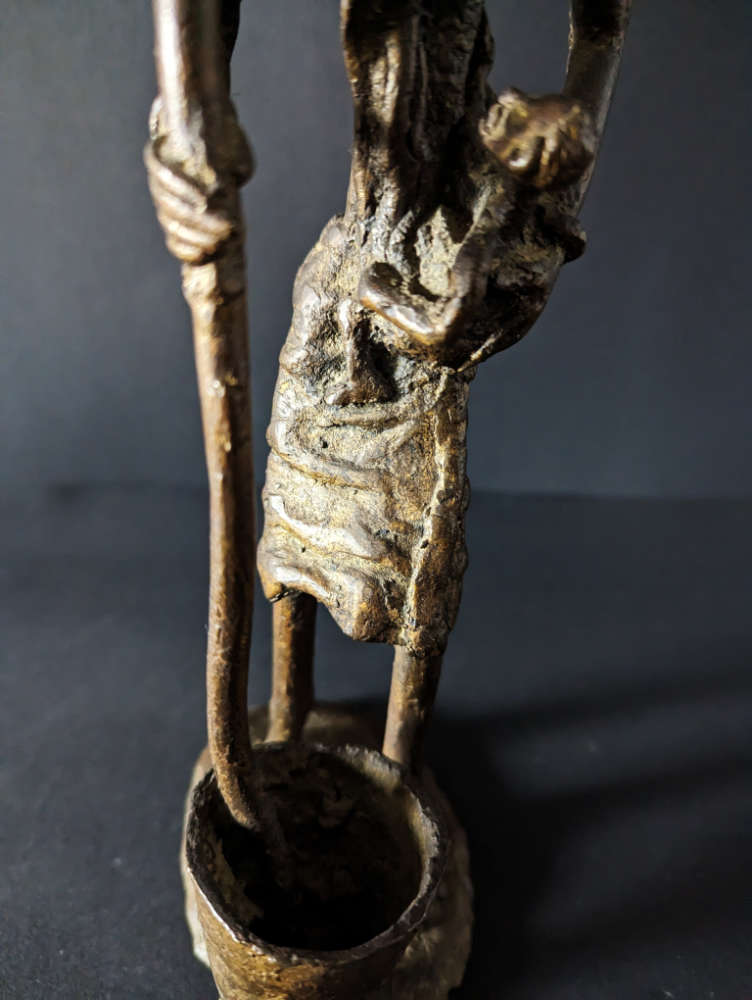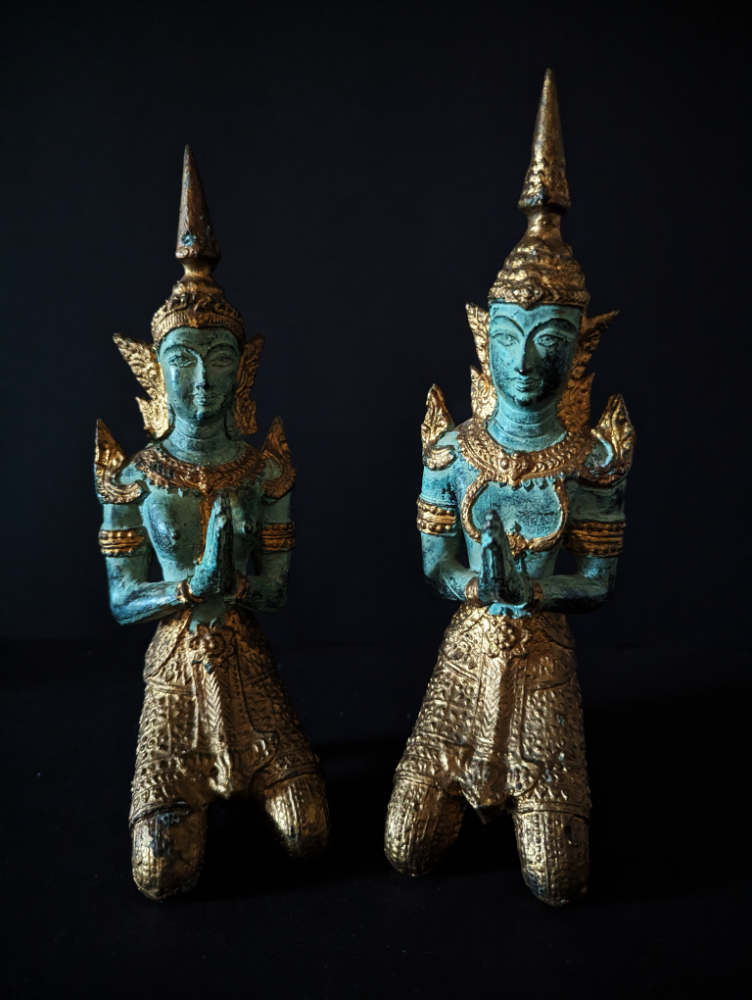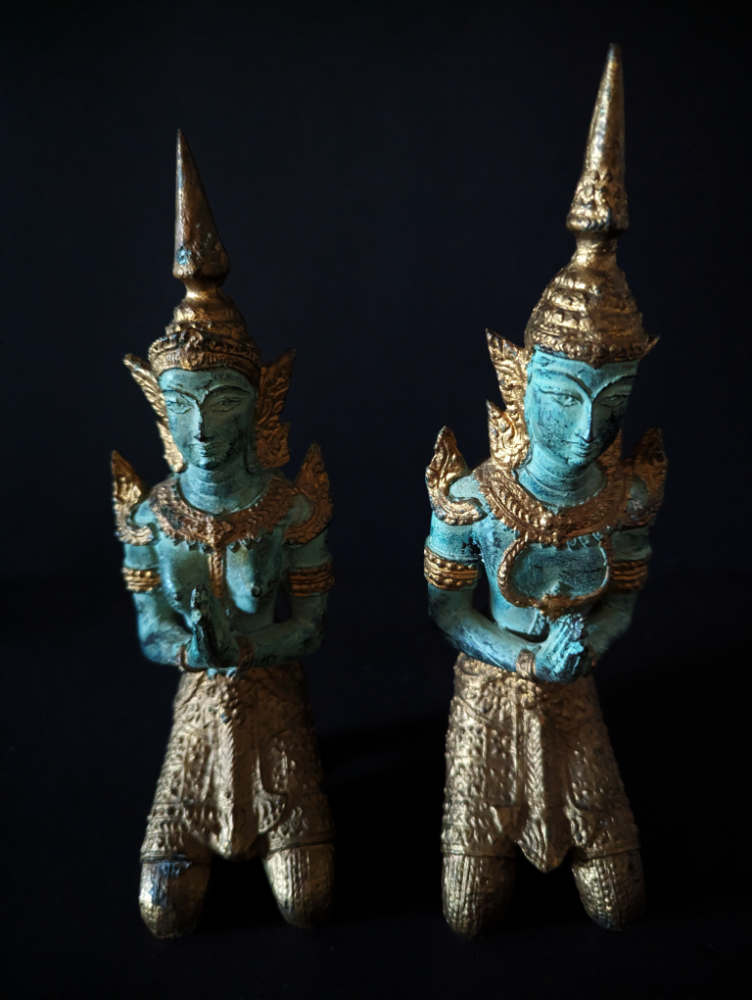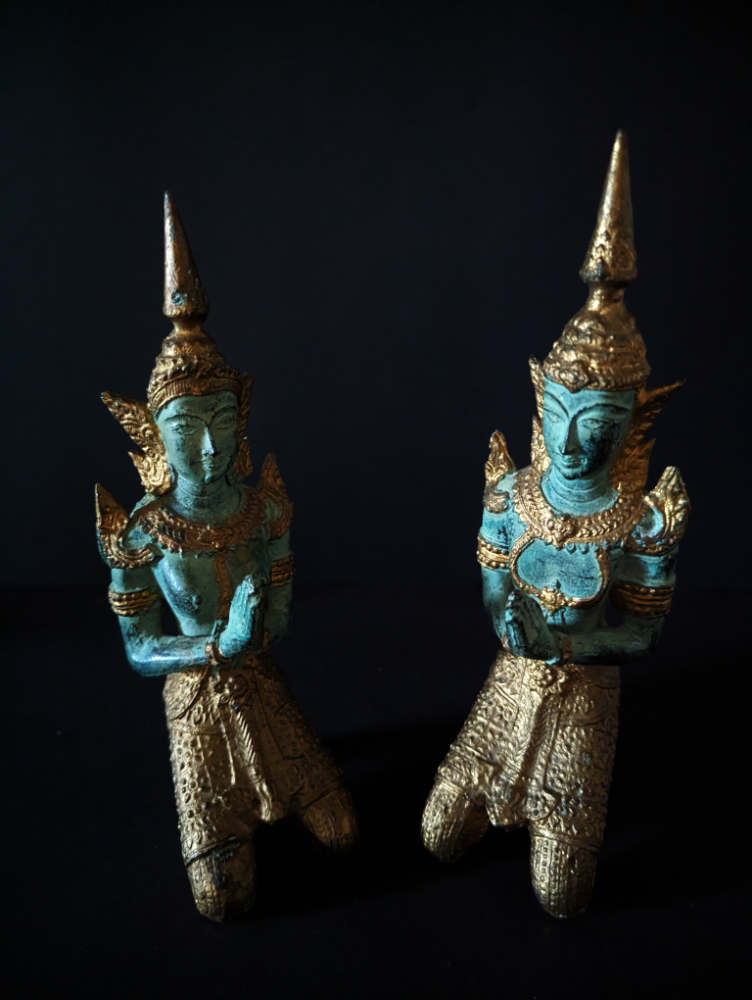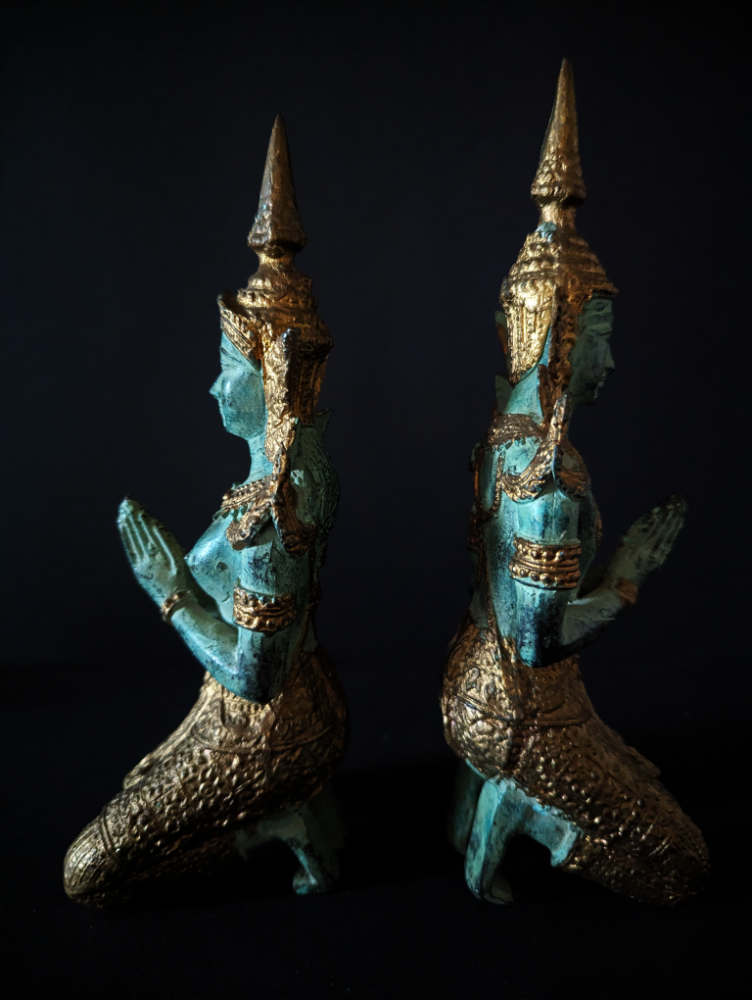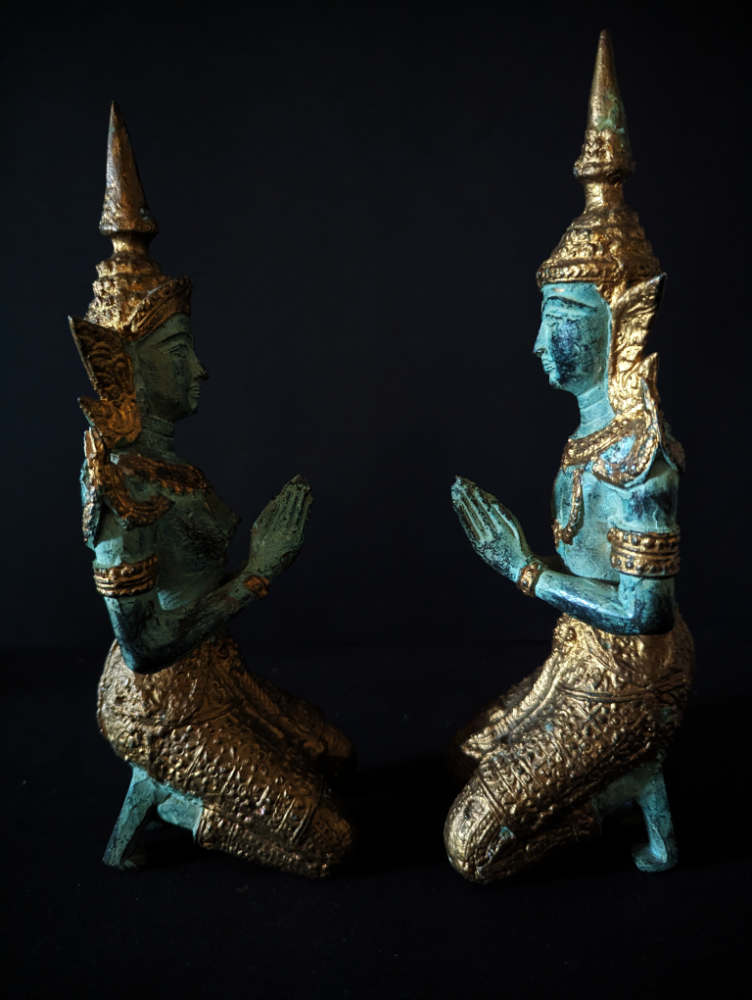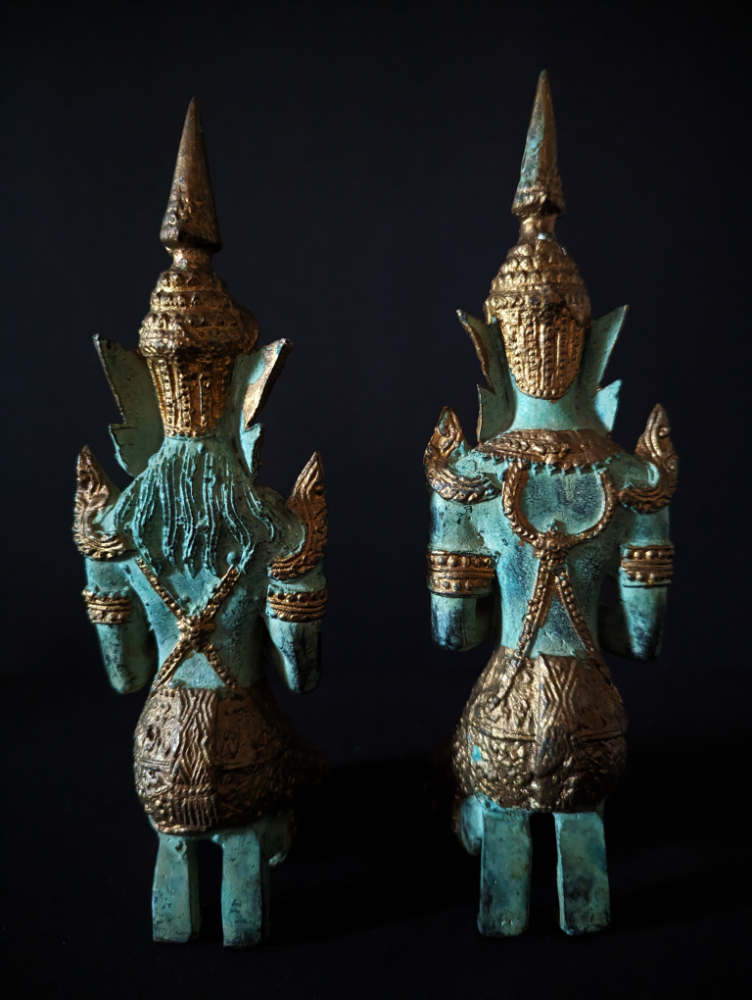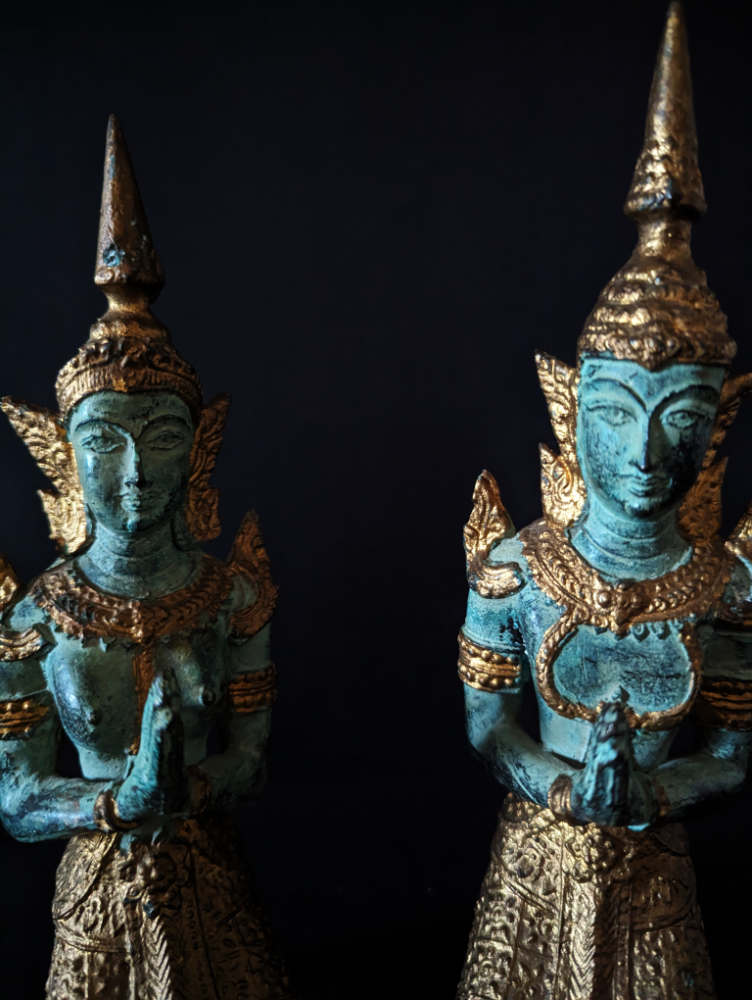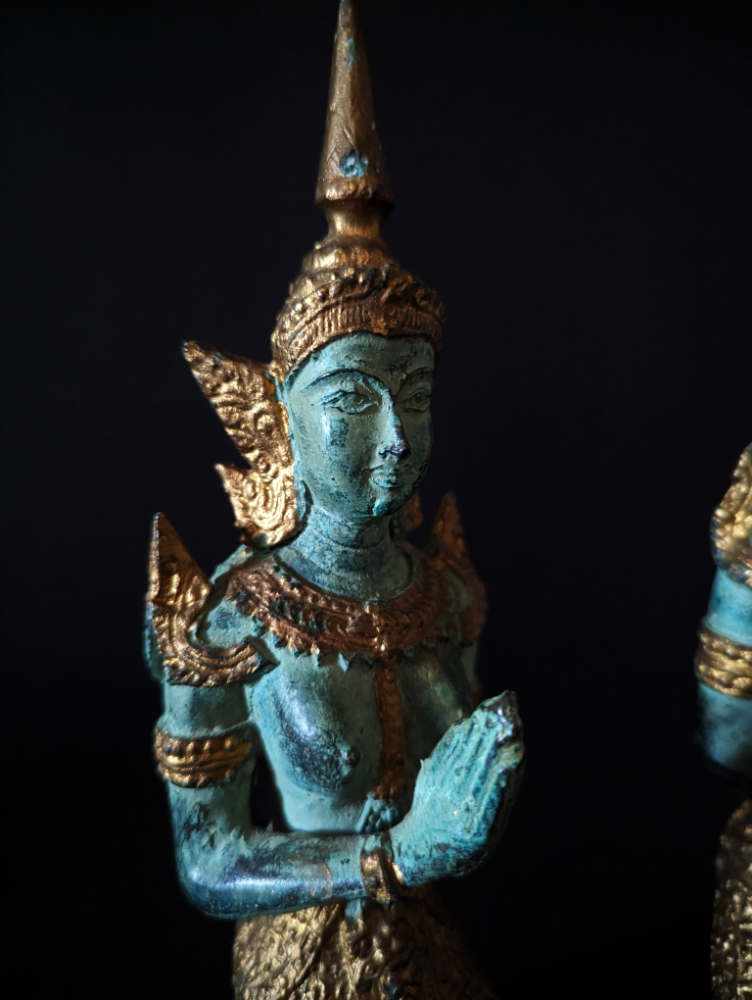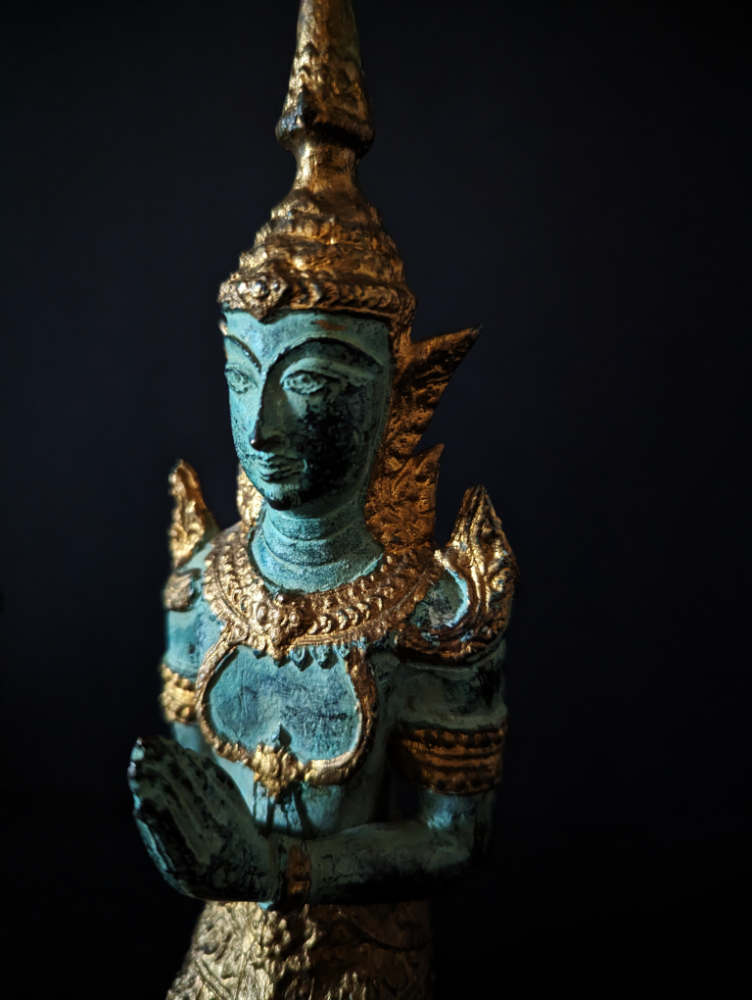you are watching
African Bronzes
Bronze Temple Guards with Archer, Temple Watchers, Thepphanom, Thepanom
Region | Country: Thailand
Period: 20th century
Dimensions: male: 18 cm, female: 18 cm, archer: 26 cm
Weight: male: 650 g, female: 750 g, archer: 550 g
Material: gilted bronze
Provenance: Thailand
Value: 400€
A Thai Thepanom statue. The Thepanom first came to earth when Buddha reached enlightenment. They became Buddha’s protector, then guardian of religious temples and artefacts such as scrolls.
Thai Temple Guards solid bronze statues with archer.
They sit with their hands in the Namaskara mudra, the gesture of greeting, prayer and worship. The archer is usually placed in the center.
King Oba on a Horse, Horseman Bini Edo Bronze (Benin Bronze Sculpture)
Ethnic group | Culture: Edo (Bini)
Region | Country: Benin, Nigeria
Period: 1st half 20th century (1930-60’s)
Dimensions: 62,5 x 39 x 22 cm
Weight: 12200g / 12,2 kg
Material: African bronze
Provenance: Africa
Value: 1100€
Figure made using the lost wax method.
The Bini Edo Bronze Alloy Horseman King Oba on a Horse is a bronze sculpture originating from Nigeria, specifically from the Bini Edo region. This artwork depicts a rider mounted on a horse, both finely detailed and precisely executed.
Plaque of Royal Warriors from Benin
Ethnic group | Culture: Edo (Bini)
Region | Country: Benin, Nigeria
Period: 19th century
Dimensions: 35 x 28 x 12 cm
Weight: 6900 g
Material: African bronze
Provenance: Africa
Value: 570€
A bronze plaque in the style of Benin, Nigeria. Superb plaque from the Benin City of Nigeria with four warriors. They represent symbols, court scenes and serve to strengthen the power and guard the Royal court of King Oba.
These works constitute one of the greatest treasures of humanity and are among the centerpieces of museums around the world.
Figure made using the lost wax method.
Traditional Sao Chief Riding a Turtle Holding a Pipe
Ethnic group | Culture: Sao
Region | Country: Chad, Africa
Period: 1st half 20th century
Dimensions: 50 x 28 x 20 cm
Weight: 5150 g
Material: African bronze
Provenance: Africa
Value: 750€
Very rare African bronze.
Figure made using the lost wax method.
Beautifully crafted with lots of tribal details.
King Oba Benin Bronze Head with Warrior (not Mother Queen Ife)
Ethnic group | Culture: Edo (Bini)
Region | Country: Benin City, Nigeria
Period: 2nd half 20th century (1950-70’s)
Dimensions: 45,5 x 15,5 x 15,5 cm
Weight: 4400 g
Material: African bronze
Provenance: Africa
Value: 850€
Figure made using the lost wax method.
The „Bronzes of Benin”, so called despite the fact that they were most often made of brass, together with the bronzes of Ife, are among the greatest achievements of African art.
Leopard from Benin Sculpture
Ethnic group | Culture: Edo (Bini)
Region | Country: Benin, Nigeria
Period: 19th century
Dimensions: 36,5 x 34 x 9,5 cm
Weight: 4600 g
Material: African bronze
Provenance: Africa
Value: Sold 650€
Figure made using the lost wax method.
The „Bronzes of Benin”, so called despite the fact that they were most often made of brass, together with the bronzes of Ife, are among the greatest achievements of African art.
Beautiful Leopard (leopard) made of African bronze from Benin. Benin bronzes are perhaps the best-known bronzes of African art, ahead of Ifé and Owo crafts. This is due to the proximity of the Atlantic coast, which enabled trade with the Portuguese from the 15th century. A great bronze Benin leopard. For the people of Benin, the leopard is a powerful royal animal that rules the savannah as a king rules his people. It also serves as a symbol of justice.
Leopard from Benin Sculpture
Ethnic group | Culture: Edo (Bini)
Region | Country: Benin, Nigeria
Period: 2nd half 20th century (1950-70’s)
Dimensions: 40,5 x 36,5 x 10,5 cm
Weight: 4950 g
Material: African bronze
Provenance: Africa
Value: 580€
Figure made using the lost wax method.
The „Bronzes of Benin”, so called despite the fact that they were most often made of brass, together with the bronzes of Ife, are among the greatest achievements of African art.
Beautiful Leopard (leopard) made of African bronze from Benin. Benin bronzes are perhaps the best-known bronzes of African art, ahead of Ifé and Owo crafts. This is due to the proximity of the Atlantic coast, which enabled trade with the Portuguese from the 15th century. A great bronze Benin leopard. For the people of Benin, the leopard is a powerful royal animal that rules the savannah as a king rules his people. It also serves as a symbol of justice.
Court Jester Bamoun Bamum
Ethnic group | Culture: Bamoun (Bamum), Tikar
Region | Country: Cameroon
Period: 1st half 20th century (1930-70’s)
Dimensions: 50 cm, 46 cm height
Weight: 5600 g, 5350 g
Material: African bronze
Provenance: Africa
Value: Private Collection
Court Jester Staue from Cameroon made with the lost wax method.
A very rare figure.
Court Jester Bamoun Tikar
Ethnic group | Culture: Bamoun (Bamum), Tikar
Region | Country: Cameroon
Period: 1st half 20th century (1930-70’s)
Dimensions: 42,5 x 15,5 x 15,5 cm
Weight: 3450 g
Material: African bronze
Provenance: Africa
Value: 780€
Tikar Court Jester.
A very rare figure.
Dancer Bamoun Tikar with Lizard
Ethnic group | Culture: Bamoun (Bamum), Tikar
Region | Country: Cameroon
Period: 1st half 20th century (1930-70’s)
Dimensions: 40,5 x 15,0 x 15,3 cm
Weight: 3500 g
Material: African bronze
Provenance: Africa
Value: 780€
Tikar dancer with lizard on his head made with the lost wax method.
A very rare figure.
“The Tikar area is occupied by around 250,000 people who speak different languages, but yet claim common ancestors. It is divided into two main geographical sub-groups – the first includes village-dwelling people who live in round huts covered by conical roofs and whose artistic output is largely associated with 19th-century bronze pipes. The second sub-group occupies the north-west highlands and they predominantly carve statues and masks.”
Source:
Baquart, Jean-Baptiste. The Tribal Arts of Africa. New York: Thames and Hudson Inc. 1998. Print.
Head of King Oba Nigeria with Royal Alligator, Crocodile
Ethnic group | Culture: Yoruba | Edo
Region | Country: Ife, Benin City
Period: 2nd half 20th century (1950’s)
Dimentions: 34 x 23 x 20 cm
Weight: 4600 g
Material: African bronze
Provenance: Africa
Value: 550€
Head of King Oba Nigeria with Royal alligator (crocodile) on the head of King Oba. Head of King Oba Nigeria in solid bronze with old patina. The Head with a royal crocodile (alligator) covering the whole head and forehead. Scars on the forehead, and the neck are very ornate sign of belonging to a royal noble class.
Figure made using the lost wax method.
(African Art, Yoruba, Bini, Edo Benin City, Ife, Queen Mother)
Yoruba Bronze Head of Queen Mother, Ife, Nigeria
Ethnic group | Culture: Yoruba | Edo
Region | Country: Ife, Benin City, Nigeria
Period: early 19th century, 1800-1850’s
Dimentions: 29,5 x 24 x 23 cm
Weight: 6100 g
Material: African bronze
Provenance: Africa
Value: Private Collection
Casting in bronze – or more accurately, brass, bronze, and sometimes copper – began in Benin before the 13th century, and large-scale artworks were first commissioned under Oba Ewuare I (r. c. 1440-70s). Commemorative heads made for royal altars date back to the 16th century, if not earlier. From the 18th century onwards, artists carved scenes into the ivory tusks that had always surmounted the bronze heads, providing greater visual reference to the life’s work of the honoured Oba.
Yoruba Bronze Head of Queen Mother with Olokun Crown from Ife, Nigeria
Ethnic group | Culture: Yoruba | Edo
Region | Country: Ife, Benin City, Nigeria
Period: 2nd half 20th century (1950’s)
Dimentions: 43,5 x 23 x 16 cm
Weight: 7150 g
Material: African bronze
Provenance: Africa
Value: 450€
This royal head with realistic features has facial scarifications and many finely detailed ornaments. A recurring feature, the warhead headdress is imposing and beautifully decorated.
Figure made using the lost wax method.
Yoruba Bronze Head of Queen Mother with Olokun Crown from Ife, Nigeria
Ethnic group | Culture: Yoruba | Edo
Region | Country: Ife, Benin City
Period: 2nd half 20th century (1950’s)
Dimentions: 50 x 23 x 20 cm
Weight: 6000 g
Material: African bronze
Provenance: Africa
Value: 380€
Altar heads are famous pieces in benin art. Like the other bronzes, they were cast using the lost wax technique. These pieces are very loaded with details and patterns. This royal head with realistic features has facial scarifications and many finely detailed ornaments. A recurring feature, the warhead headdress is imposing and beautifully decorated.
Figure made using the lost wax method.
Yoruba Bronze Head of Queen Mother with Olokun Crown from Ife, Nigeria
Ethnic group | Culture: Yoruba | Edo
Region | Country: Ife, Benin City
Period: 2nd half 20th century (1950’s)
Dimensions: 51 x 21 x 16 cm
Weight: 5800 g
Material: African bronze
Provenance: Africa
Value: 650€
Figure made using the lost wax method.
Altar heads are famous pieces in benin art. Like the other bronzes, they were cast using the lost wax technique. These pieces are very loaded with details and patterns. This royal head with realistic features has facial scarifications and many finely detailed ornaments. A recurring feature, the warhead headdress is imposing and beautifully decorated.
Dogon Ancestors, Mali
Ethnic group / Culture: Dogon
Region / Country: Mali | Africa
Period: 2nd half 20th century (1950-70’s)
Dimensions: male: 42 cm, female: 43 cm
Weight: male: 1650 g, female: 1700 g
Material: African bronze
Provenance: Africa
Value: Sold 350€
Magnificent and large couple of Dogon ancestors.
Unique pieces made using the ancestral process of lost wax. Beautiful old-fashioned patina.
Elephant Rider Kotoko, Sao from Chad
Ethnic group | Culture: Kotoko, Sao
Region | Country: Chad, Africa
Period: 2nd half 20th century (1950’s)
Dimensions: 45,5 x 32 x 17 cm
Weight: 4000 g
Material: African bronze
Provenance: Africa
Value: 450€
Figure made using the lost wax method.
Was a talisman and a typical object of the Kotoko ethnic group established in the basin of lake Chad notably entered Chad and Cameroon border country.
Group of Musicians and Beggars Dogon, Mali
Ethnic group | Culture: Dogon
Region | Country: Mali, Africa
Period: 1st half 20th century (1930-50’s)
Dimensions: 19-20,5 cm height
Weight: 800 g x4 = 3200 g
Material: African bronze
Provenance: Africa
Value: 130€ for one piece
Figures made using the lost wax method.
Heavy bronze statues.
Made with a lot of details.
Couple Sitting on a Pig, Sao from Chad/Tchad
Ethnic group | Culture: Kotoko, Sao/Sokoto
Region | Country: Chad, Tchad, Africa
Period: 1st half 20th century (1940’s)
Dimensions: 23,6 x 19 x 6,5 cm – L, 24,3 x 20 x 7,2 cm – R
Weight: 1250 g – left, 1450 g – right
Material: African bronze
Provenance: Africa
Value: 800€
Beautiful bronze statue from Africa, Chad.
Couple, family sitting on a pig.
Very rare figure.
Figure made using the lost wax method.
Horse Rider, Kotoko Warrior with a Bow and Arrow, Sao from Chad/Tchad
Ethnic group | Culture: Kotoko, Sao/Sokoto
Region | Country: Chad, Tchad, Africa
Period: 2nd half 20th century (1950’s)
Dimensions: 30 x 27 x 6,5 cm
Weight: 1500 g
Material: African bronze
Provenance: Africa
Value: 260€
Figure made using the lost wax method.
Large detailed bronze figures depicting a horsemen / warrior on horse with a bow and arrow.
Beautiful patina. The horse and rider with their equipment, reins, bow and arrow are finished off with big diligence and big attention to detail.
Horses and riders are highly regarded in Chad, they symbolize wealth and power.
Horse Rider, Kotoko Warrior with a Pike / Spear, Sao from Chad/Tchad
Ethnic group | Culture: Kotoko, Sao/Sokoto
Region | Country: Chad, Tchad, Africa
Period: 2nd half 20th century (1950’s)
Dimensions: 30,5 x 27,3 x 6 cm
Weight: 1450 g
Material: African bronze
Provenance: Africa
Value: 260€
Figure made using the lost wax method.
Large detailed bronze figures depicting a horsemen / warrior on horse with a pike / spear.
Beautiful patina. The horse and rider with their equipment, reins, pike are finished off with big diligence and big attention to detail.
Across Africa the horse stands for material affluence and war adventures. It symbolizes both the physical and the spiritual world, for his physical and moral strength.
War Horse Bamoun / Bamum Sculpture
Ethnic group | Culture: Bamoun (Bamum)
Region | Country: Cameroon
Period: 1st half 20th century (1940-70’s)
Dimensions: 27 x 16 x 6 cm
Weight: 650 g
Material: African bronze
Provenance: Africa
Value: Sold 150€
Figure made using the lost wax method.
Ancestors Sculpture - Vere - Verre - Cameroon - Nigeria
Ethnic group | Culture: Vere, Verre
Region | Country: Cameroon, Nigeria, Africa
Period: 19th century
Dimensions: male: 28 cm, female: 30 cm
Weight: male: 1000 g, female: 1150 g
Material: African bronze
Provenance: Africa
Value: 200€ for one piece
Figure made using the lost wax method.
Maternity Figure - African Bronze - Vere - Cameroon - Nigeria
Ethnic group | Culture: Vere, Verre
Region | Country: Cameroon, Nigeria, Africa
Period: 2nd half 20th century (1950’s)
Dimensions: 20 x 7,5 x 7,5 cm
Weight: 600 g
Material: African bronze
Provenance: Africa
Value: 250€
Figure made using the lost wax method.
Vere bronze motherhood. Here is the great figure of the ancestor, invoked by his descendants, carrying his child on his back, ready to bravely face all the dangers of existence. The face is pushed forward, with large, attentive eyes and large, erect ears. A simple piece, but so alive and moving. Excellent patina. The Vere, Verre, Were, Duru-Verre or Dii live in northeastern Nigeria, Adamawa State (formerly Gongola) and northern Cameroon. This very small population lives in round huts grouped in fortified villages. Vere statuettes, the function of which remains unknown, are rare and draw parallels with the works of the Mumuye, their close neighbors established between Nigeria and Cameroon.
Ancestors Statuette - African Bronze - Vere - Cameroon - Nigeria
Ethnic group | Culture: Vere, Verre
Region | Country: Cameroon, Nigeria, Africa
Period: 19-20th century
Dimensions: 27,5 and 23,5 cm height
Weight: 1200 g, 650 g
Material: African bronze
Provenance: Africa
Value: Private Collection
Although poorly documented, the Vere are renowned for the quality and originality of their bronzes. Here are typical statues for its style and subject.
Representing a man and woman standing with their legs apart, arms projected forward, hands spread, high neck supporting a spherical head with coffee bean eyes and protruding ears, decoration of wrist and ankle bracelets, necklaces and belt, body scarifications.
Originality of the construction, finesse of execution of the bronze, testifying to a great mastery.
Extremely rare piece.
Ancestors Sculpture - African Bronze - Vere - Cameroon - Nigeria
Ethnic group | Culture: Vere, Verre
Region | Country: Cameroon, Nigeria, Africa
Period: 19-20th century
Dimensions: 25 x 8,7 x 6 cm
Weight: 850 g
Material: African bronze
Provenance: Africa
Value: 350€
Figure made using the lost wax method.
The Vere ethnic group is located in Nigeria and Cameroon. Over the decades, its population has declined and now numbers only a few thousand individuals living in fortified villages consisting of circular huts. As a result, Vere artistic productions are rare. These are limited to basketry, jewelry and brass statuettes. Nevertheless, we find in this piece some permanent sculptures by Vere, who are by no means unfamiliar with Mumuye’s influence. Indeed, the position of the figure, with his powerful arms moved away from the body and brought forward, recalls the dynamics of mumuye statues. Thick legs support the figure and end with wide feet with characteristic sketchy toes carved on them.
Maternity Statuette - African Bronze - Sao - Chad
Ethnic group | Culture: Kotoko, Sao
Region | Country: Chad, Africa
Period: 19-20th century
Dimensions: 44 x 17 x 15 cm
Weight: 3150 g
Material: African bronze
Provenance: Africa
Value: 450€
Figure made using the lost wax method.
The bronze maternity sculptures of the Sao culture, originally from Chad, are unique artistic creations that testify to the ancient Sao civilization that flourished in the region of Chad between the 6th and 16th centuries. These sculptures are outstanding examples of African prehistoric art and are recognized for their great historical and artistic value.
Maternity Statuette - African Bronze - Ashanti - Ghana
Ethnic group | Culture: Akan people, Asante, Ashanti
Region | Country: Ghana, Africa
Period: 2nd half 20th century (1970’s)
Dimensions: 29 x 11 x 7,5 cm
Weight: 1400 g
Material: African bronze
Provenance: Africa
Value: 150€
Figure made using the lost wax method.
A lovely sculpture depicting a mother with a child preparing a meal.
Bronze Temple Guards, Temple Watchers, Thepphanom, Thepanom
Region | Country: Thailand
Period: 20th century
Dimensions: male: 22,5 x 8 x 6,5 cm, female: 21 x 8 x 6,5 cm
Weight: male: 750 g, female: 750 g
Material: gilted bronze
Provenance: Thailand
Value: Sold 250€
A Thai Thepanom statue. The Thepanom first came to earth when Buddha reached enlightenment. They became Buddha’s protector, then guardian of religious temples and artefacts such as scrolls.
Thai Temple Guards solid bronze statues.
They sit with their hands in the Namaskara mudra, the gesture of greeting, prayer and worship.
Thepanom, is originally from Thailand. They guard the temples and ensure that negative energy stays outside the temple. You always place them as a set (man and woman), because that has to do with the balance of Ying and Yang; They protect you and everything in the house.

